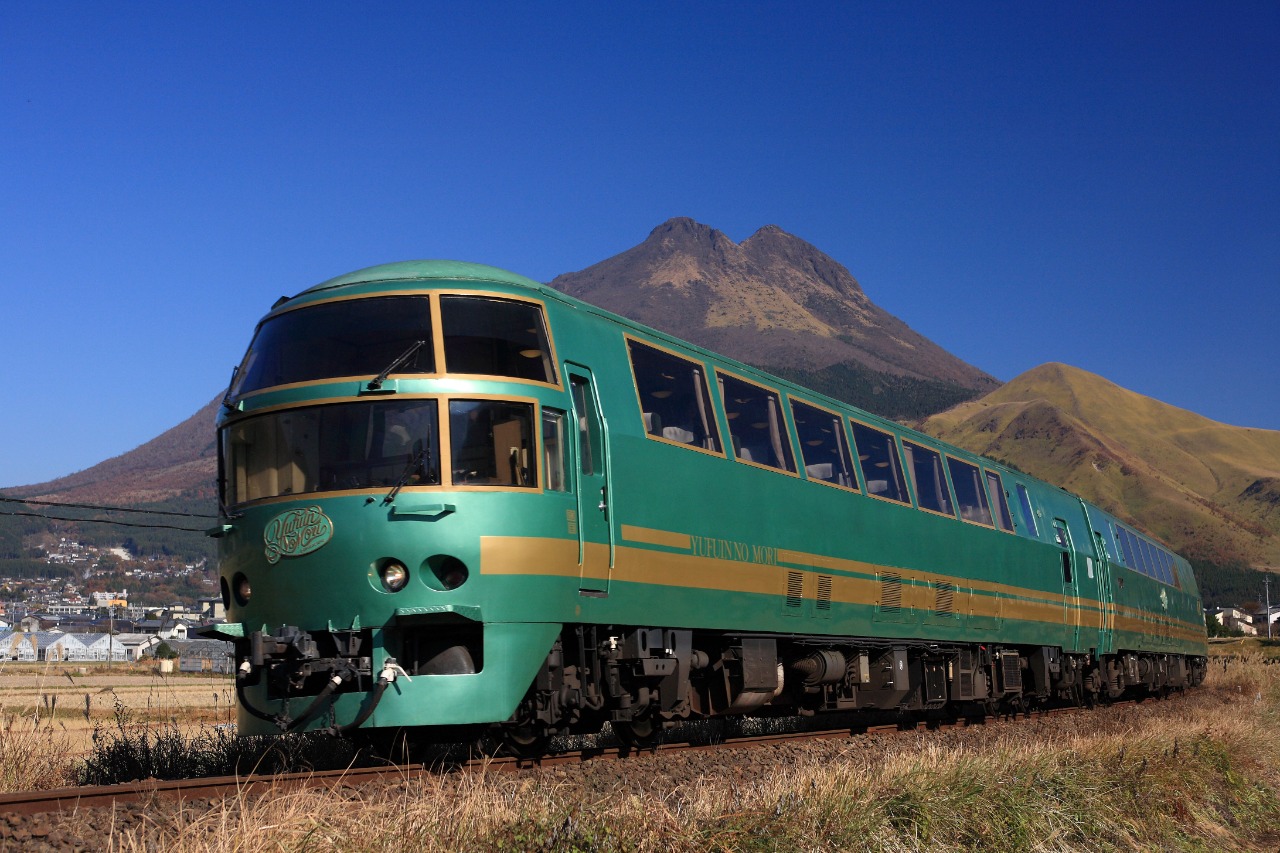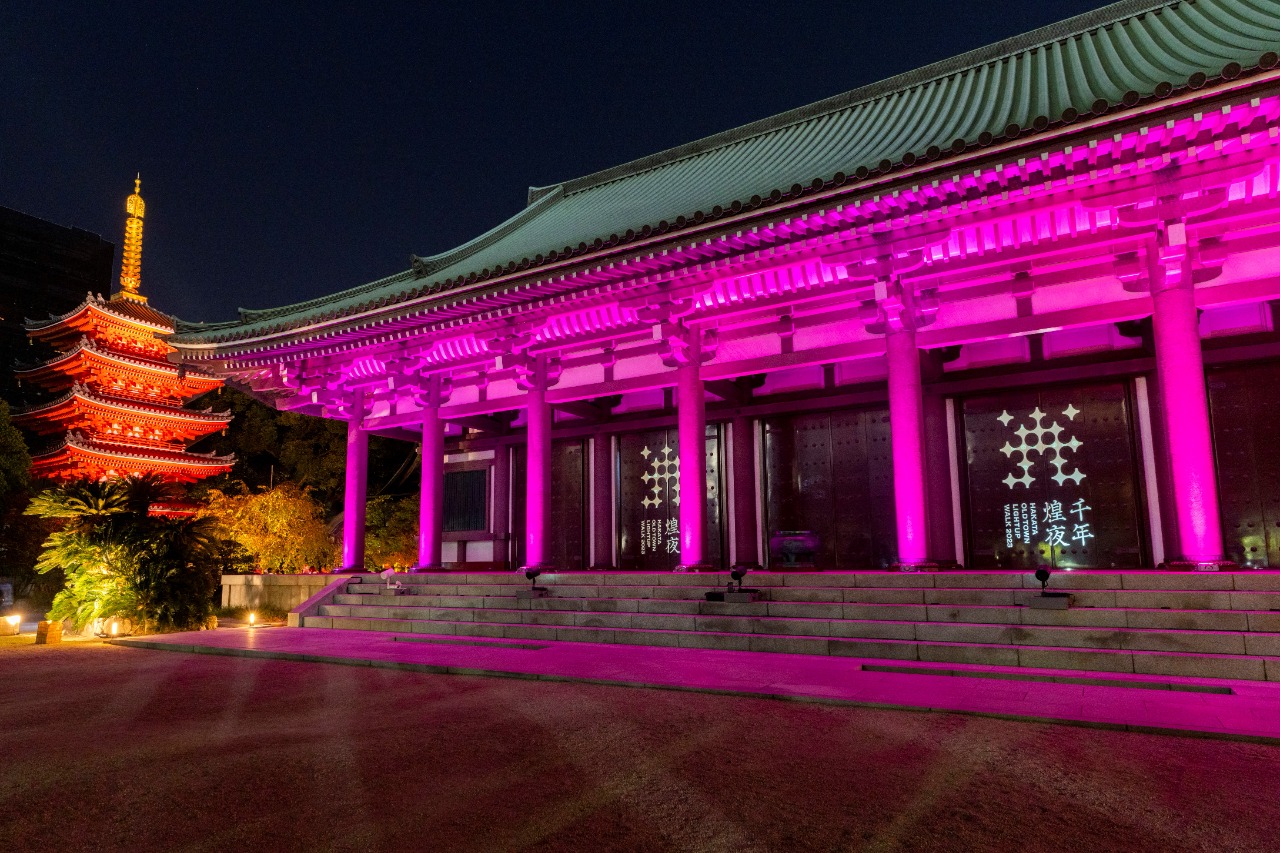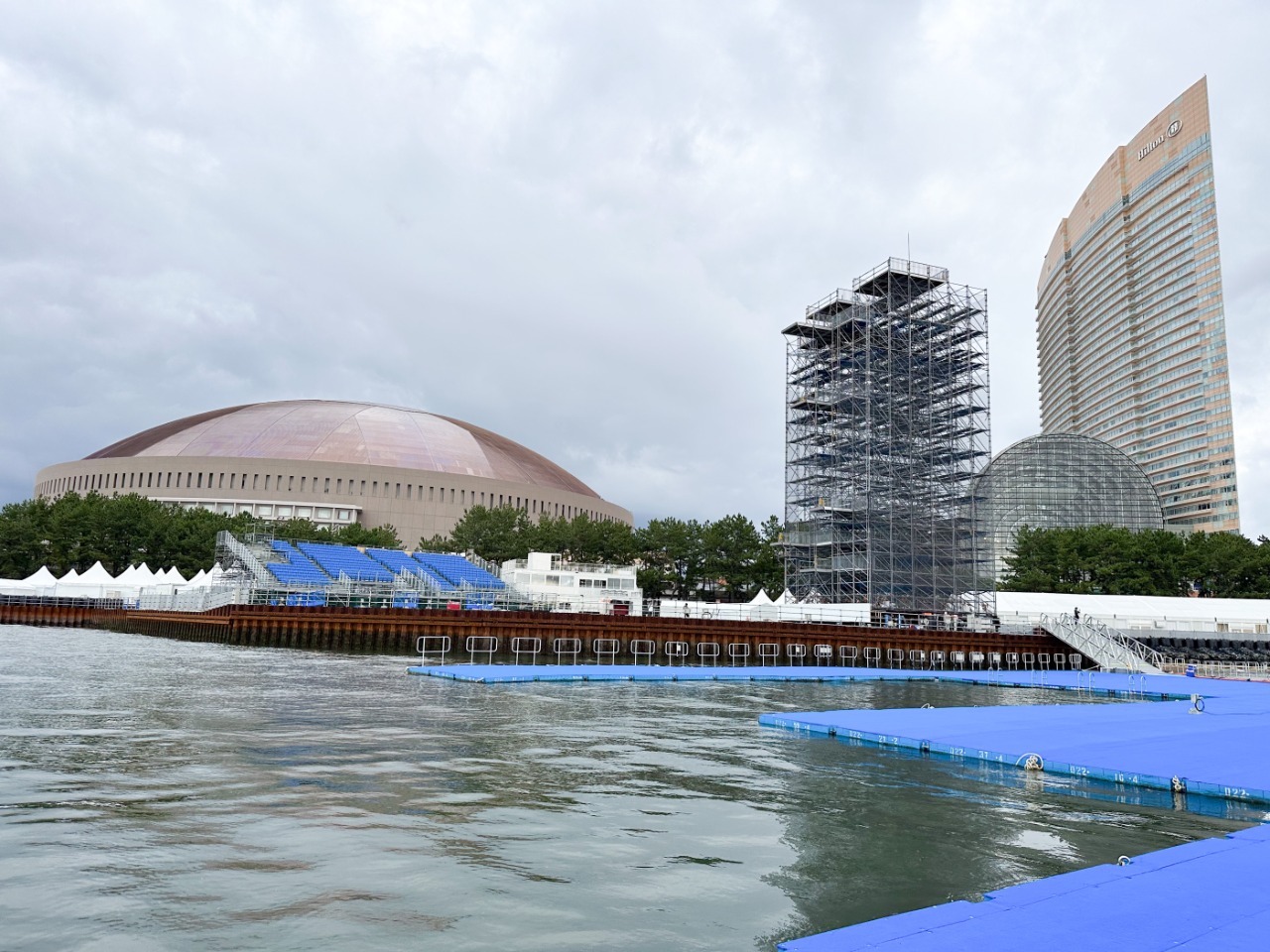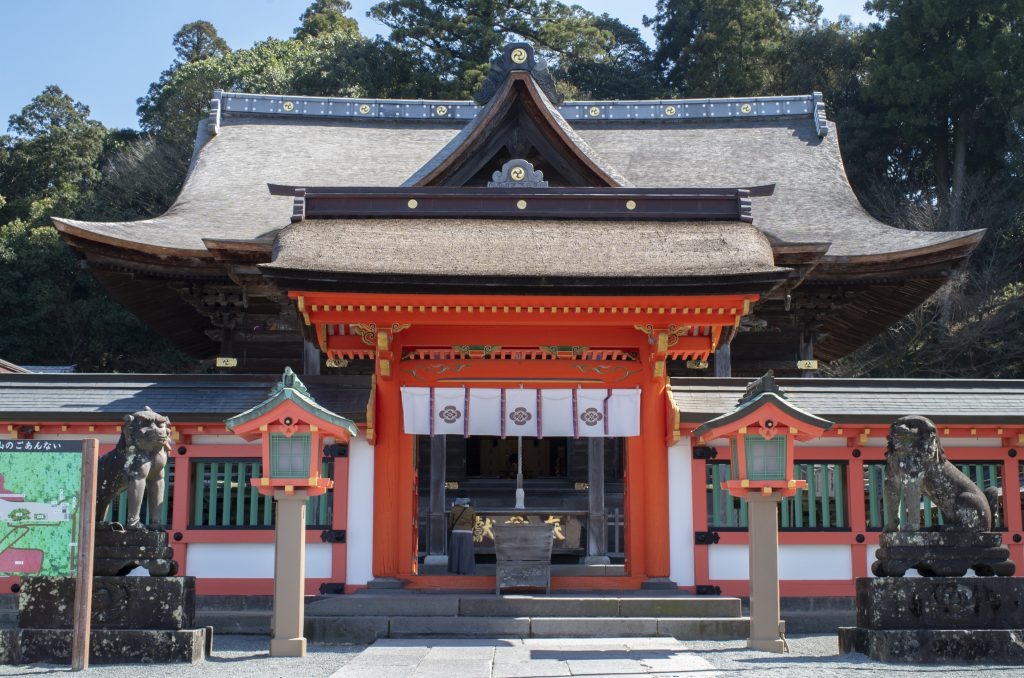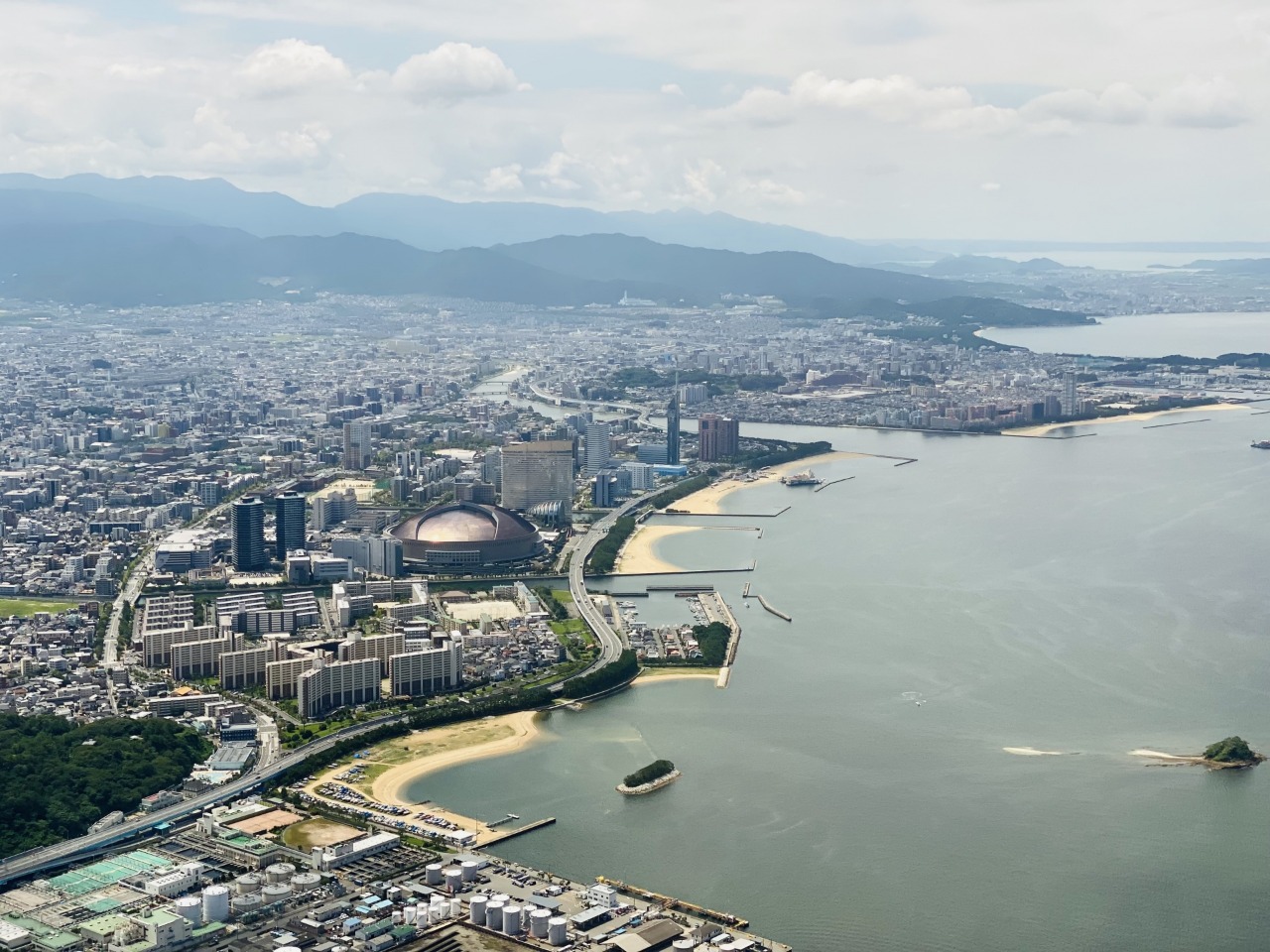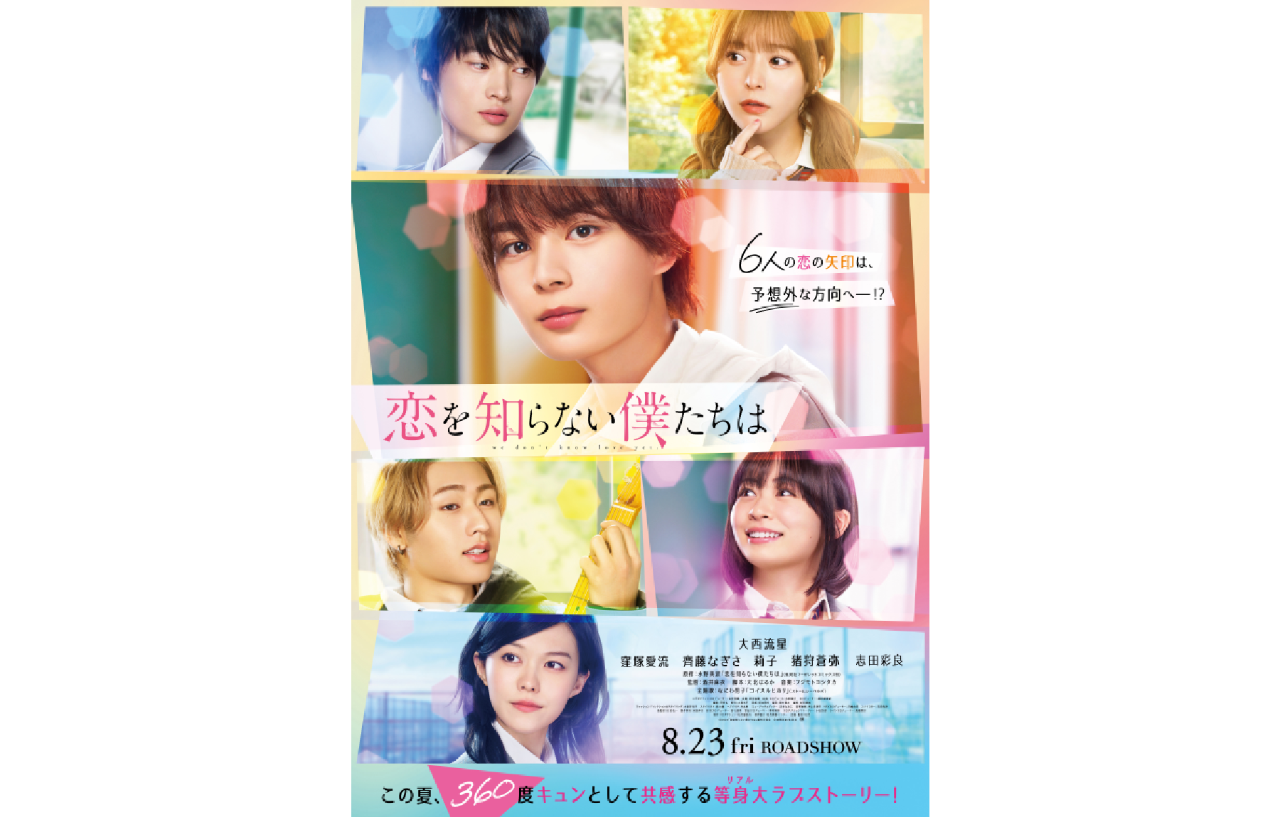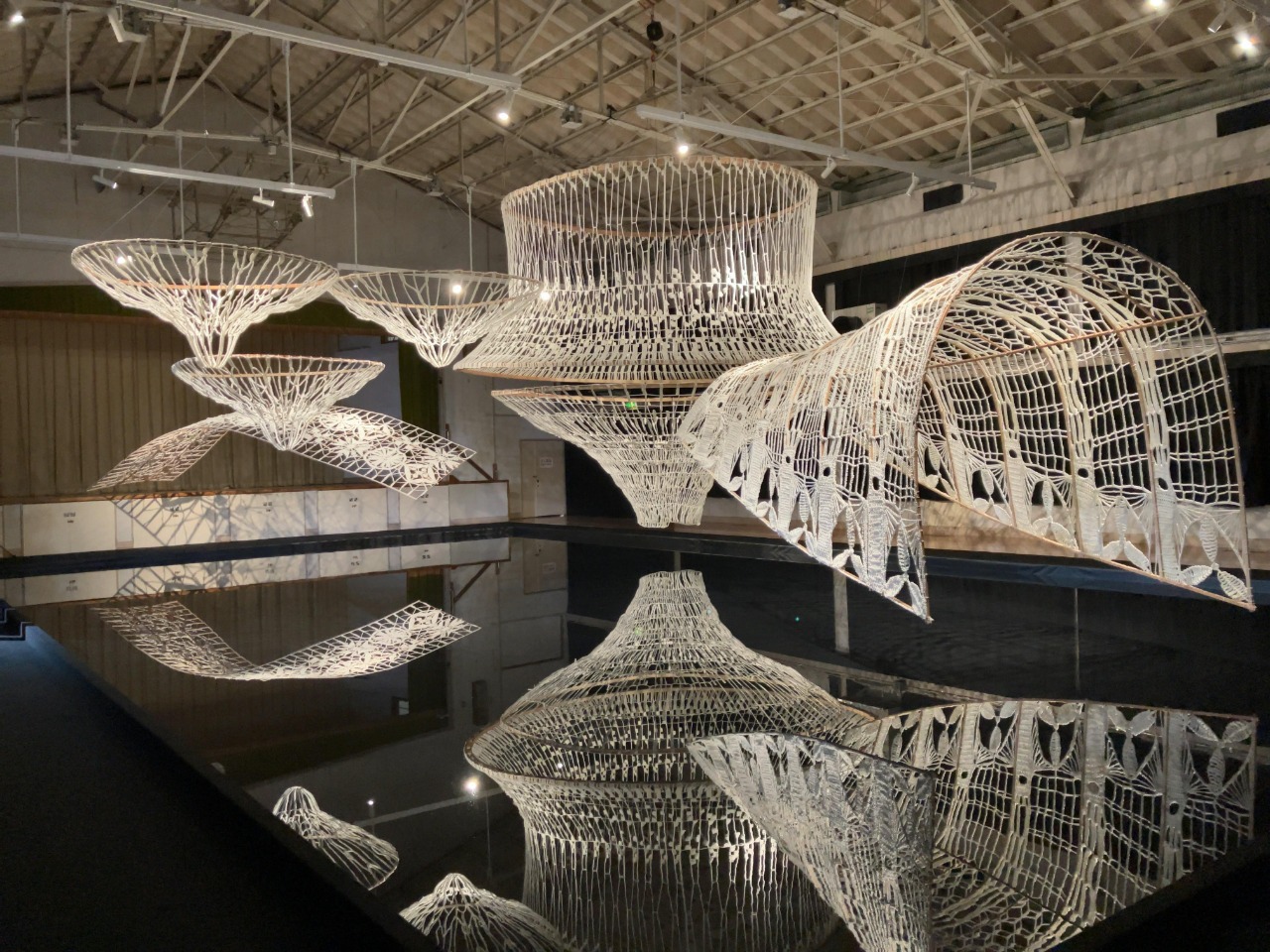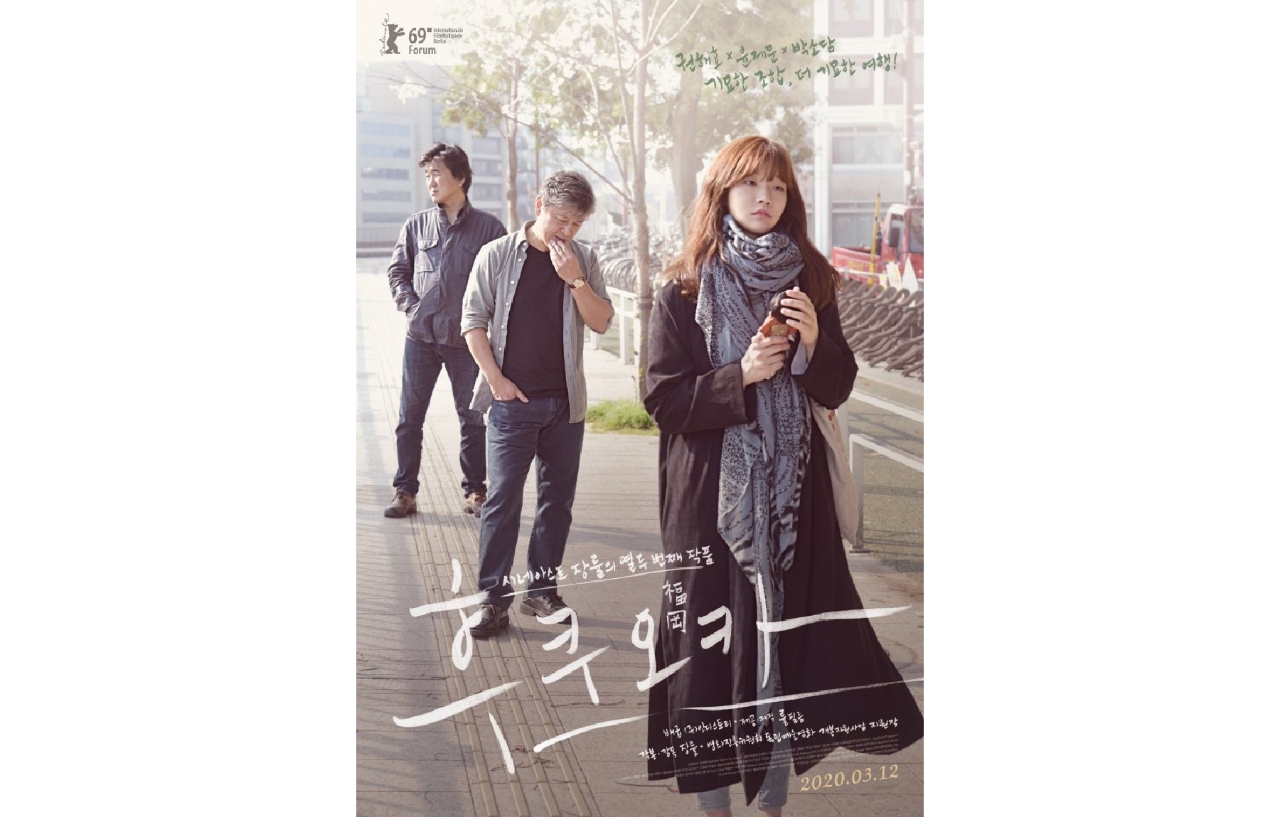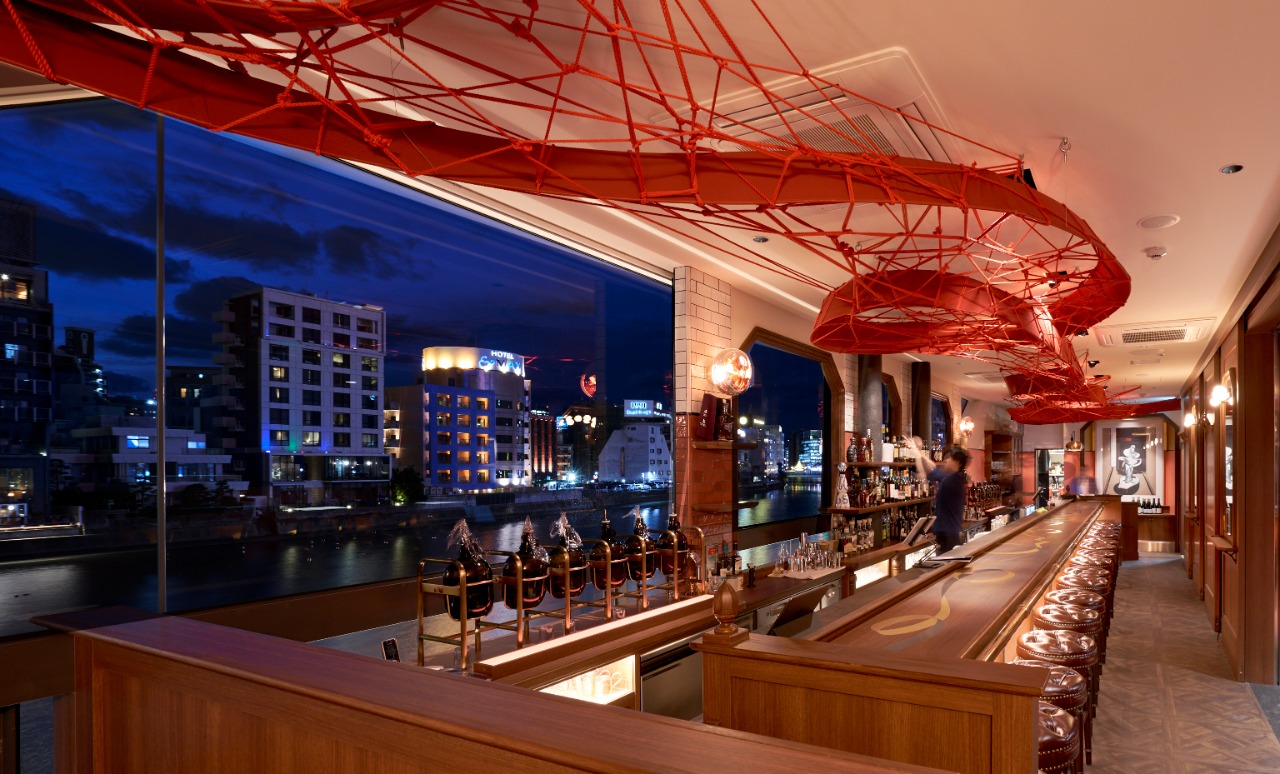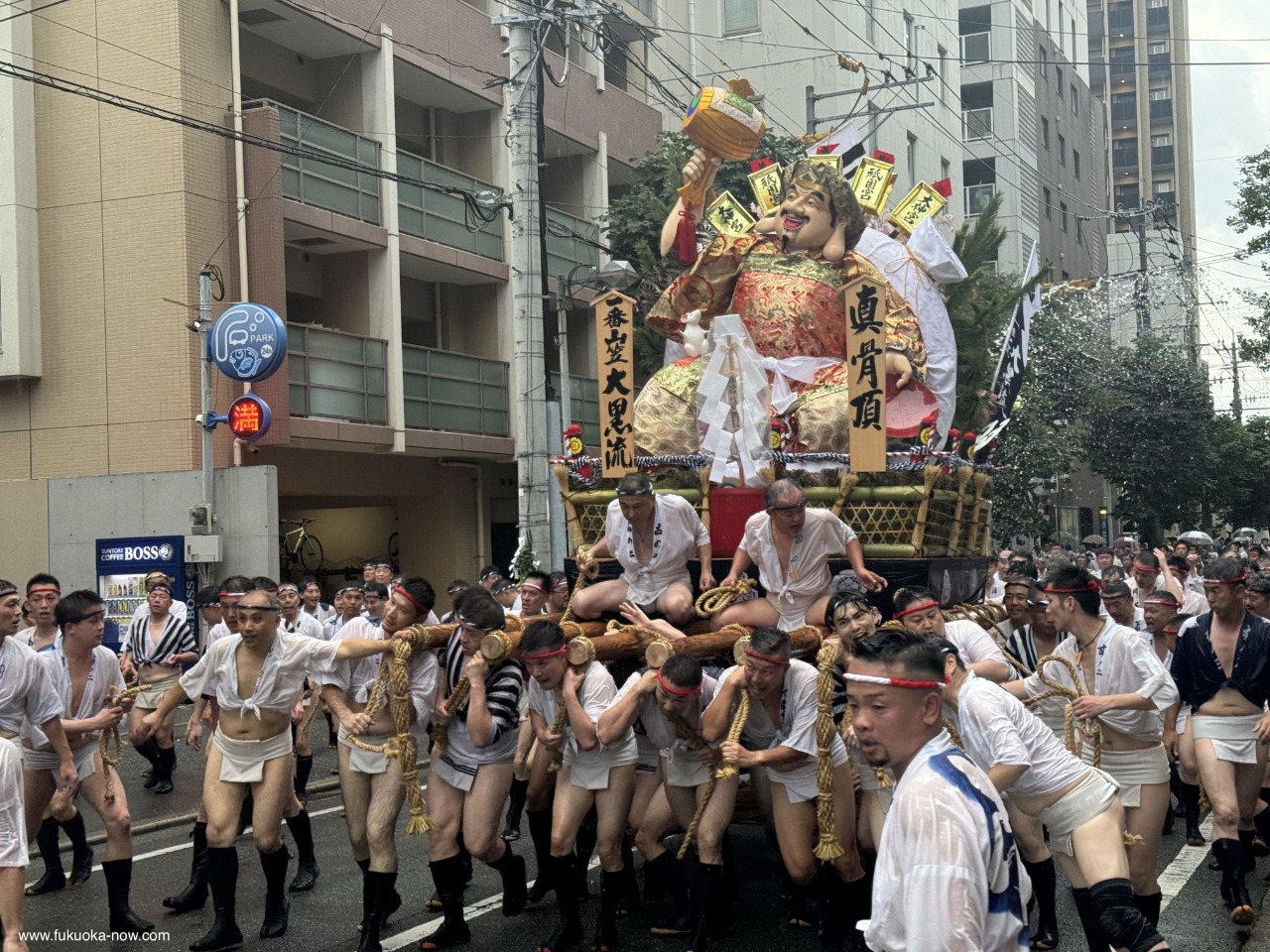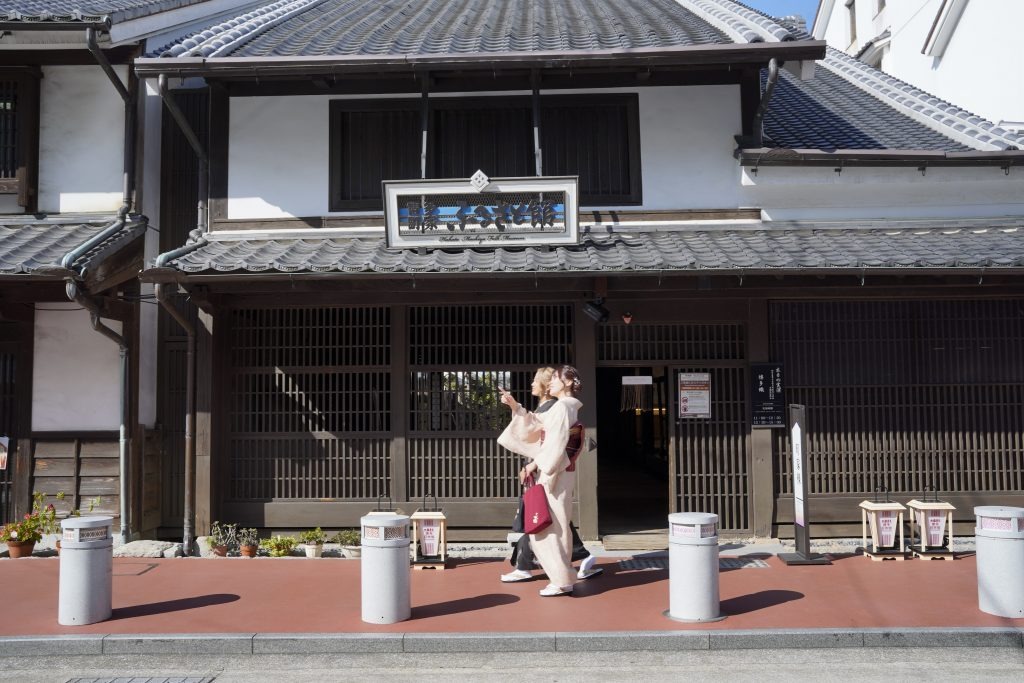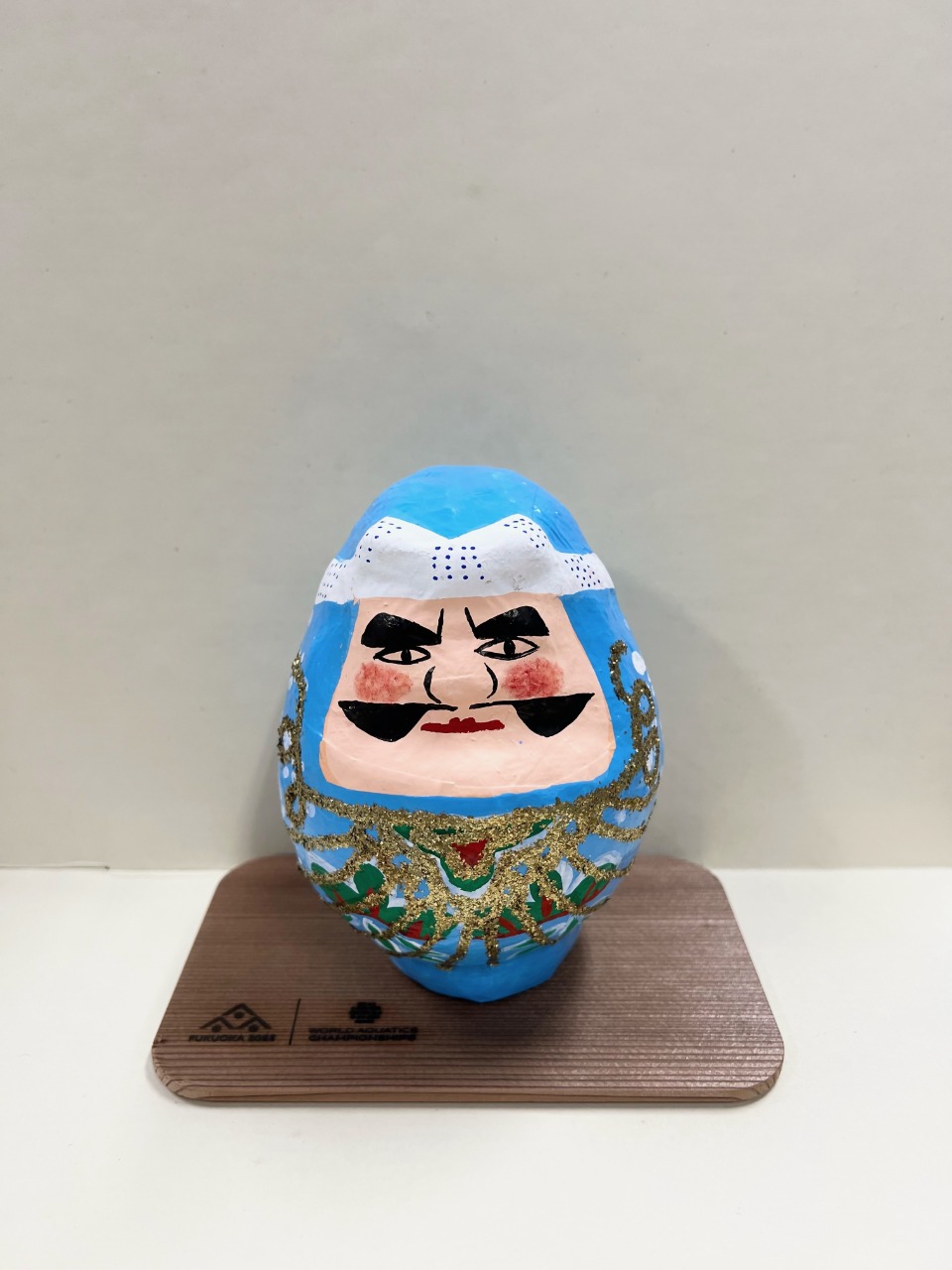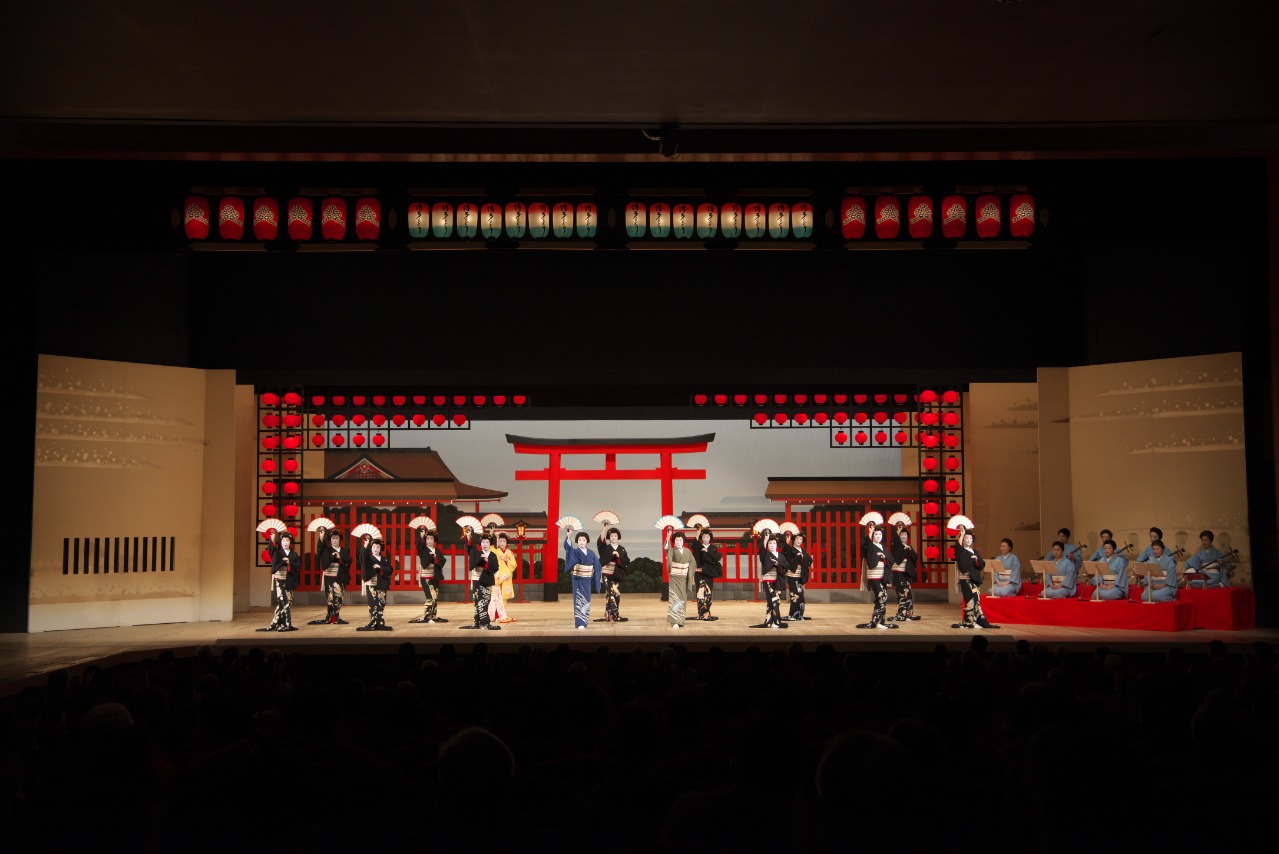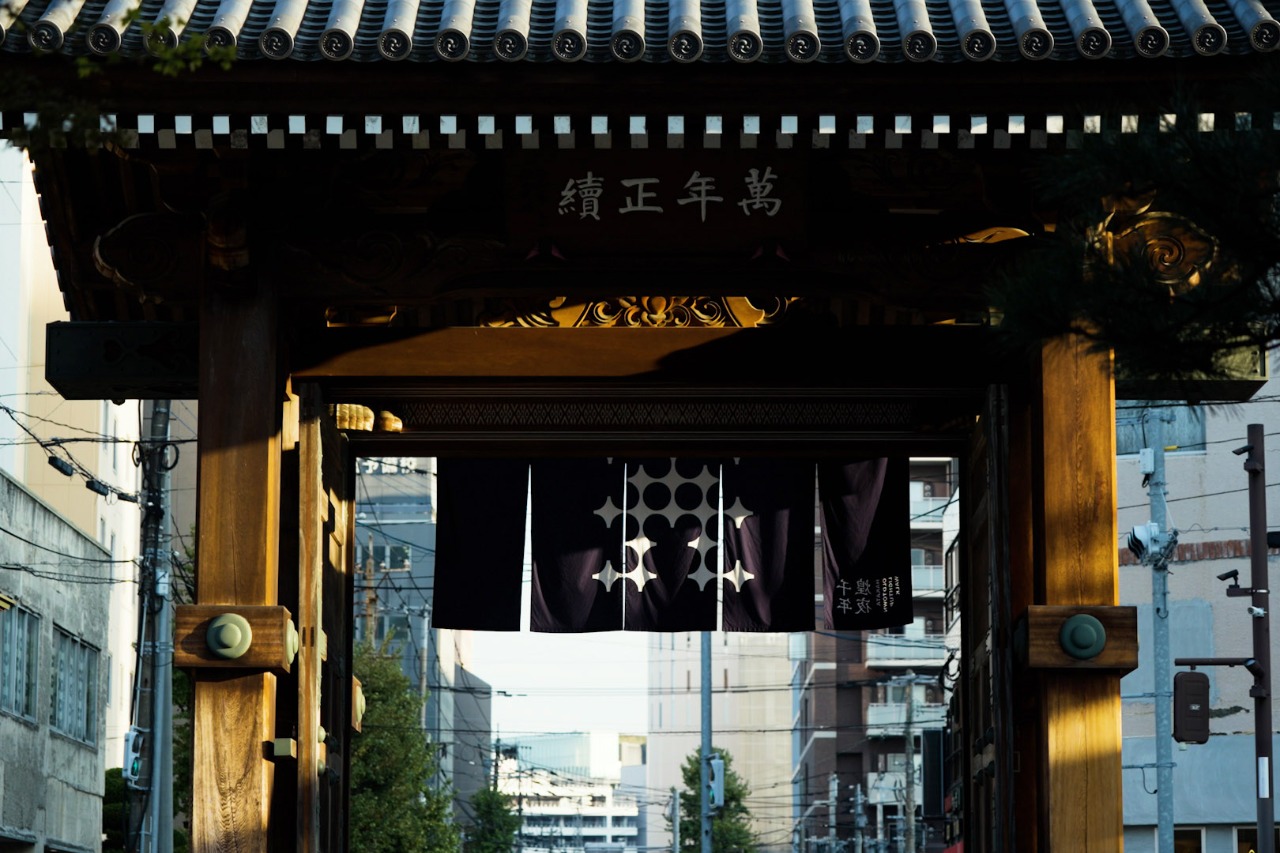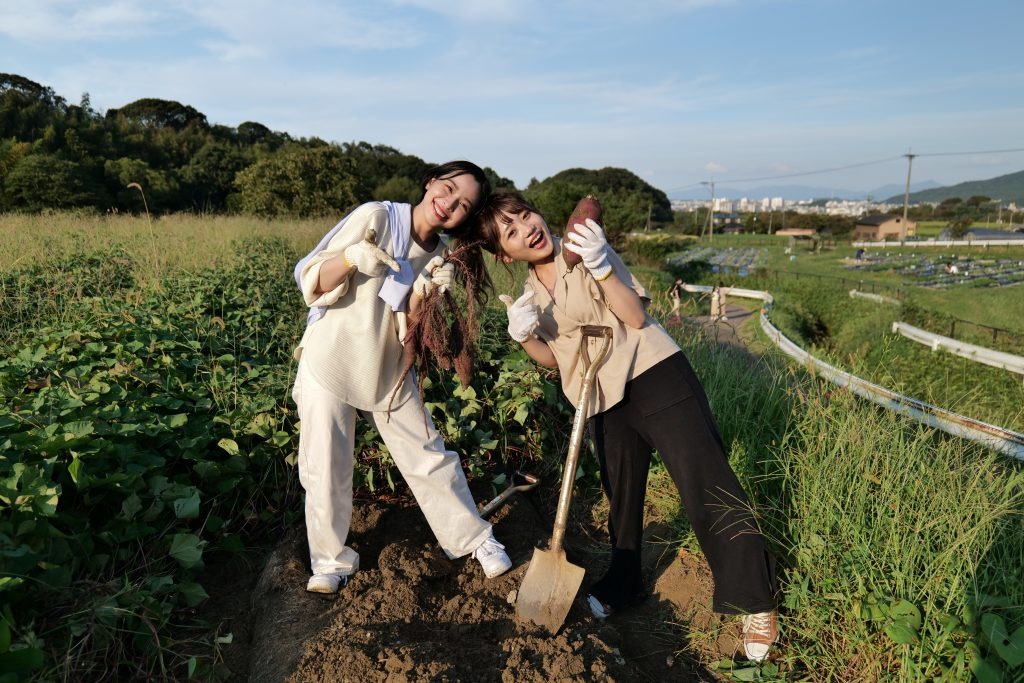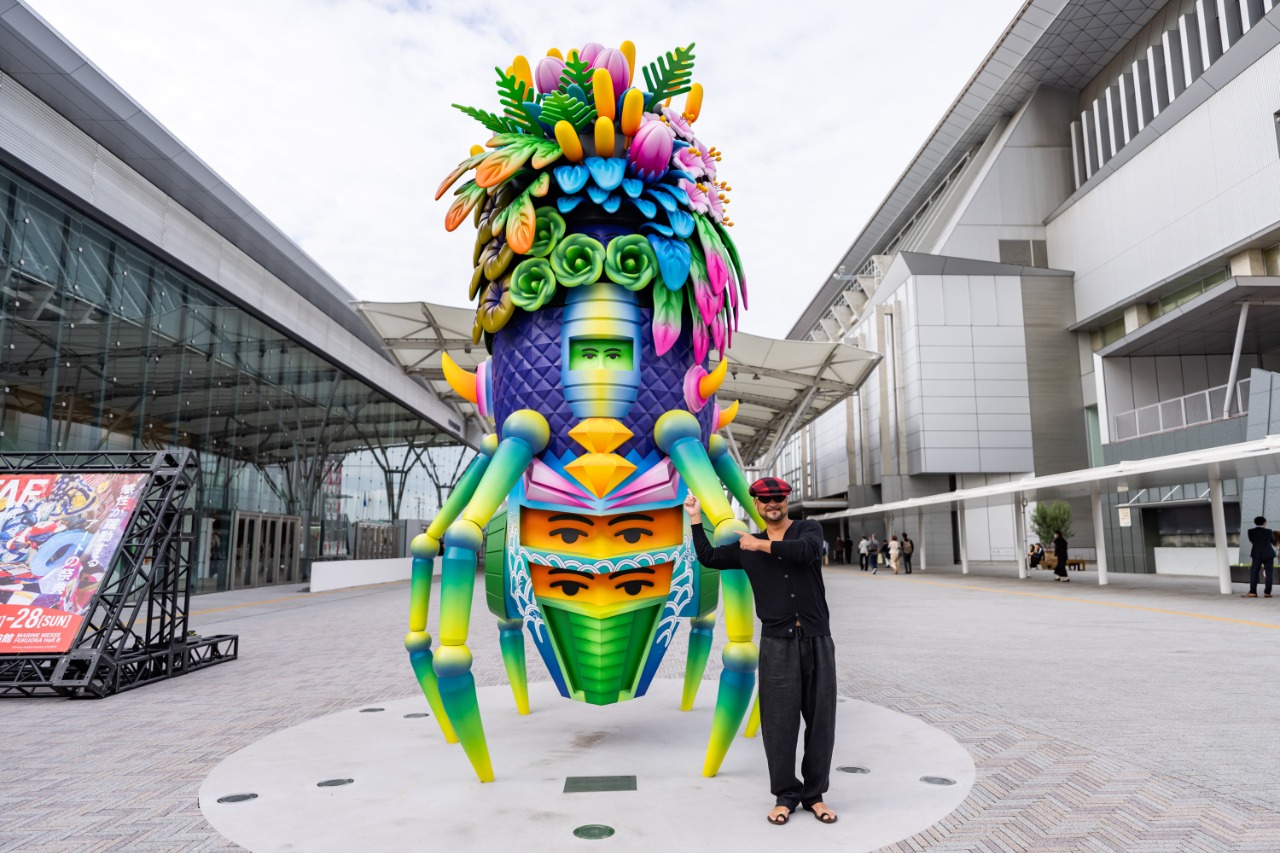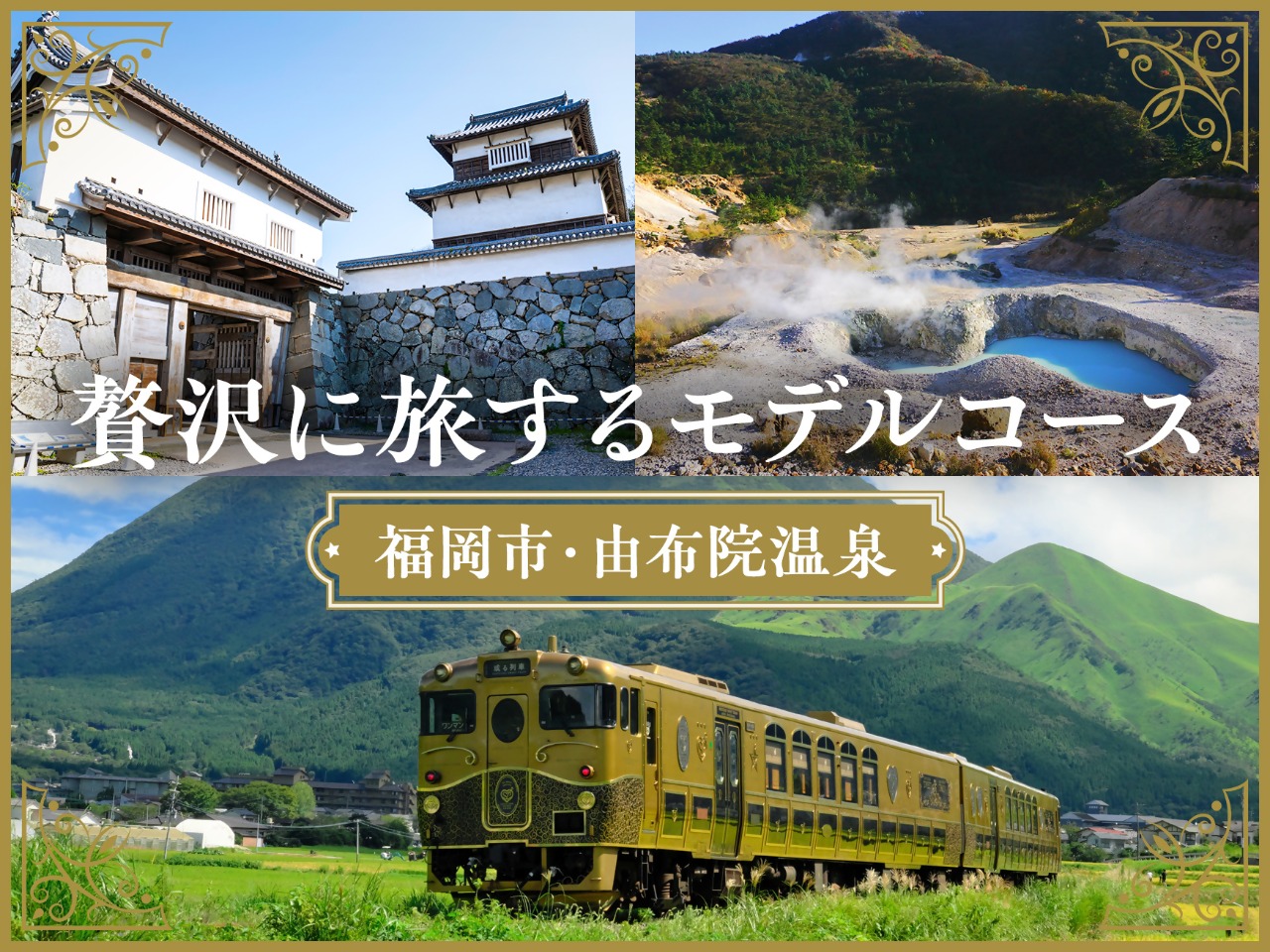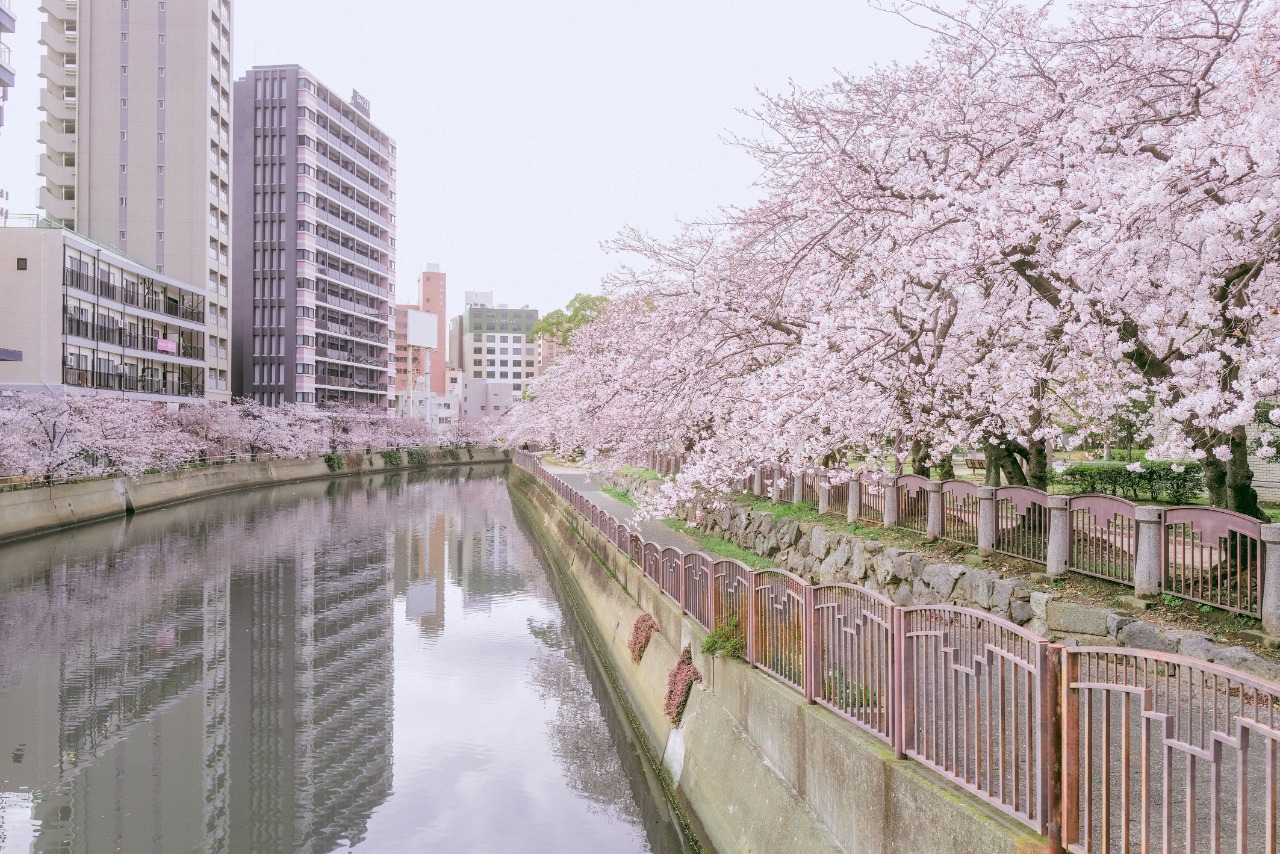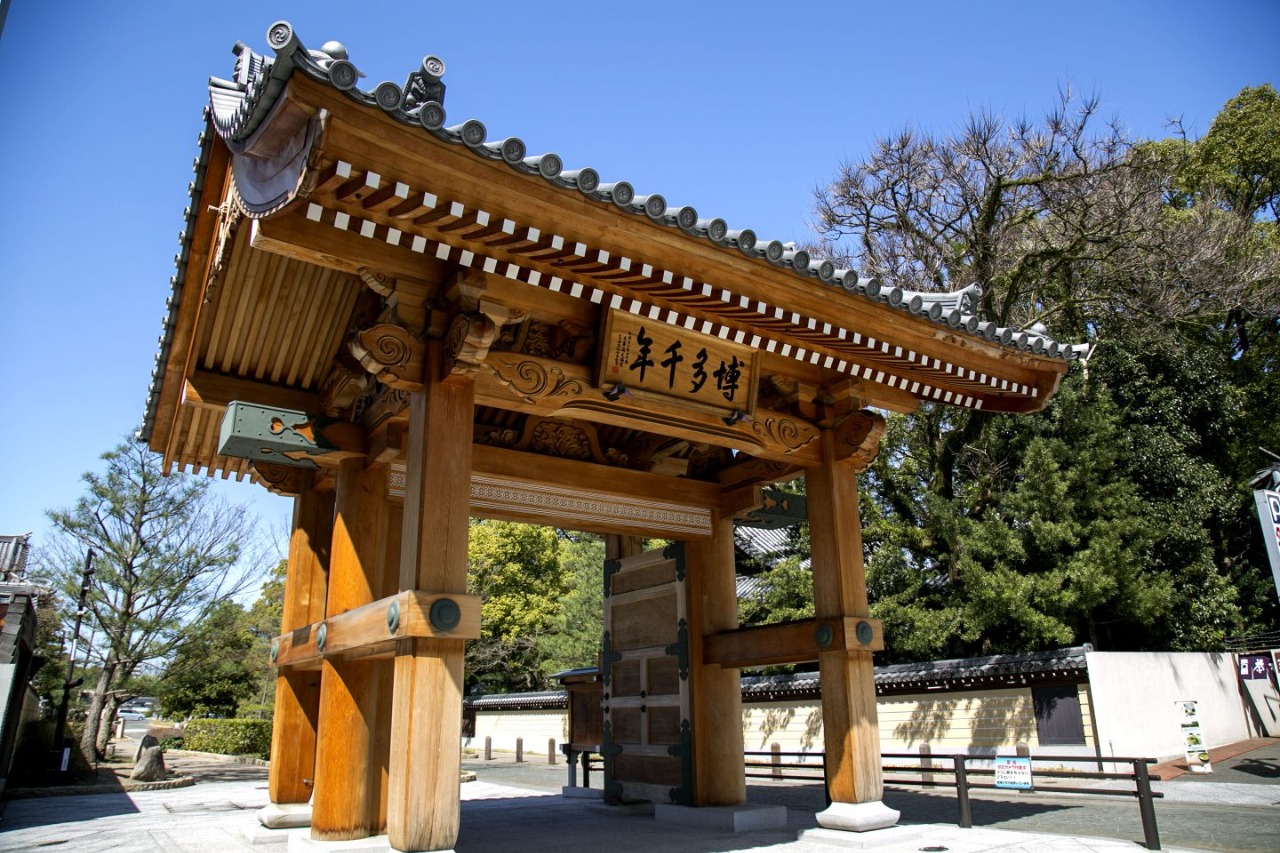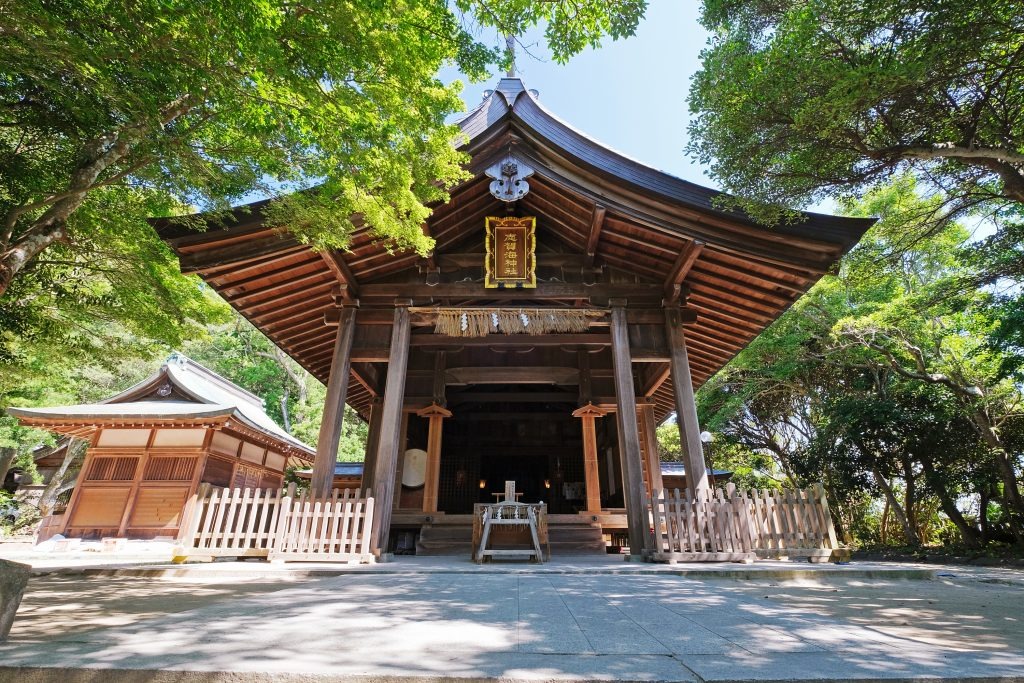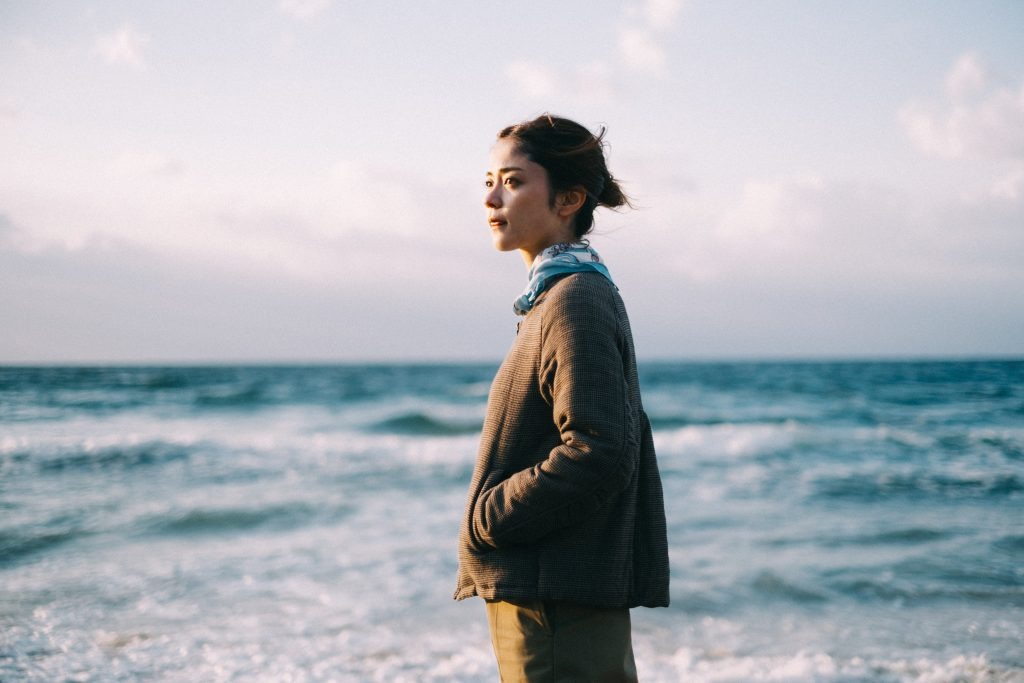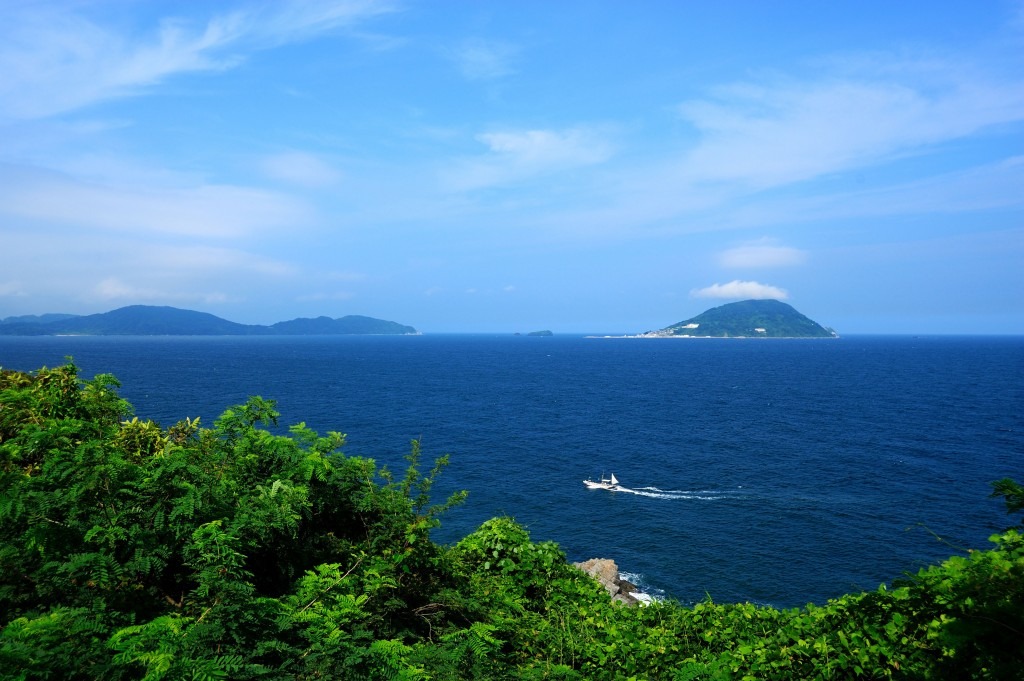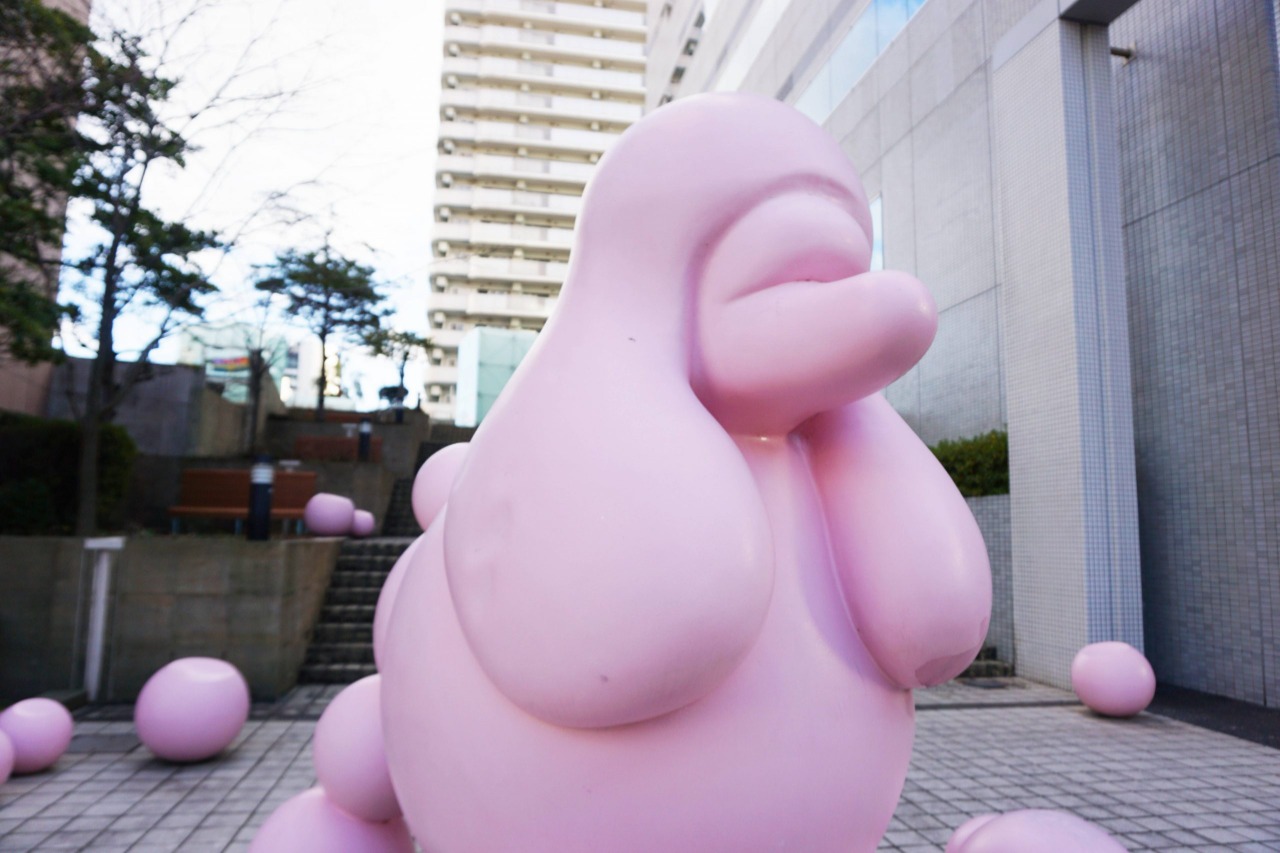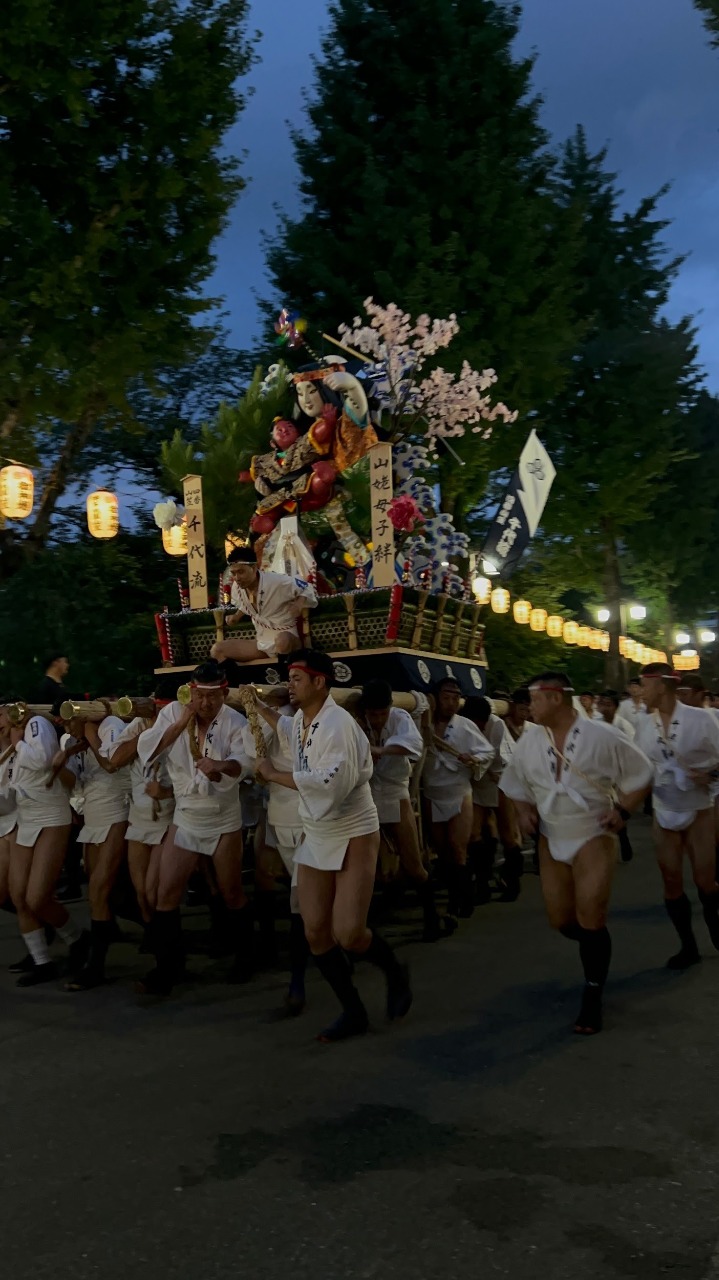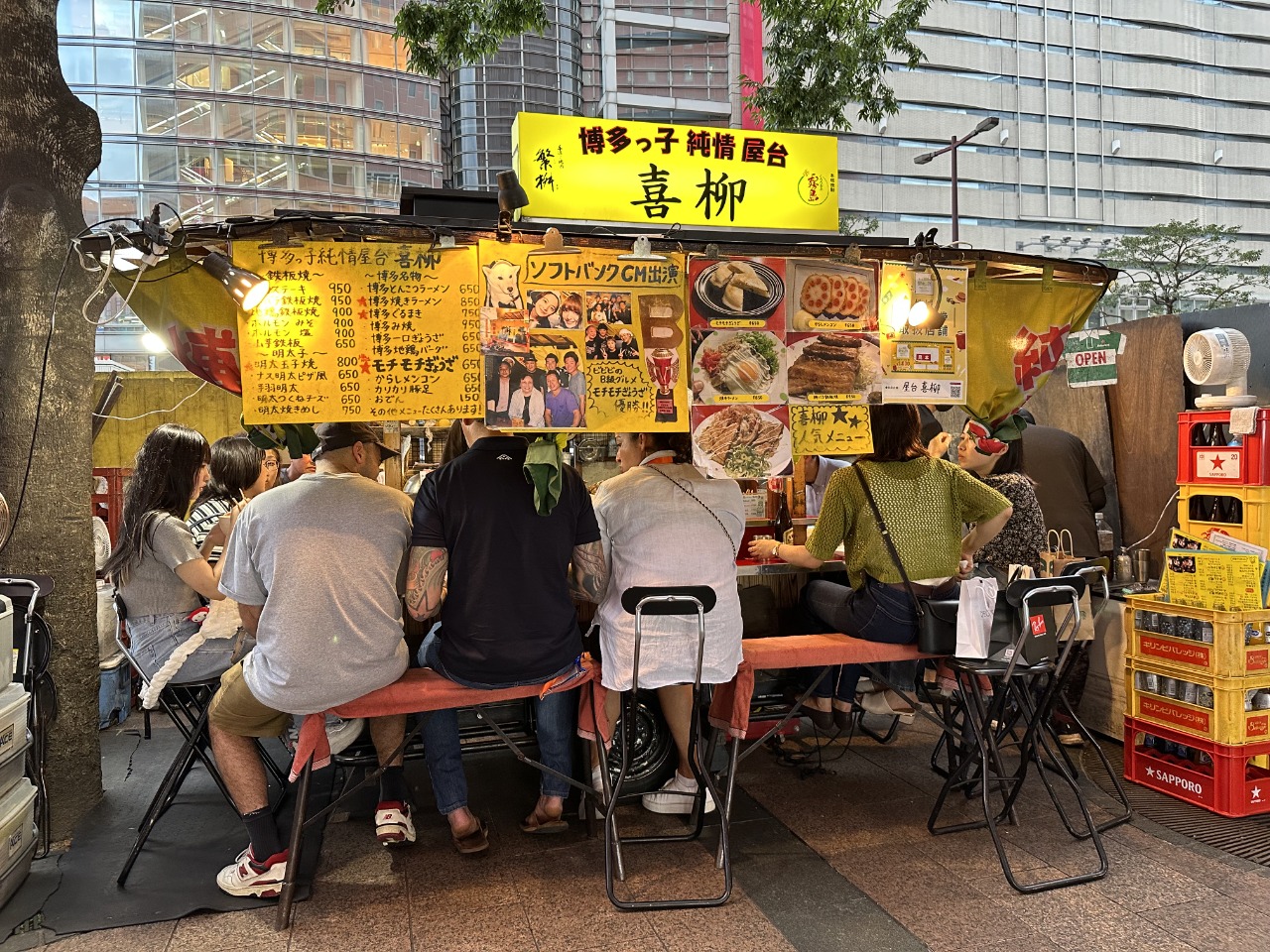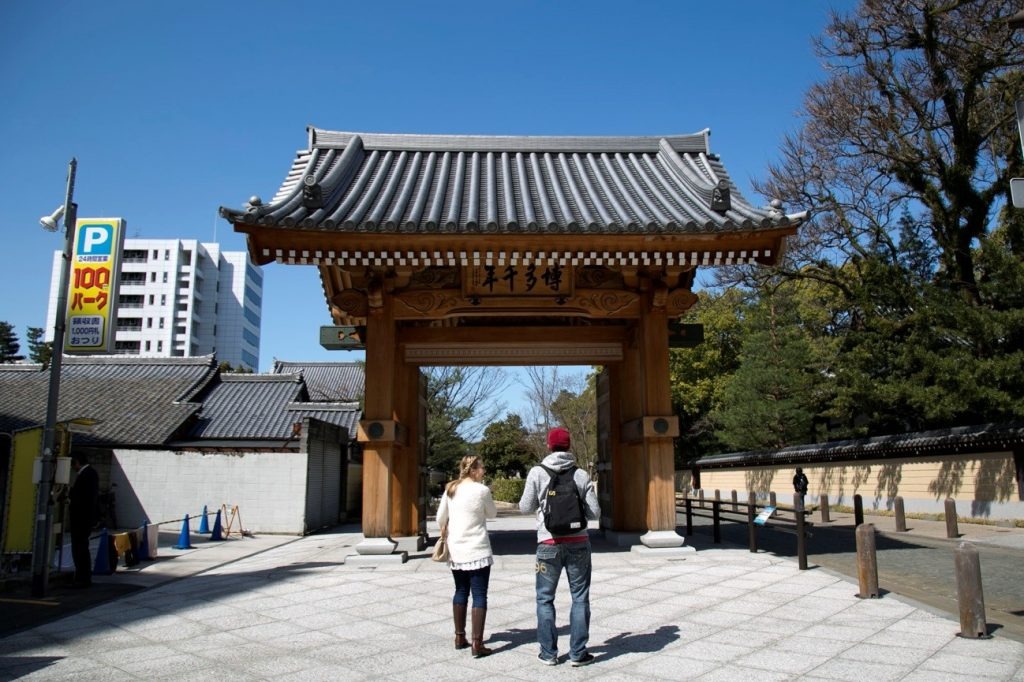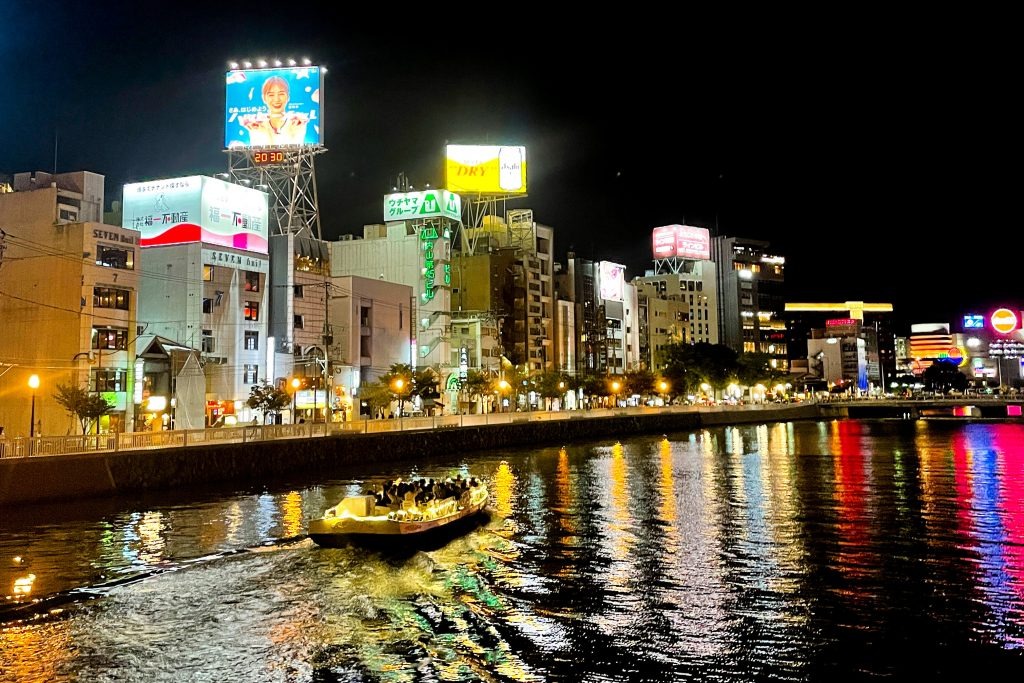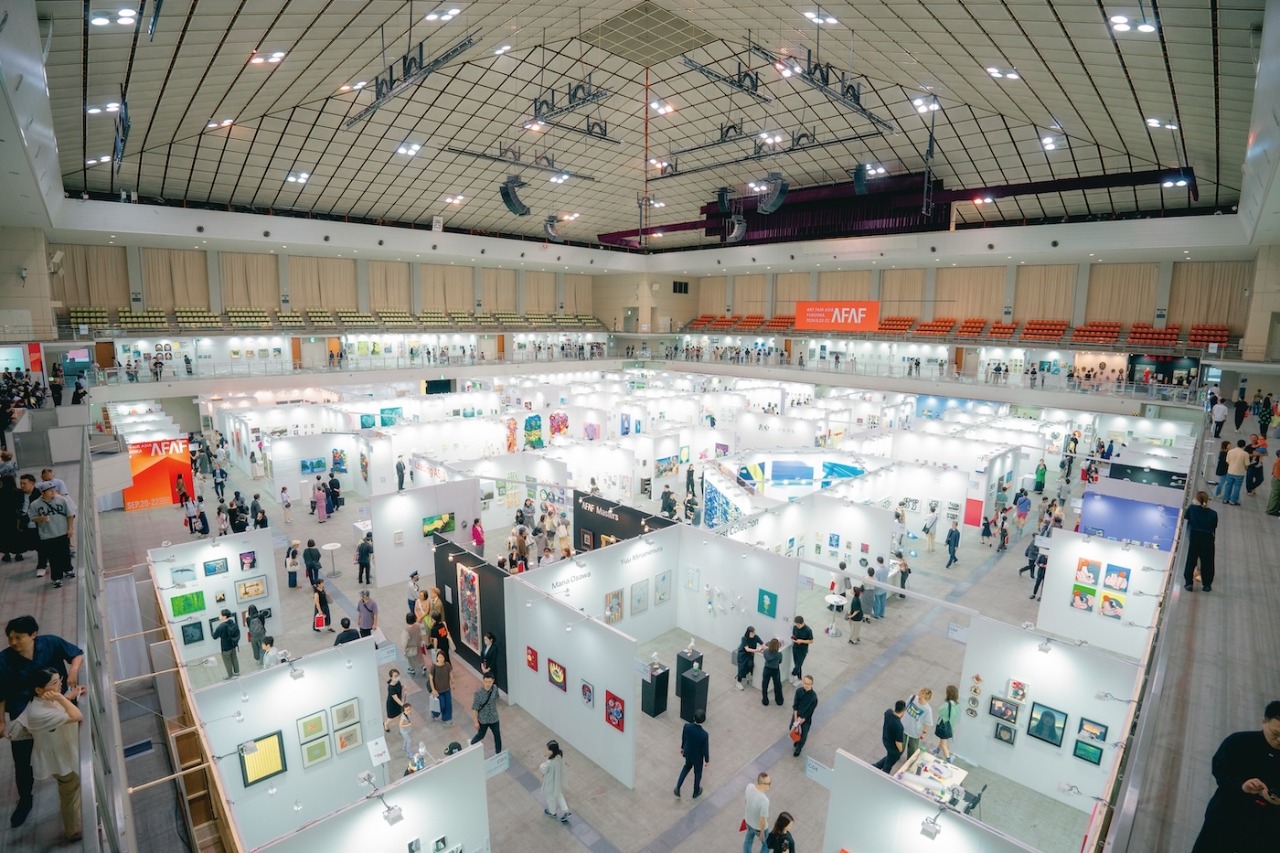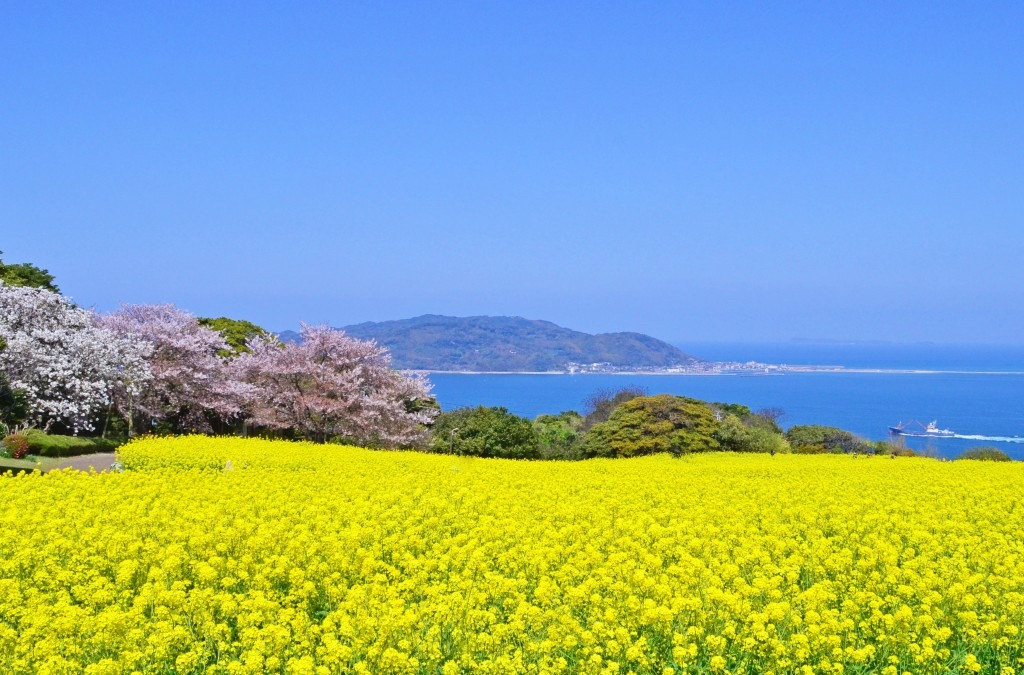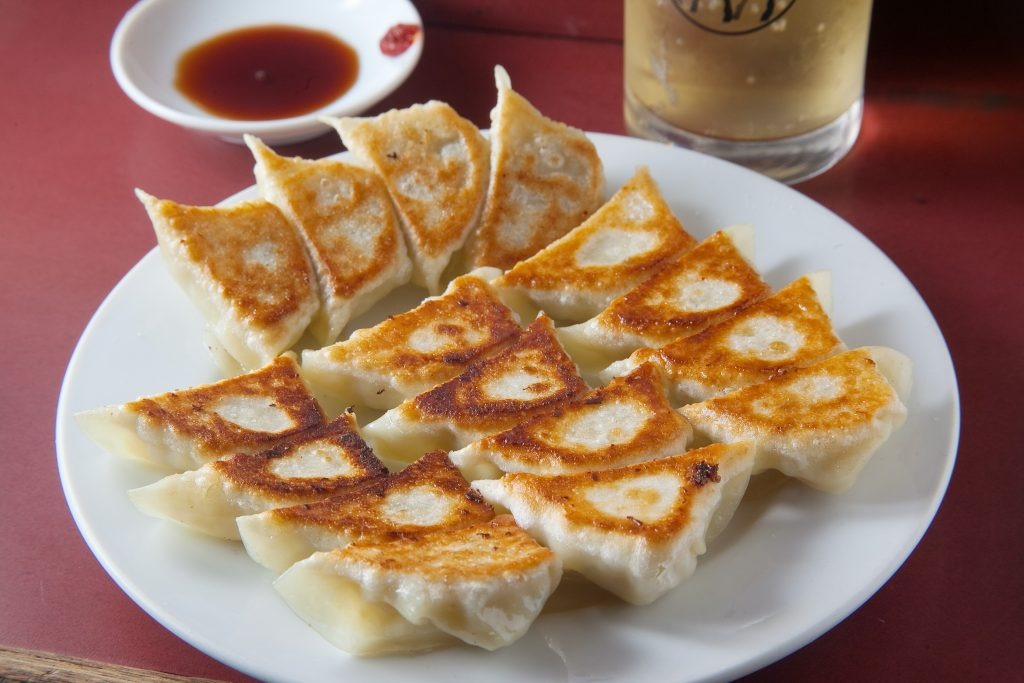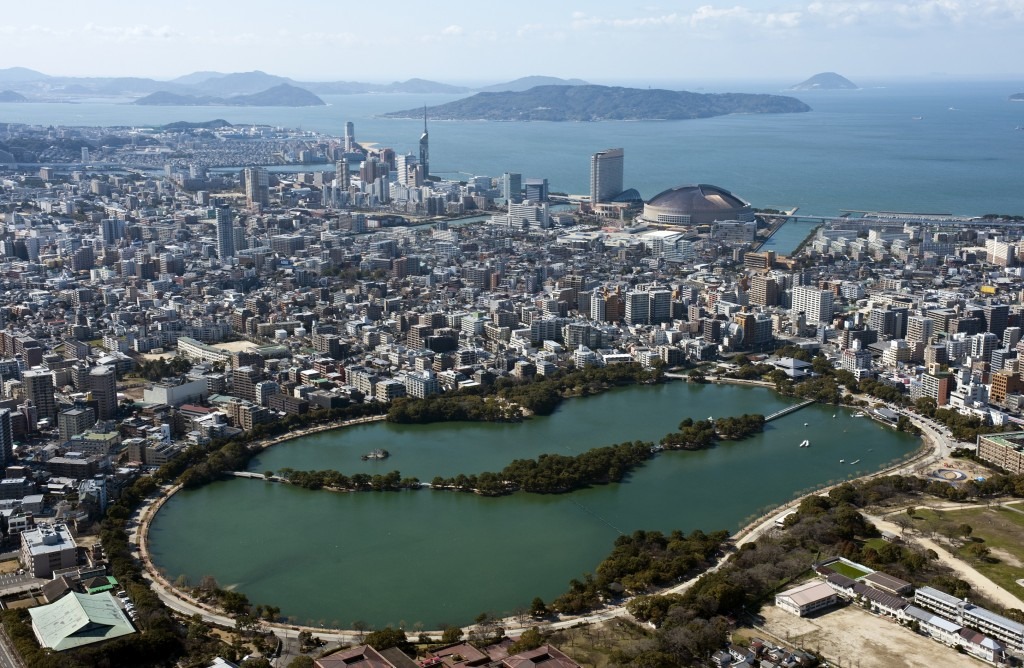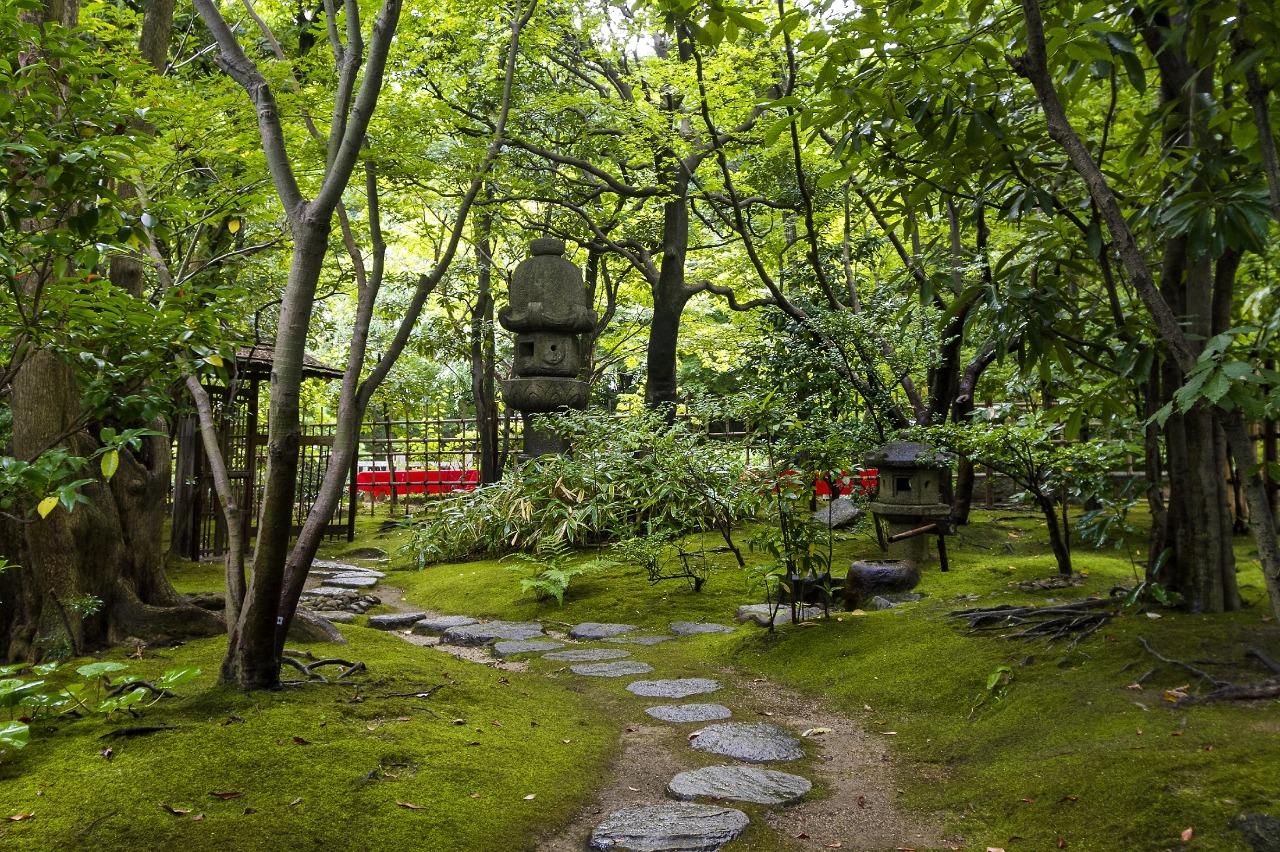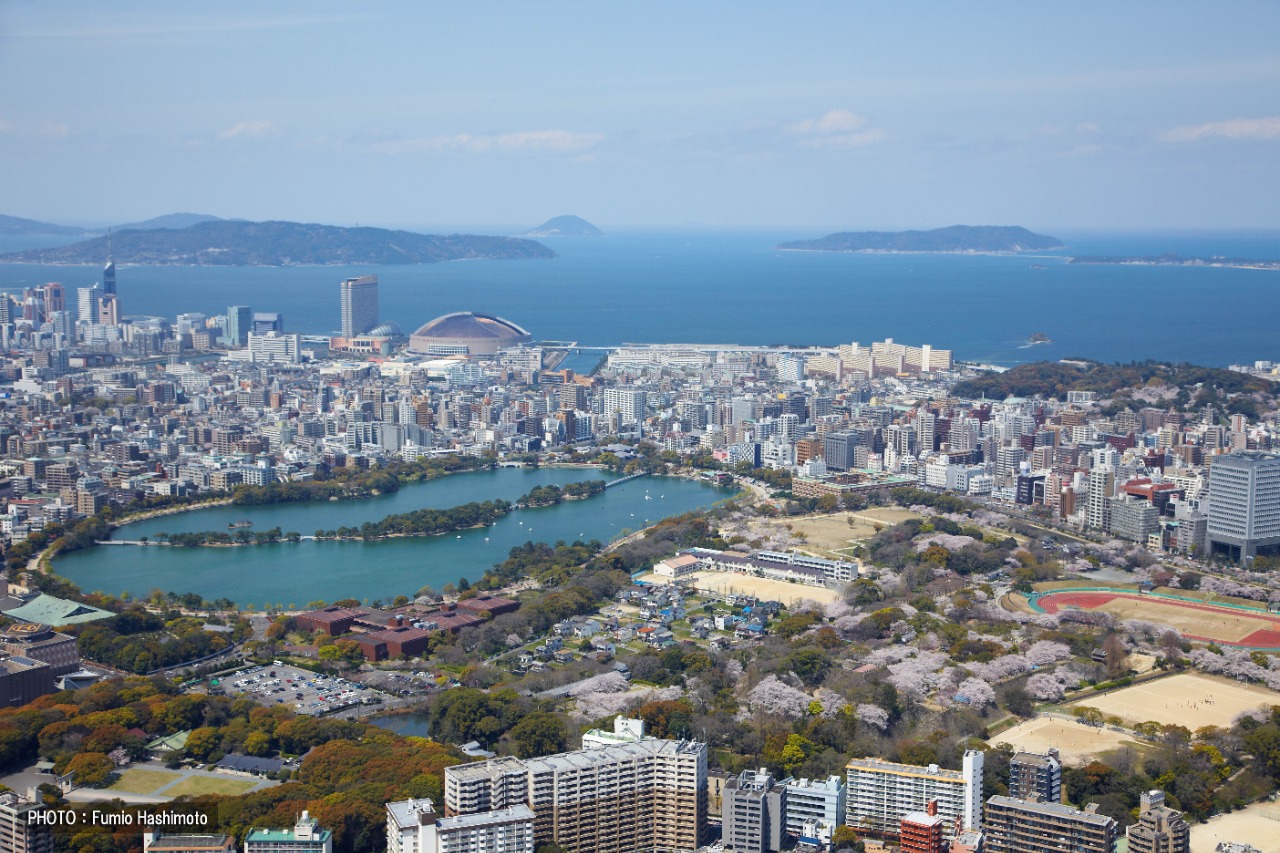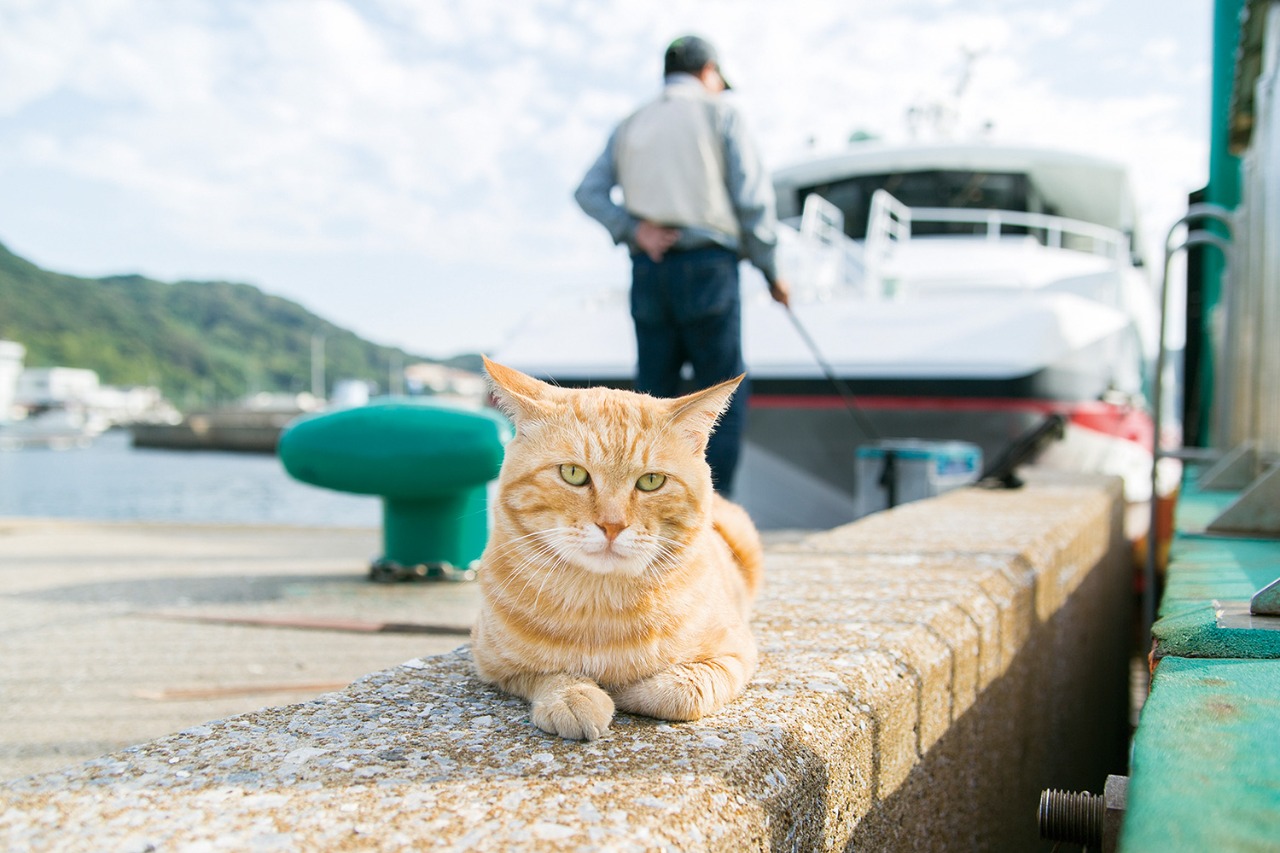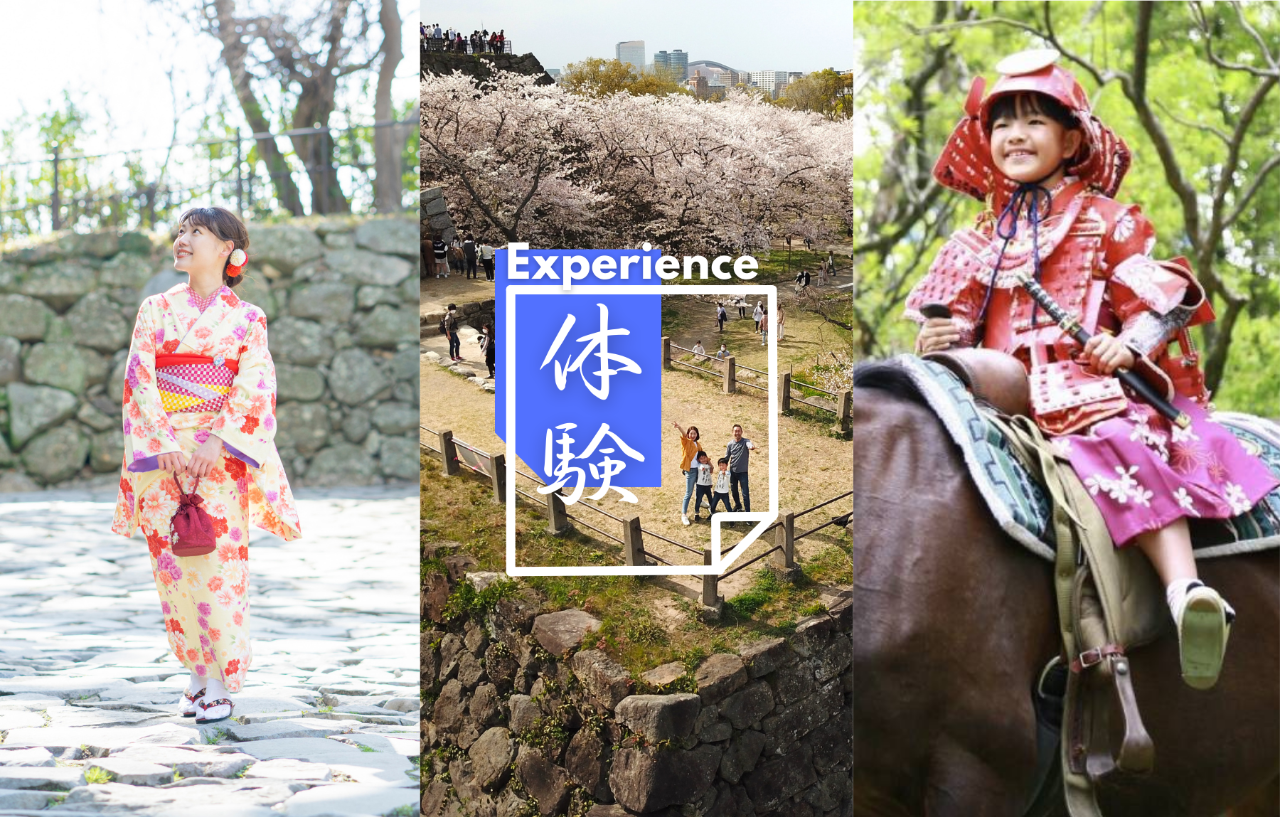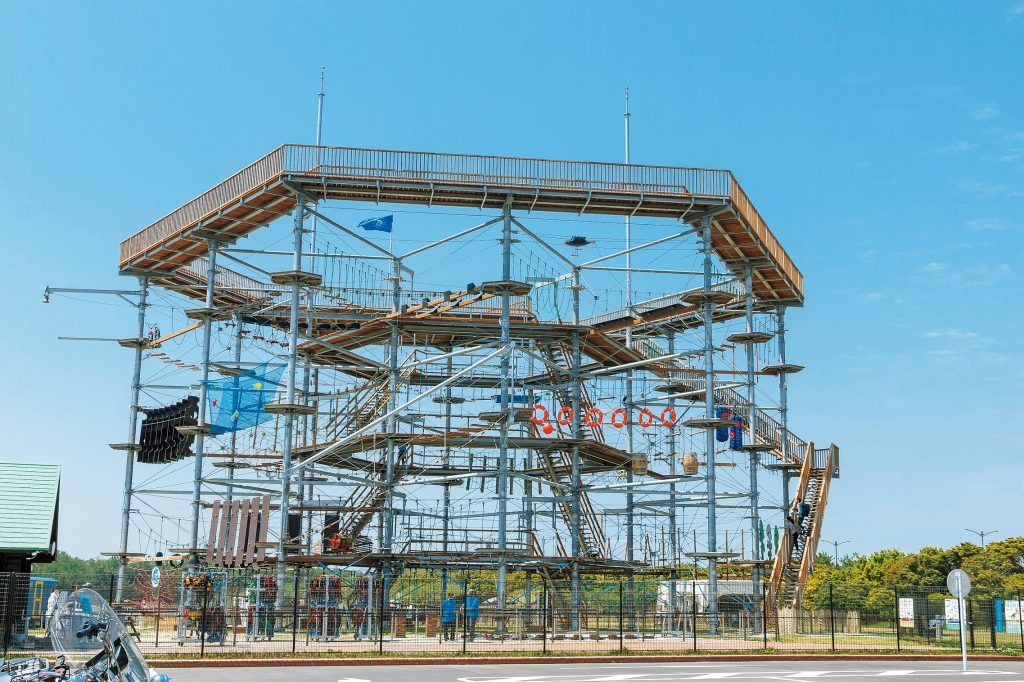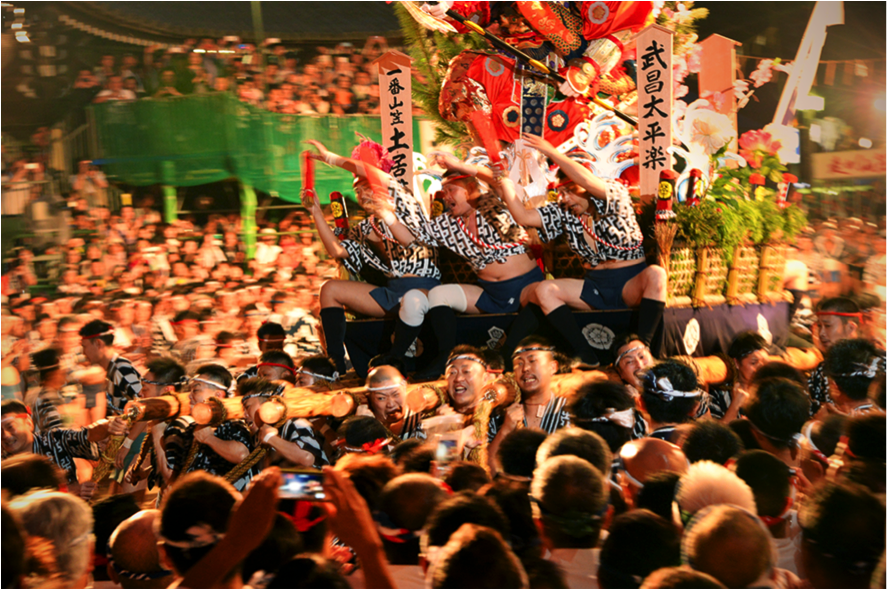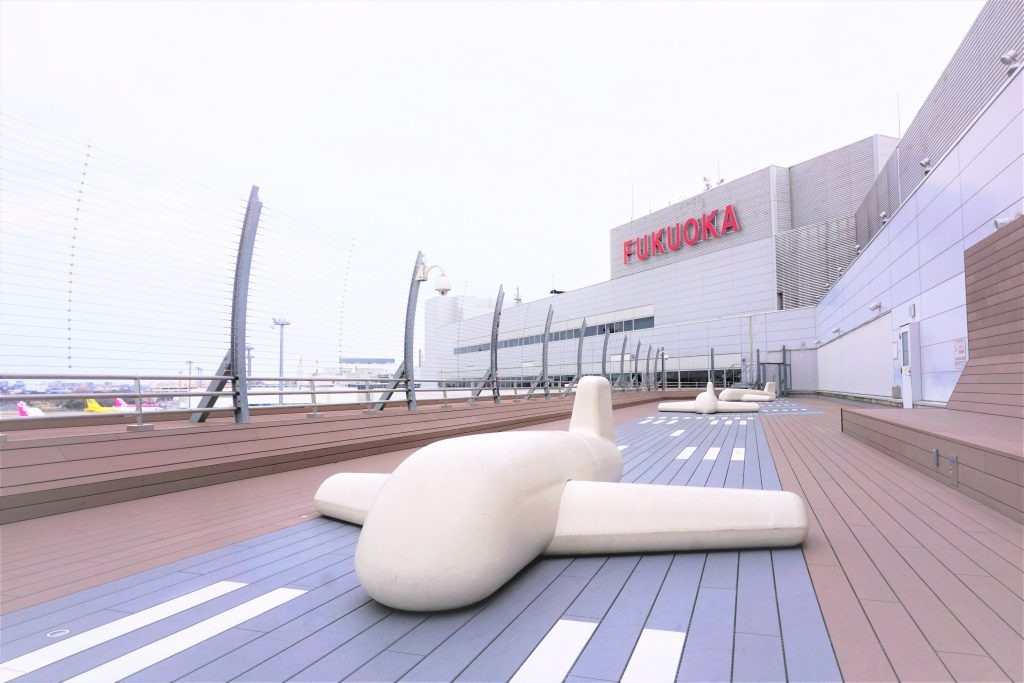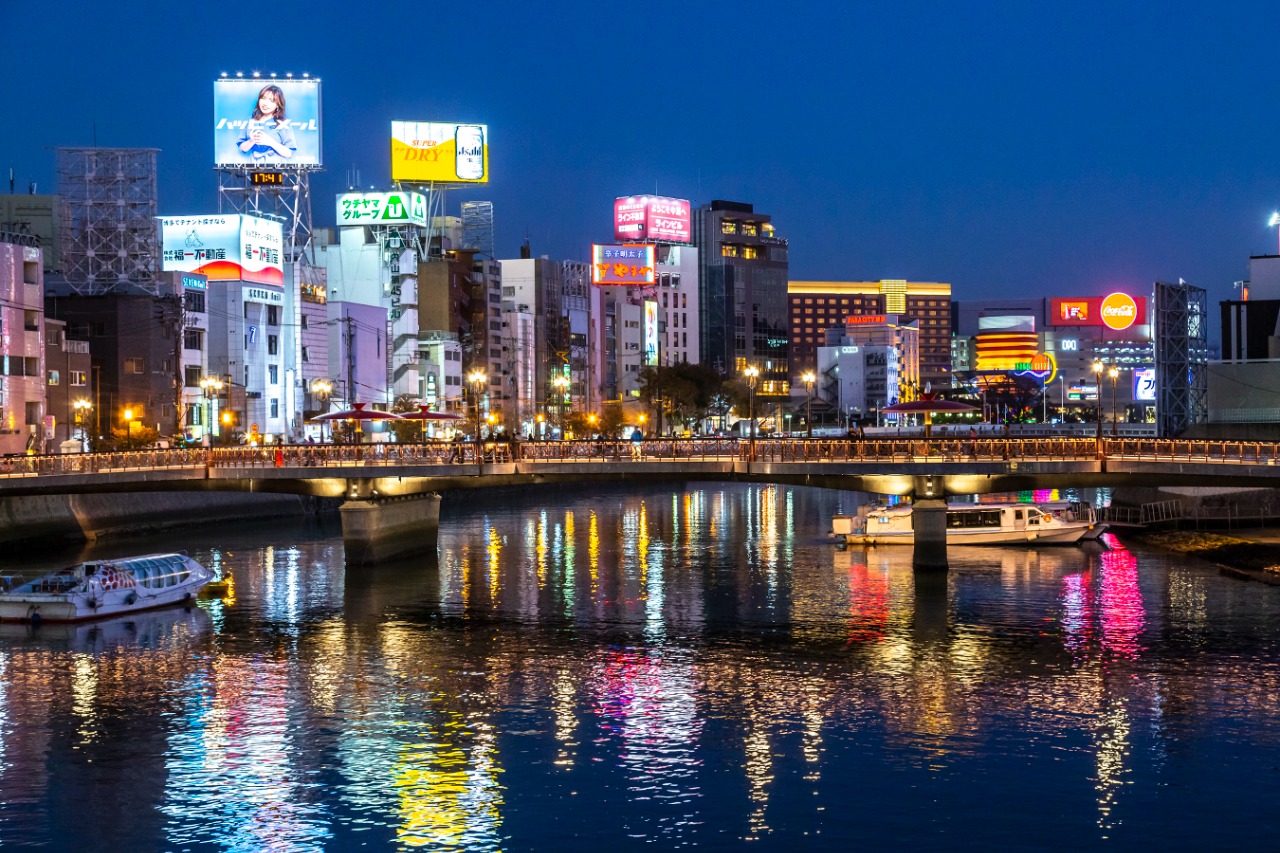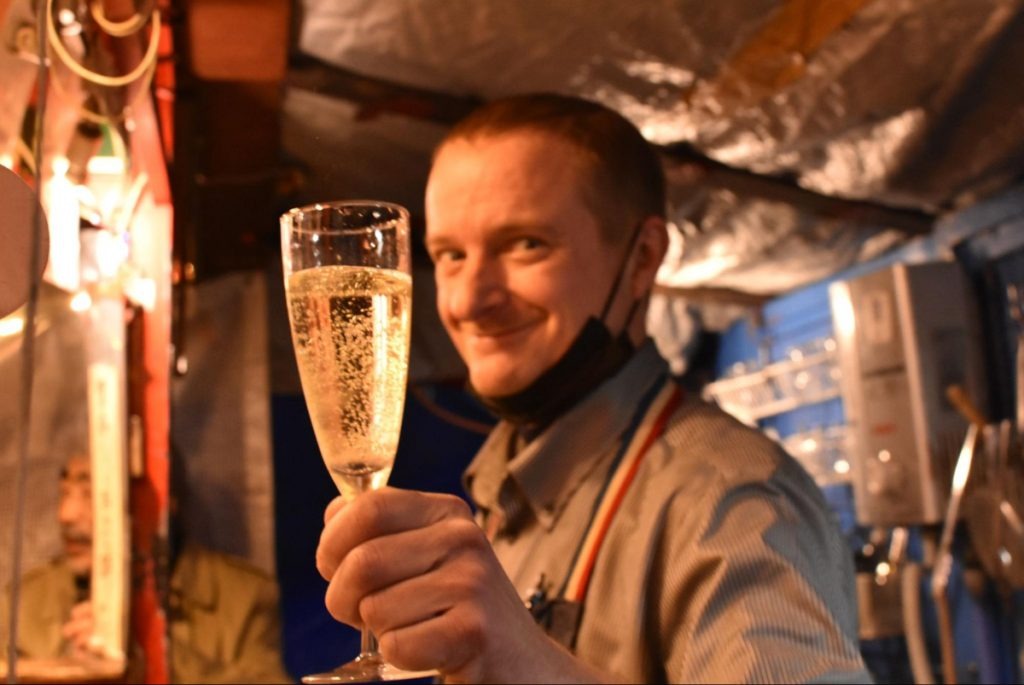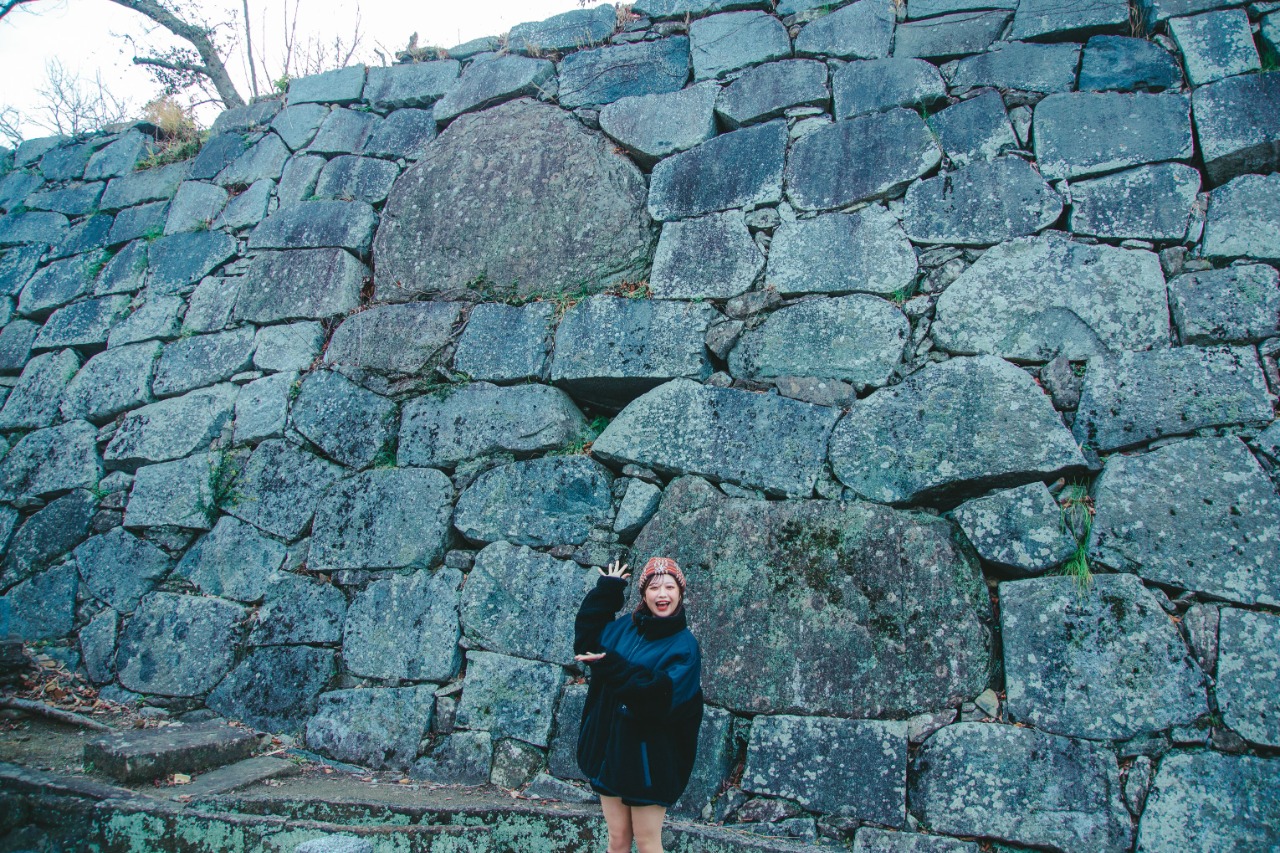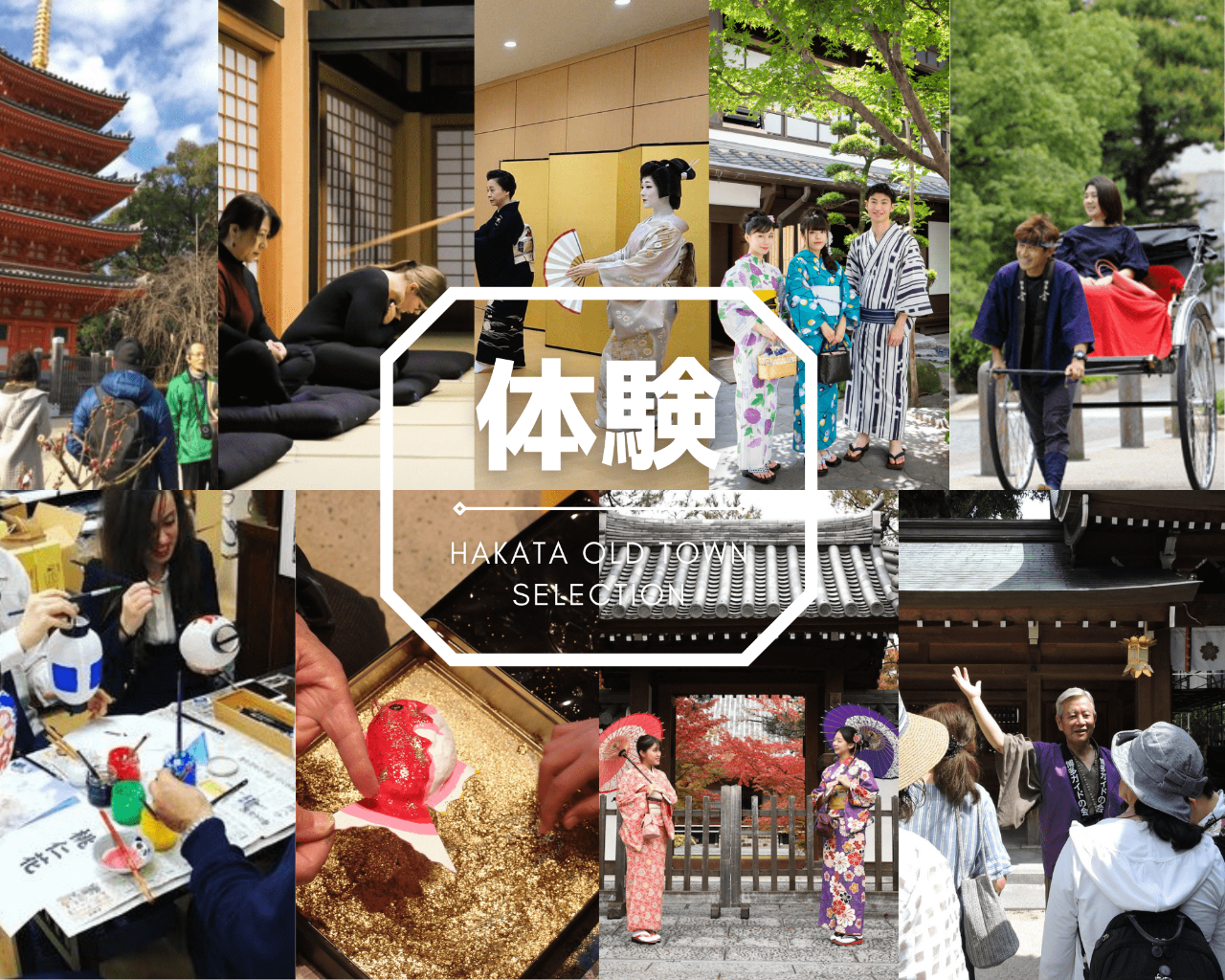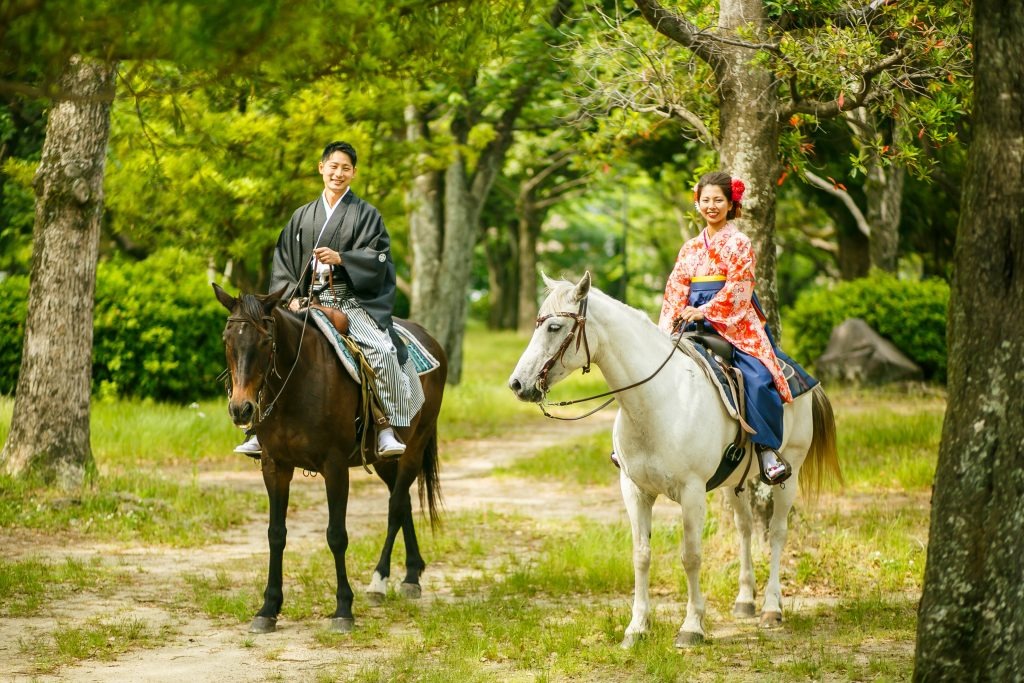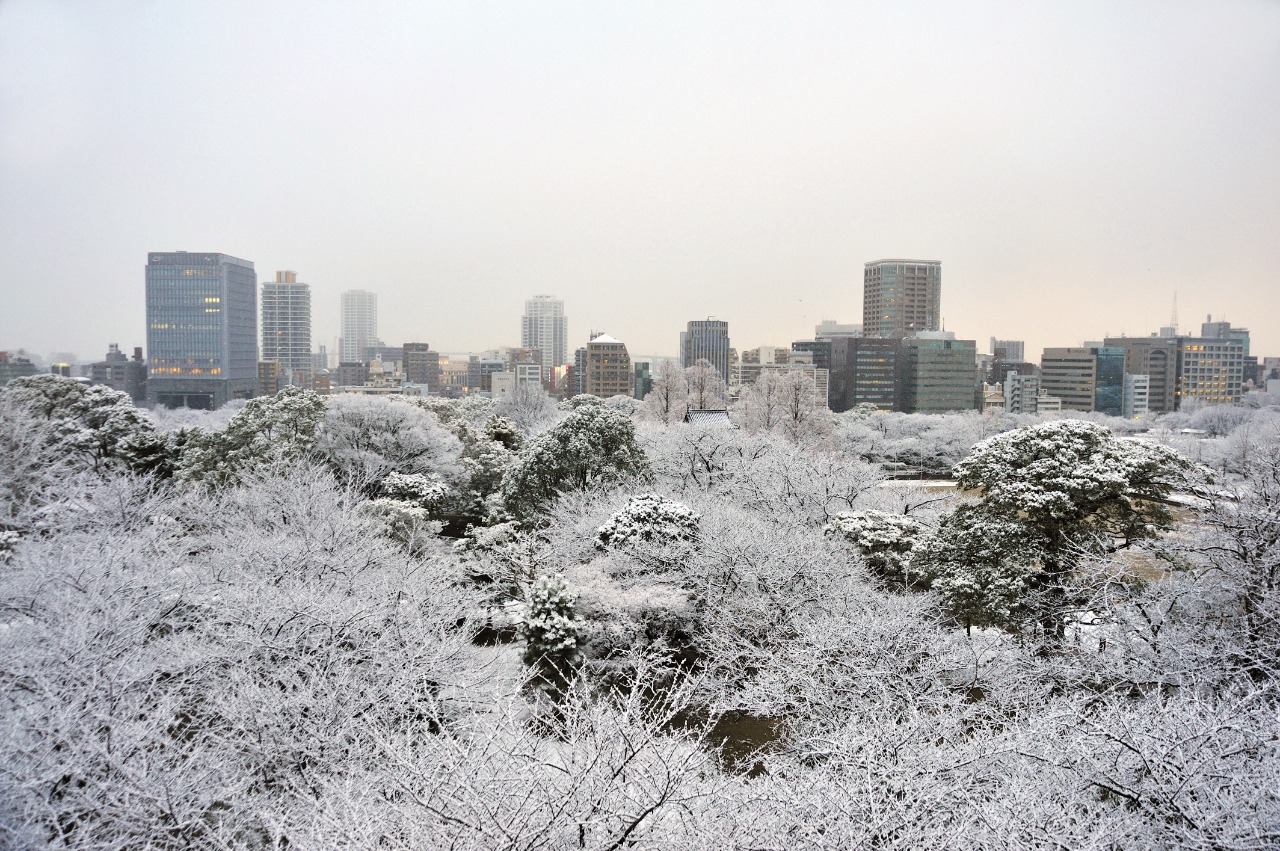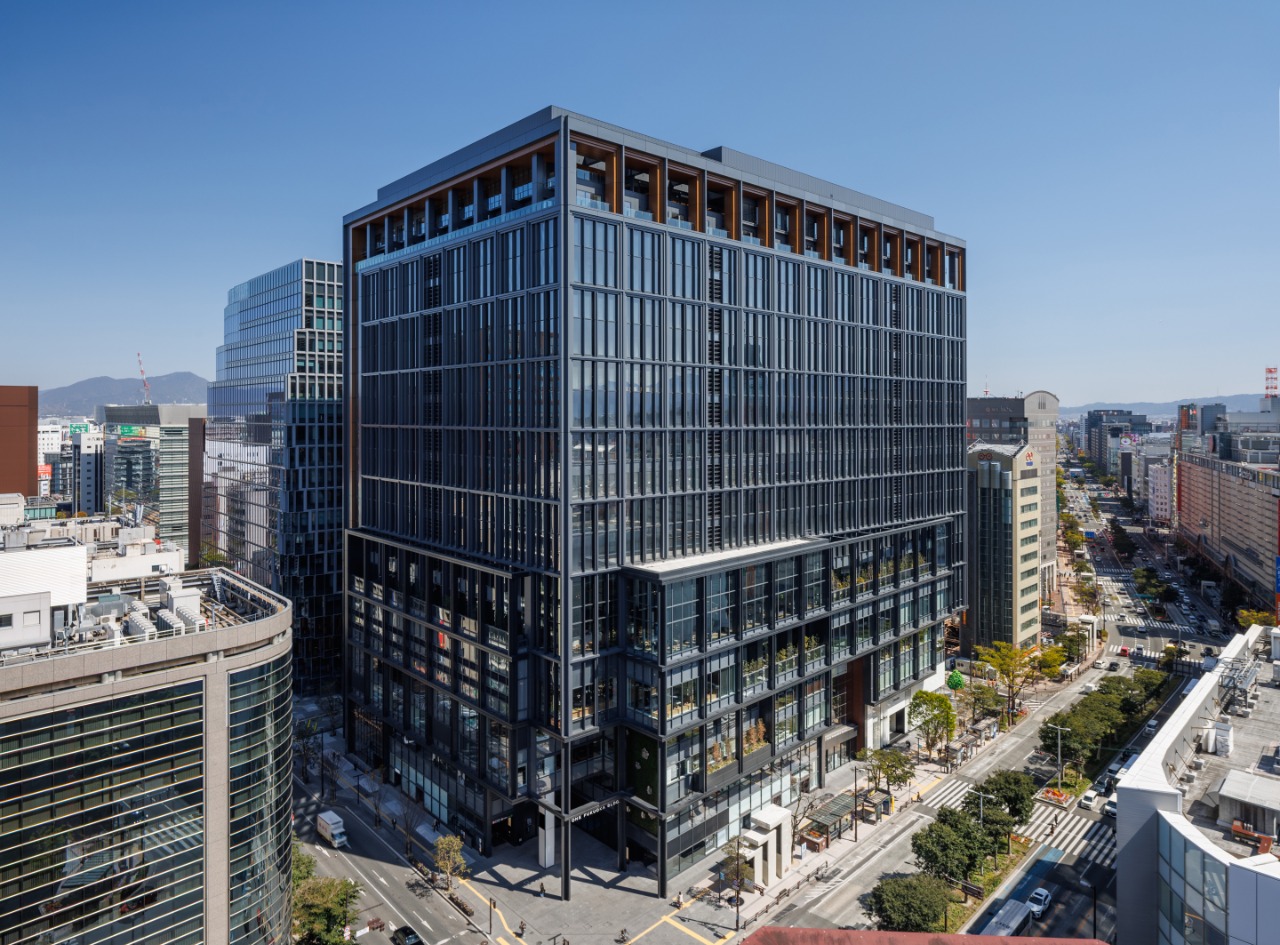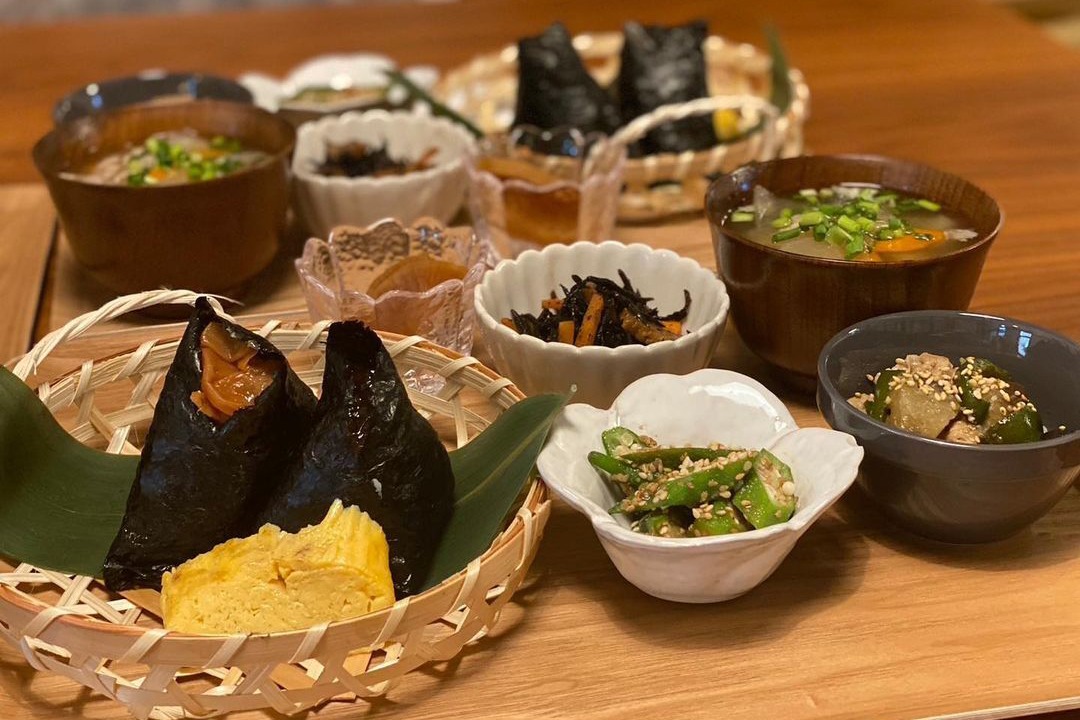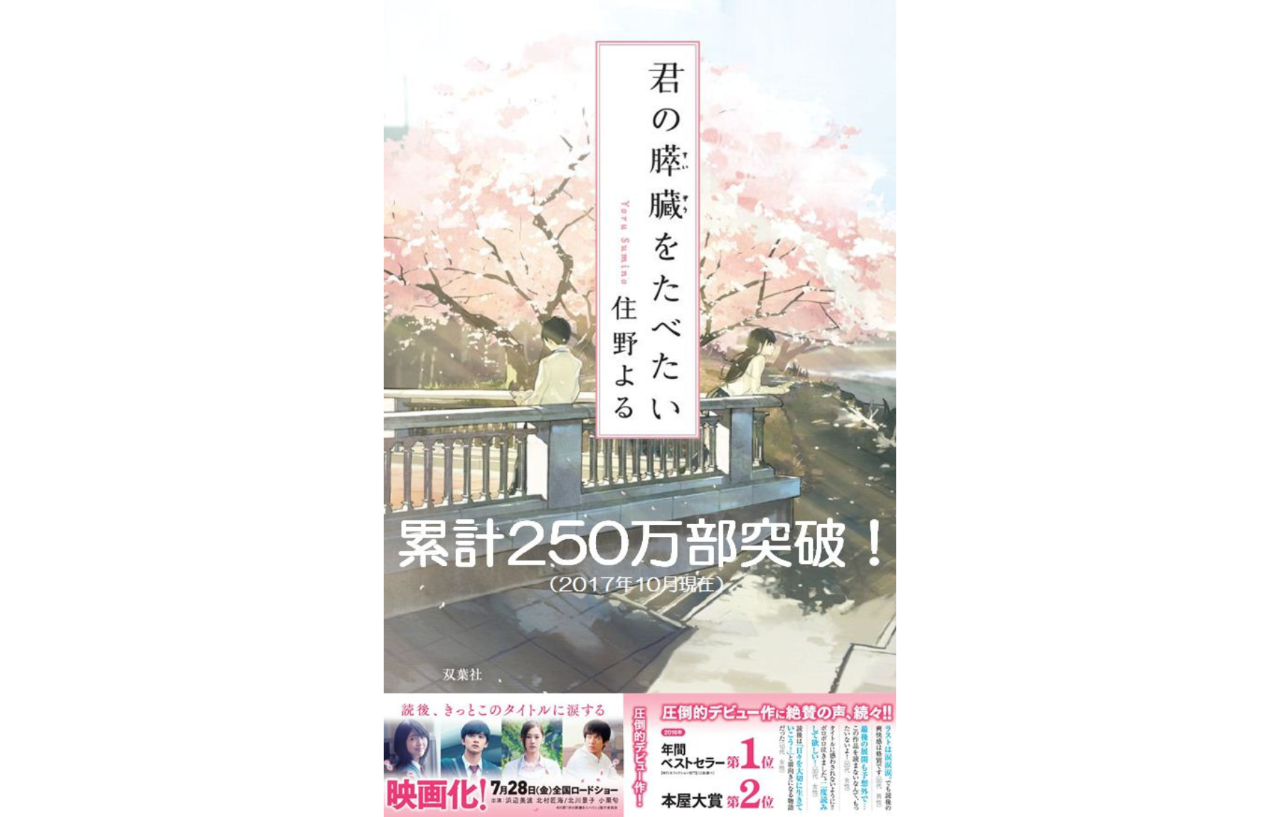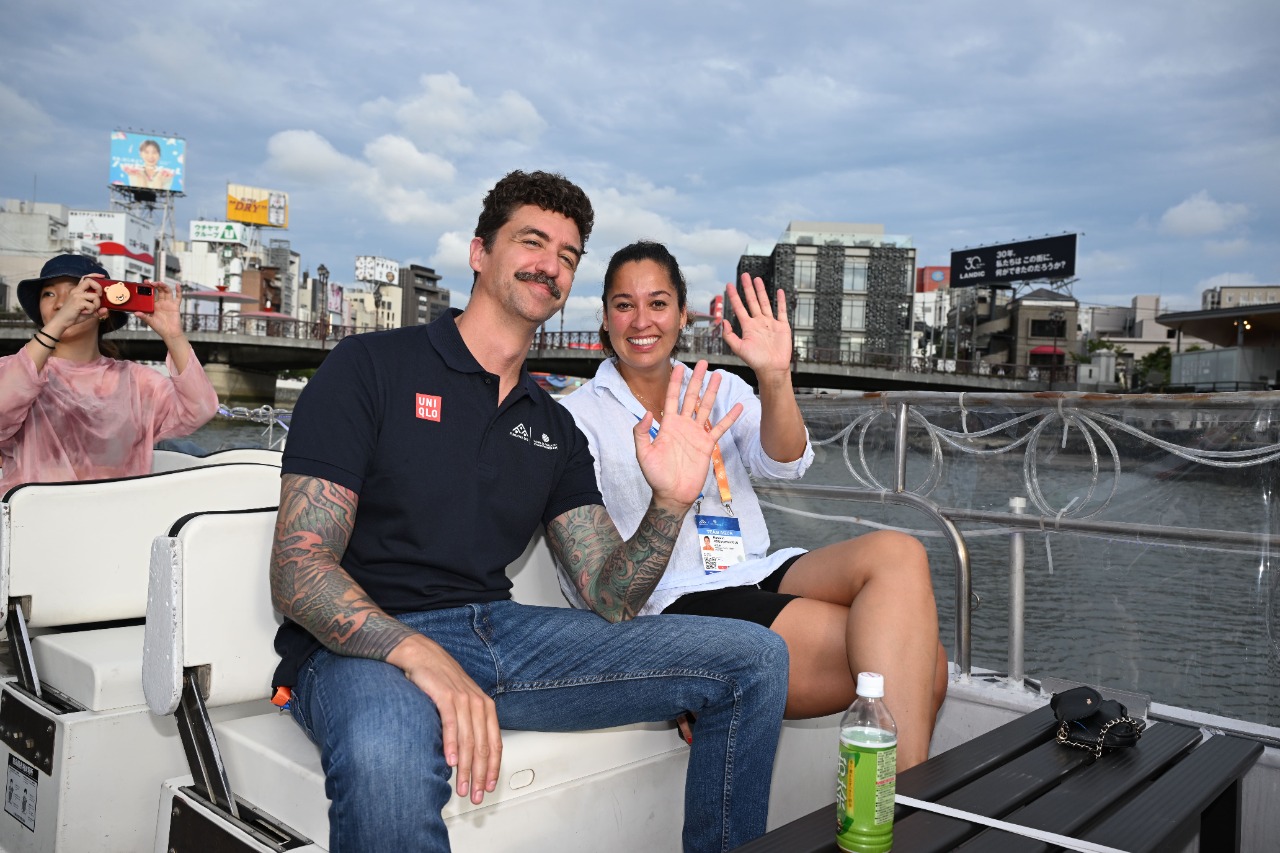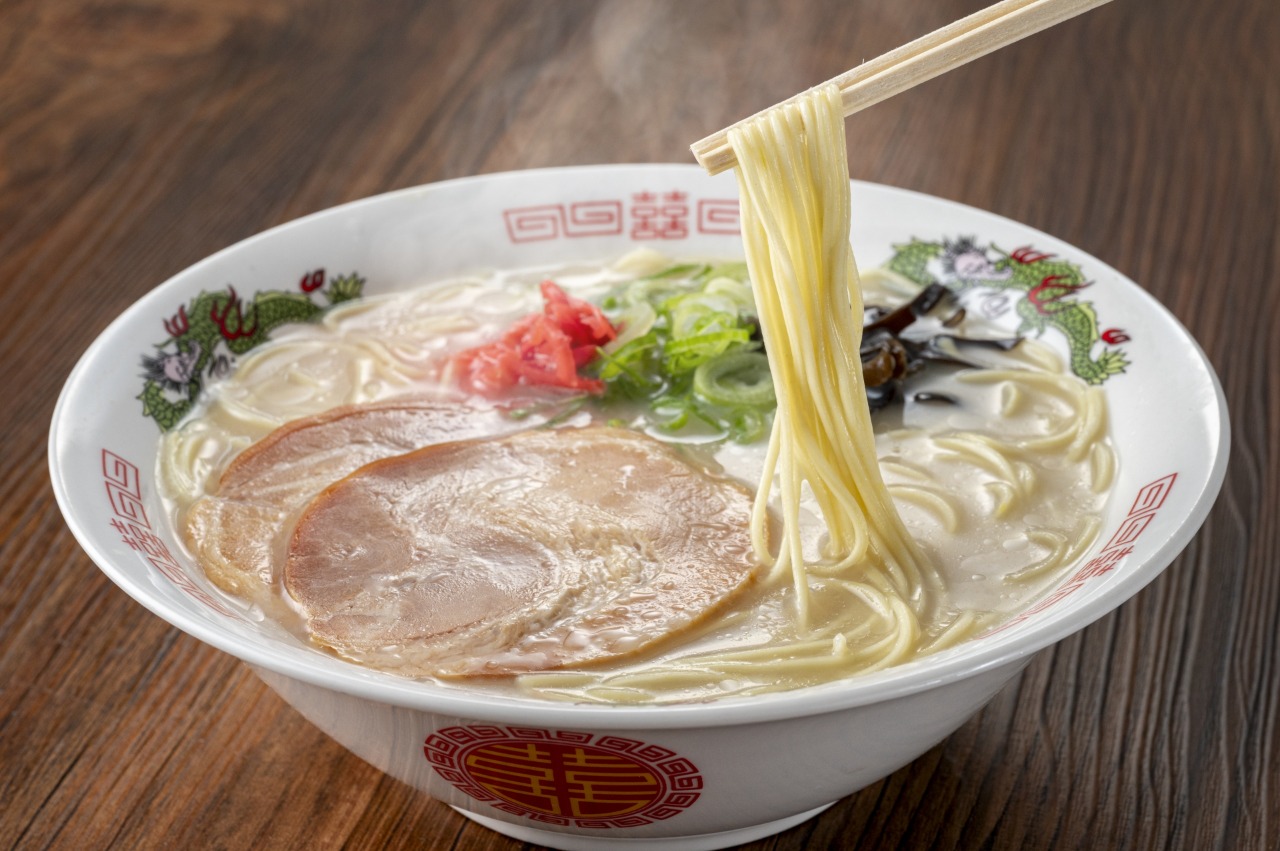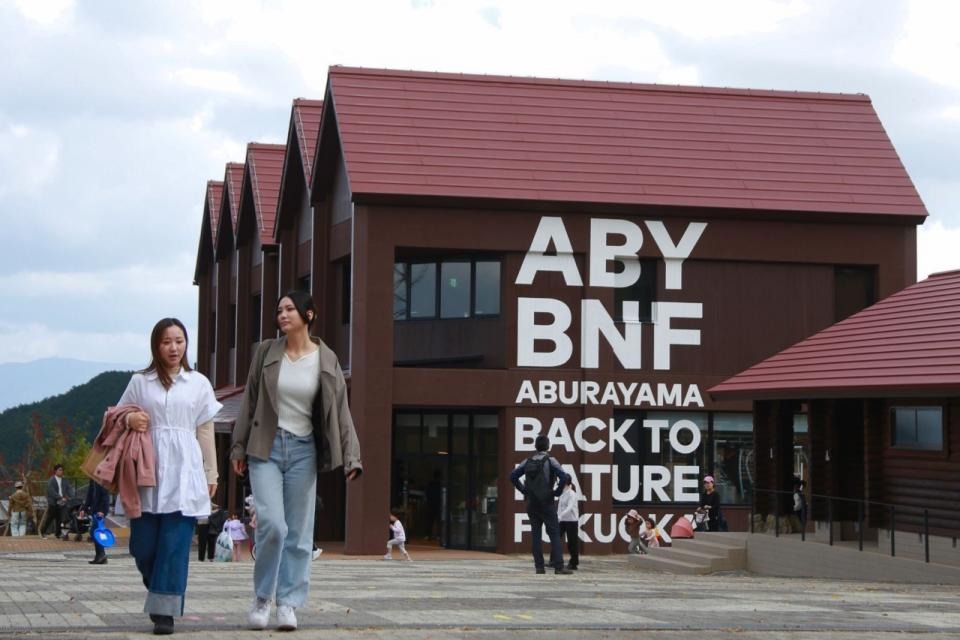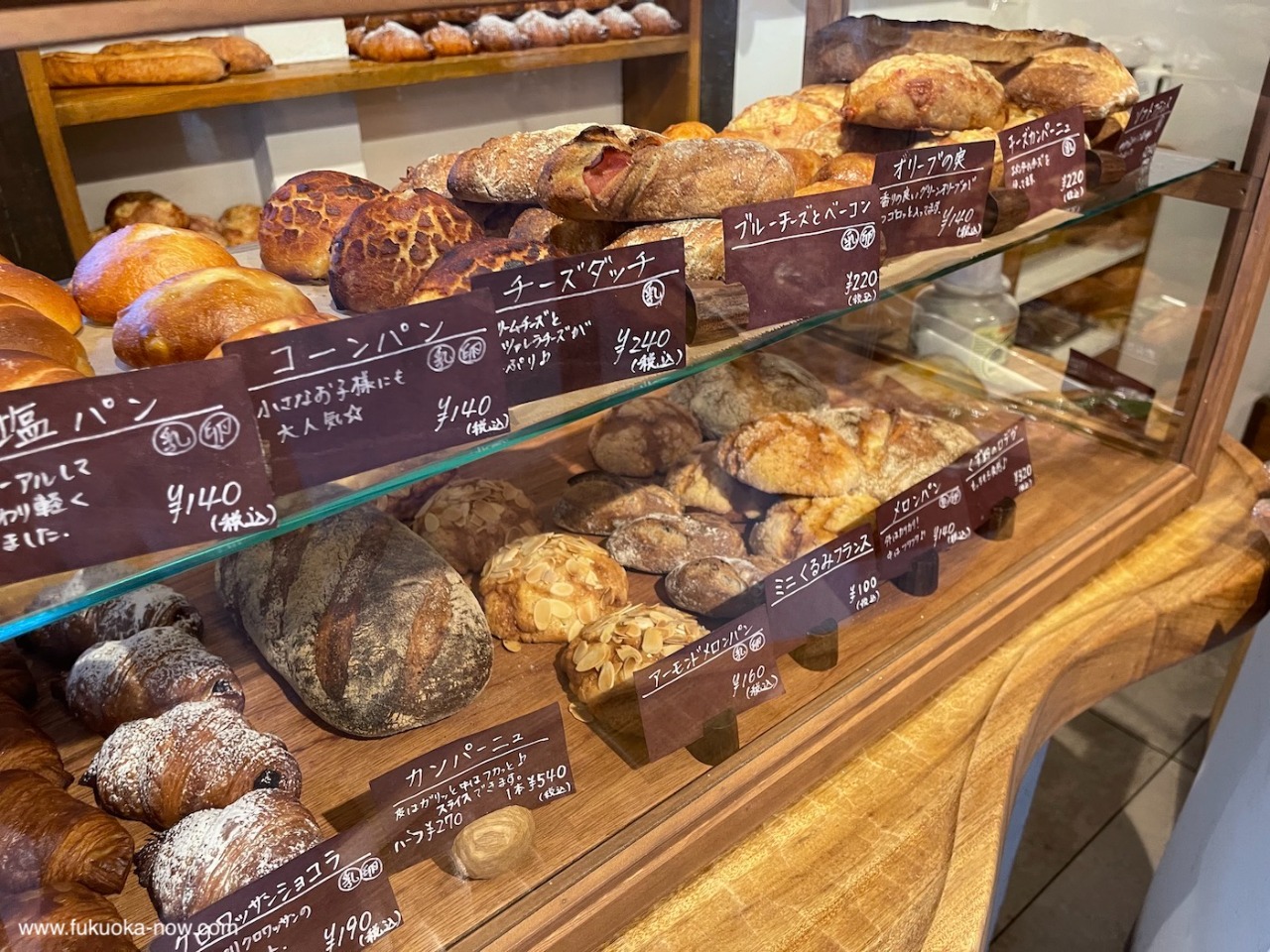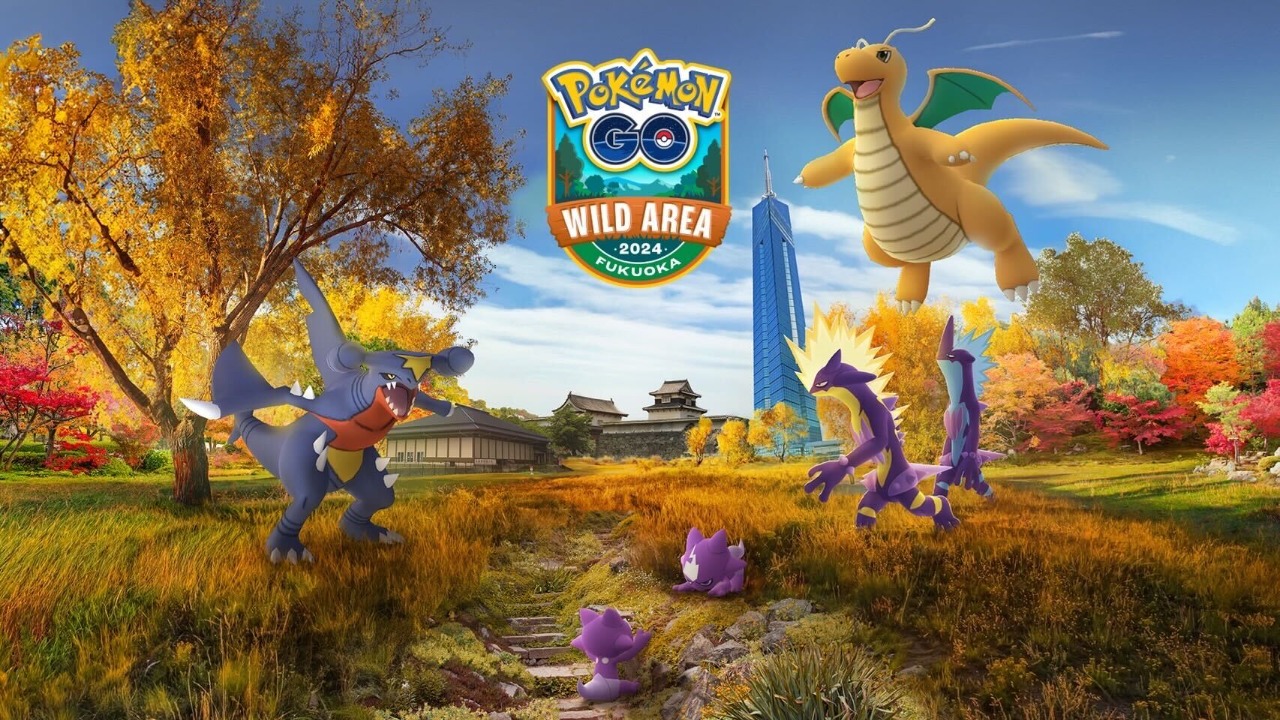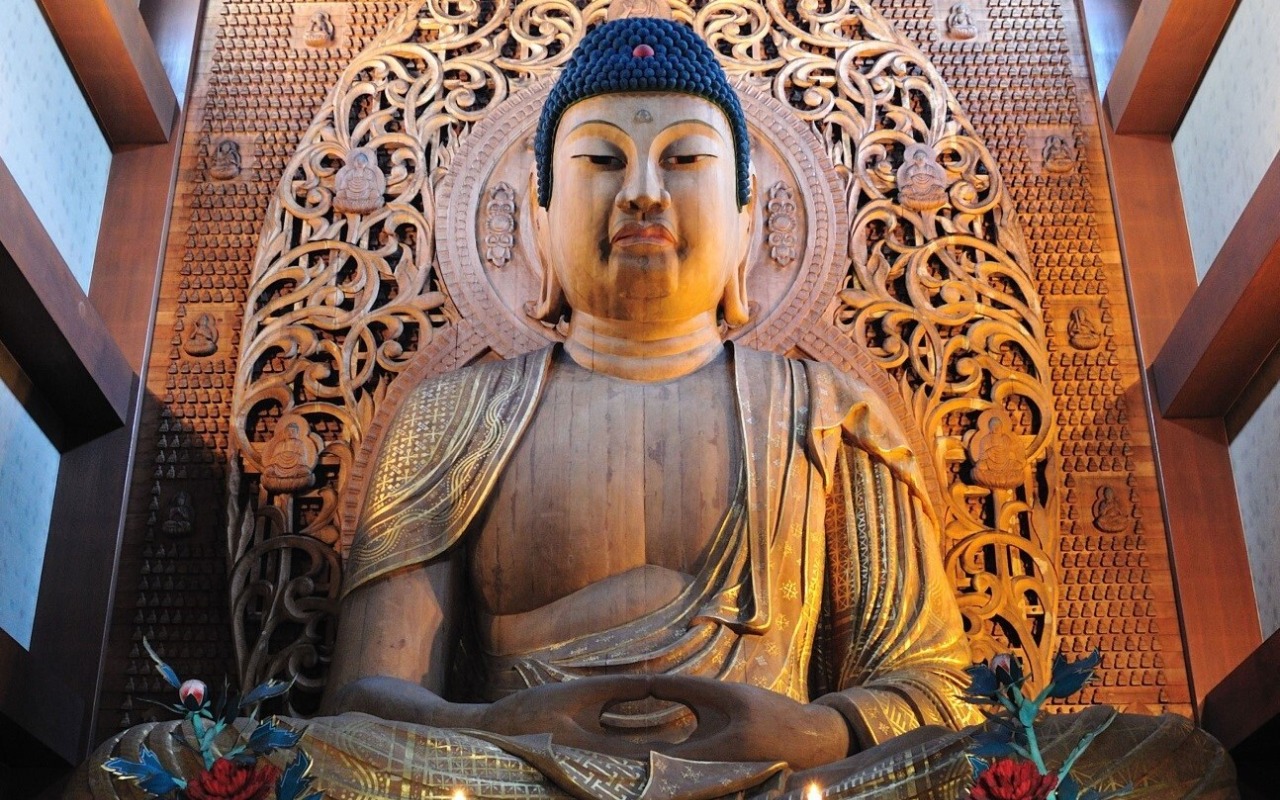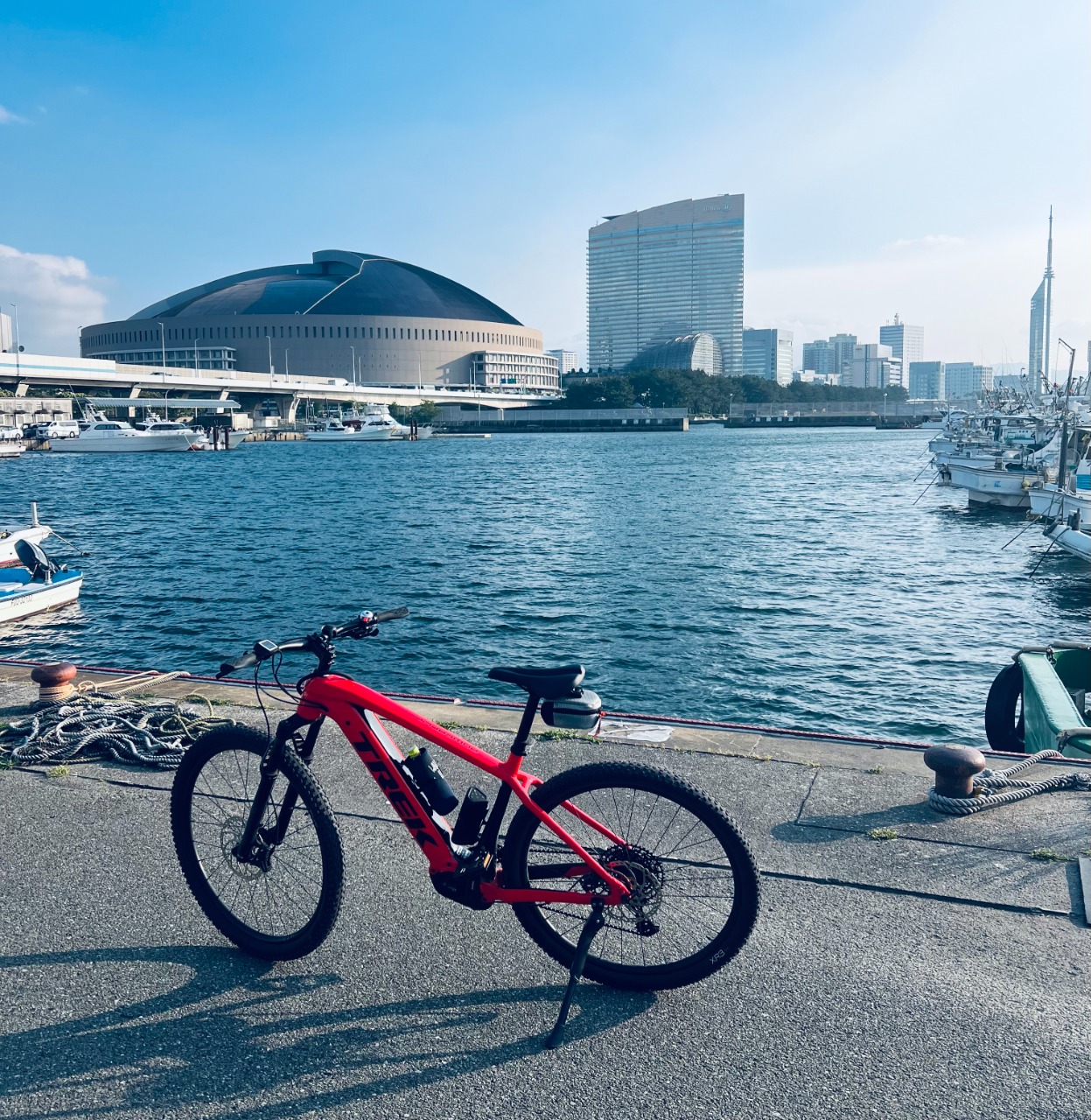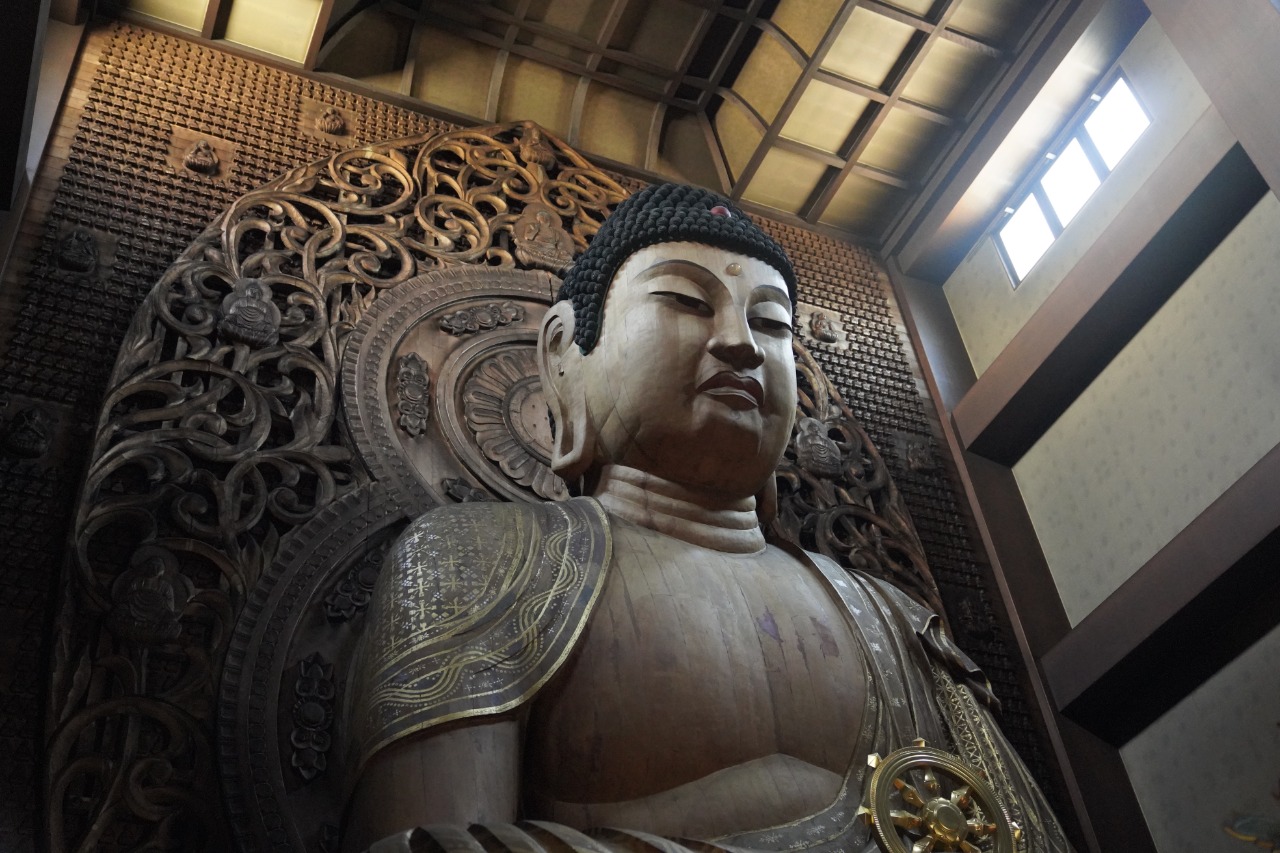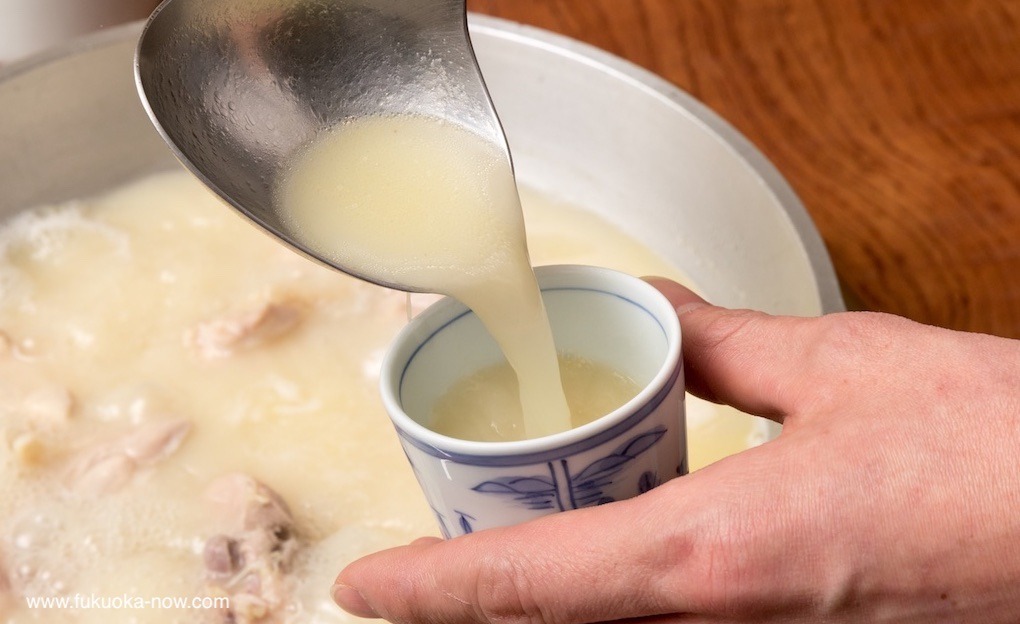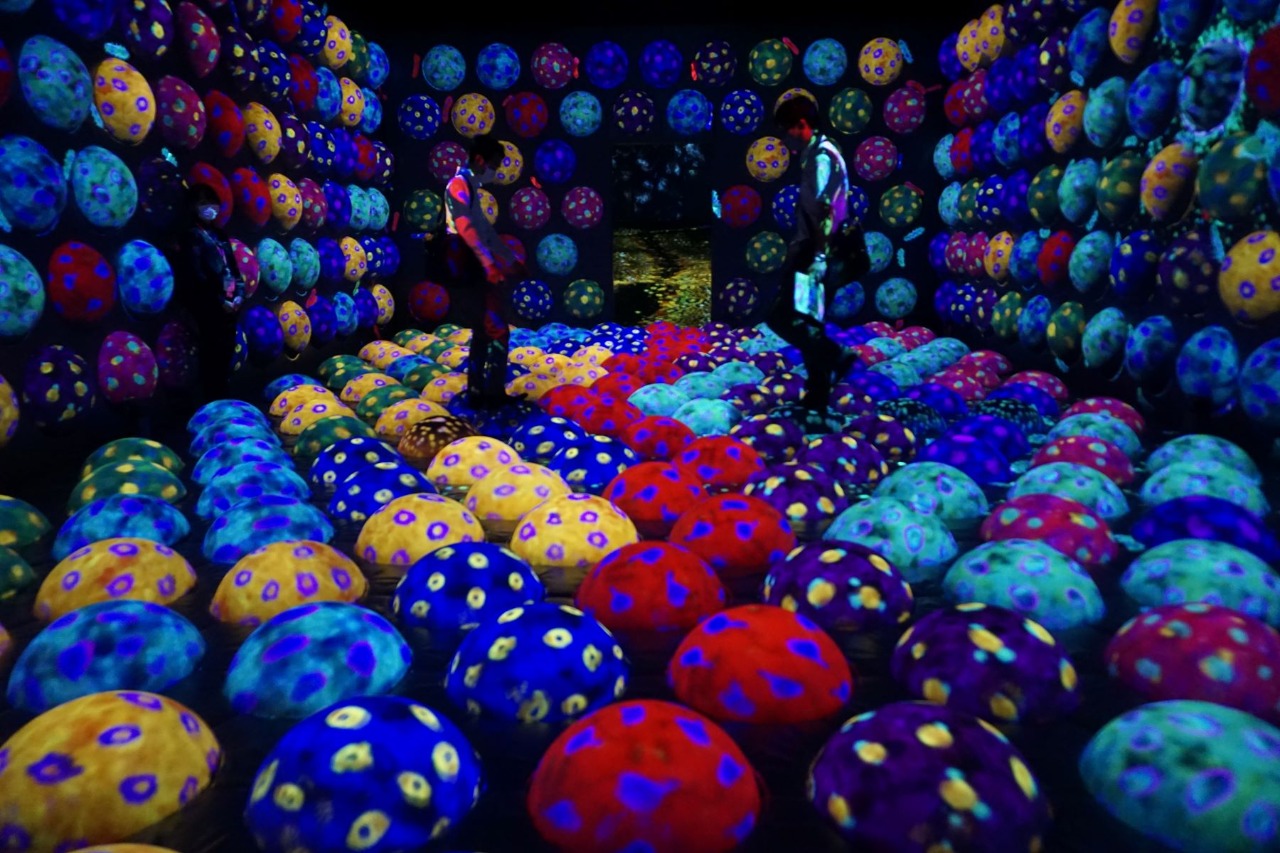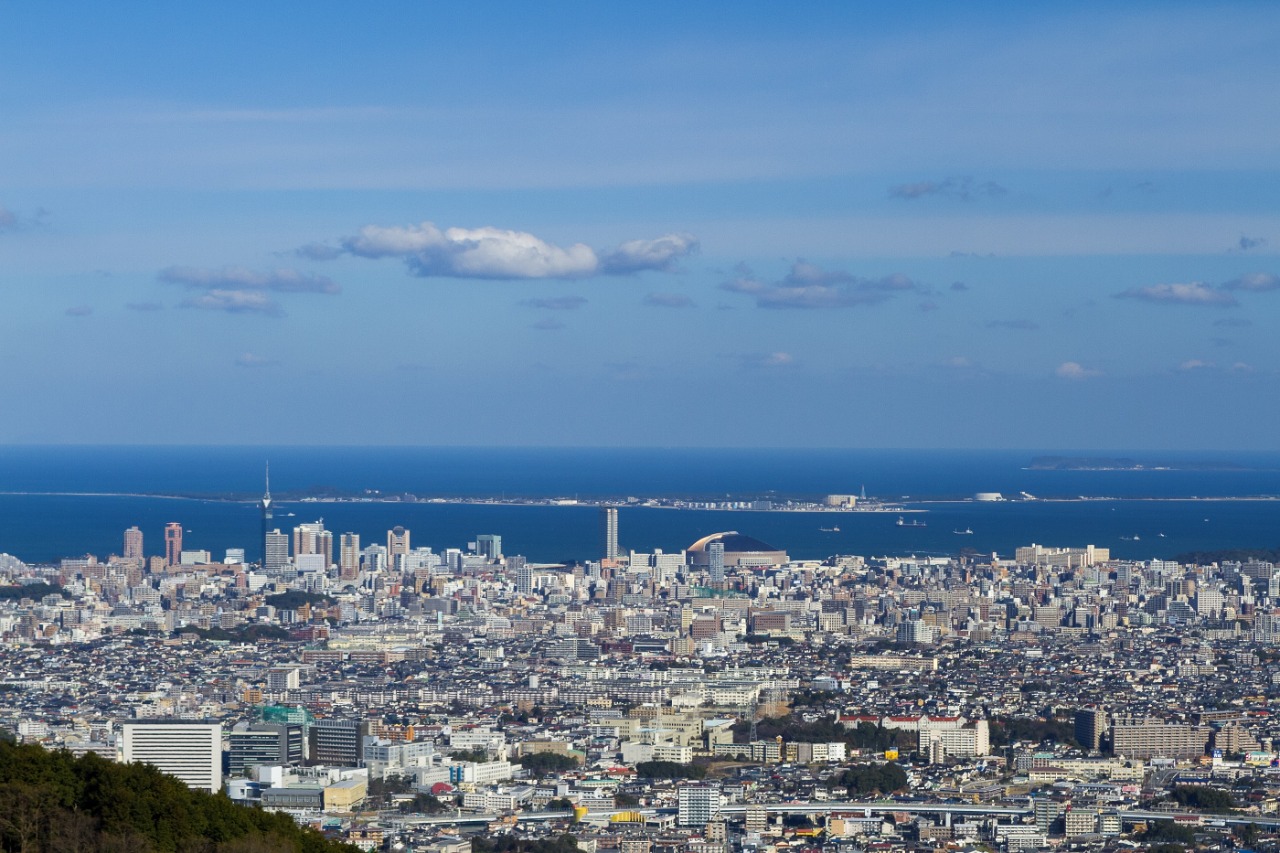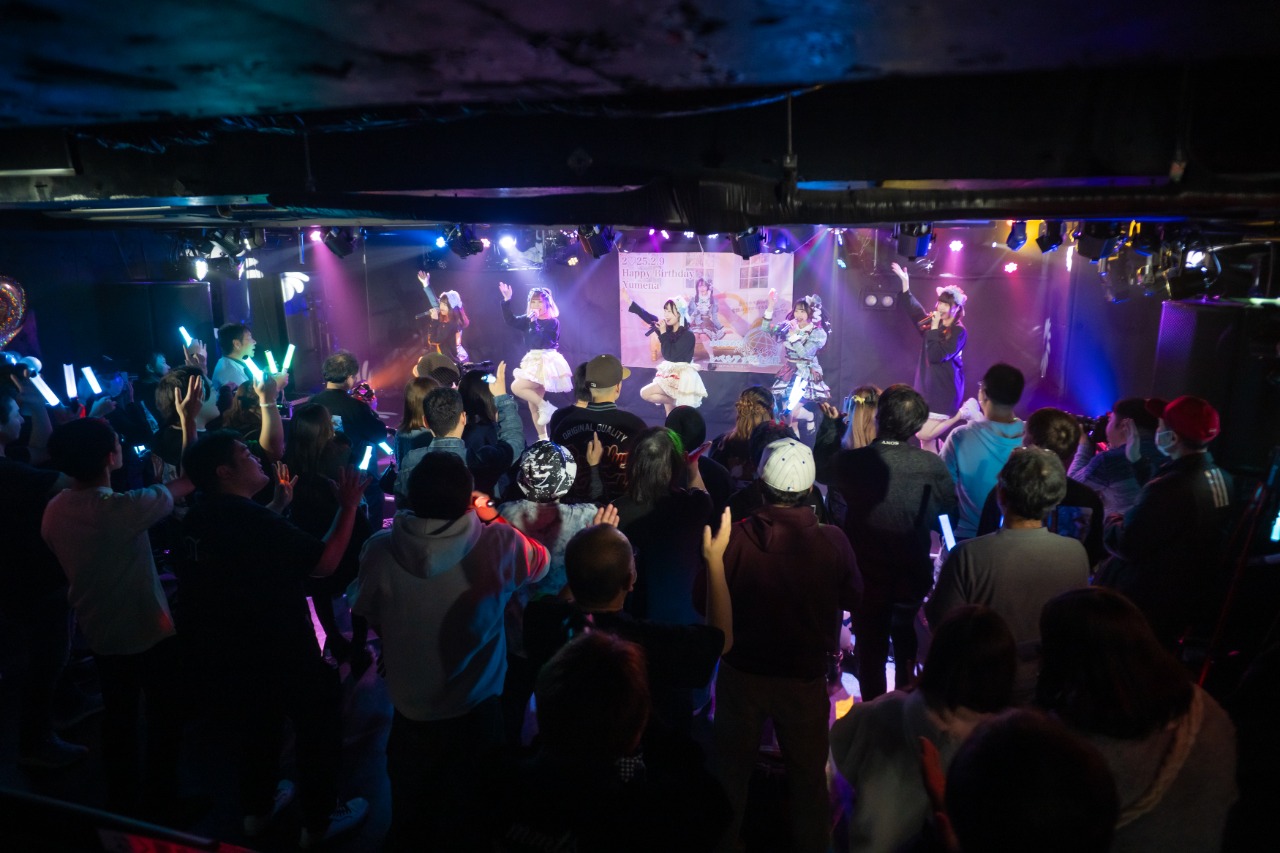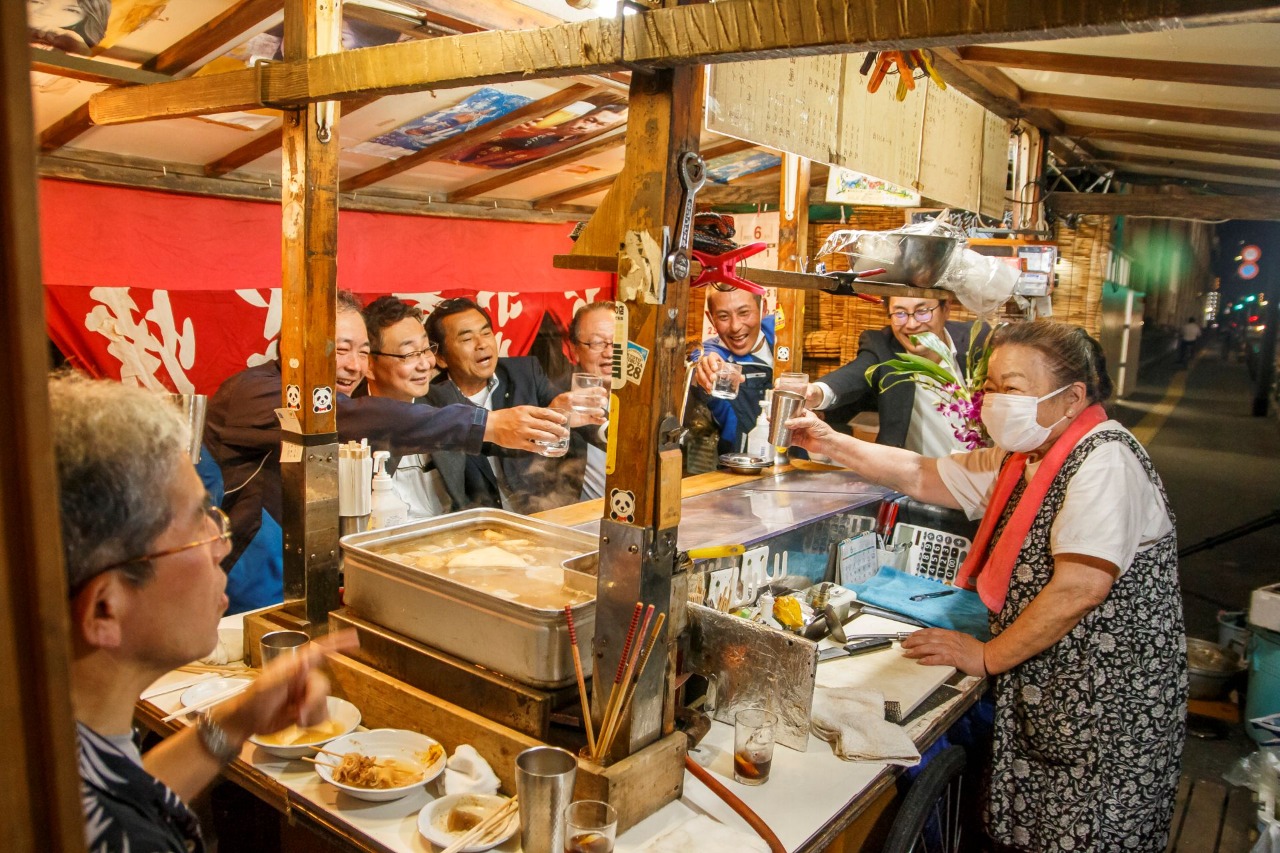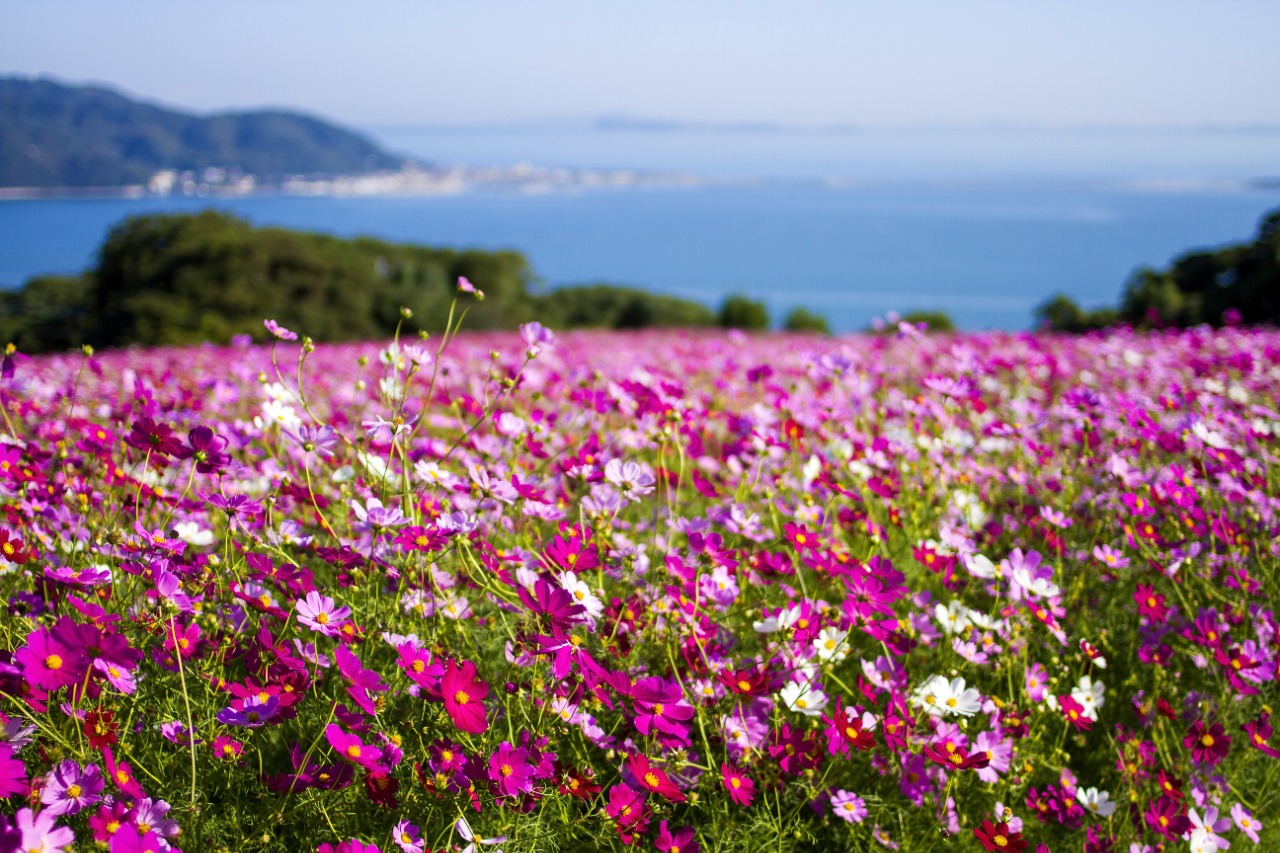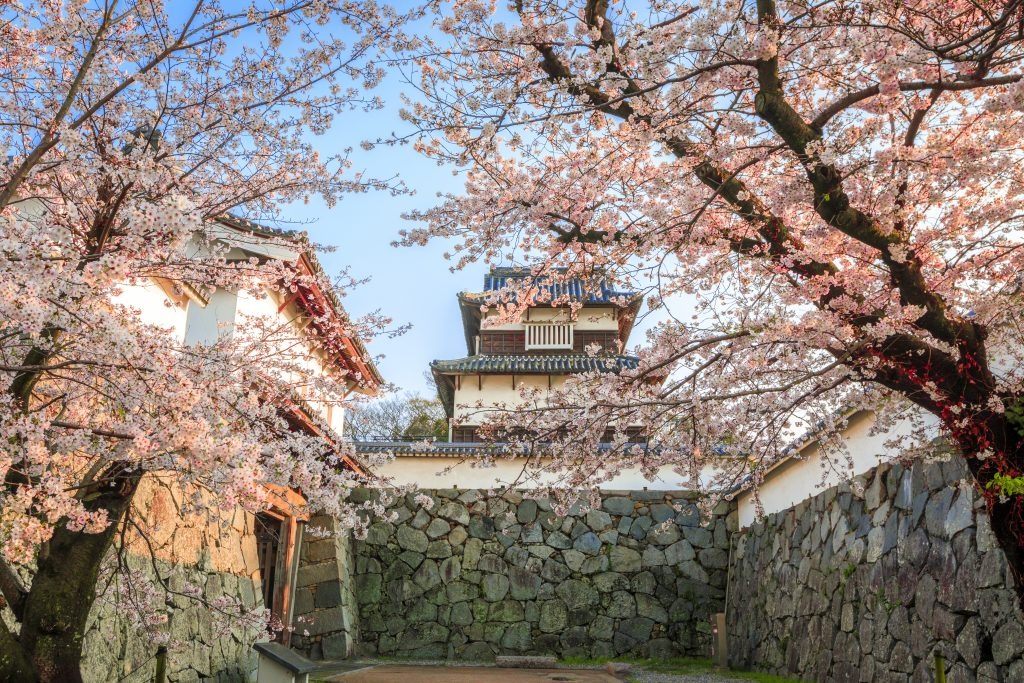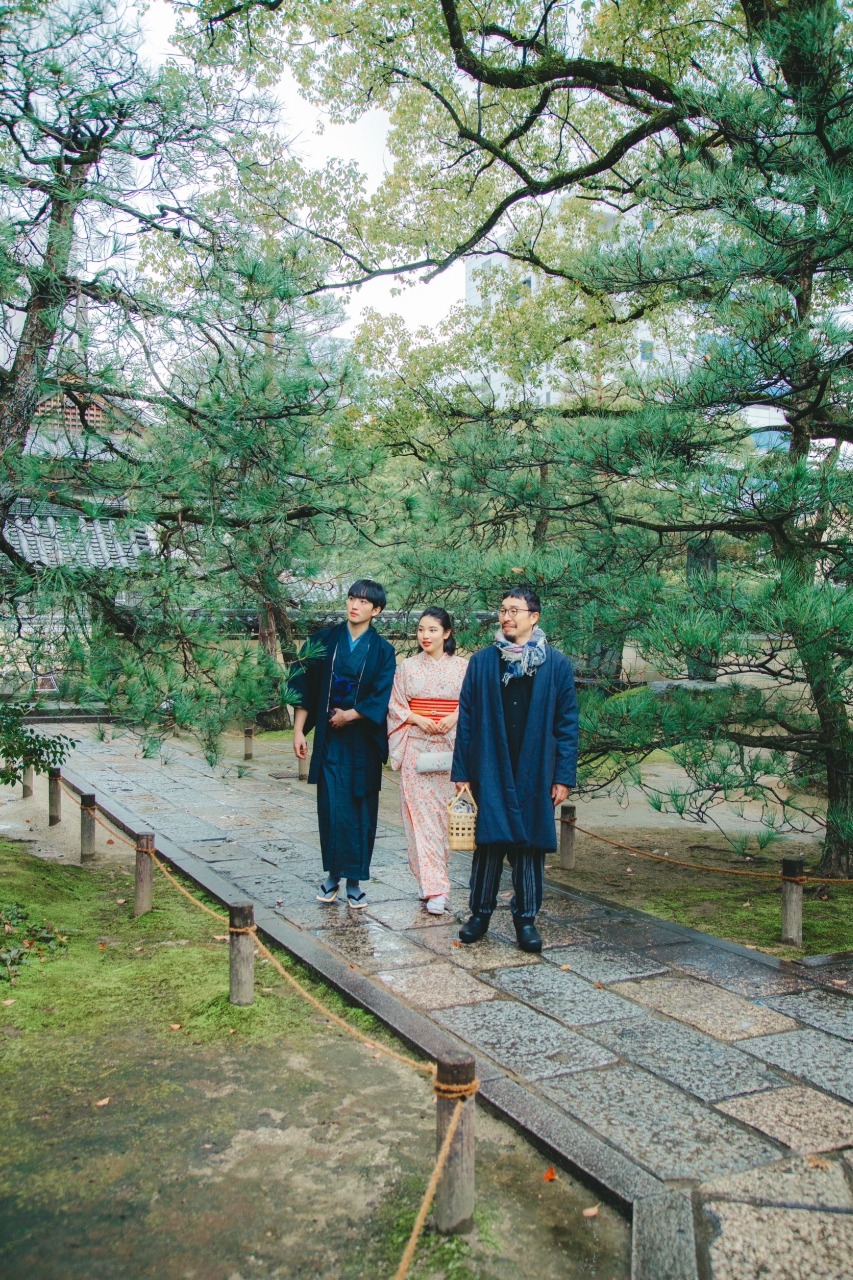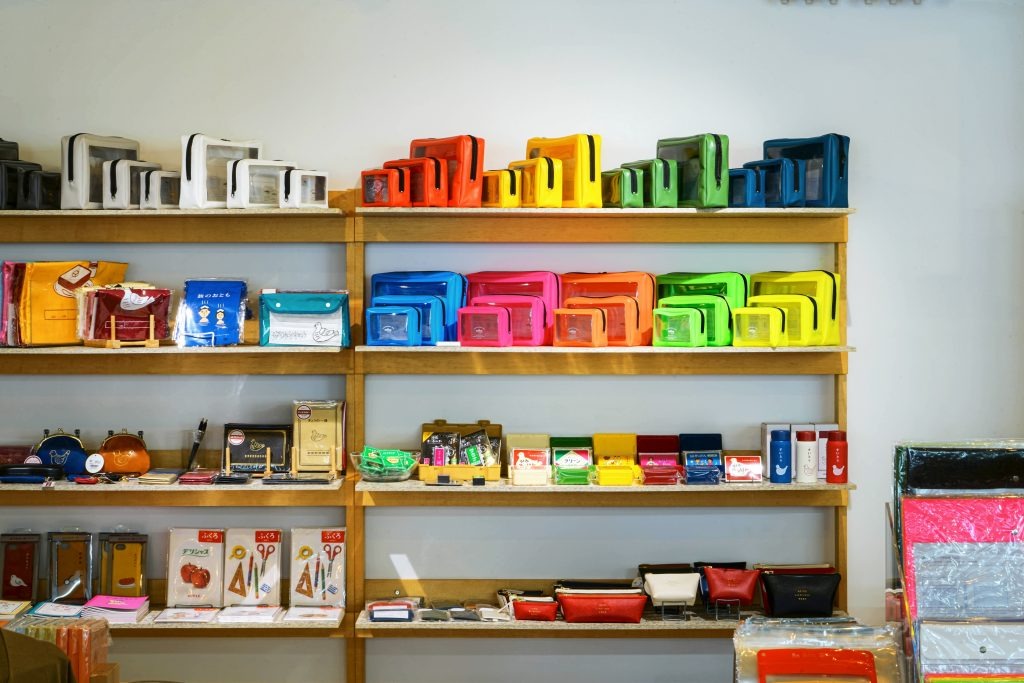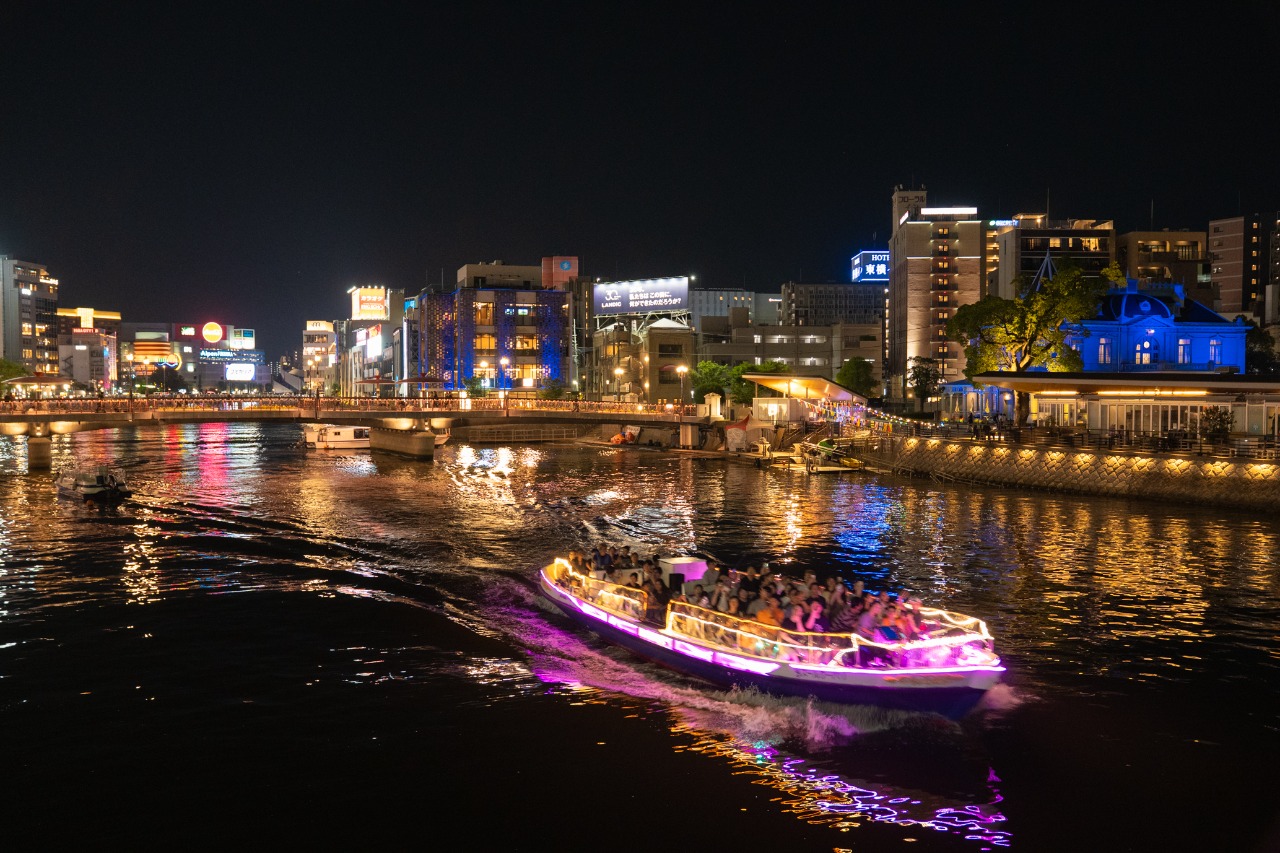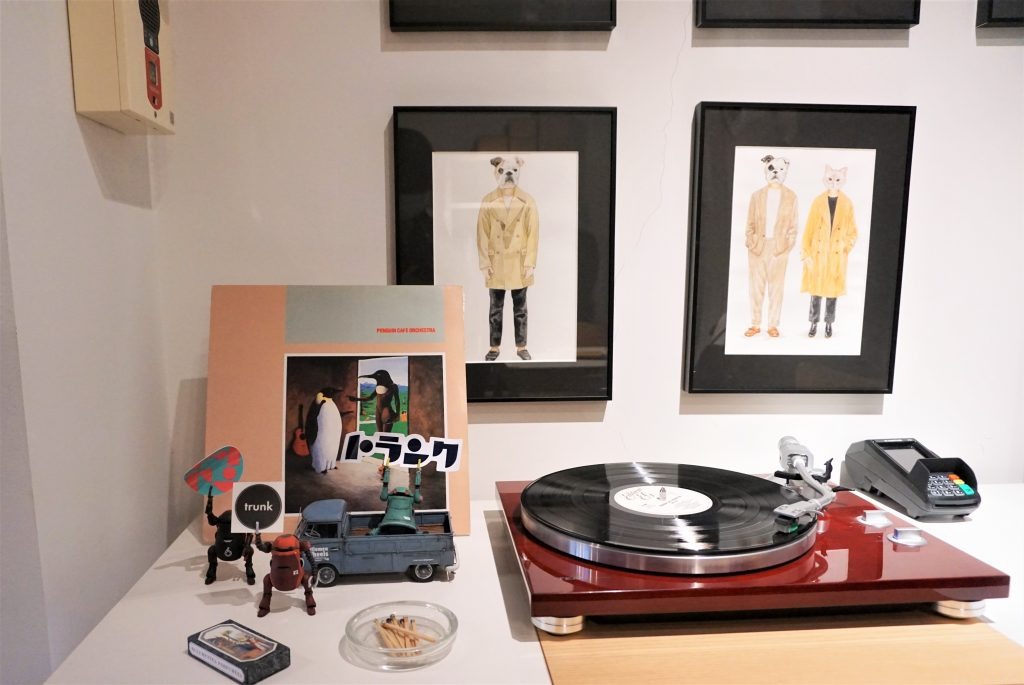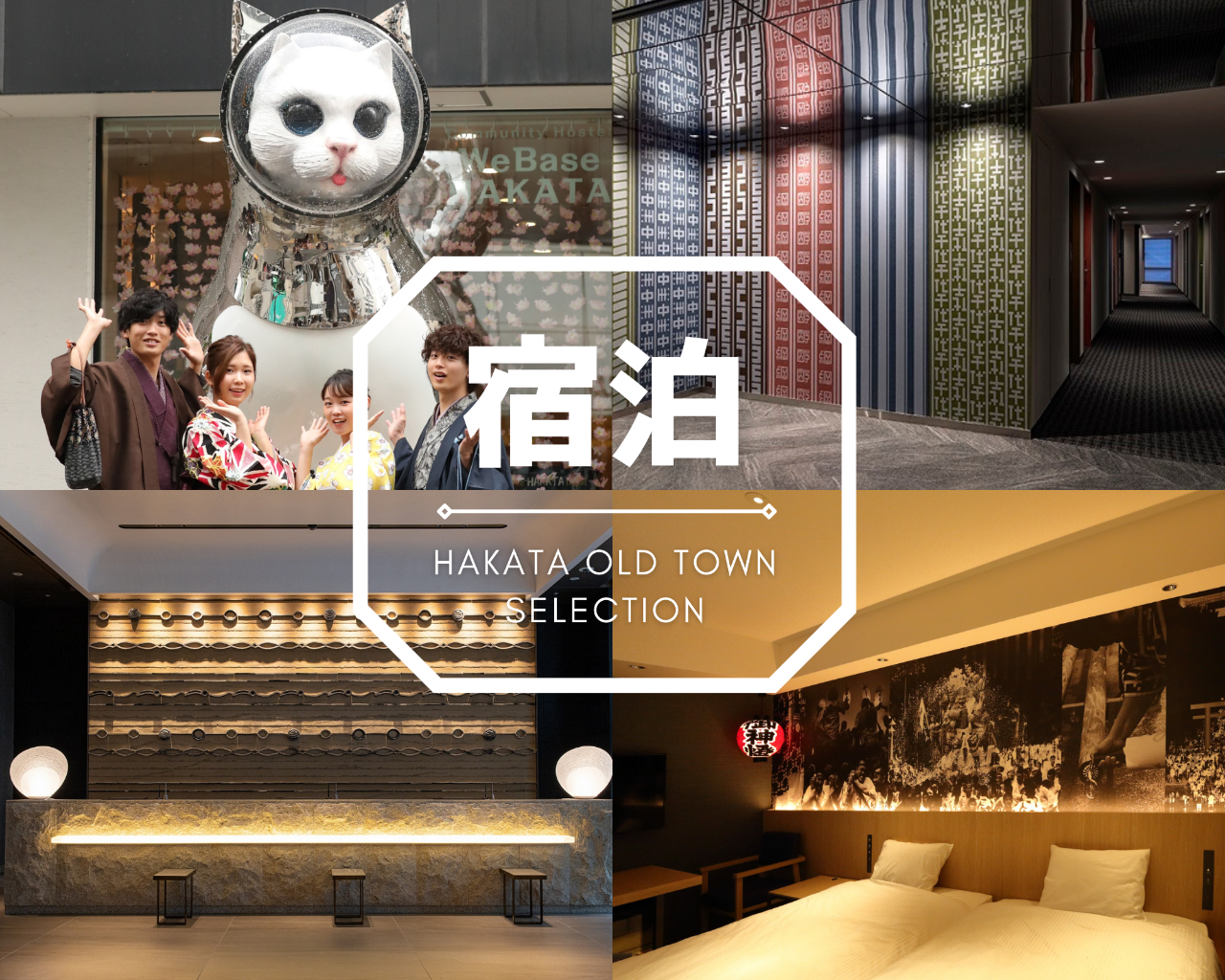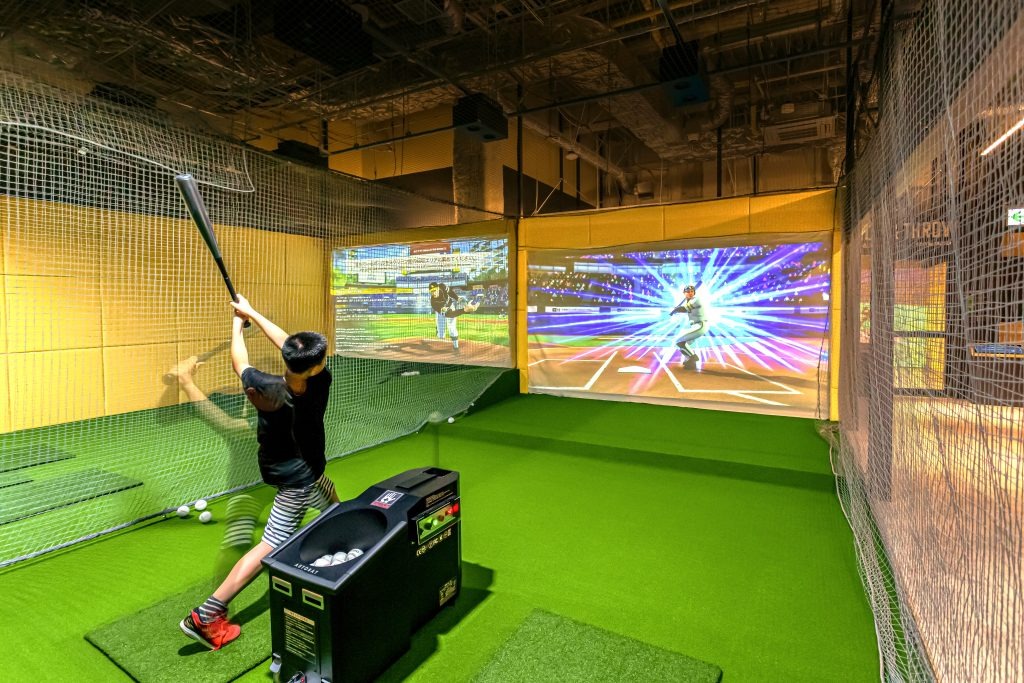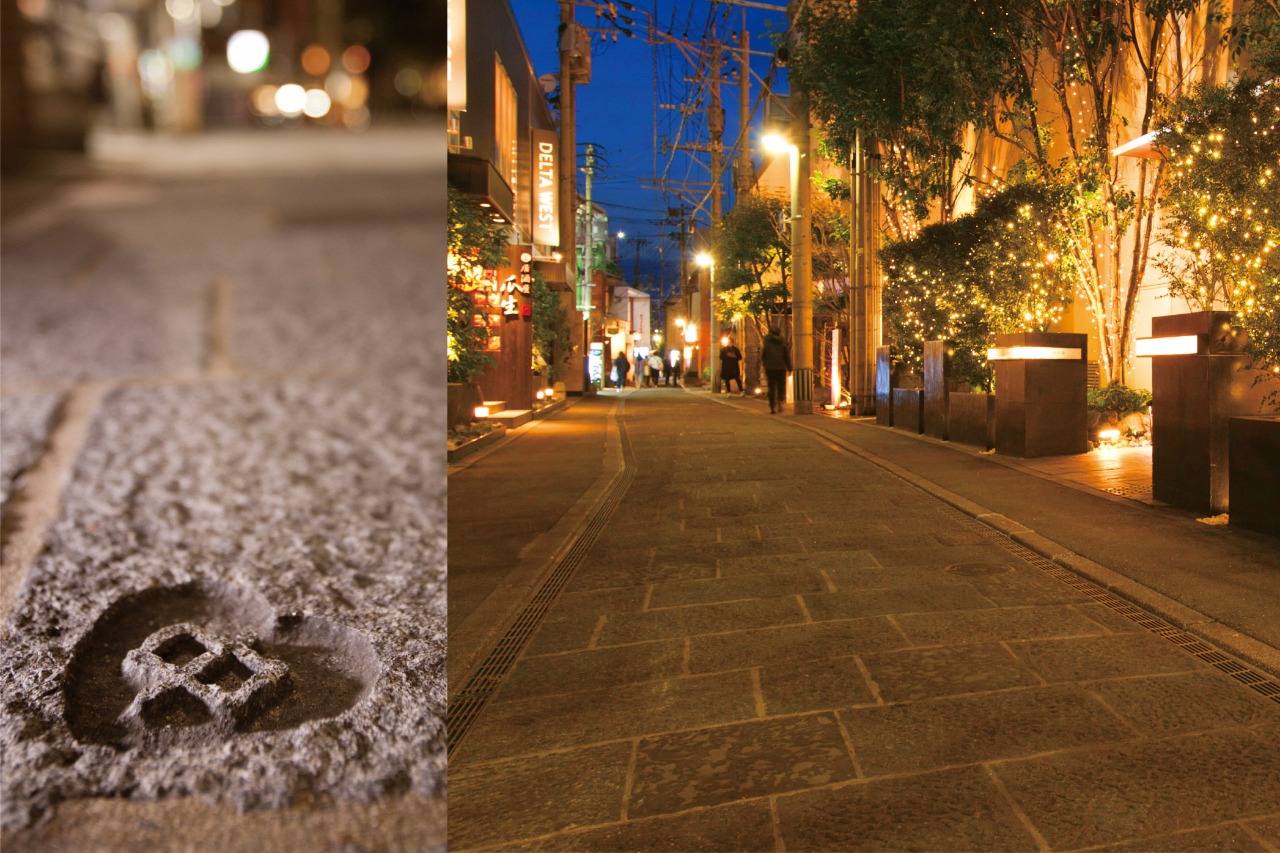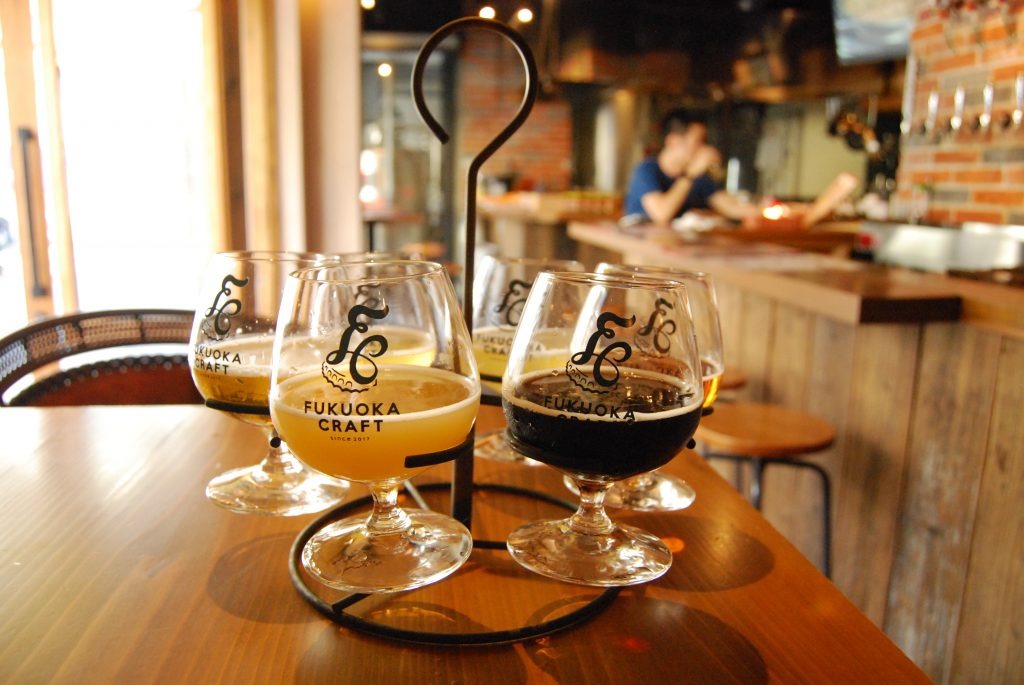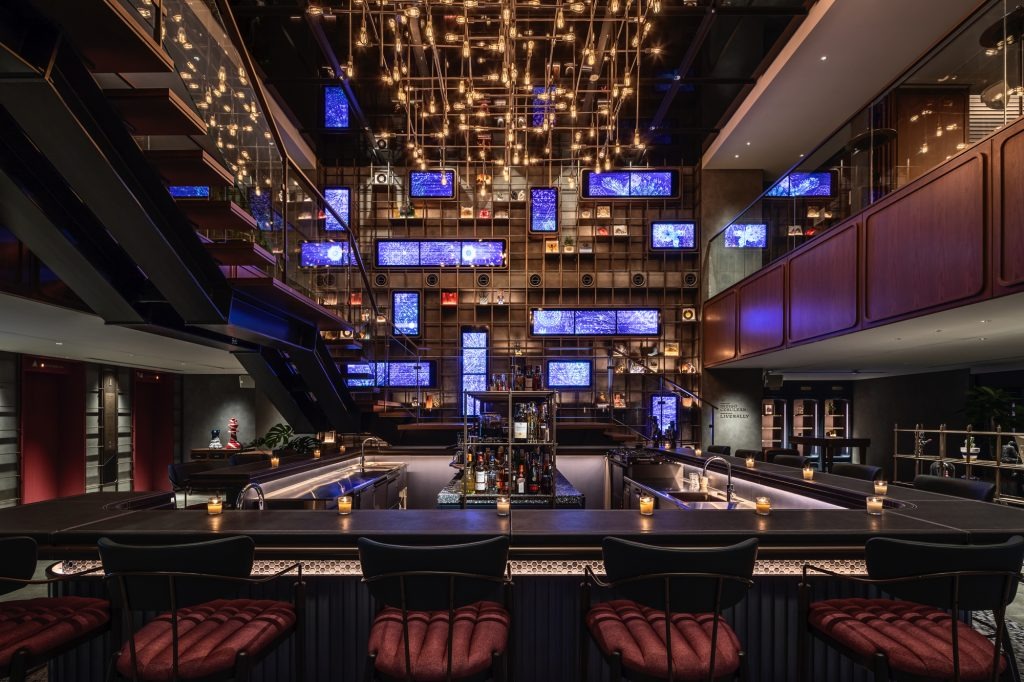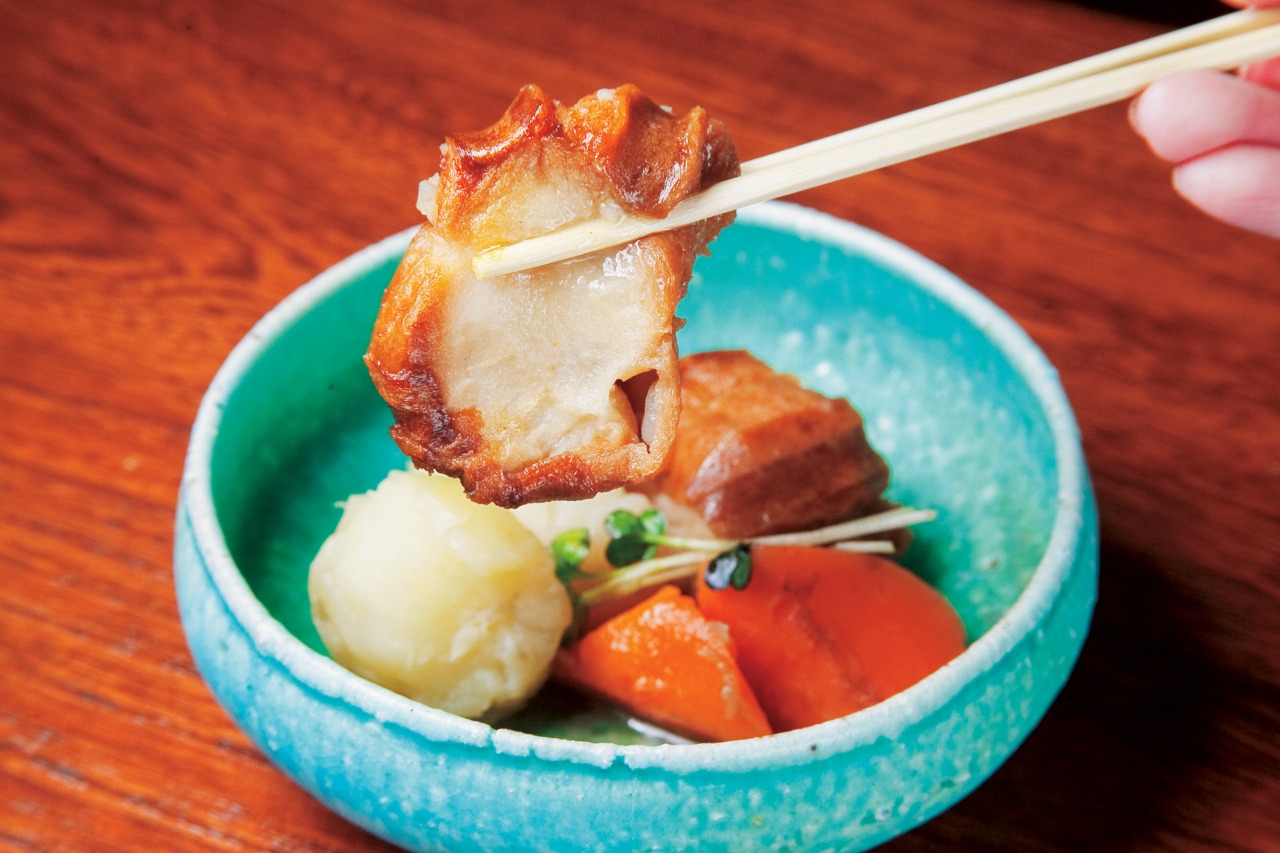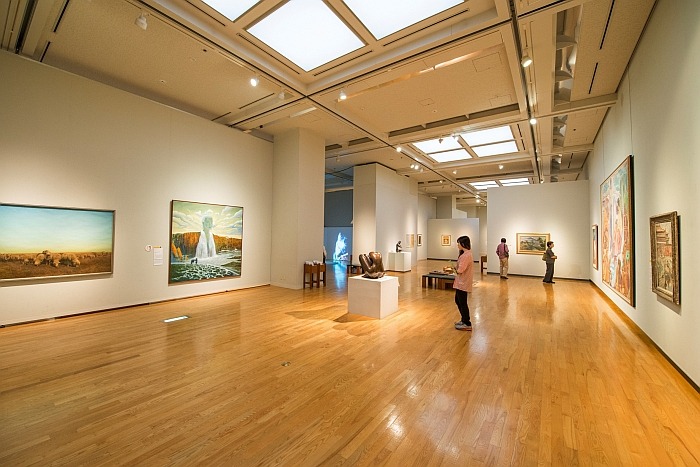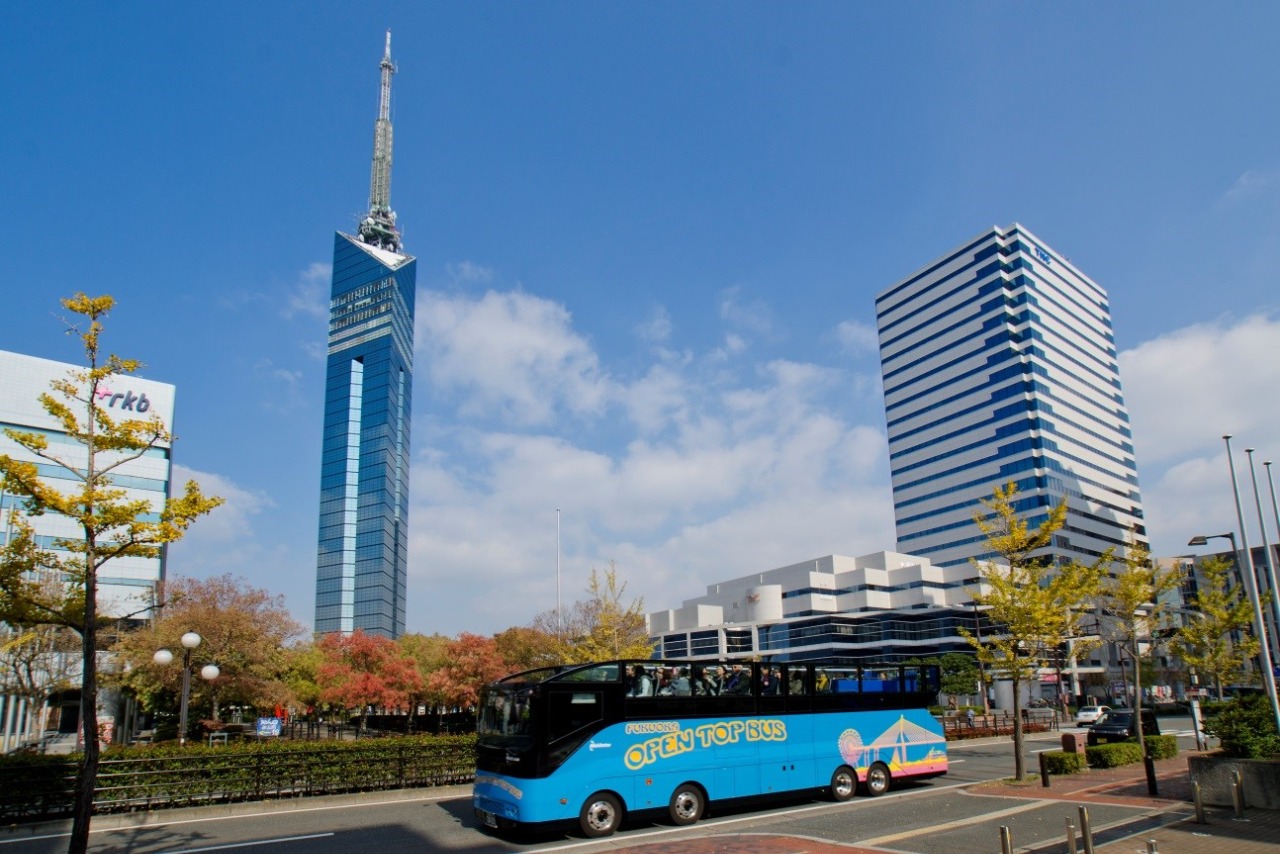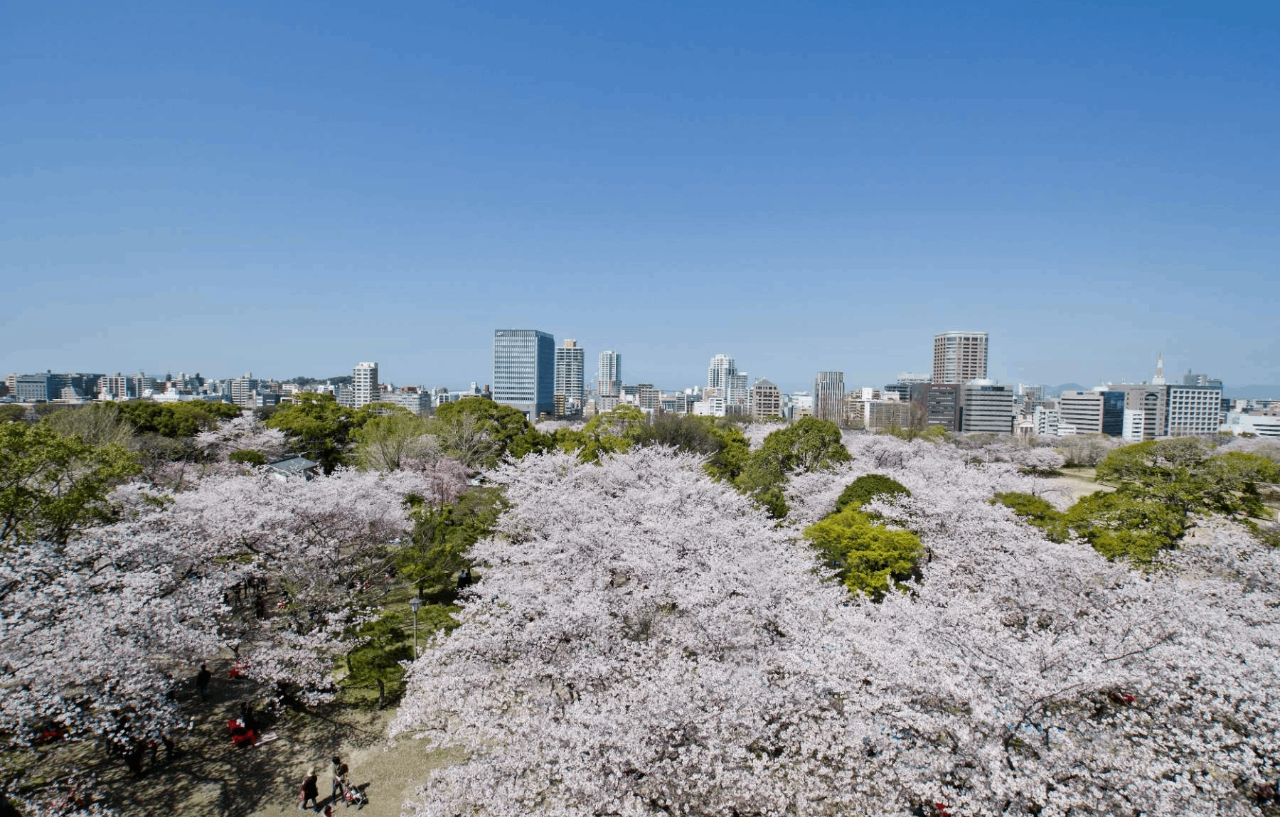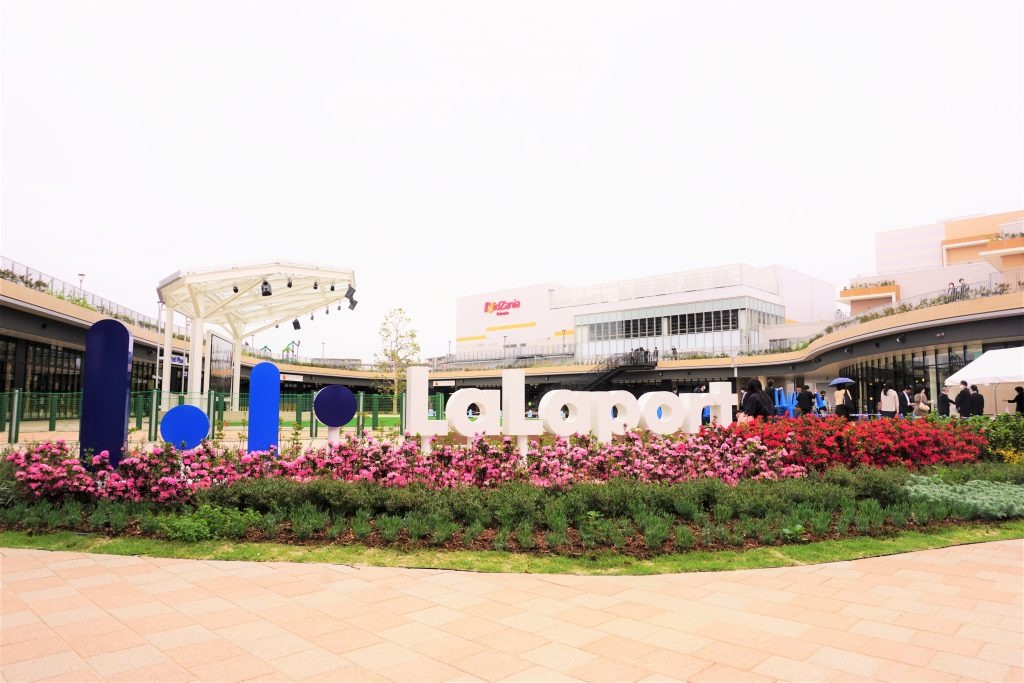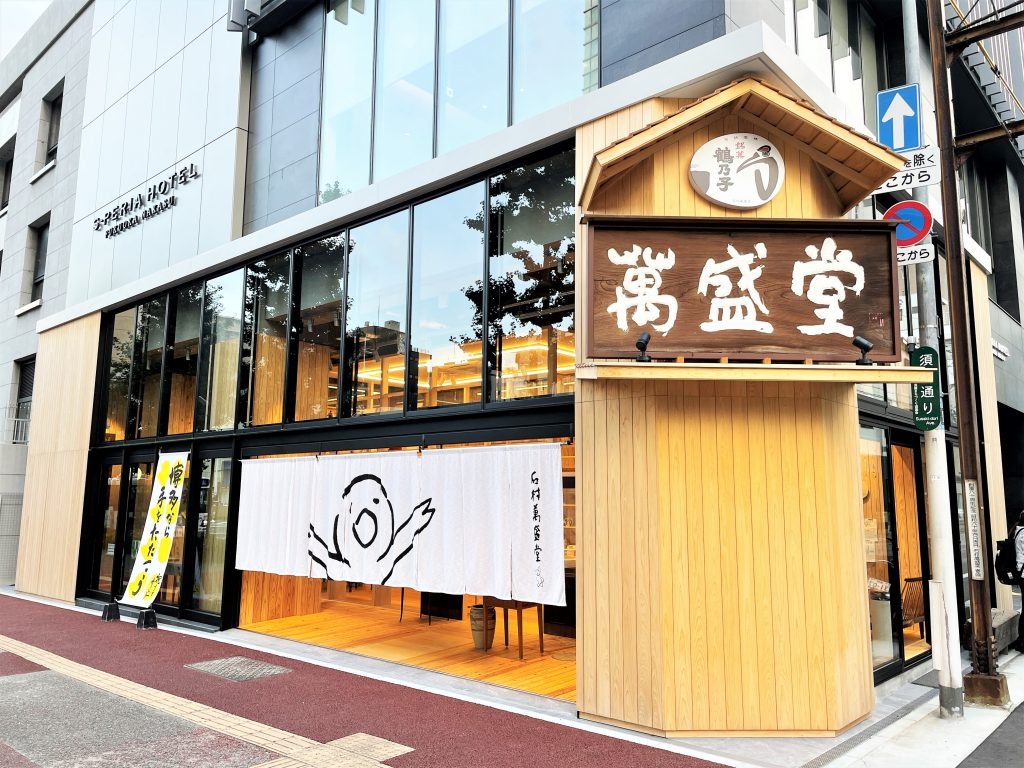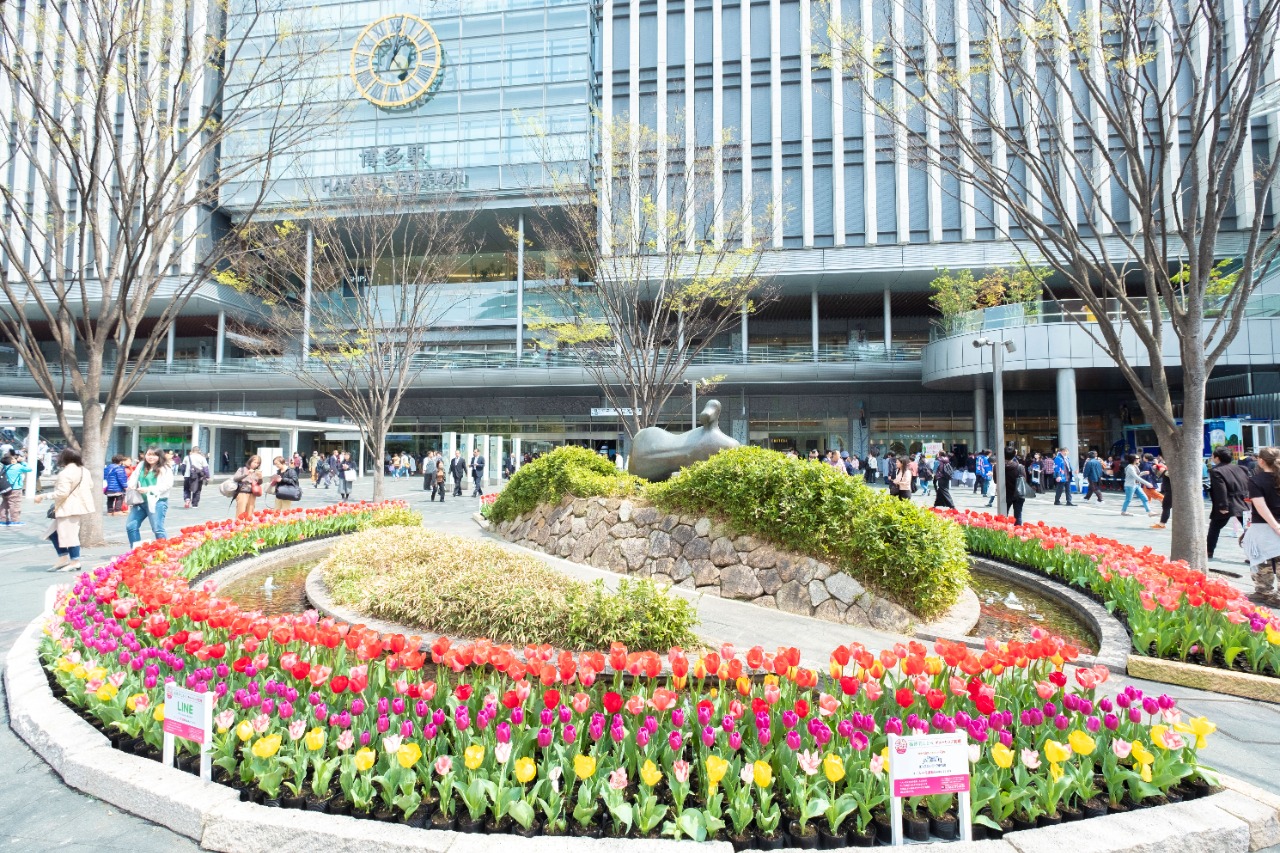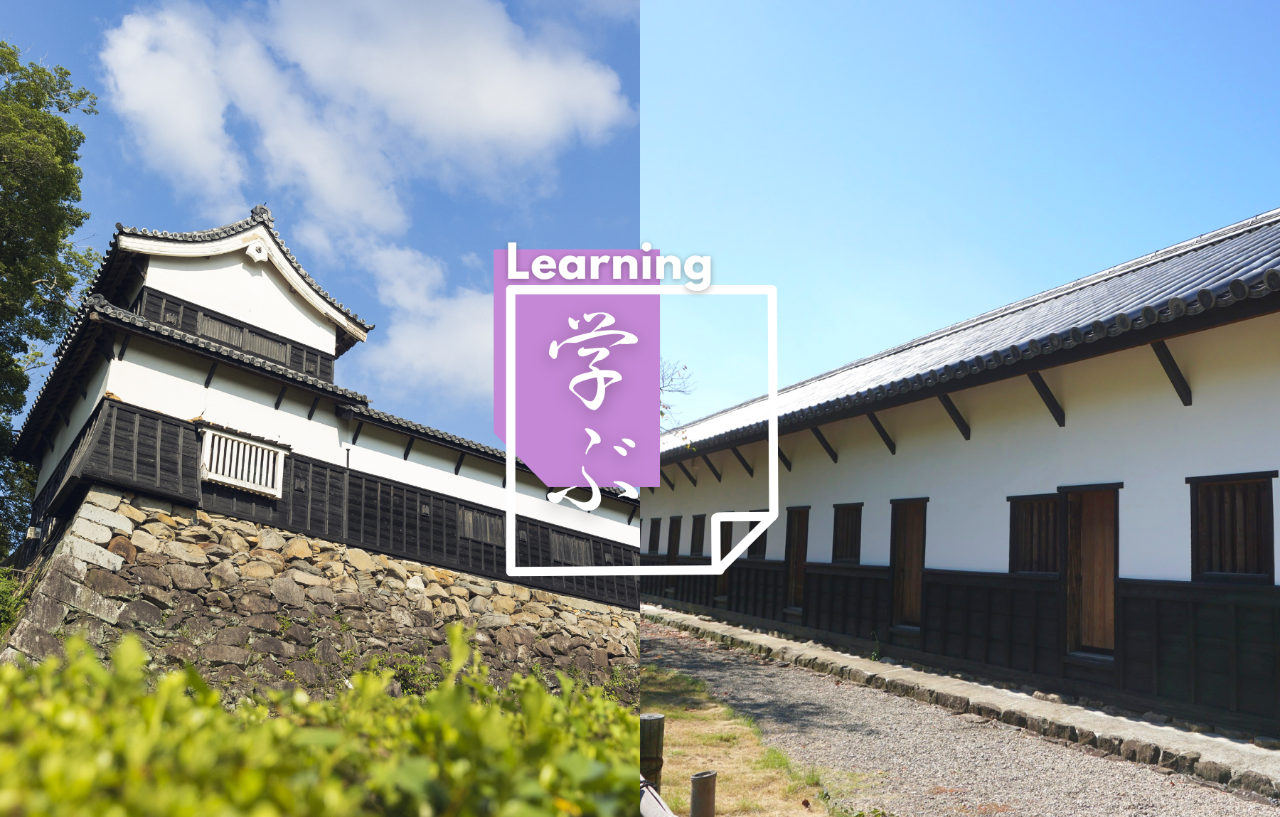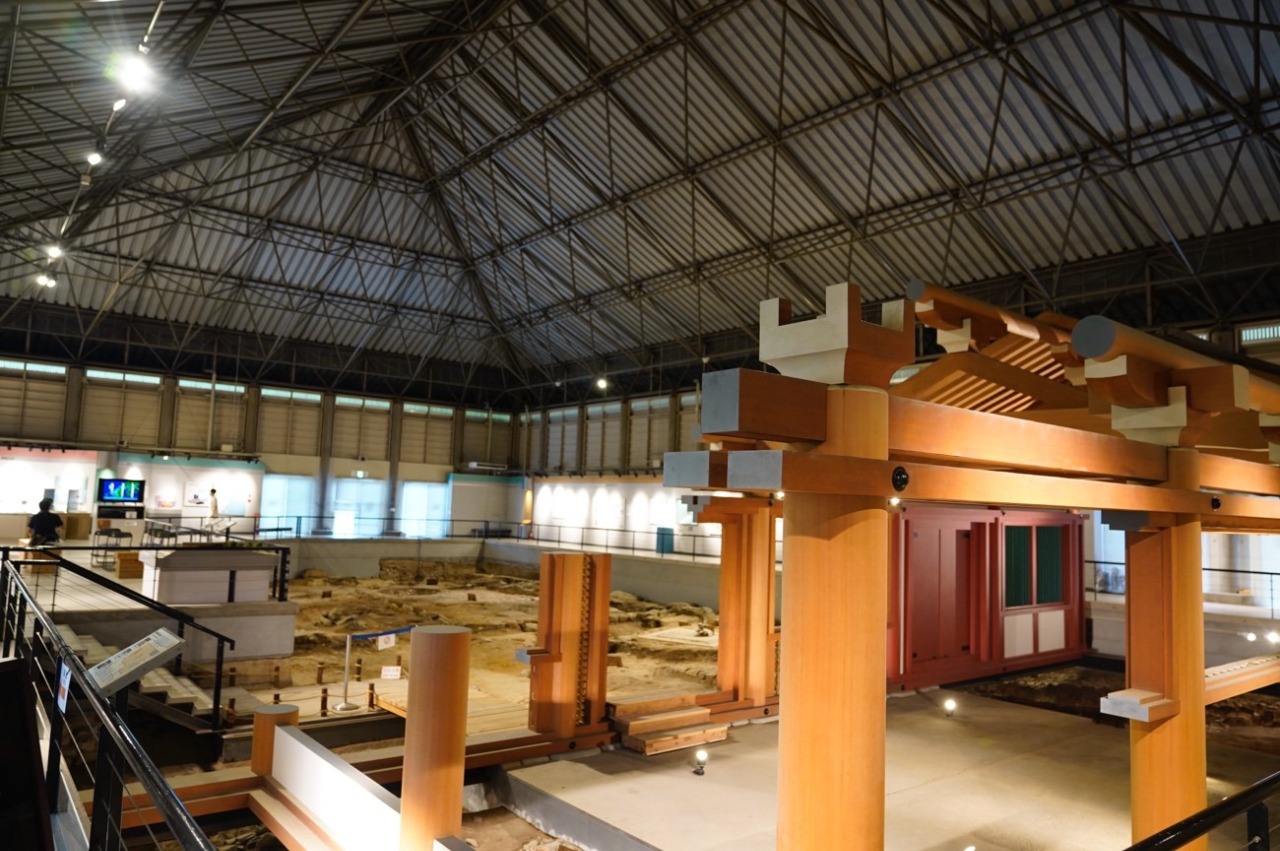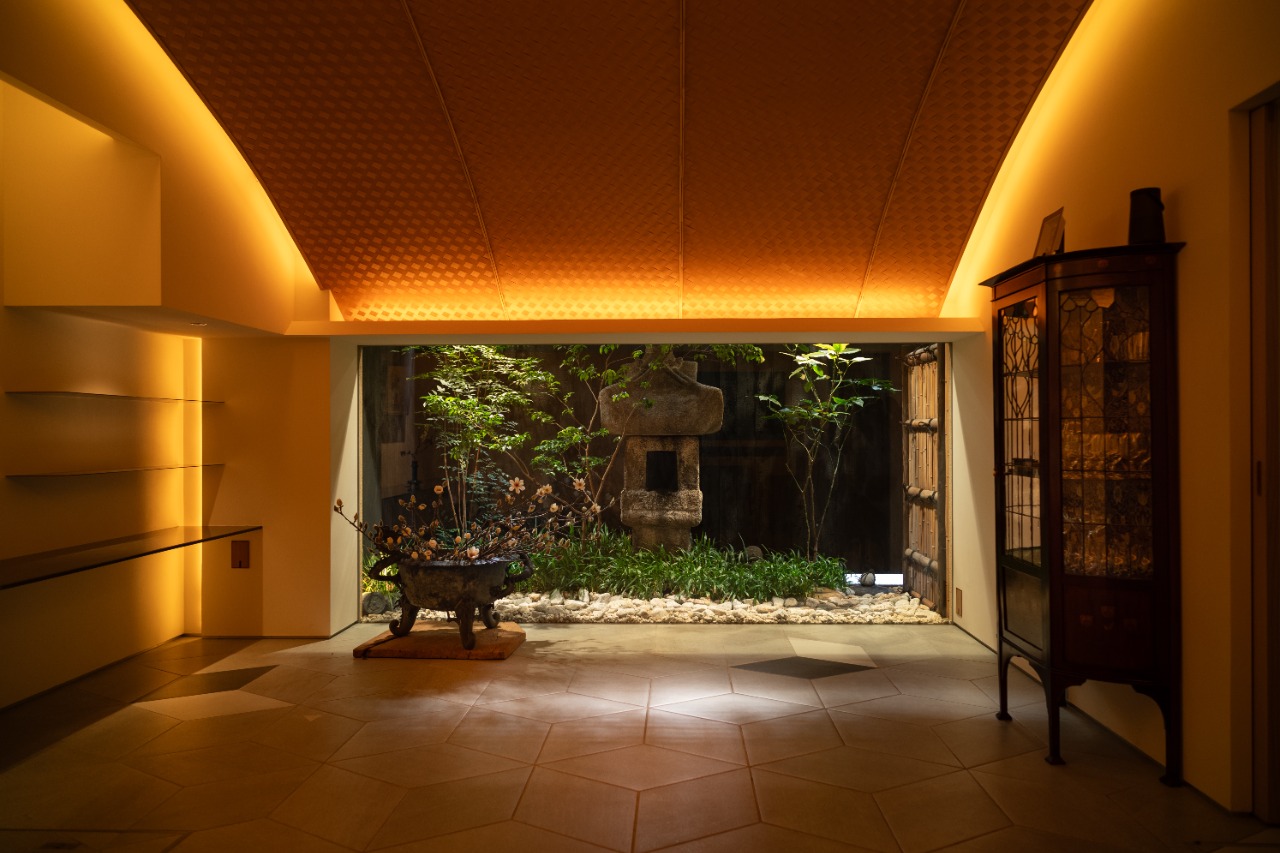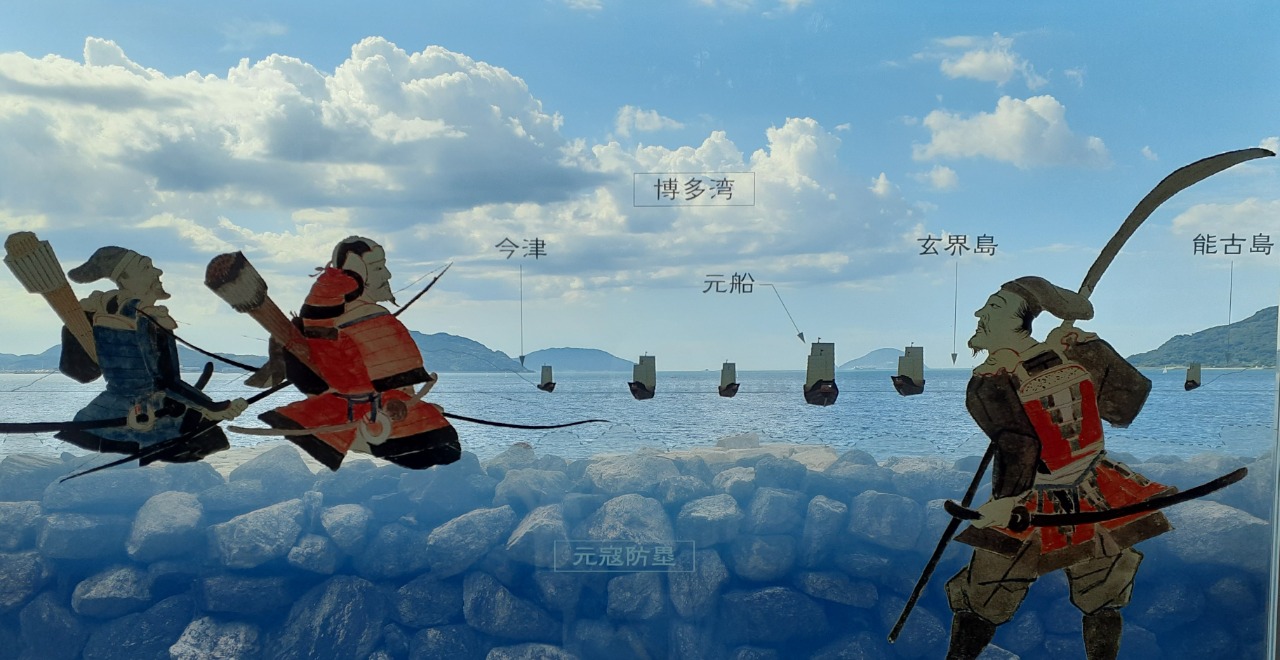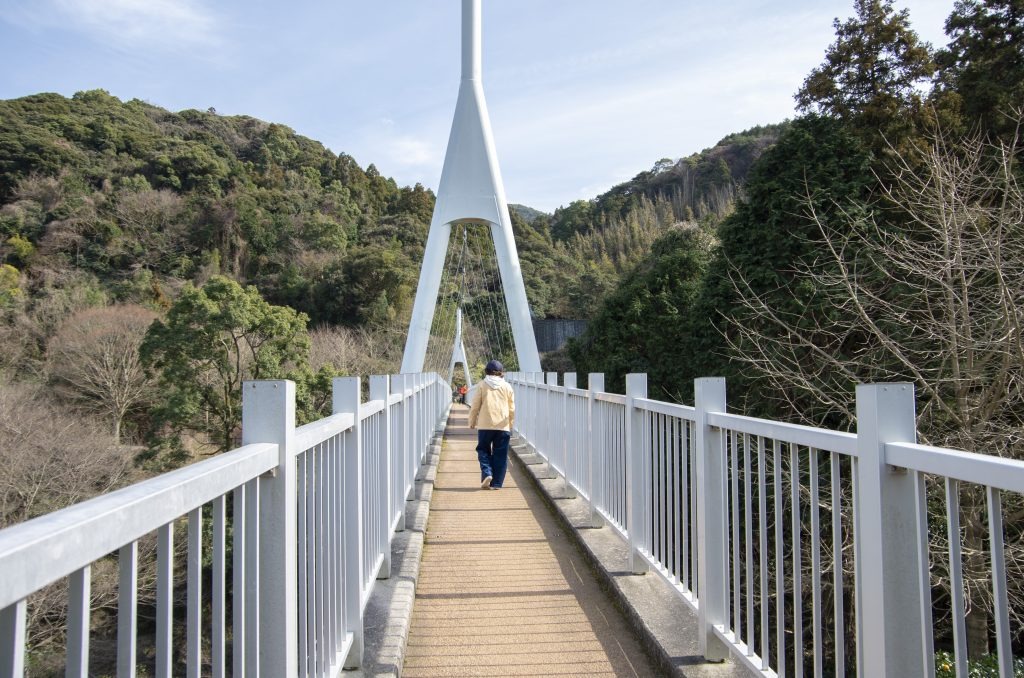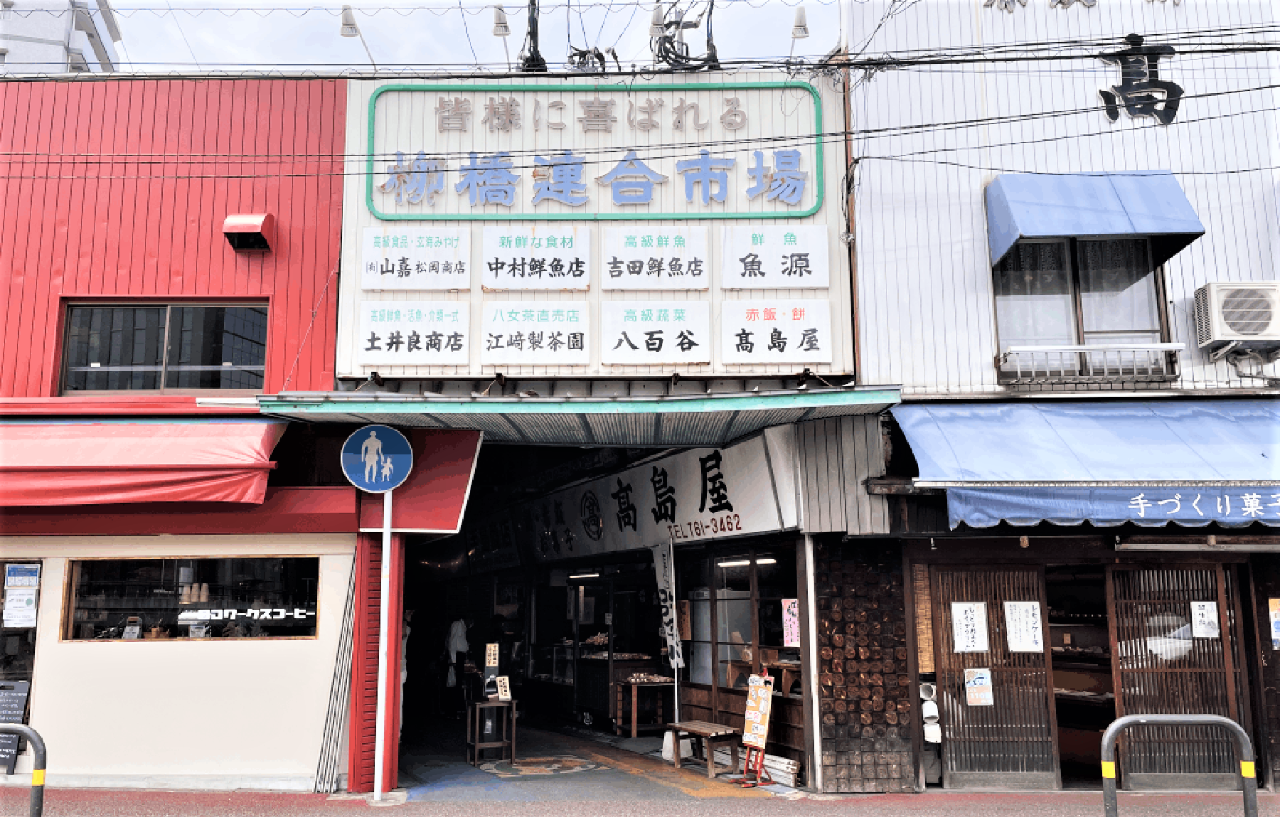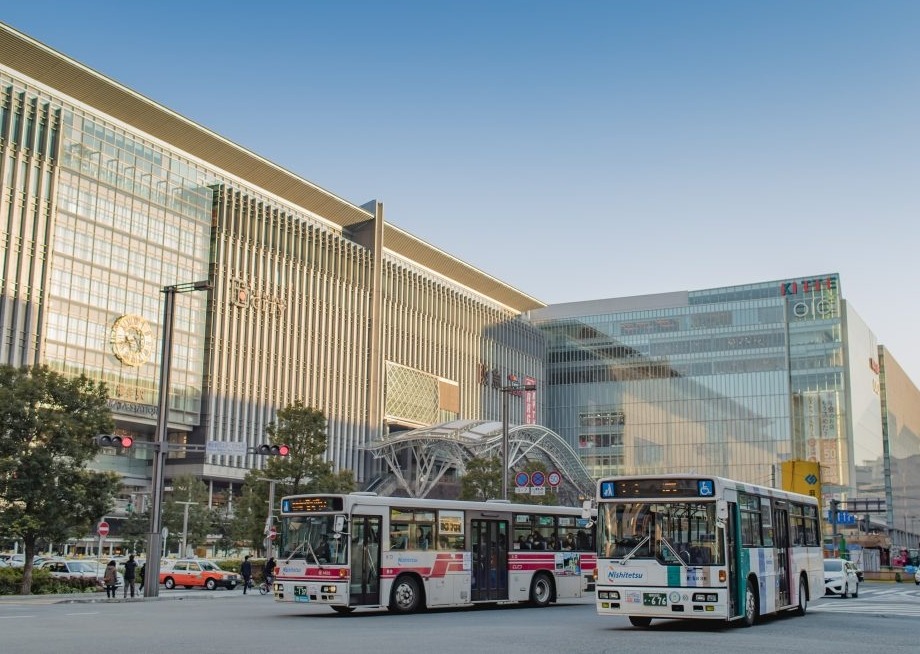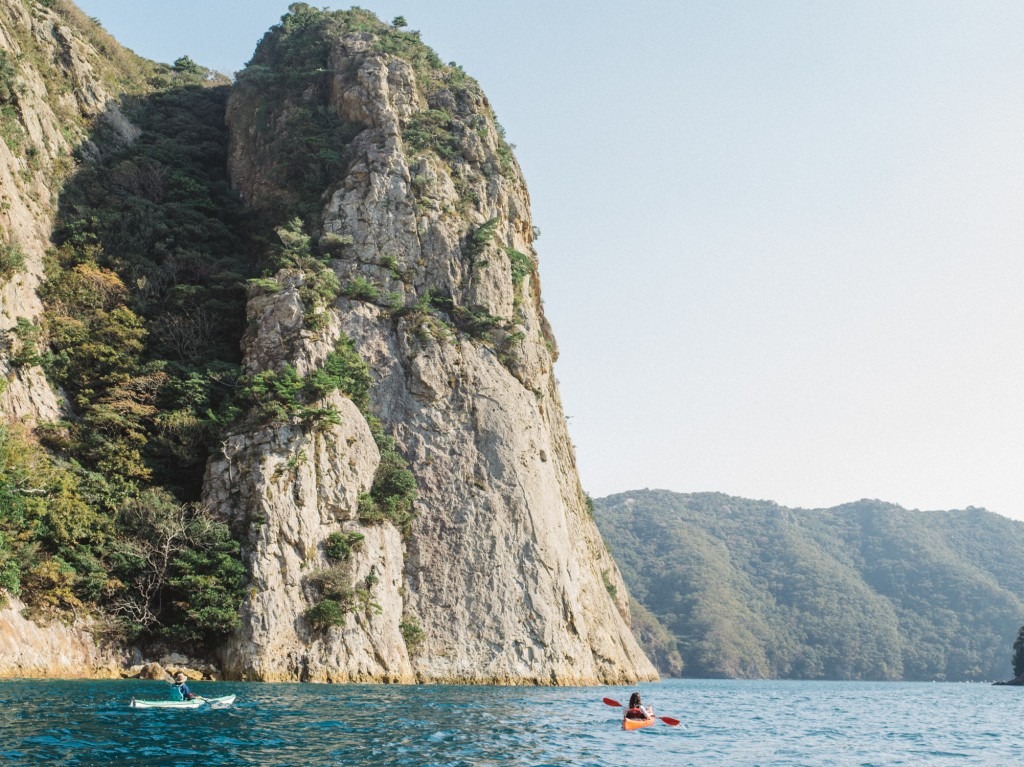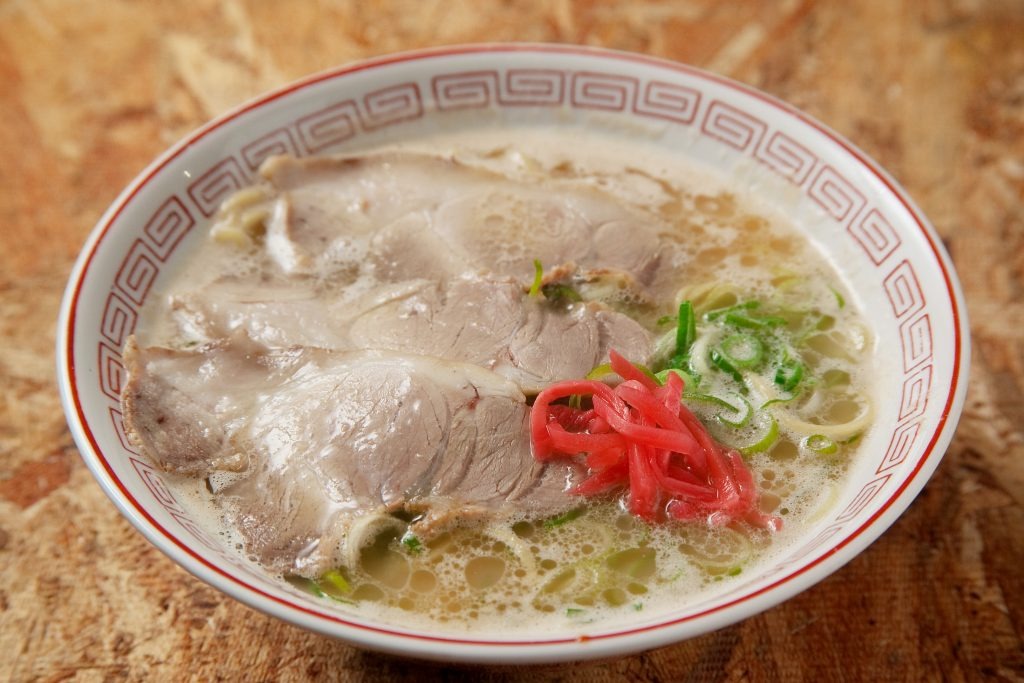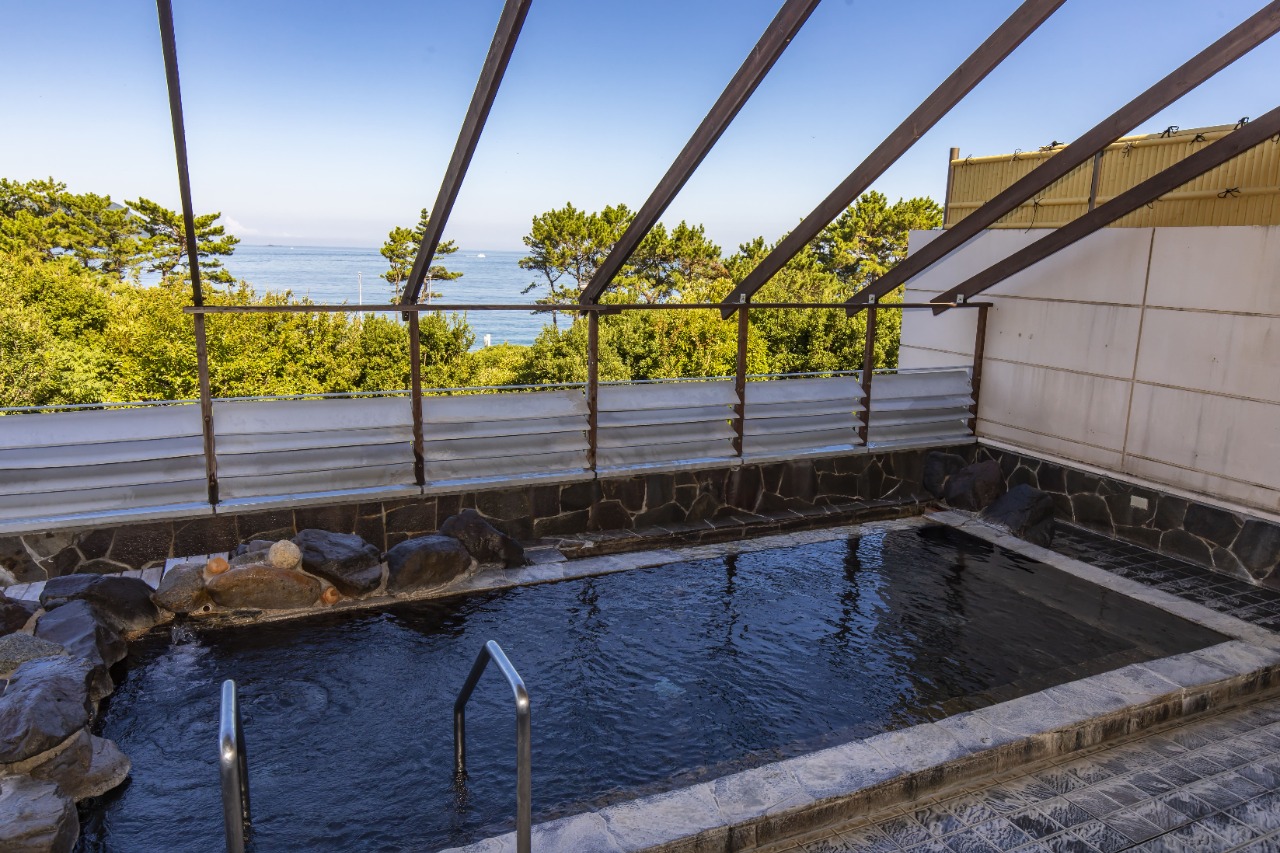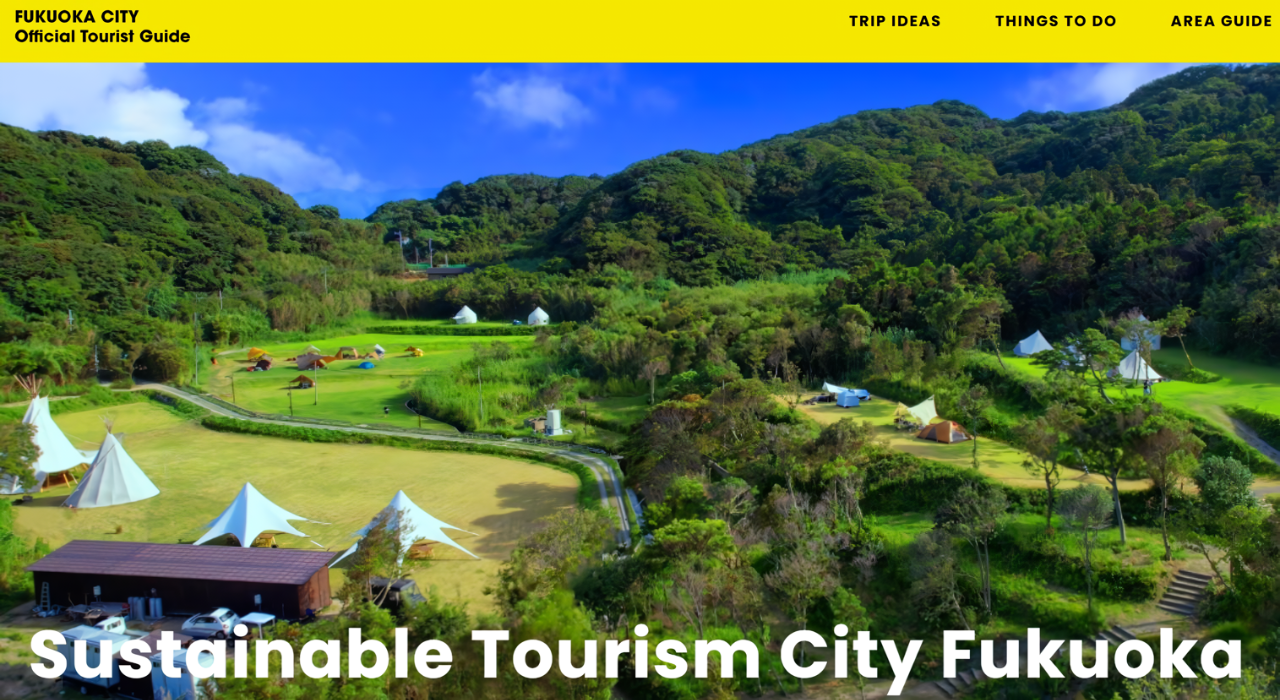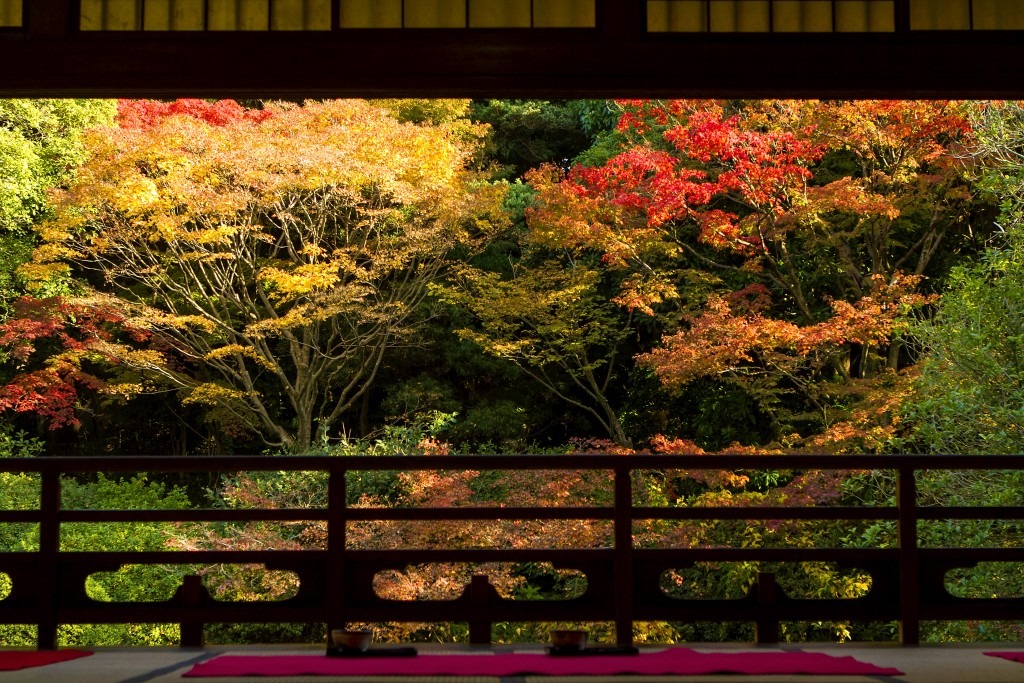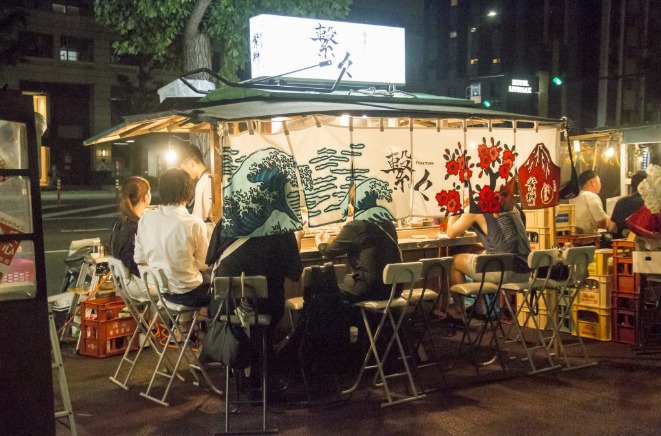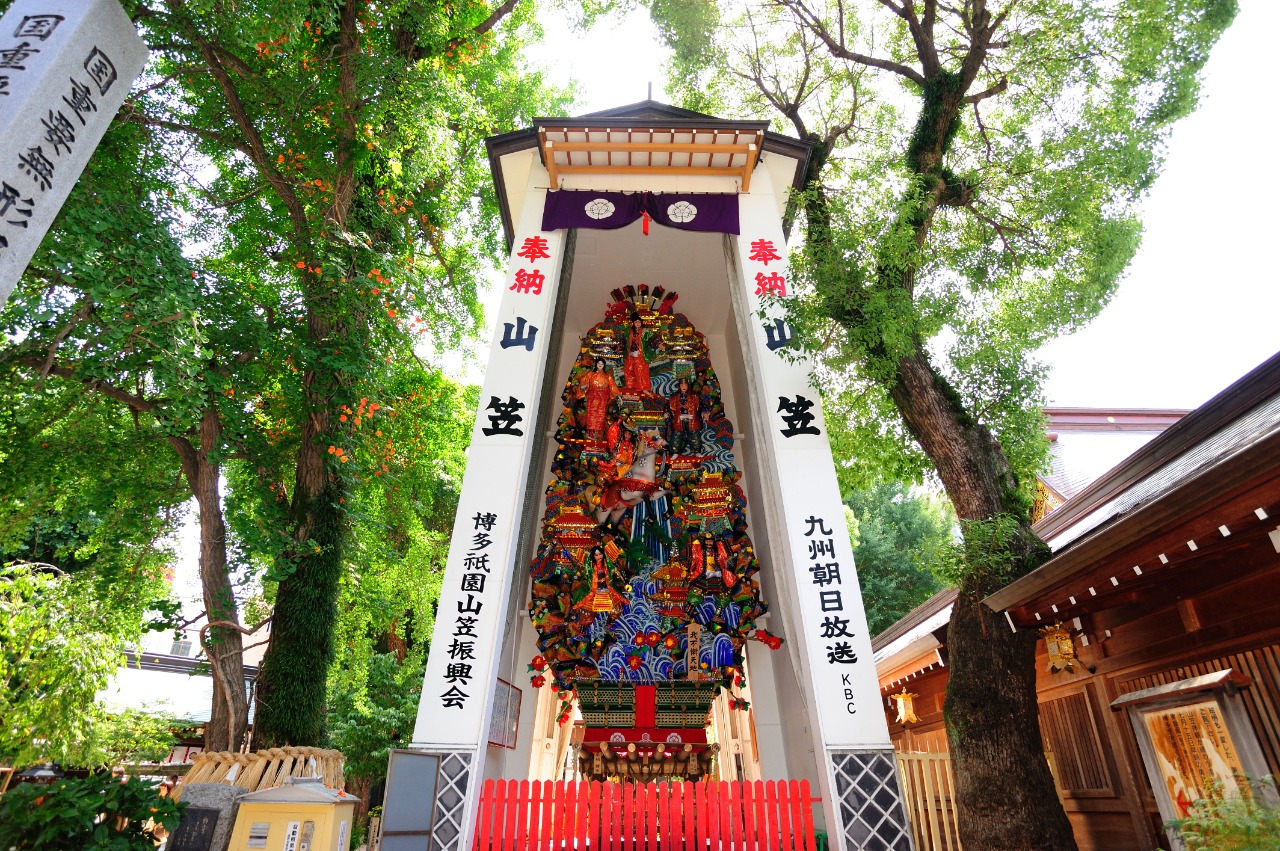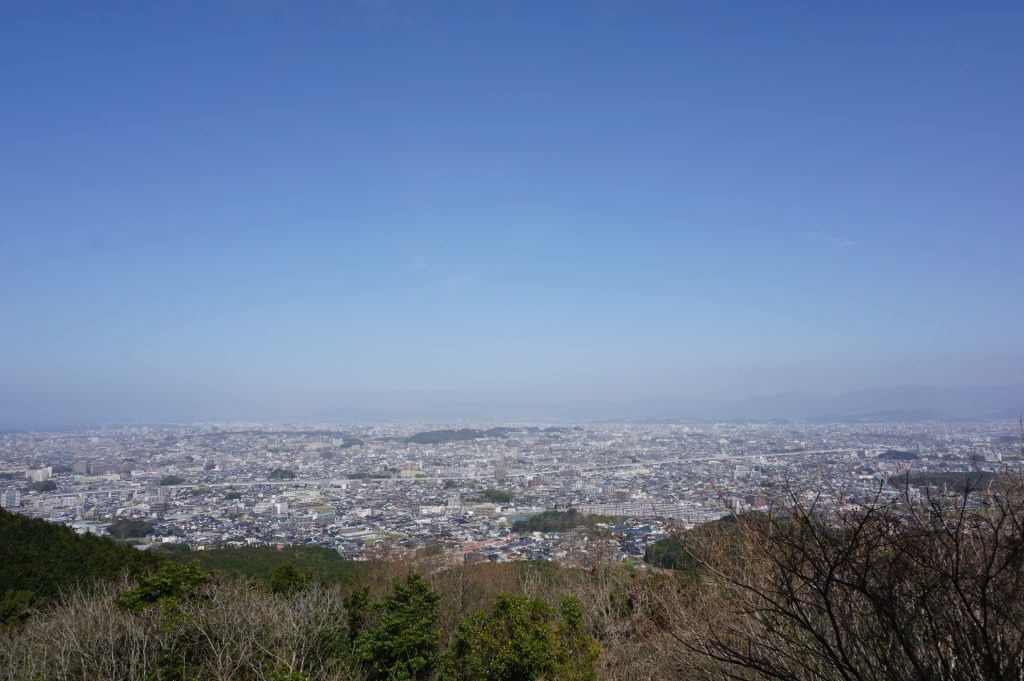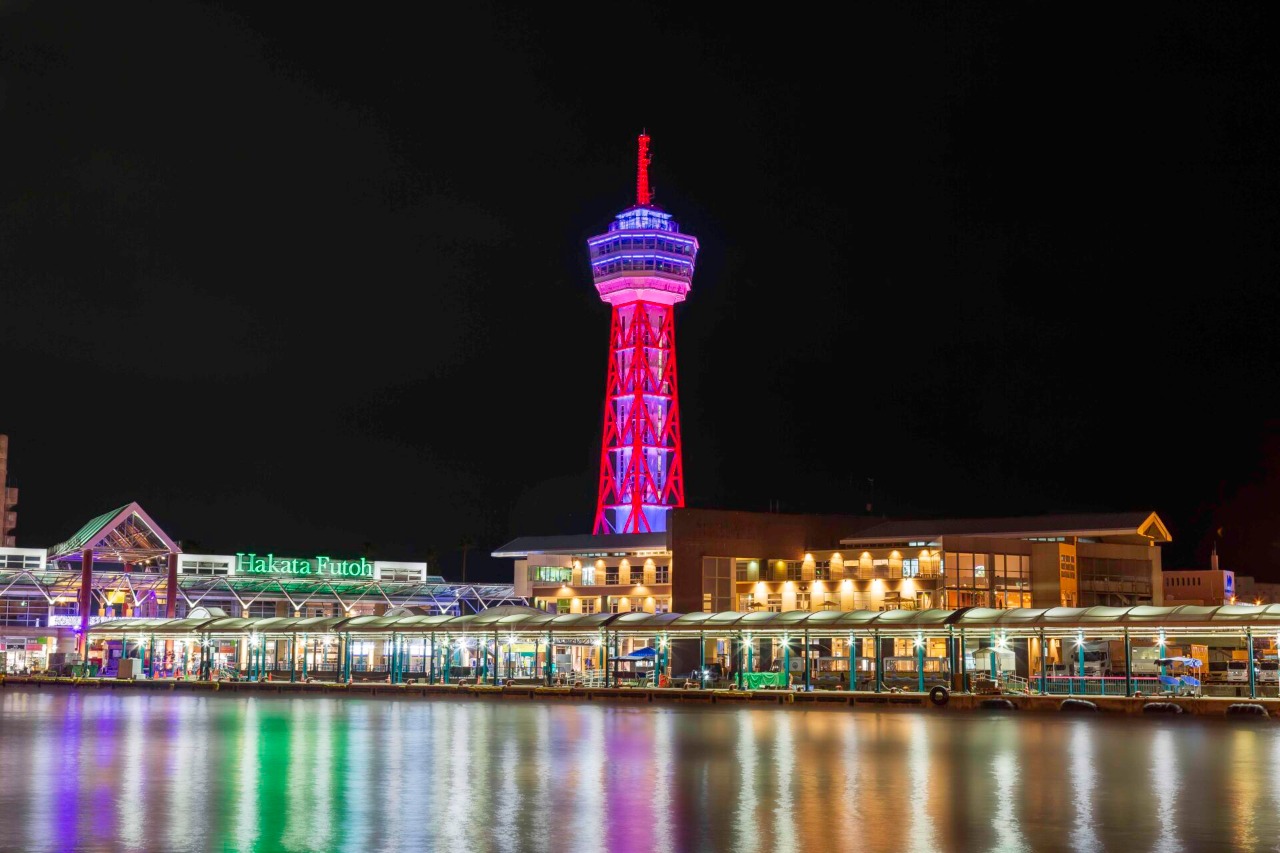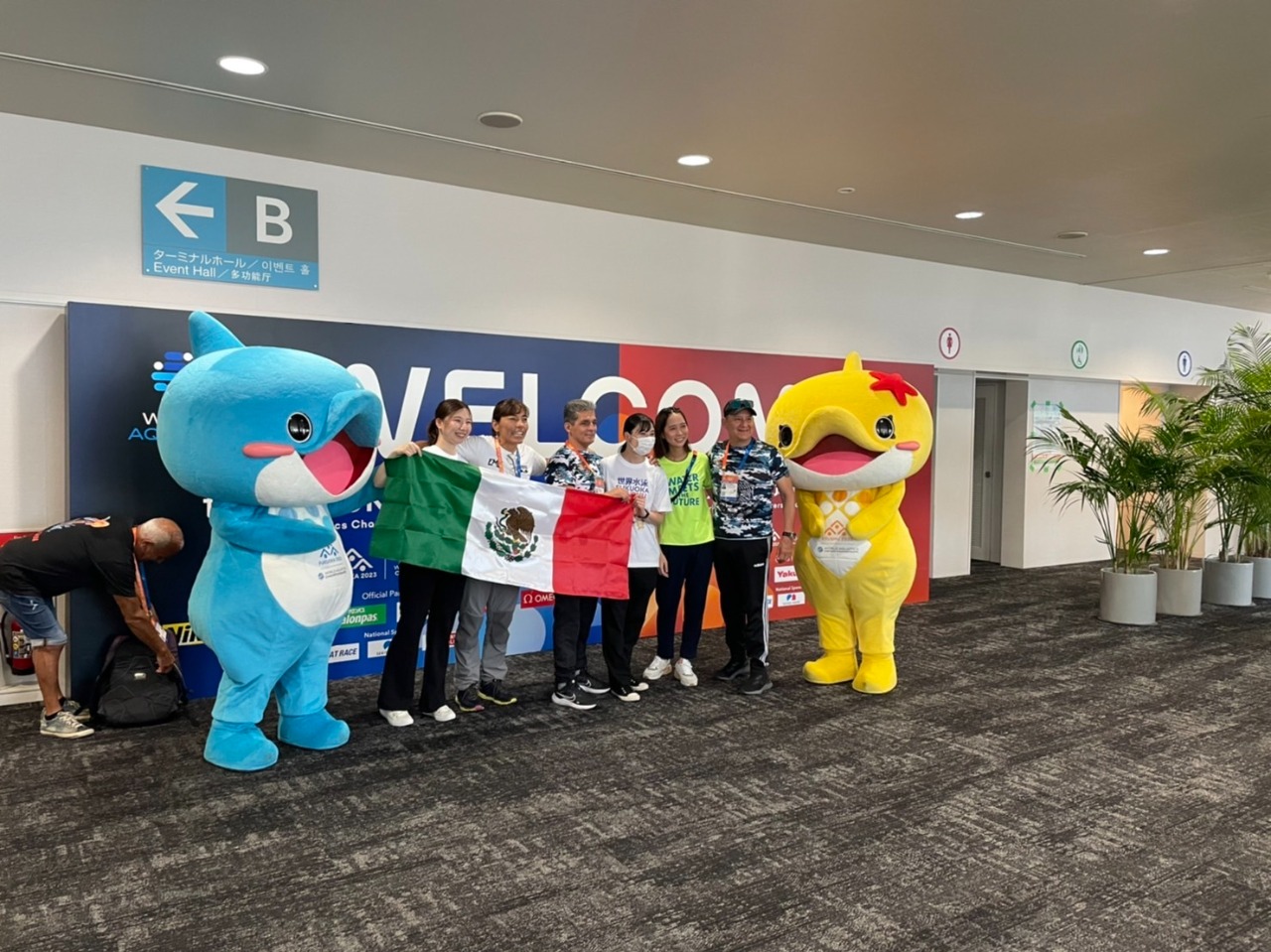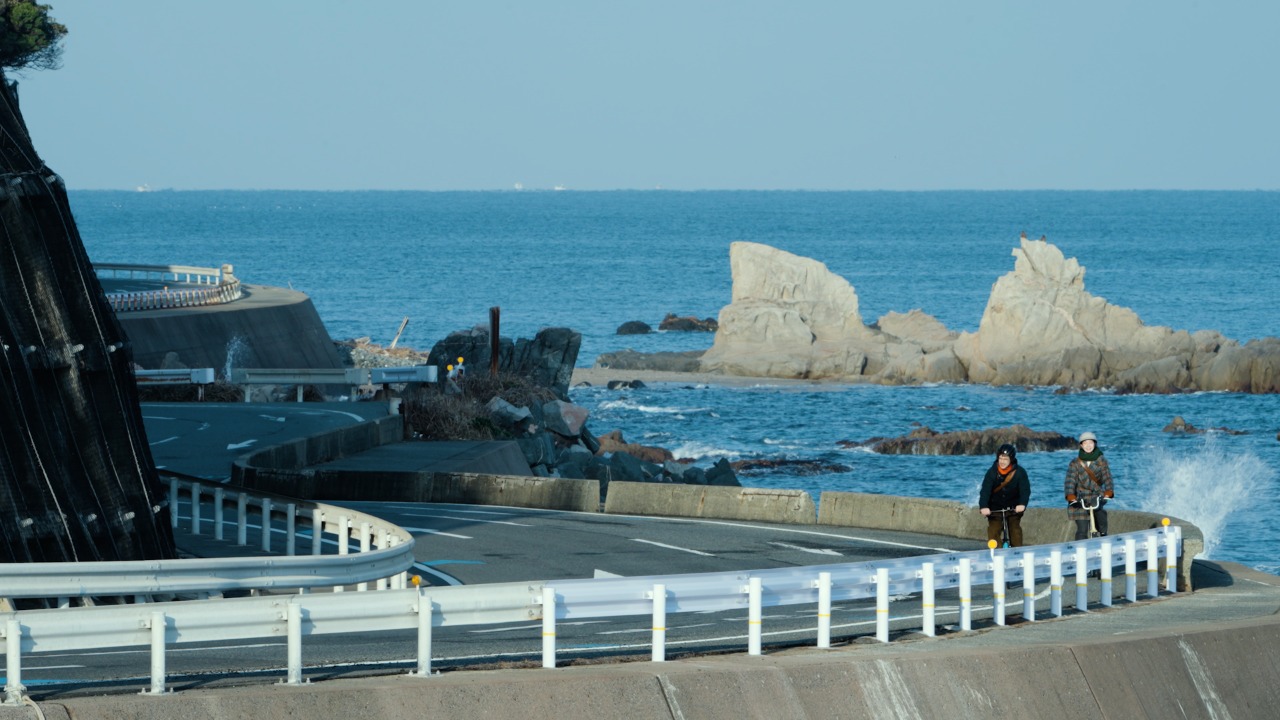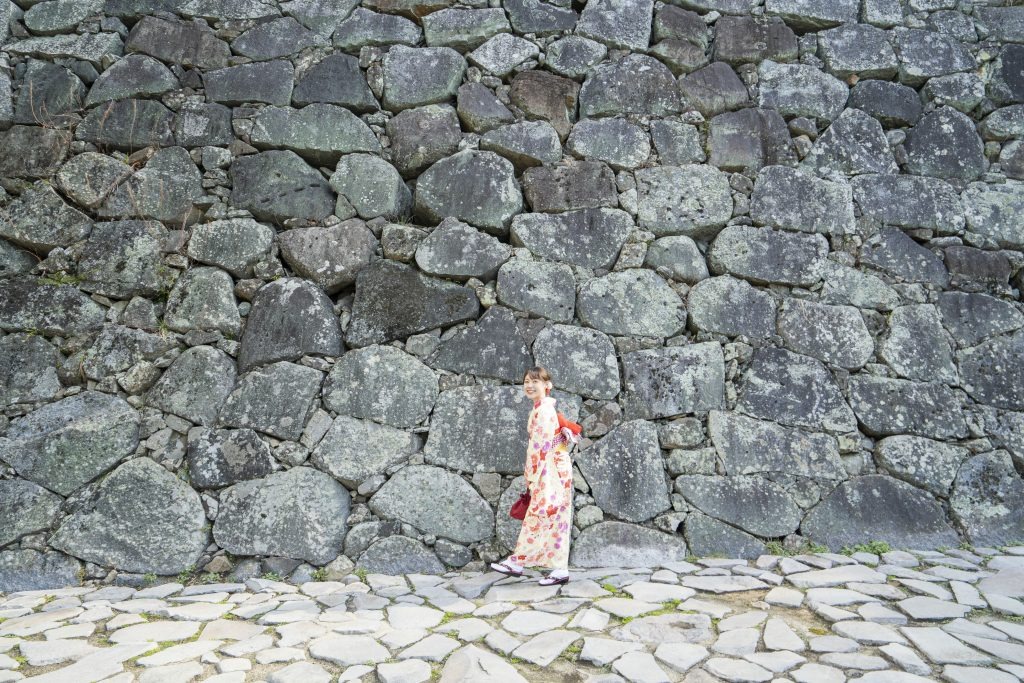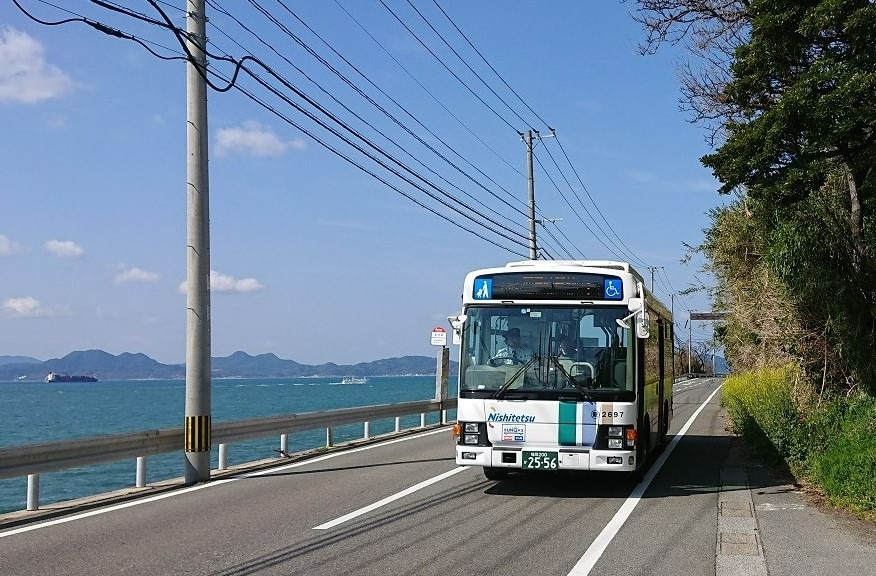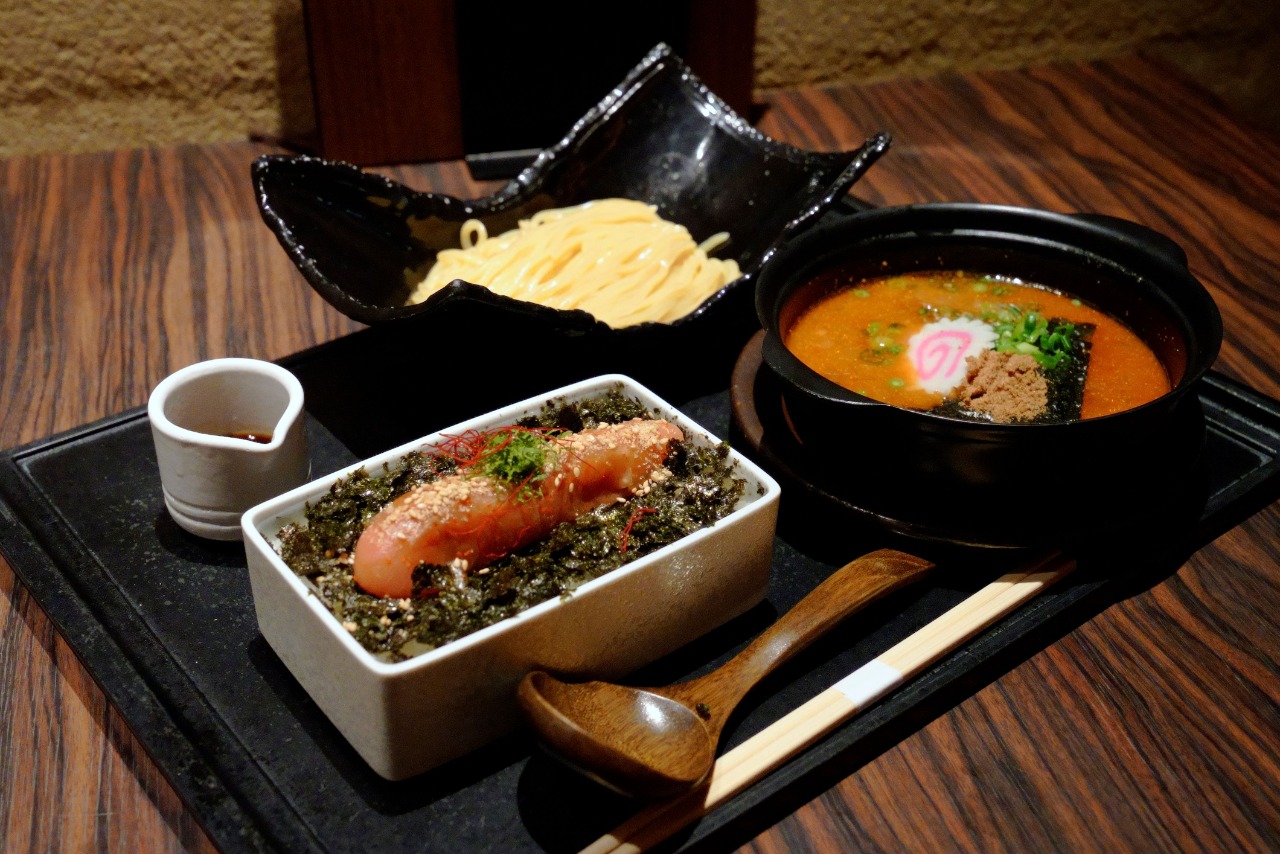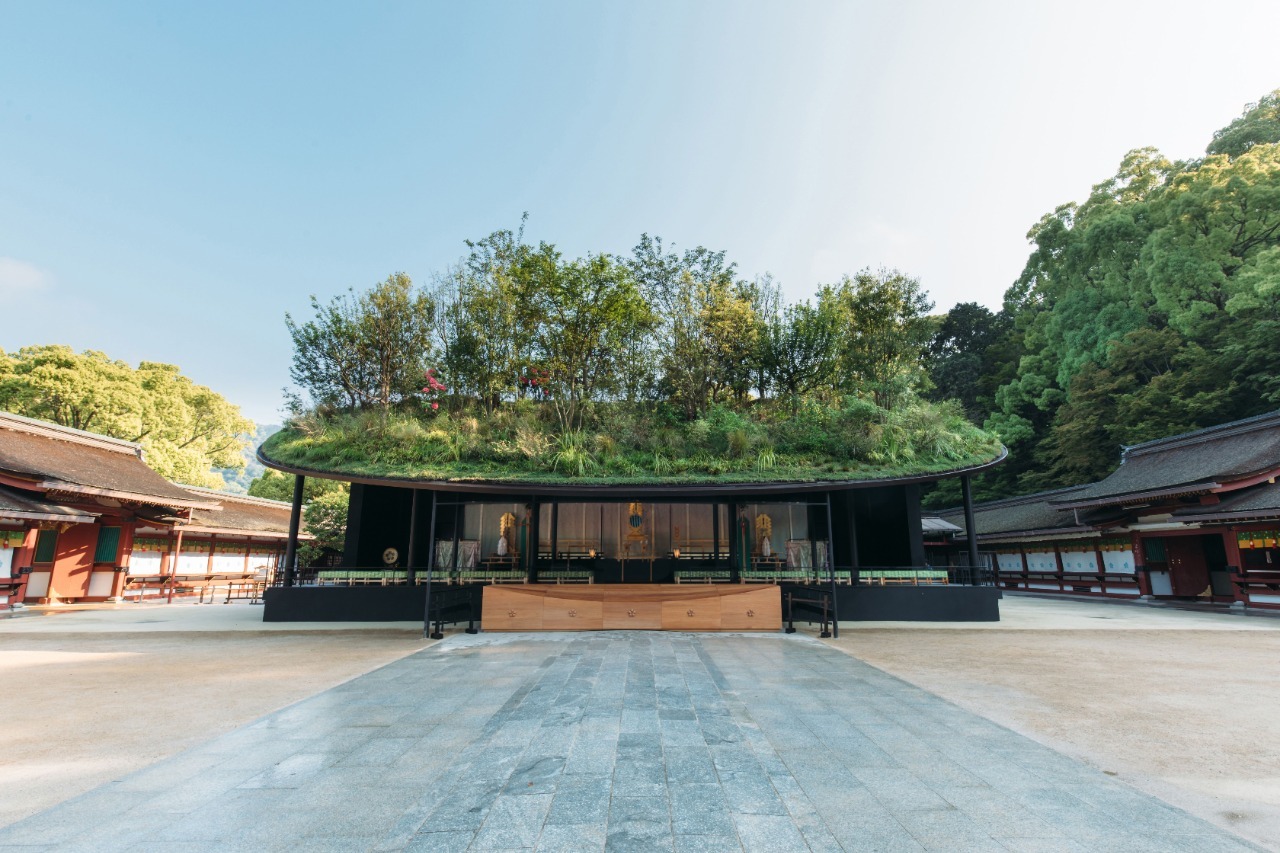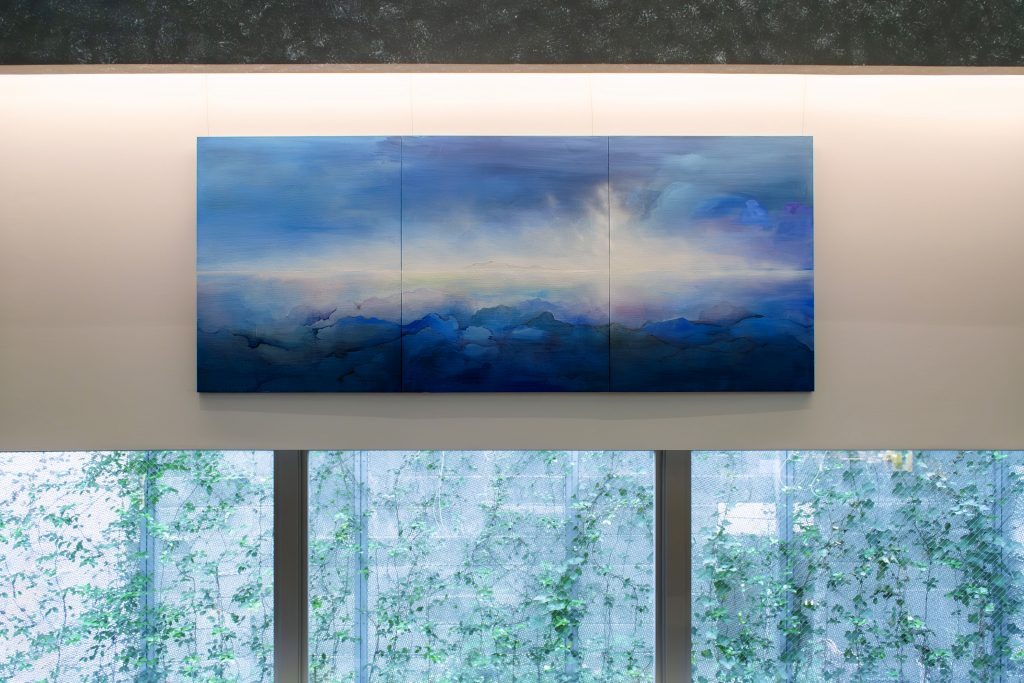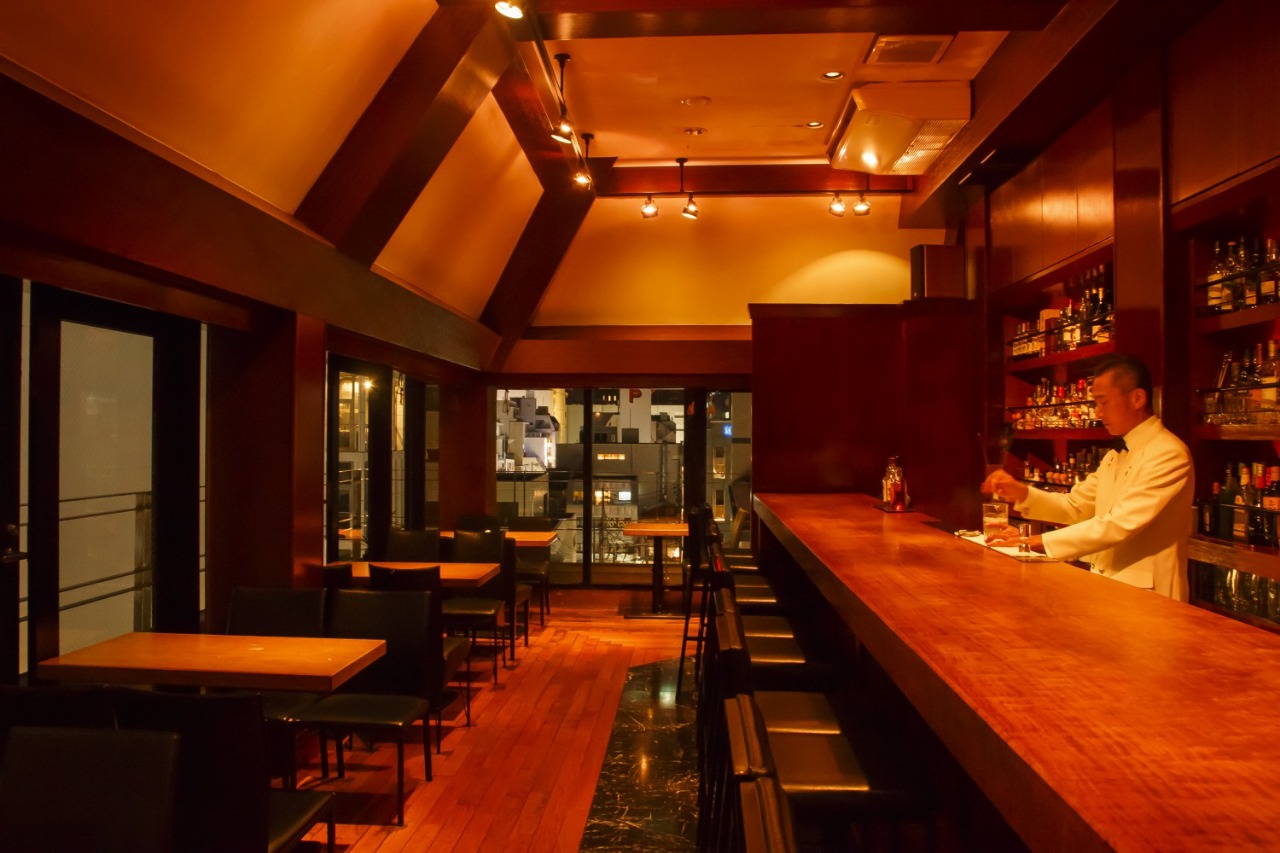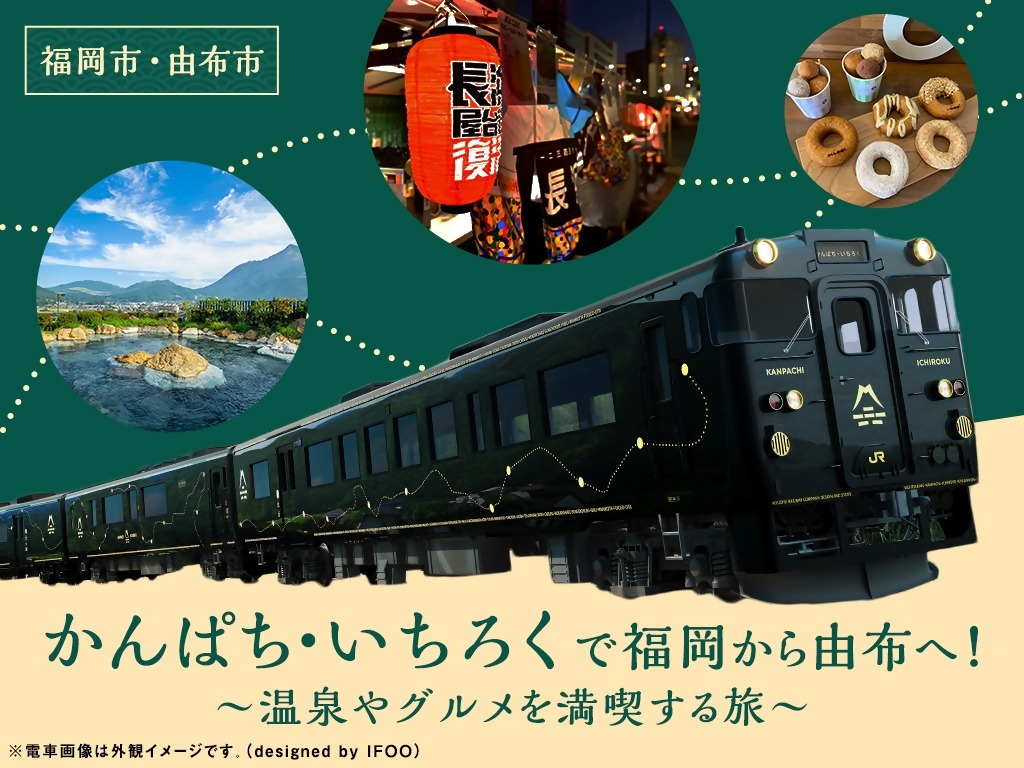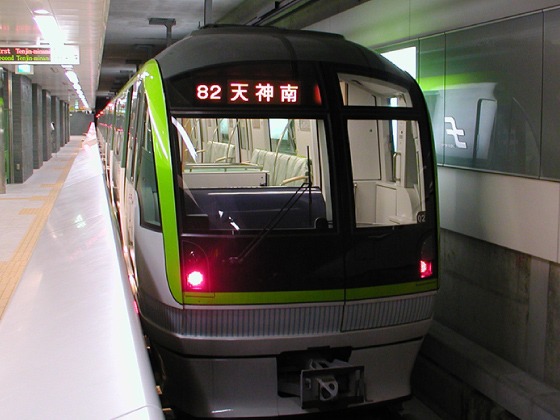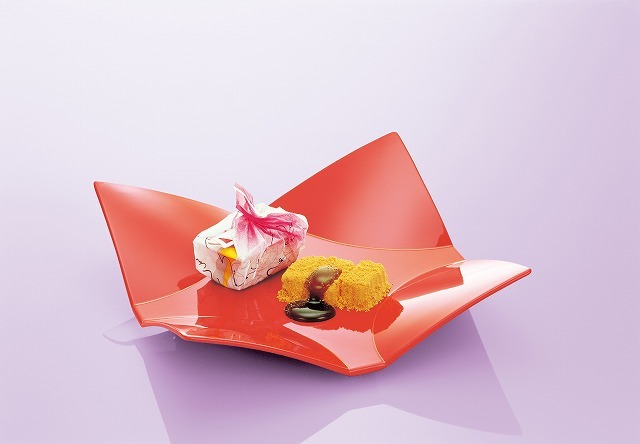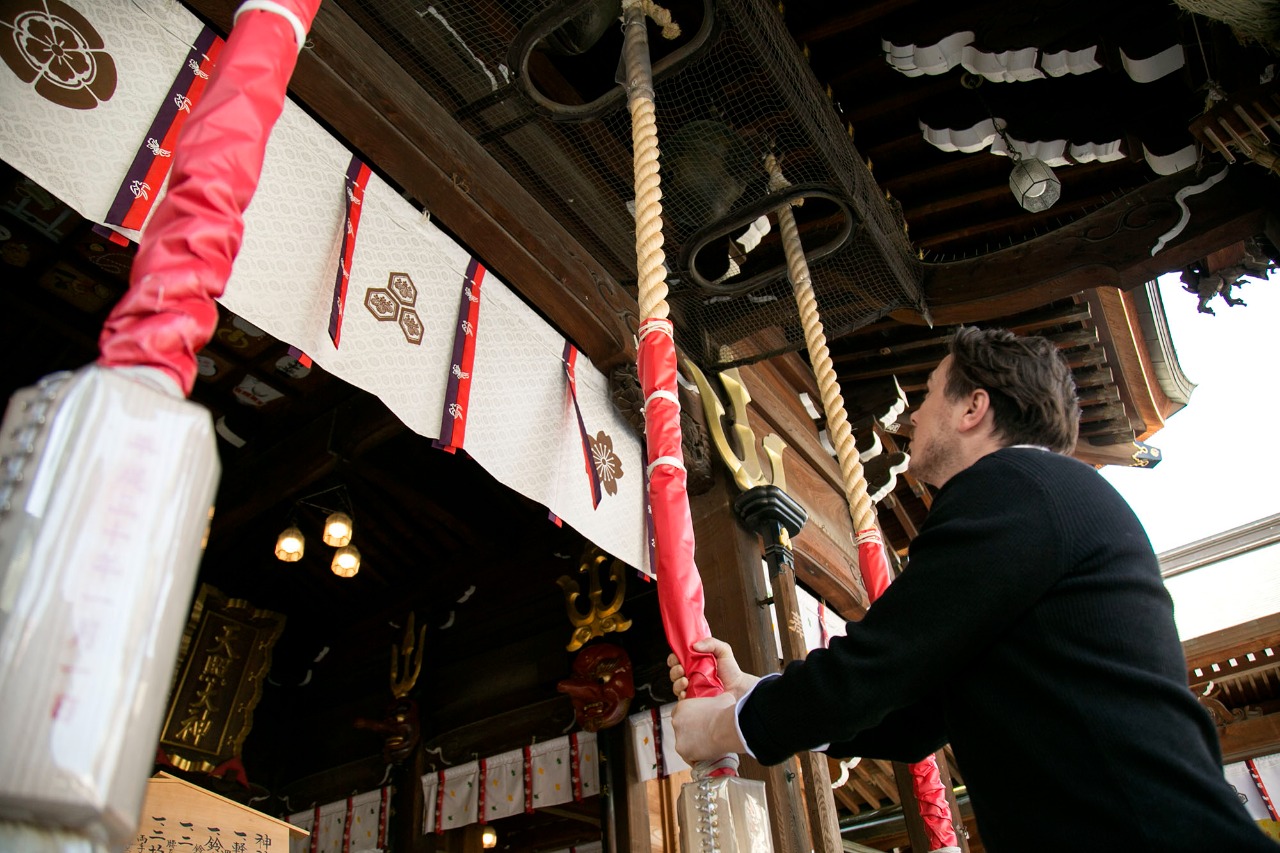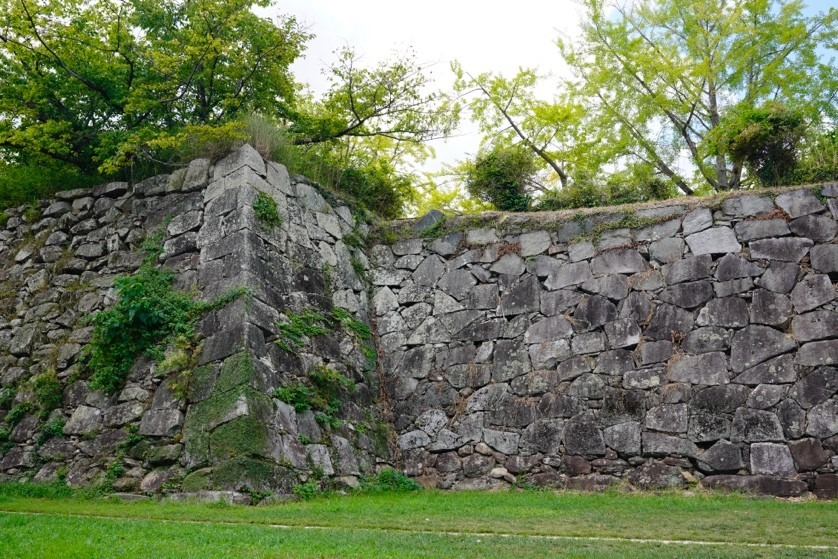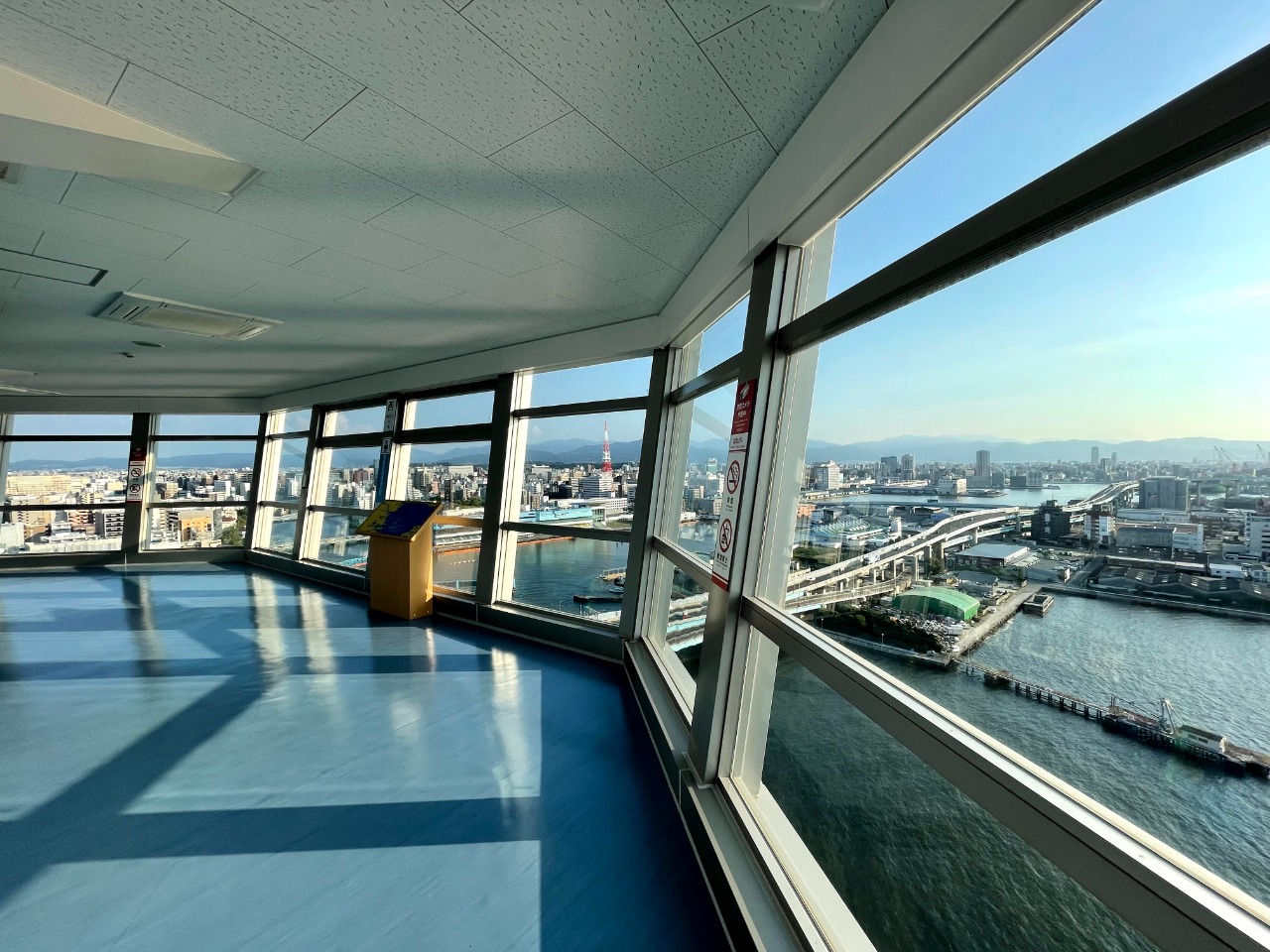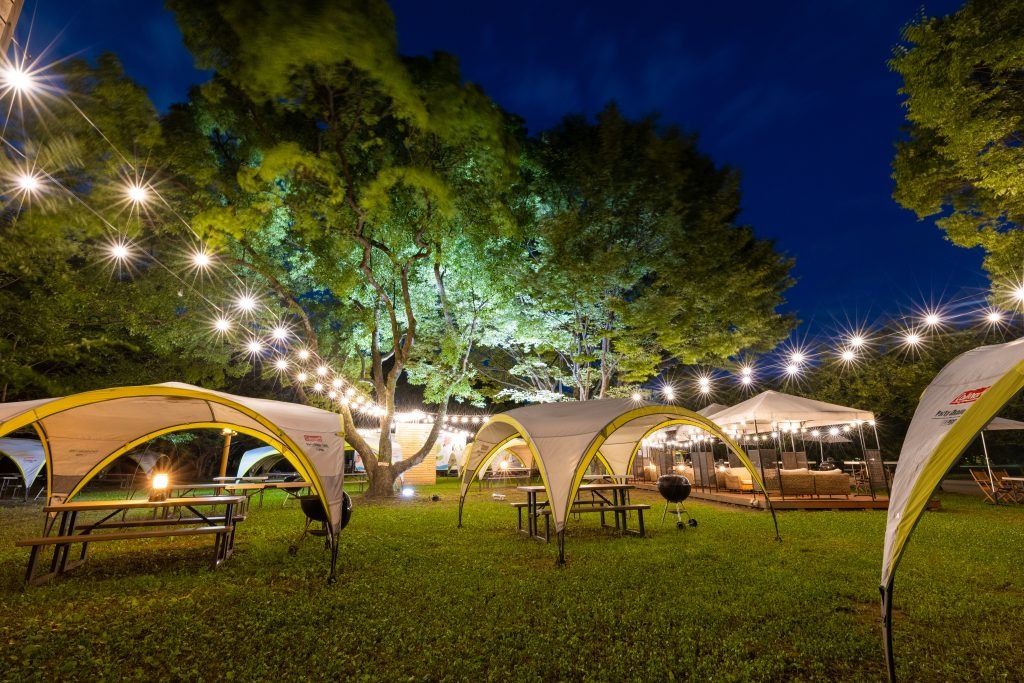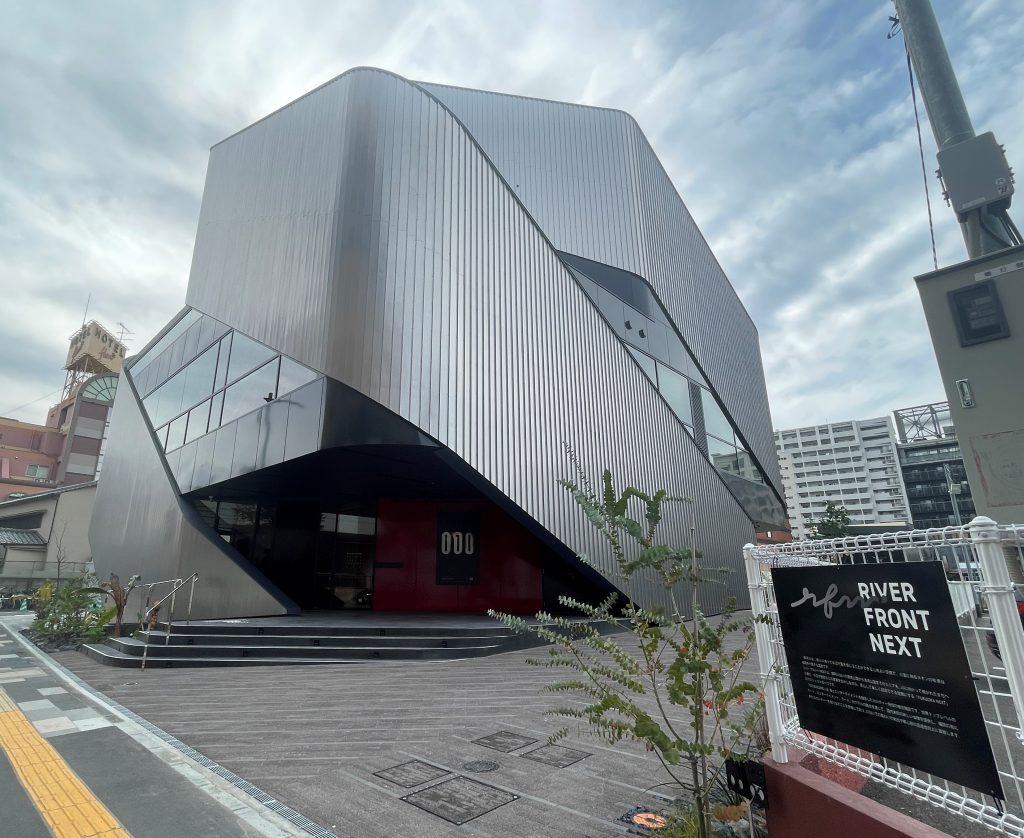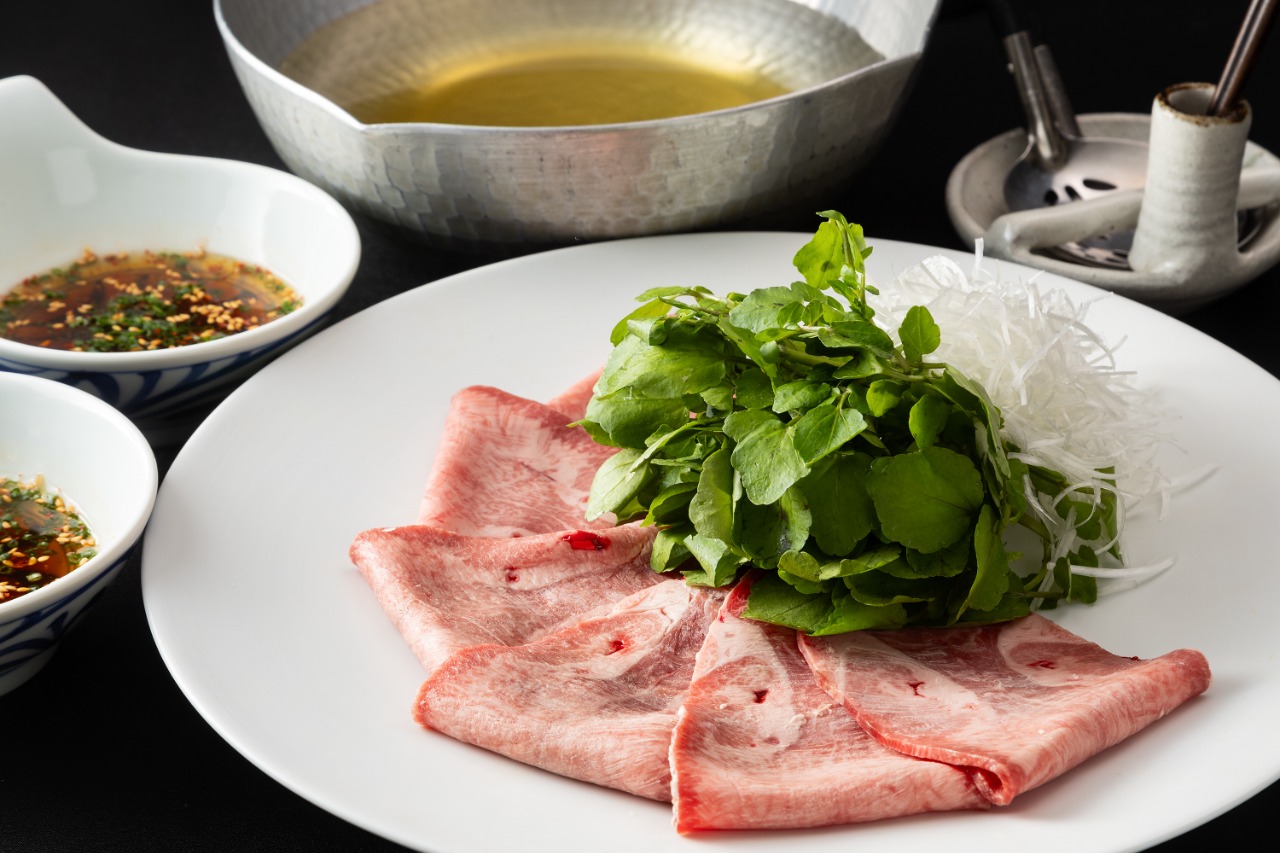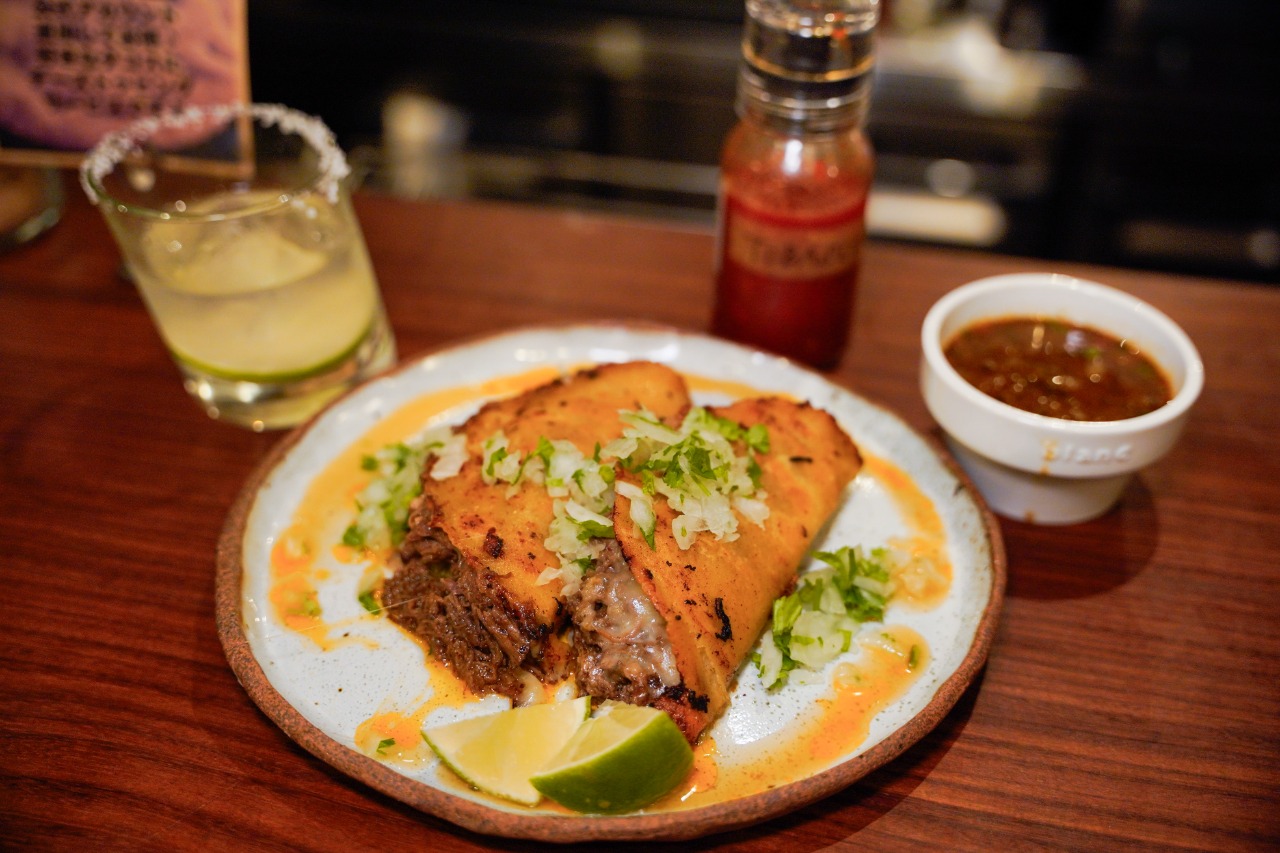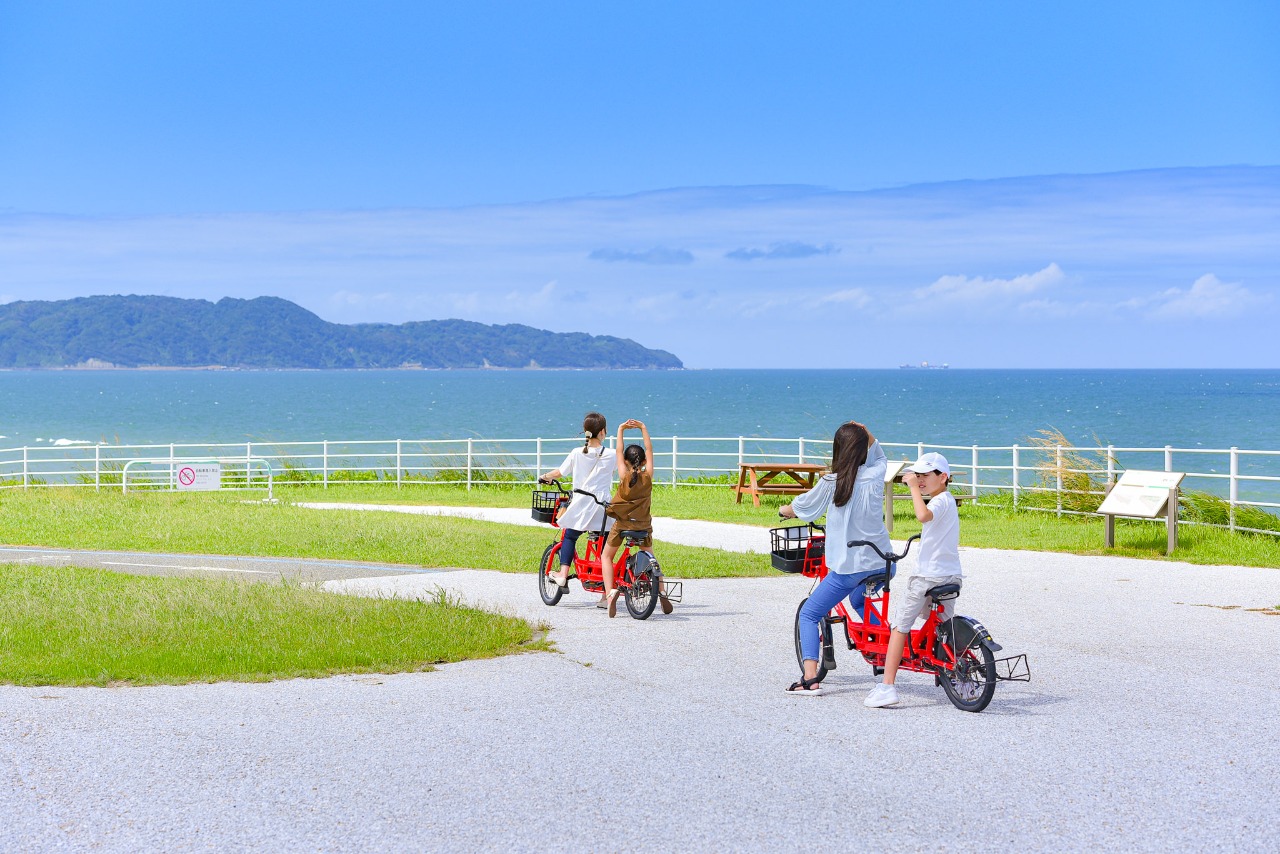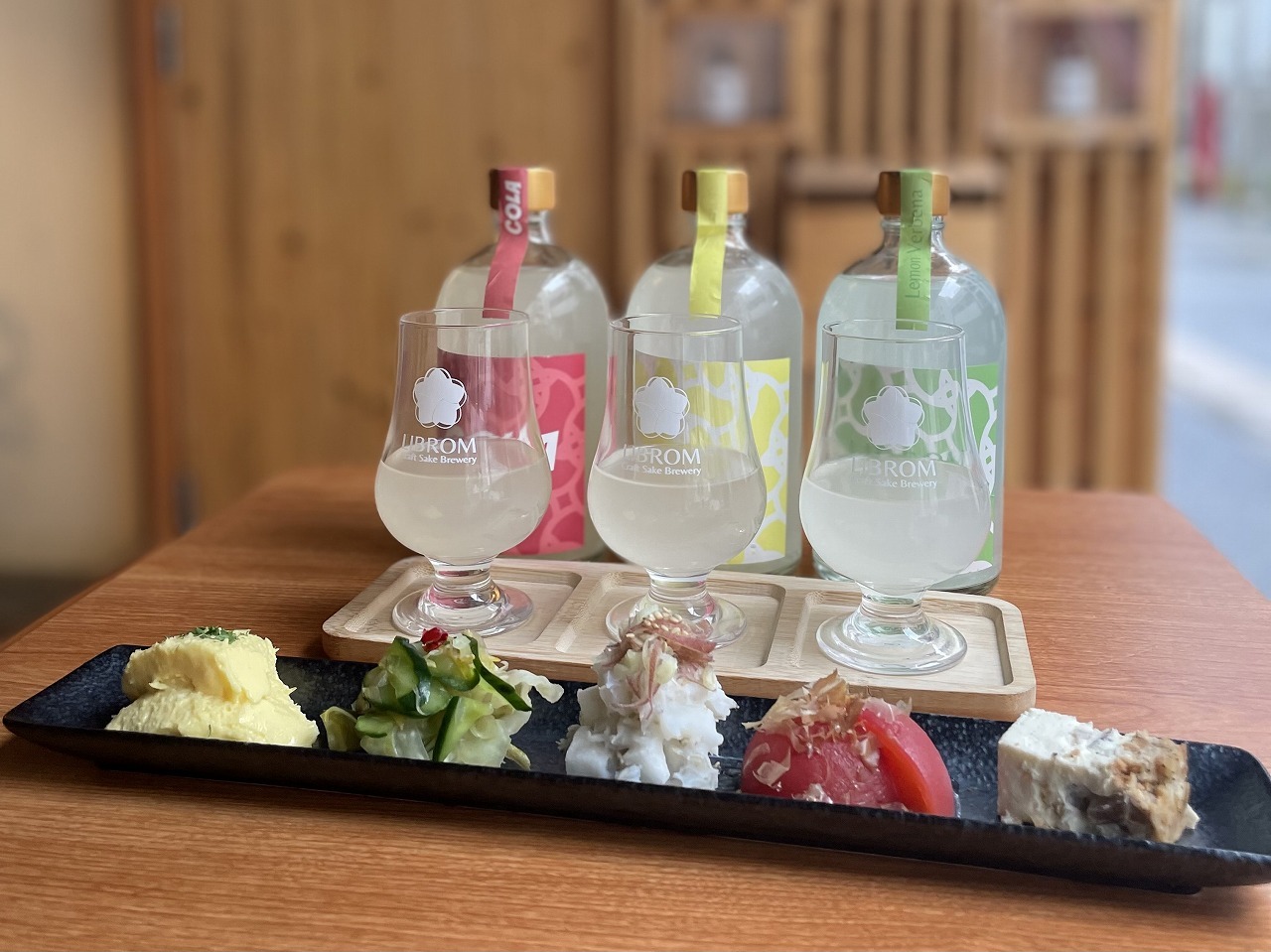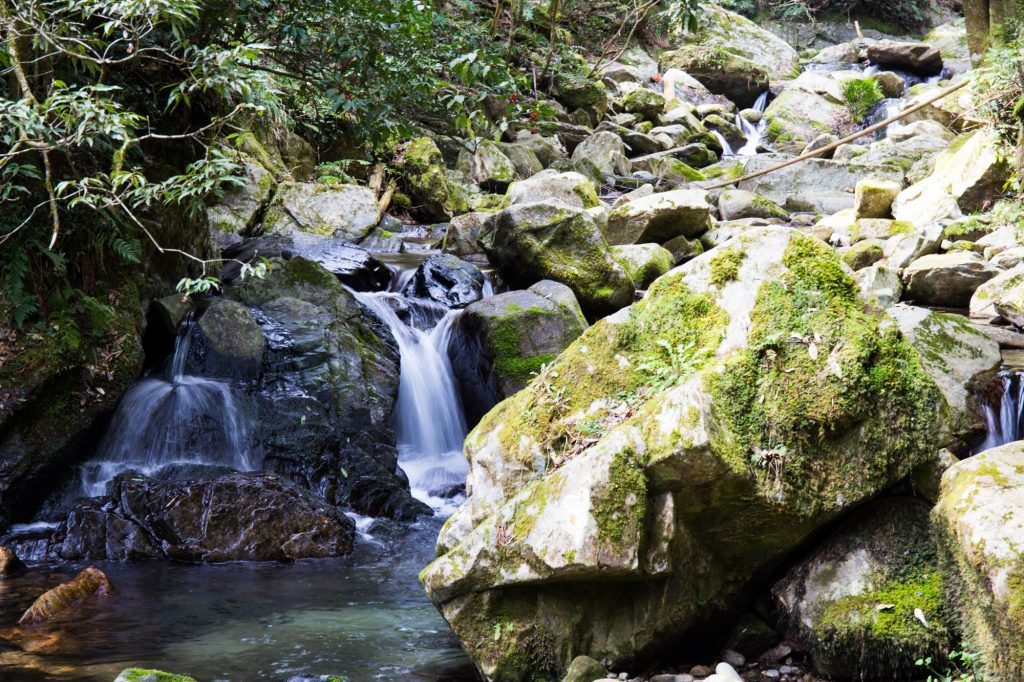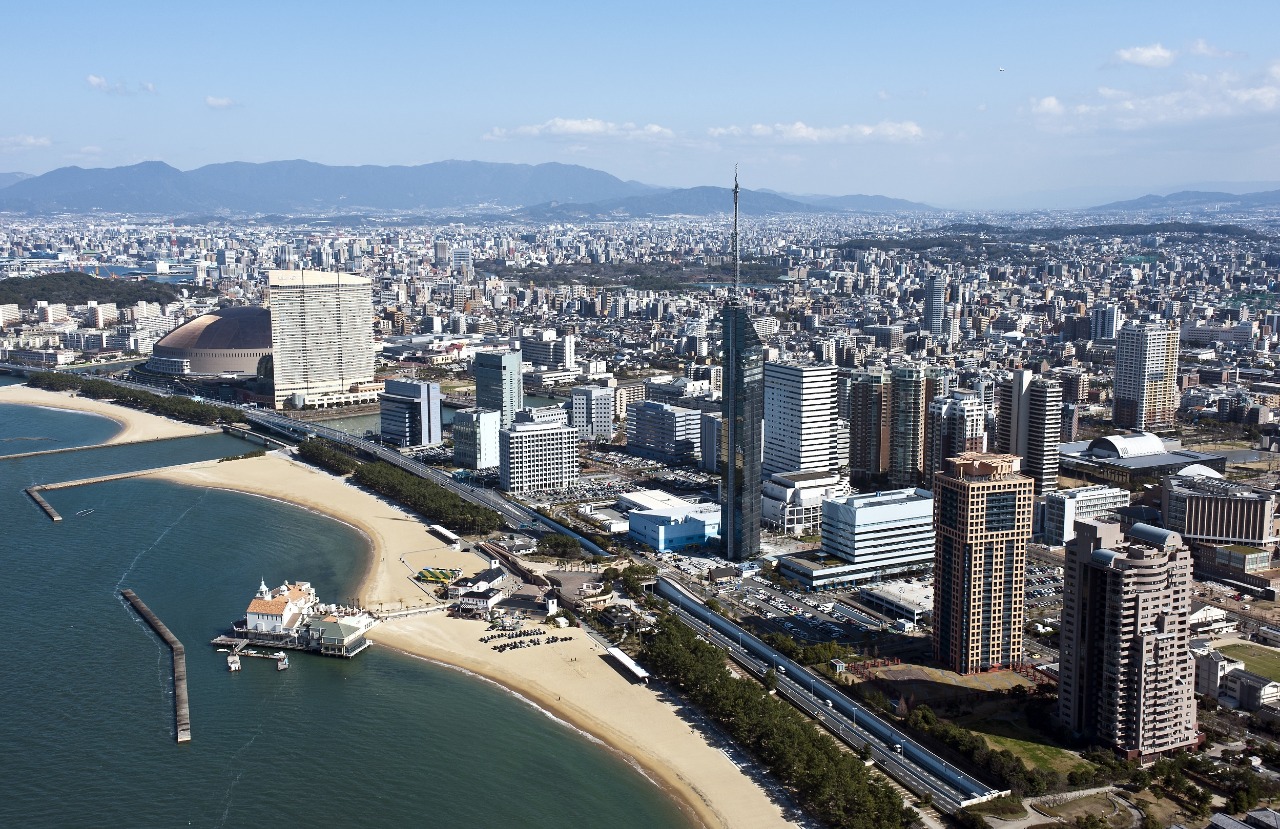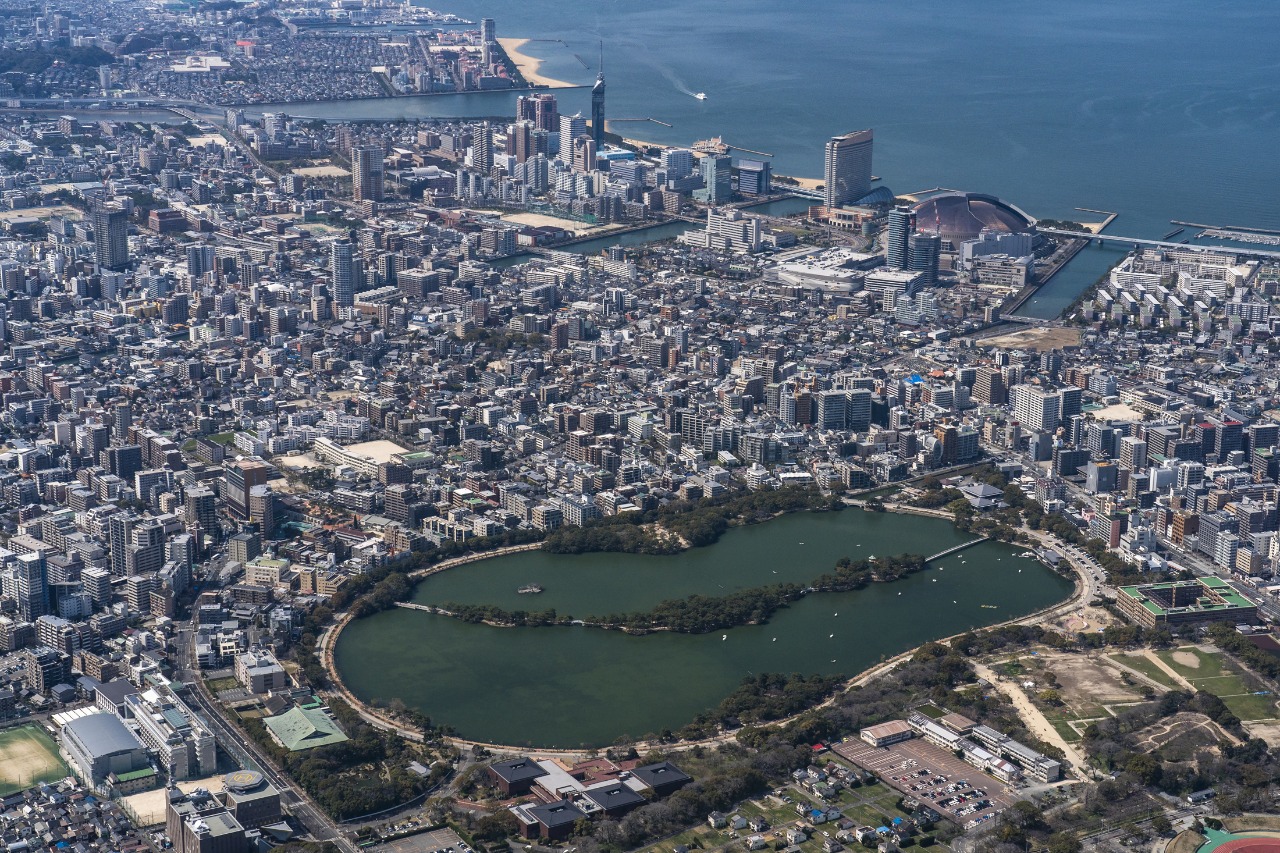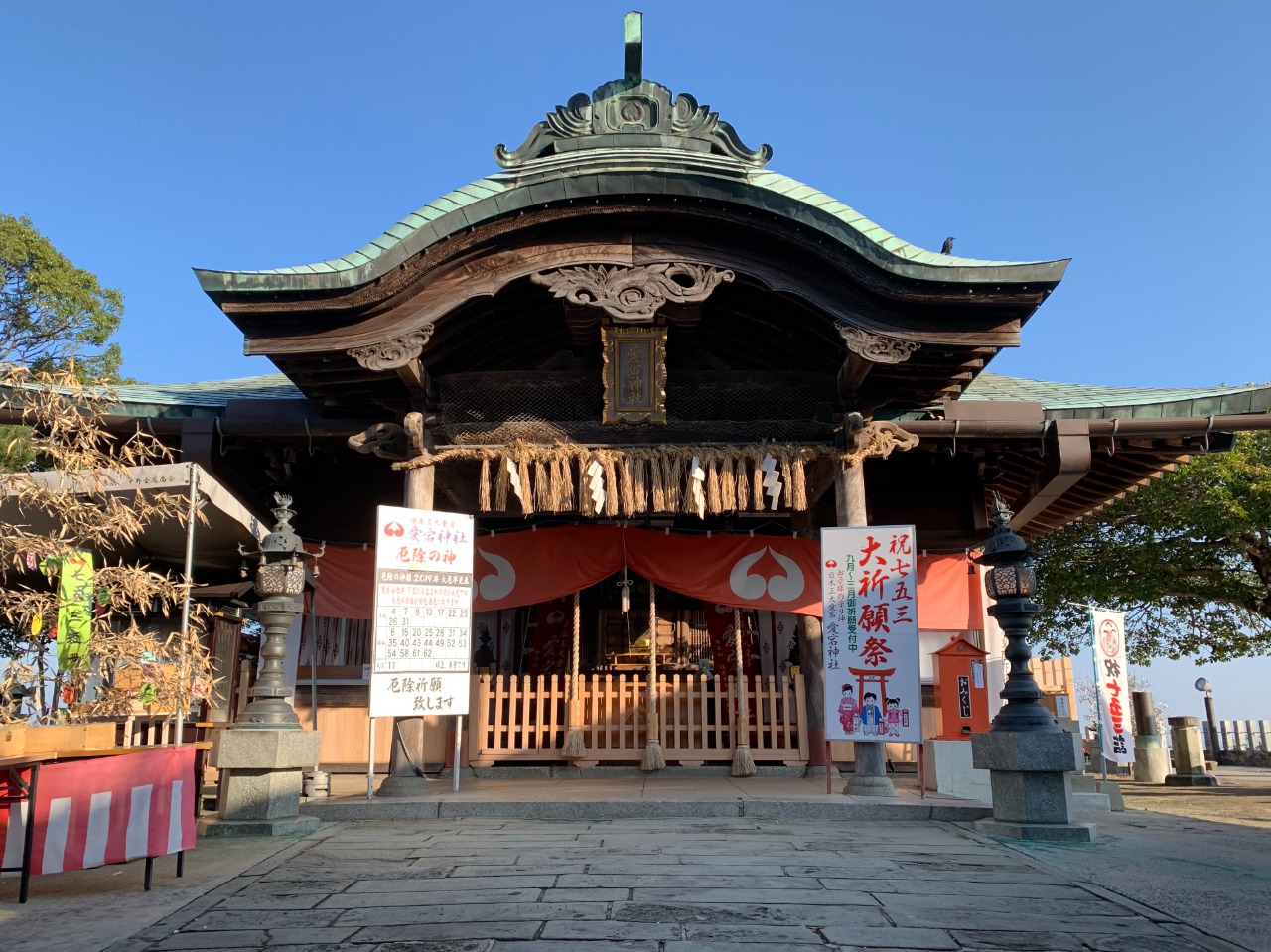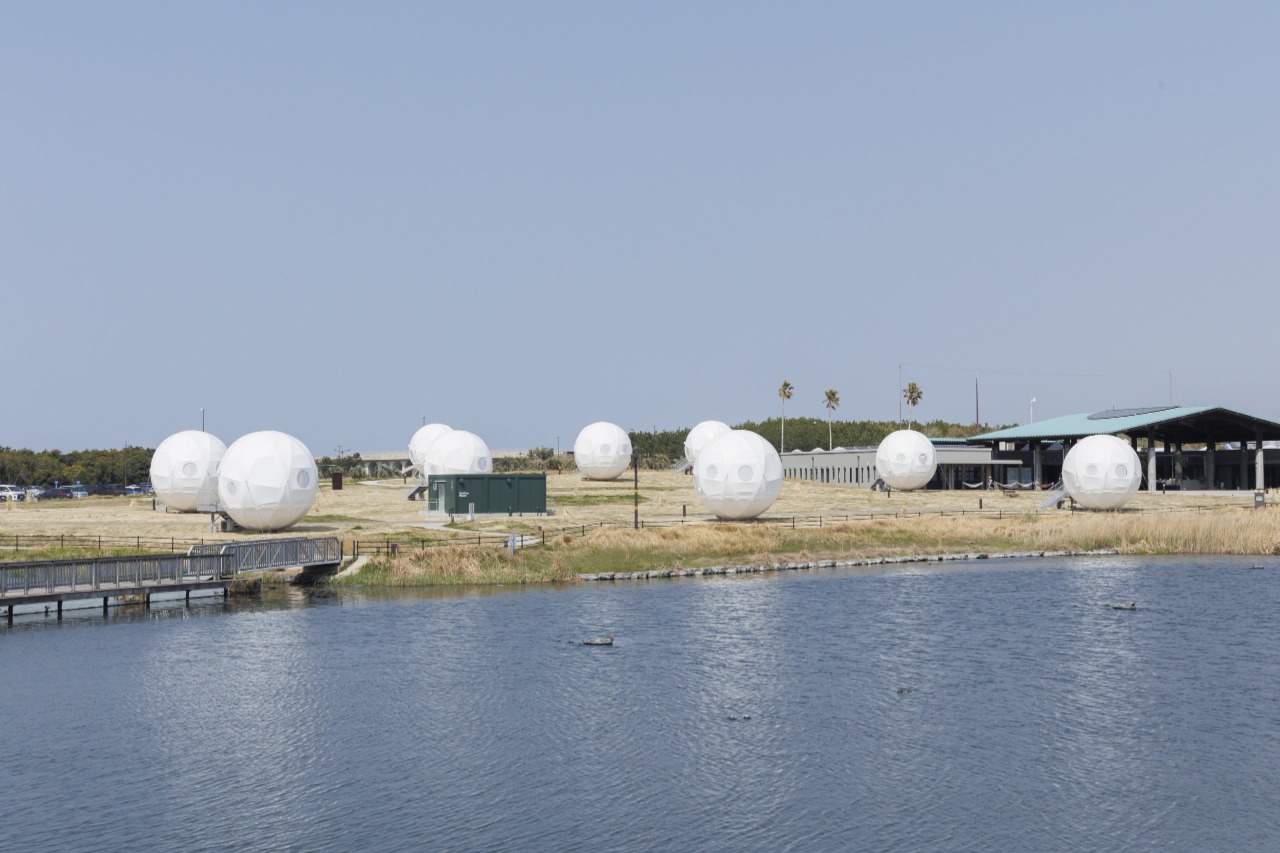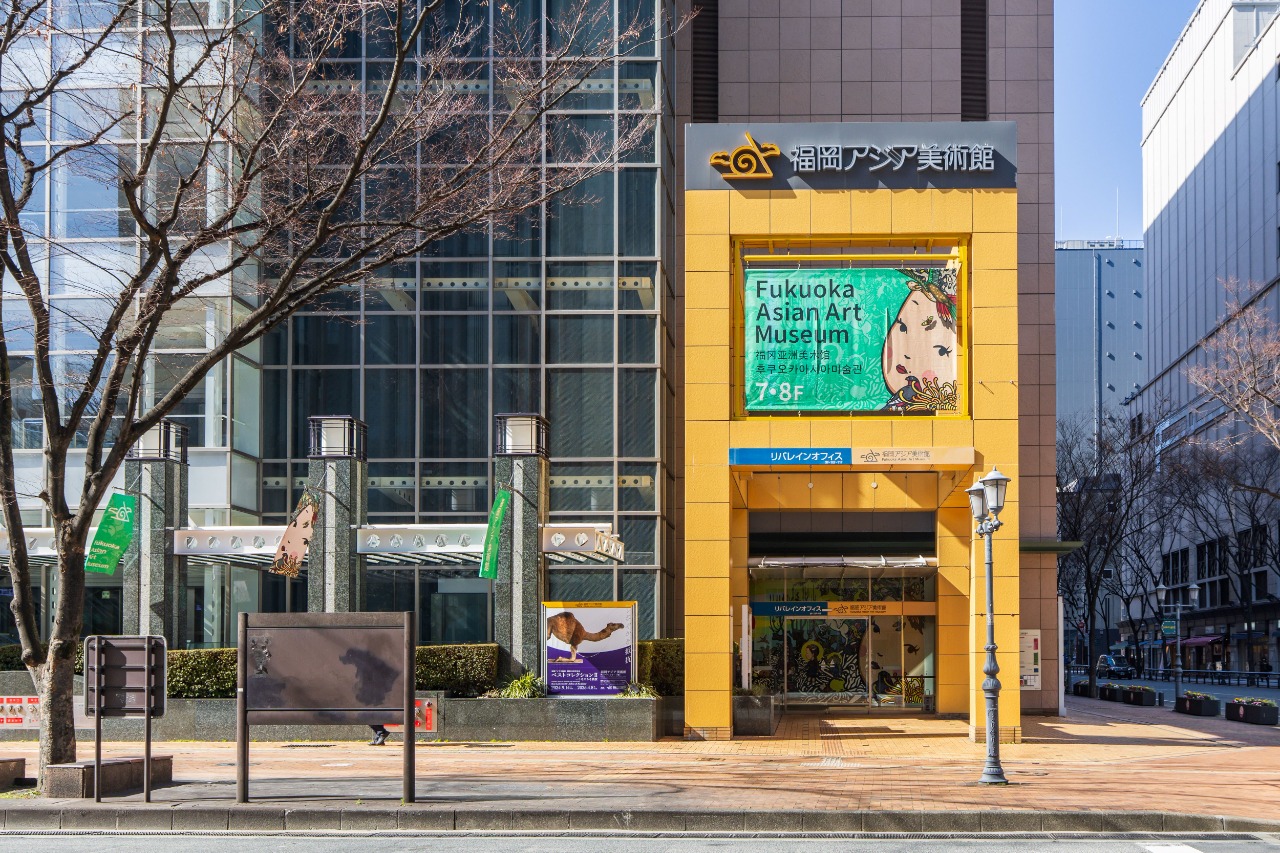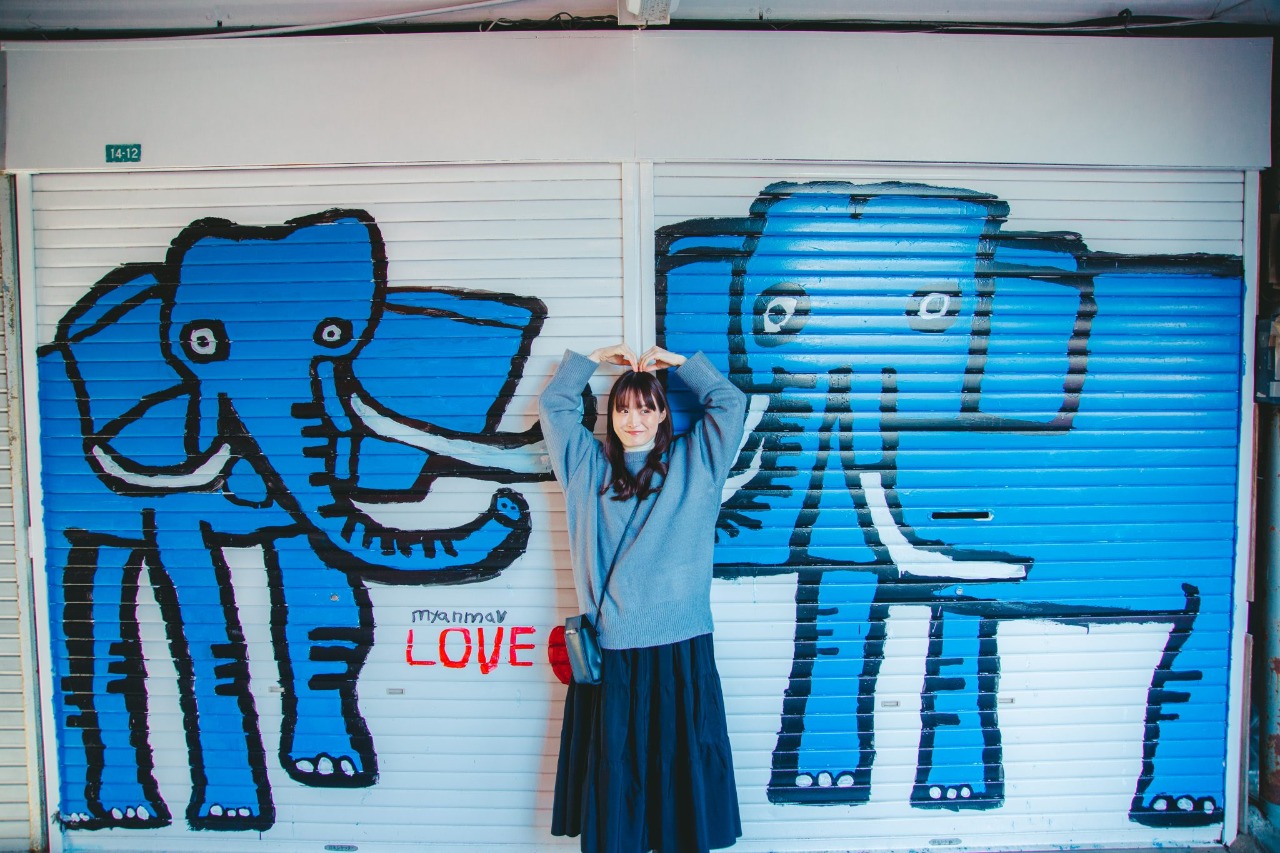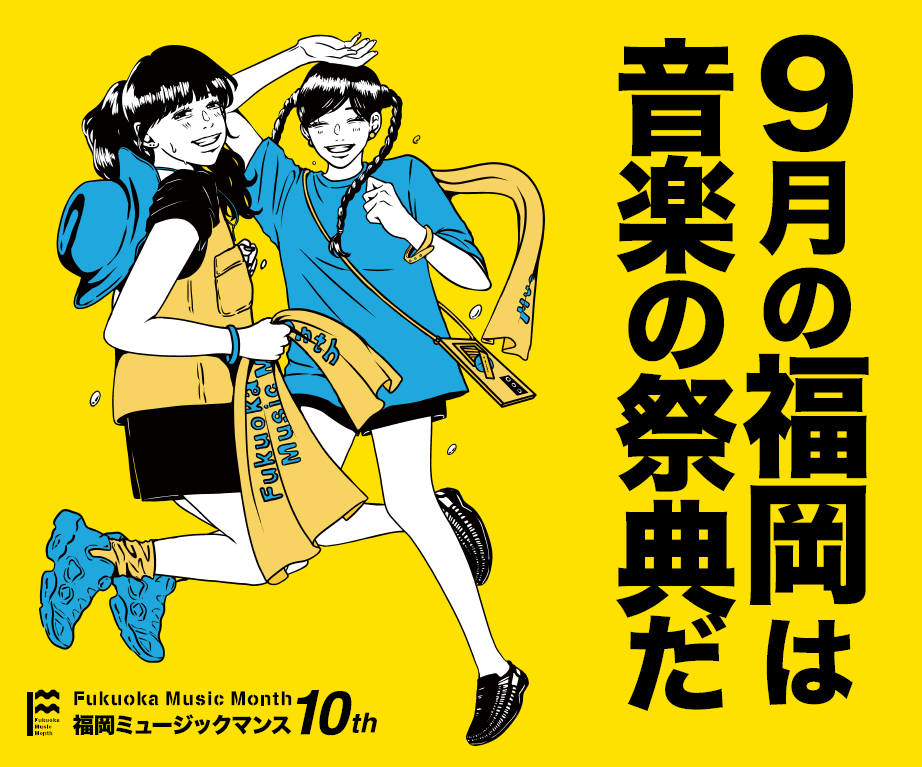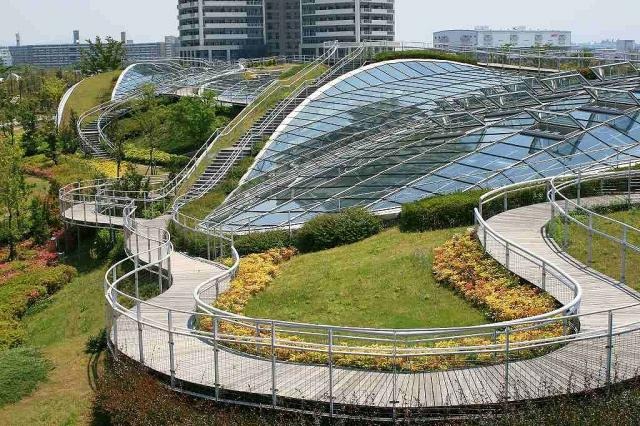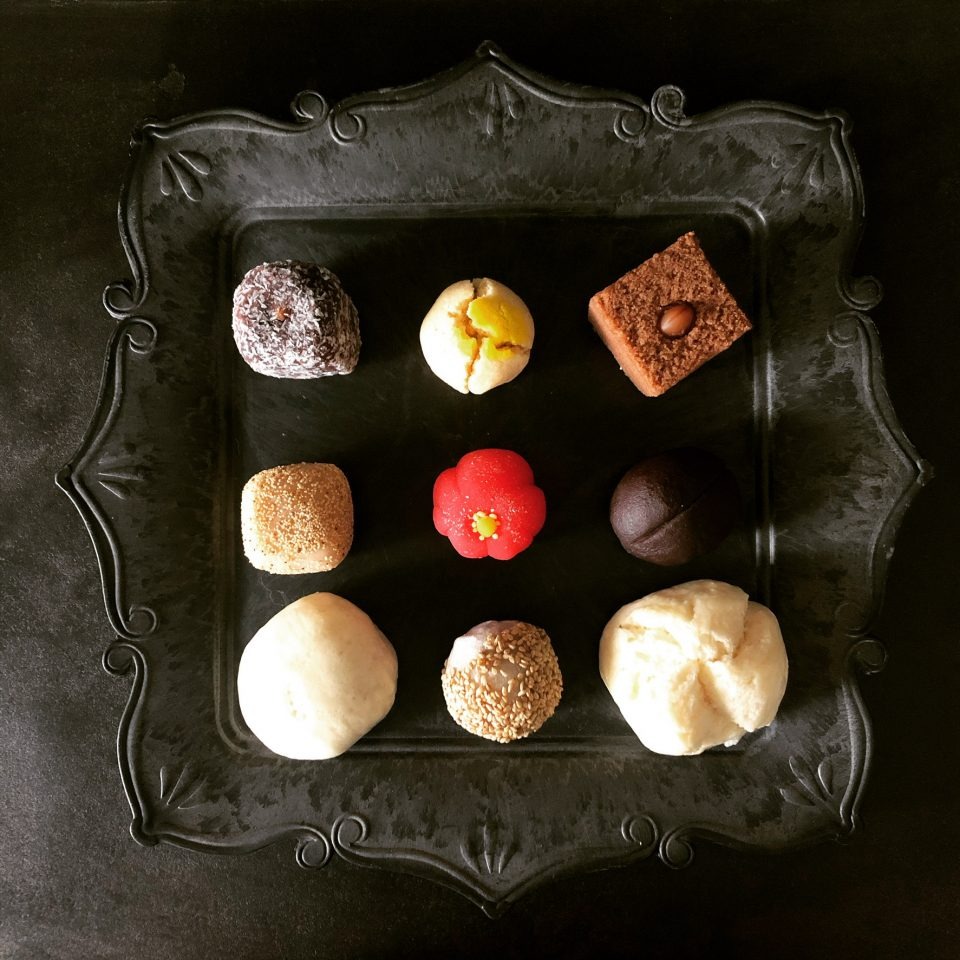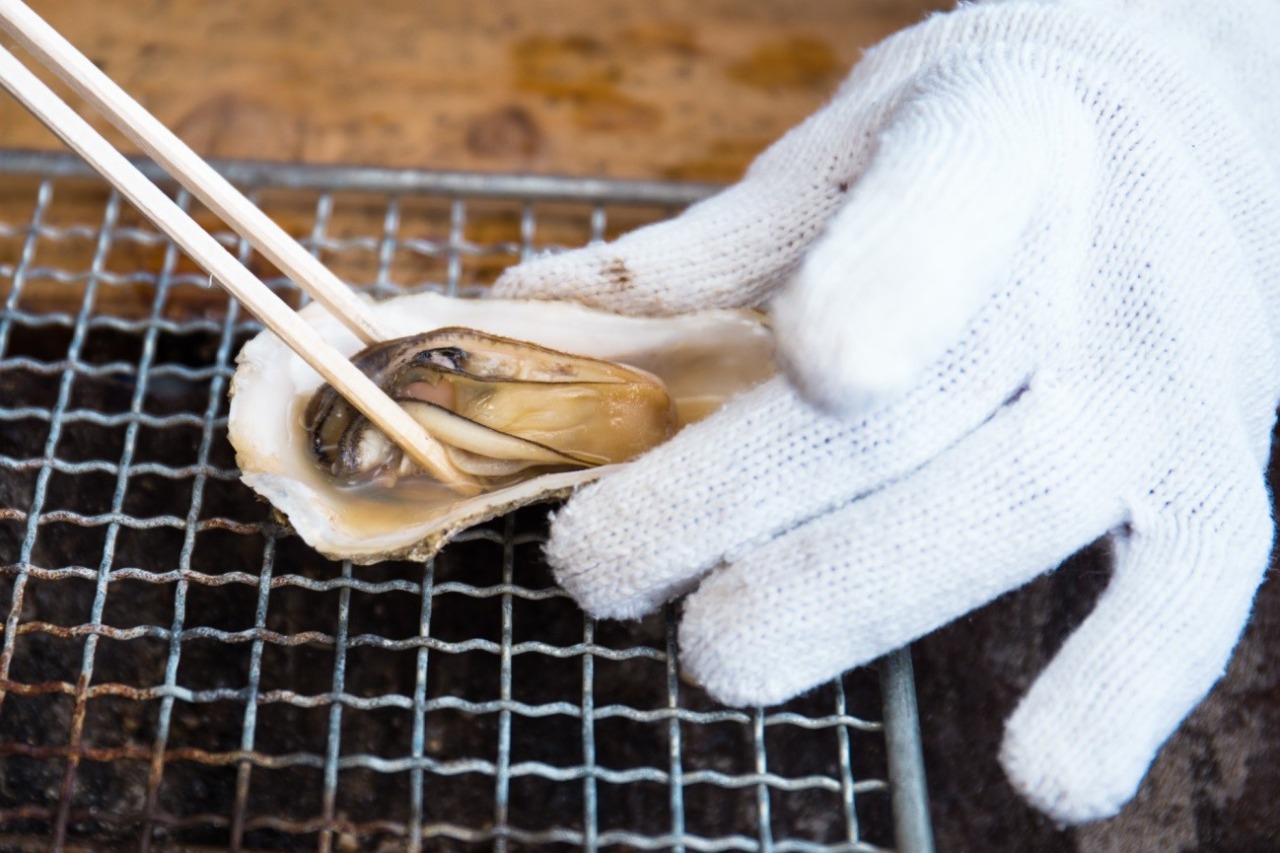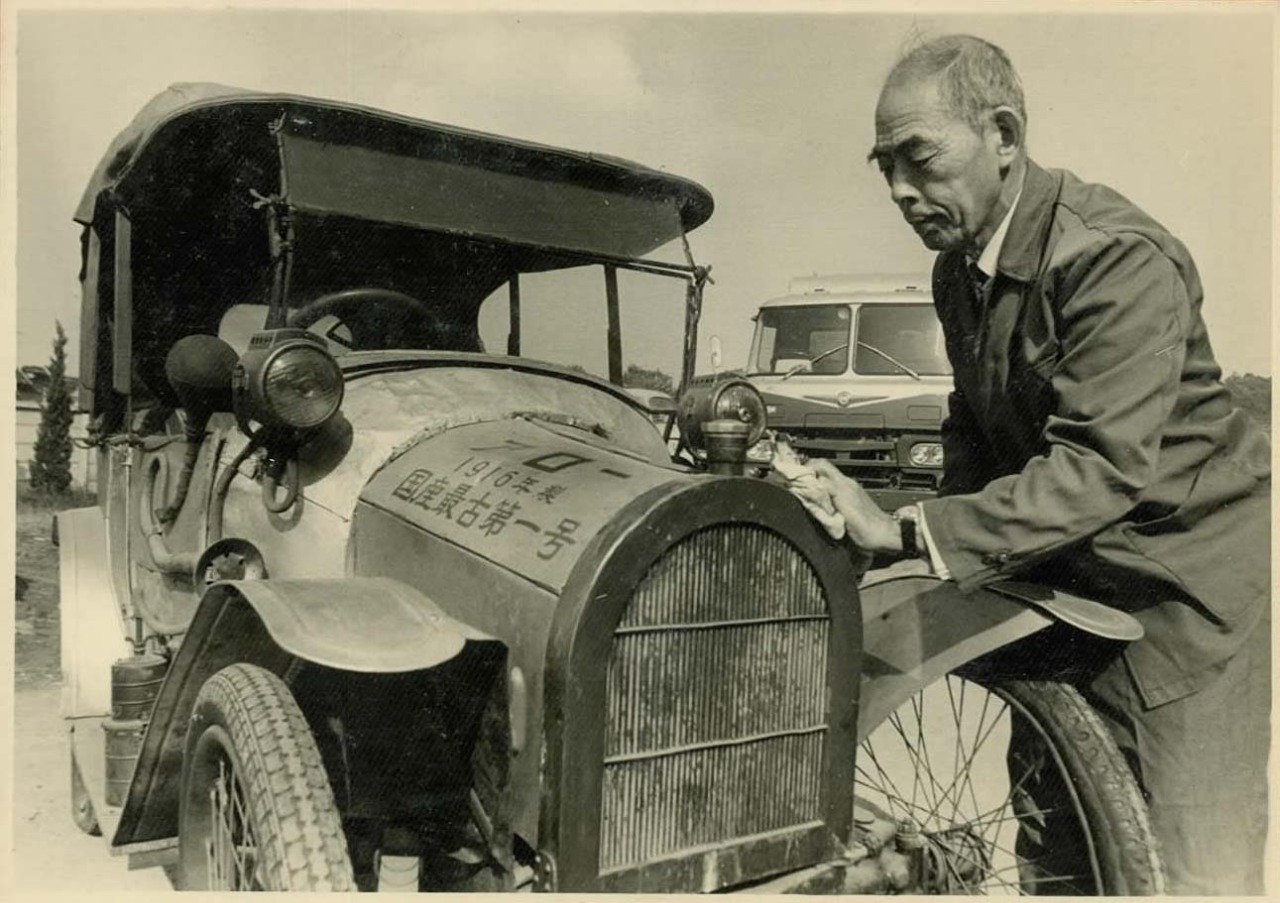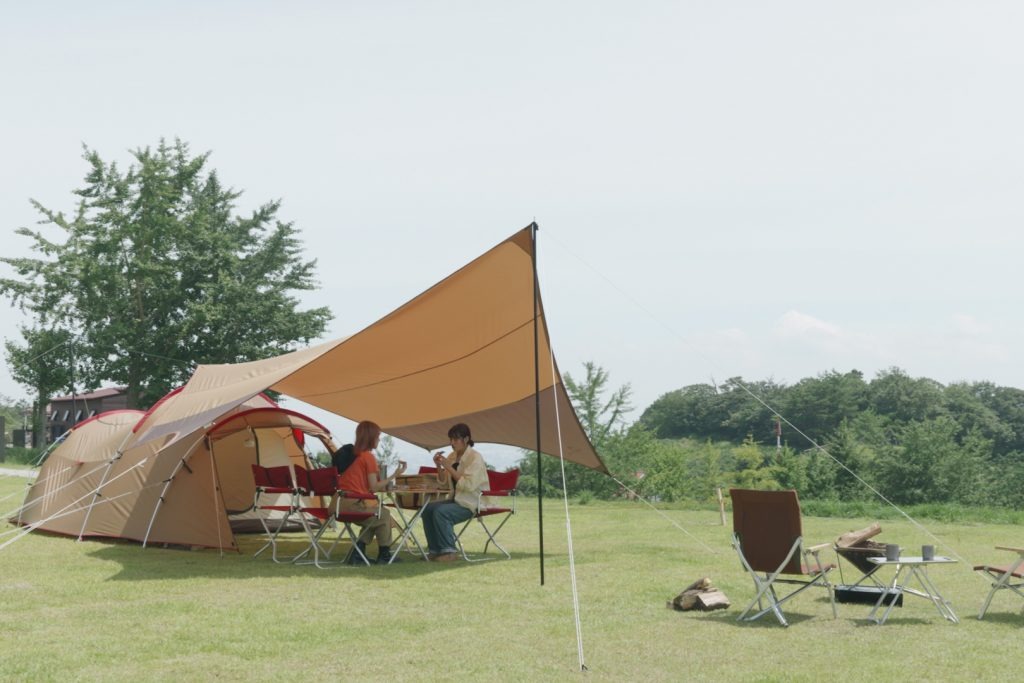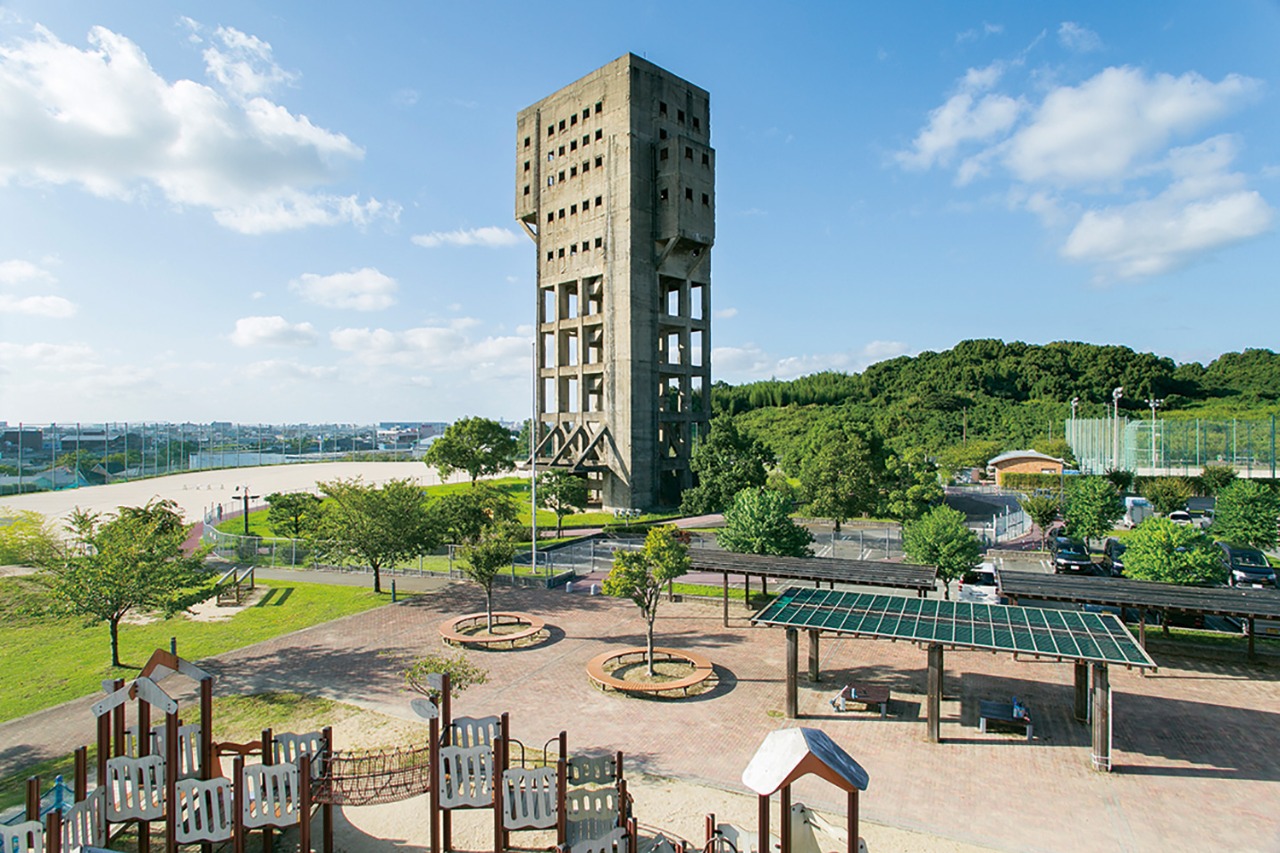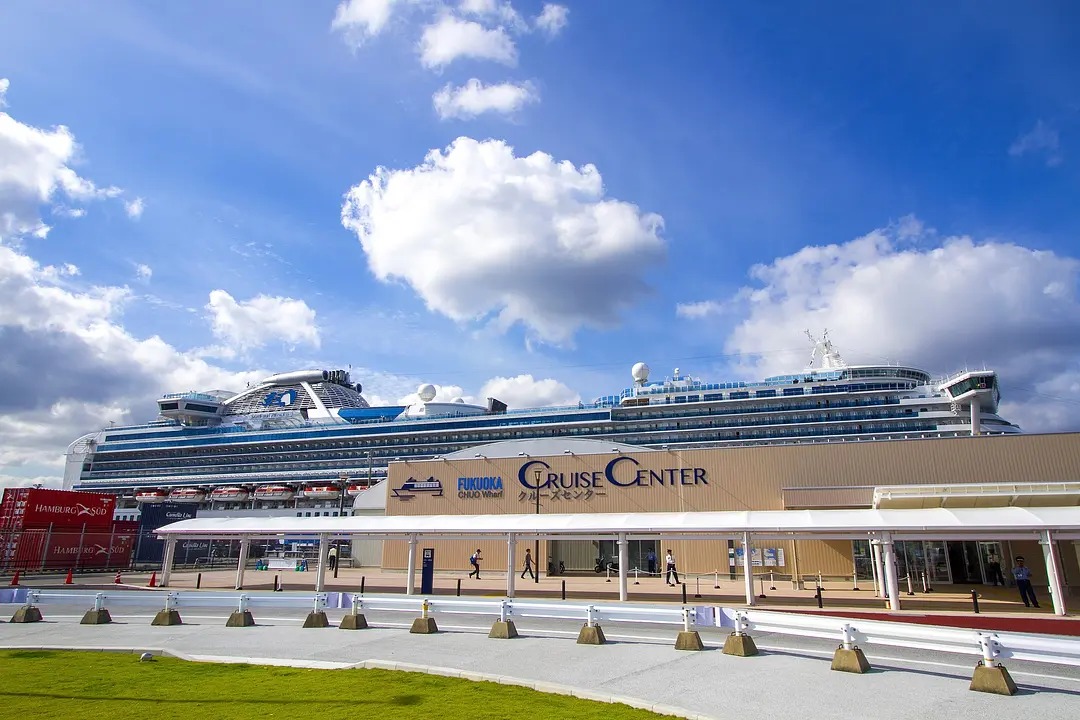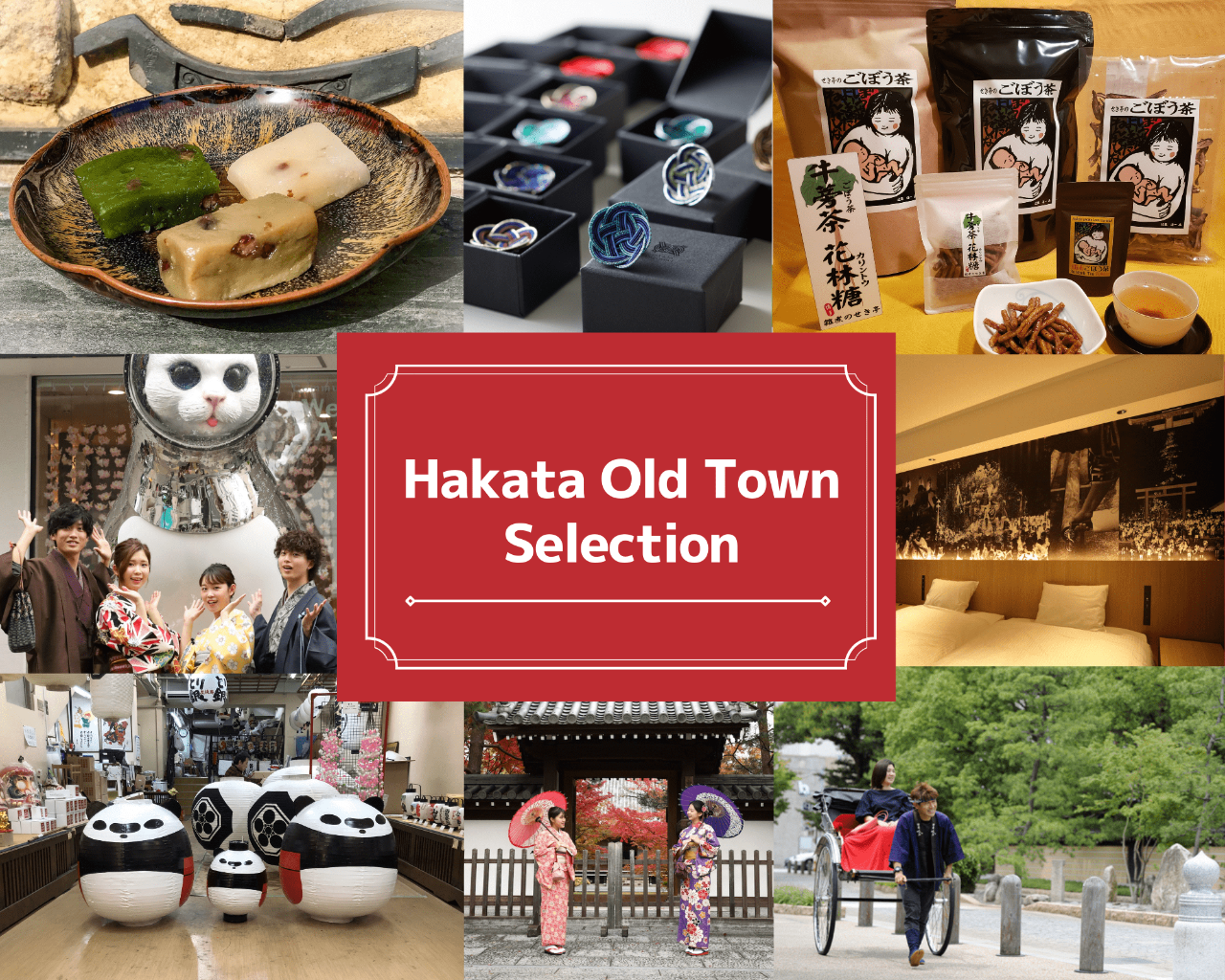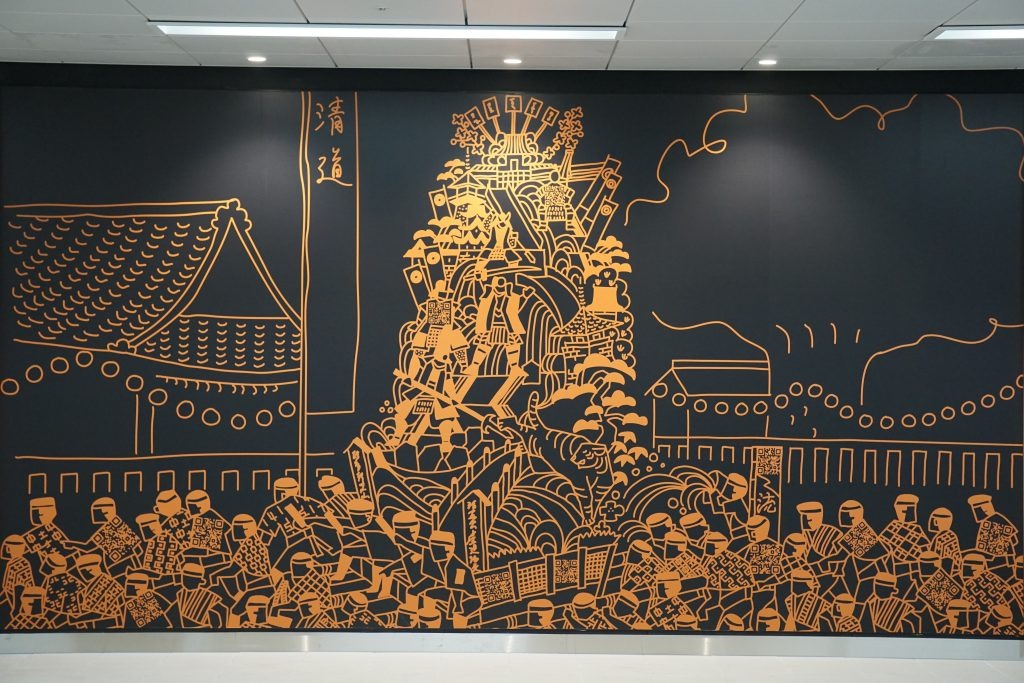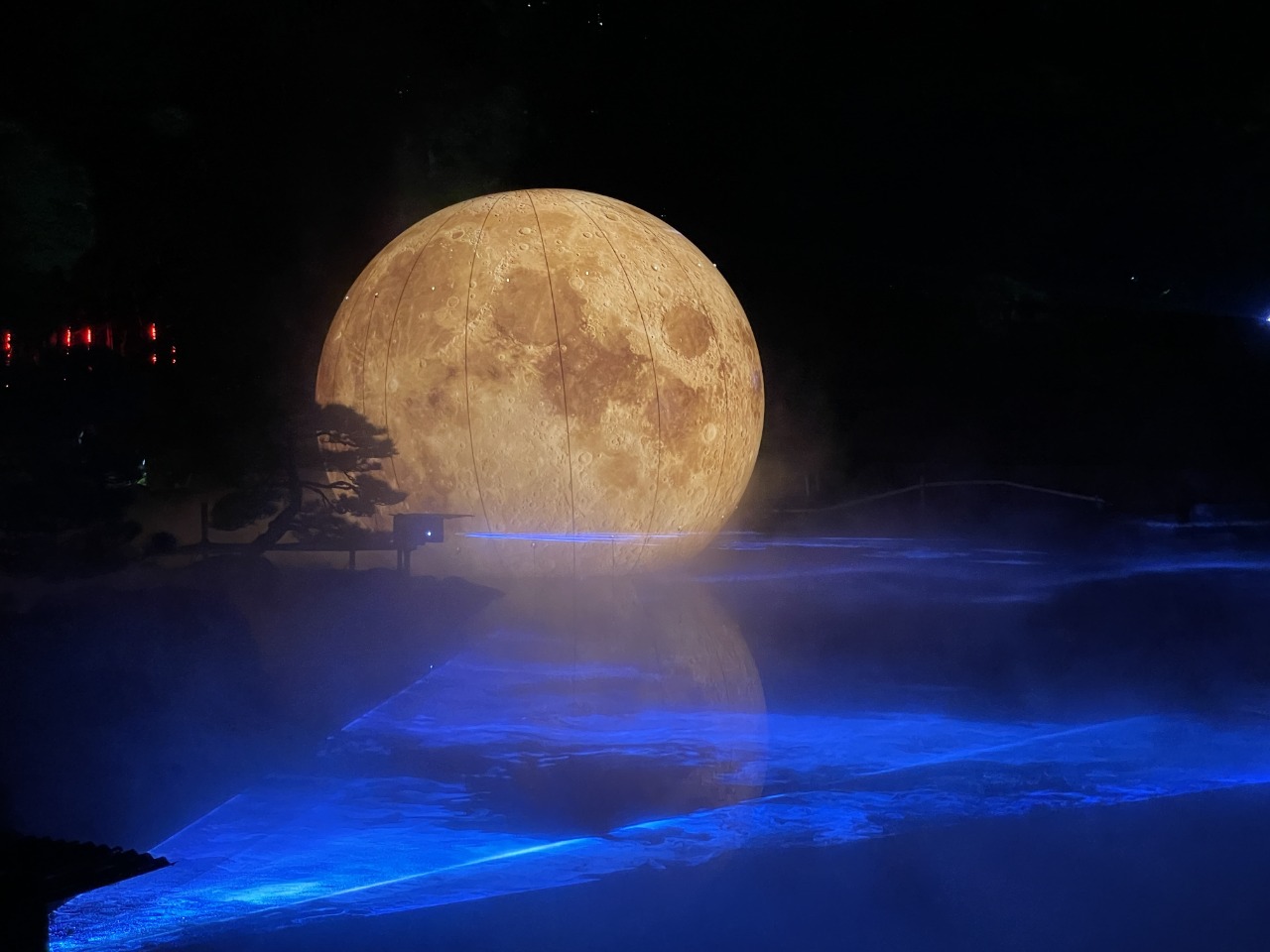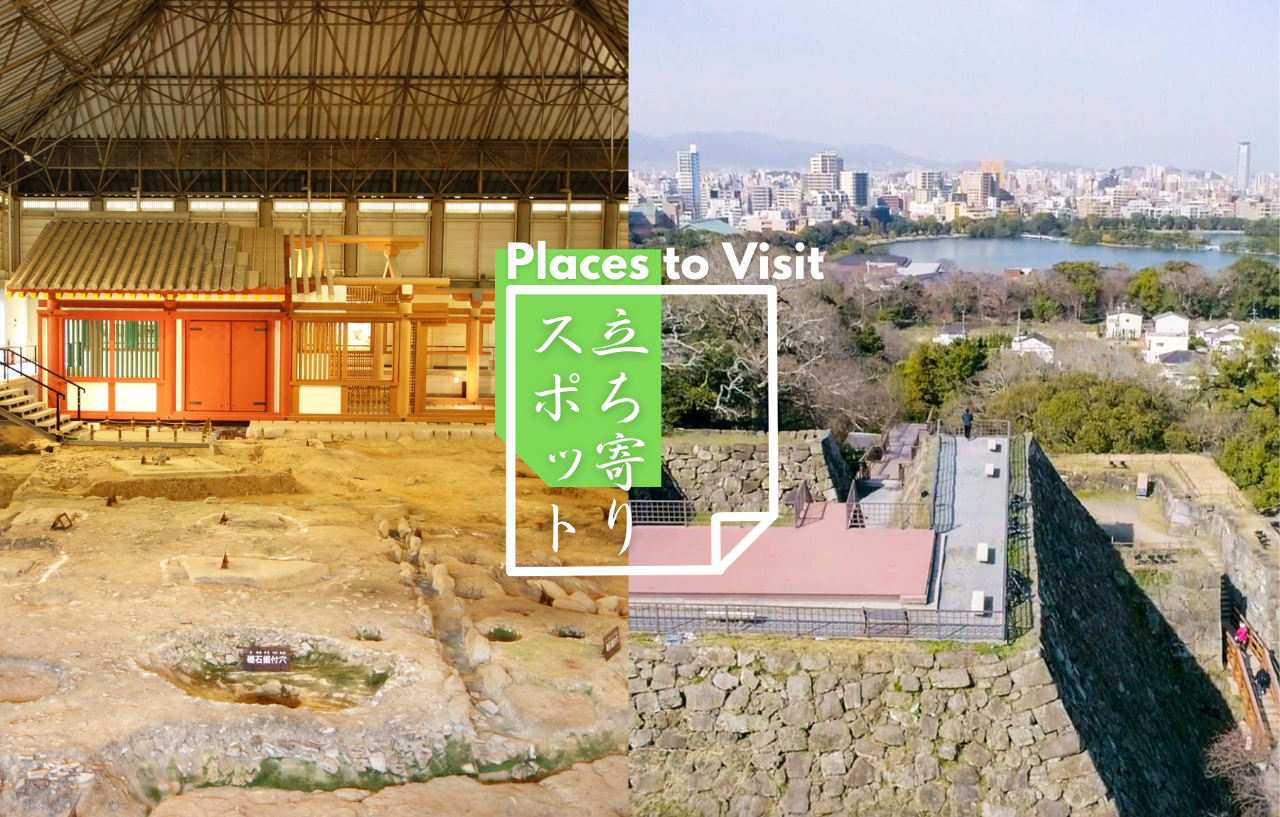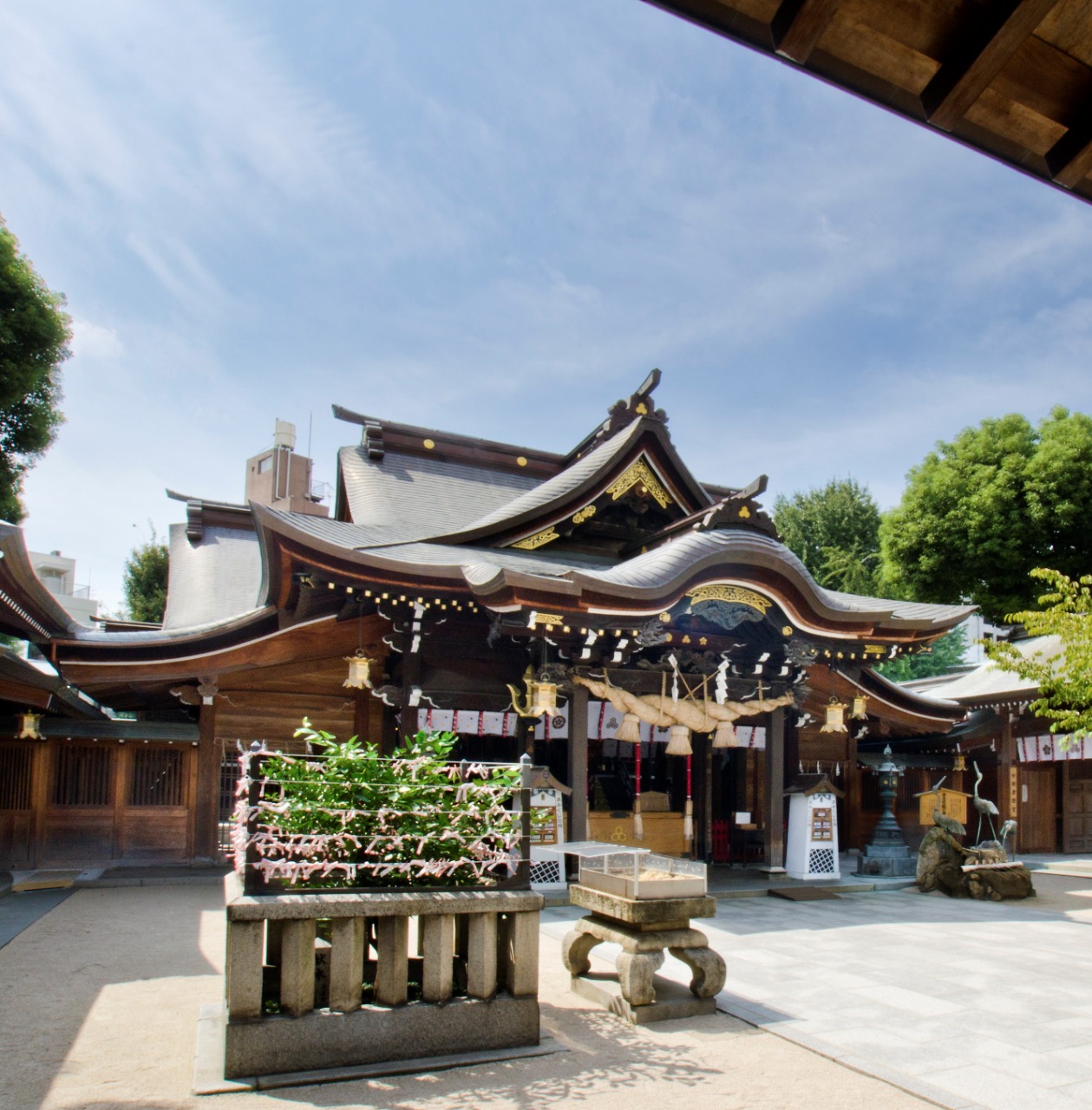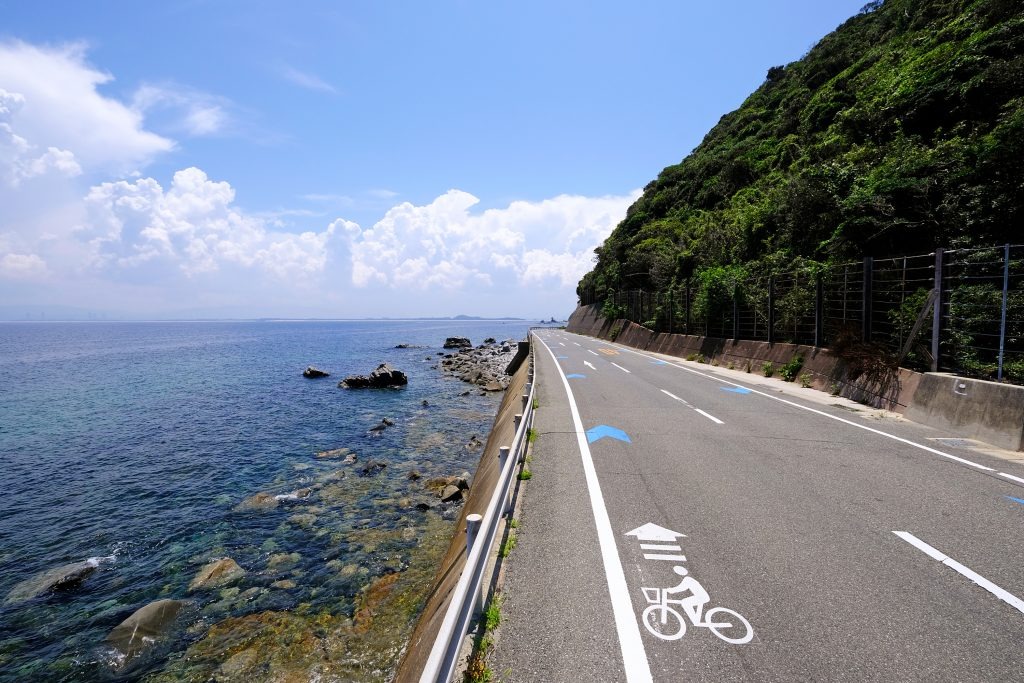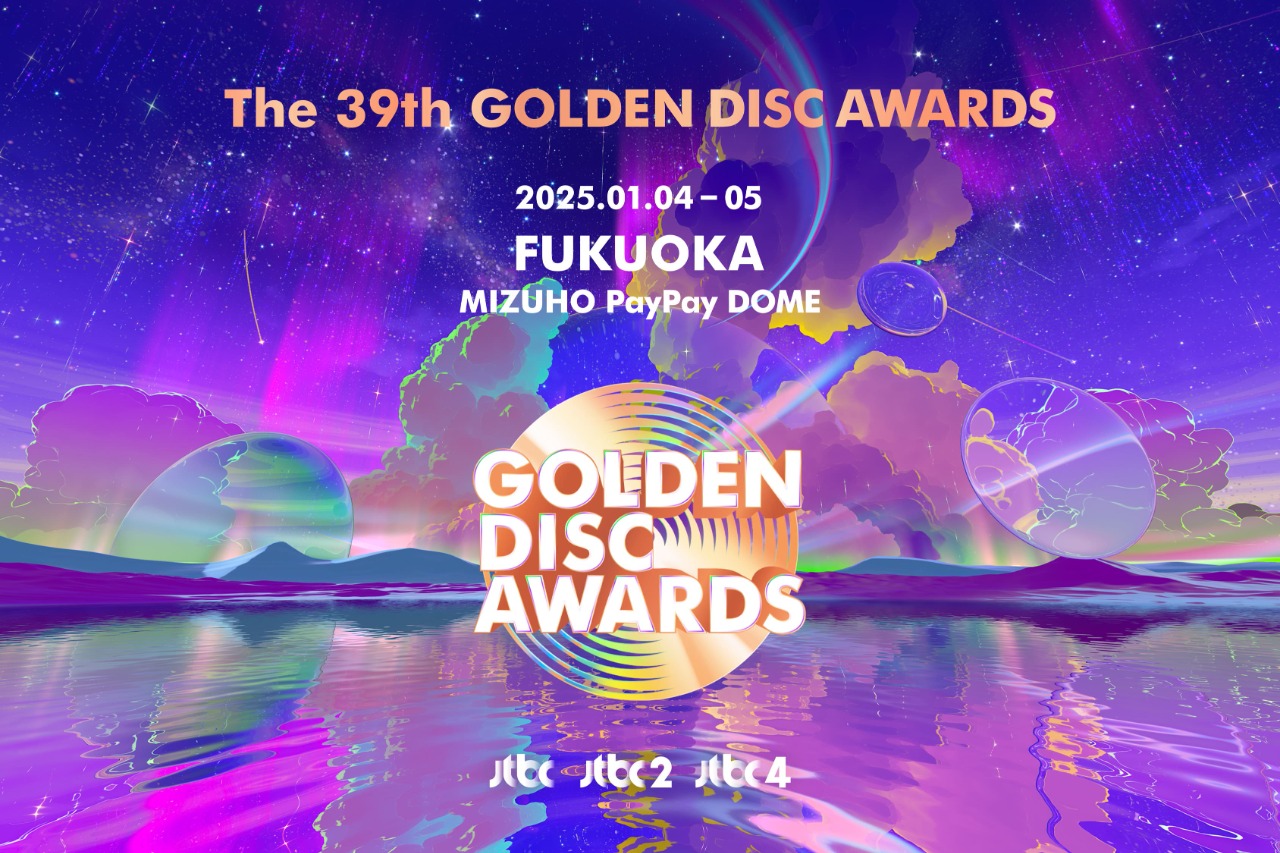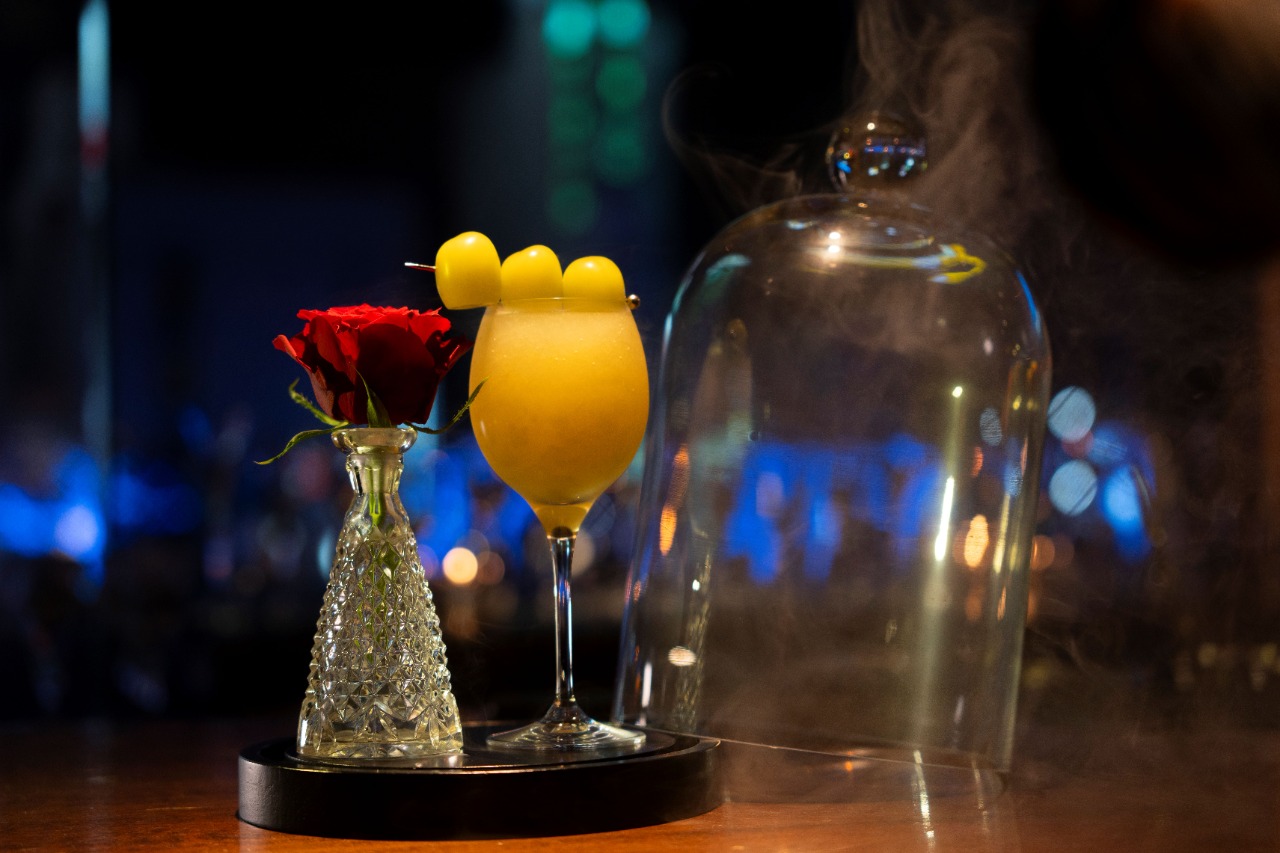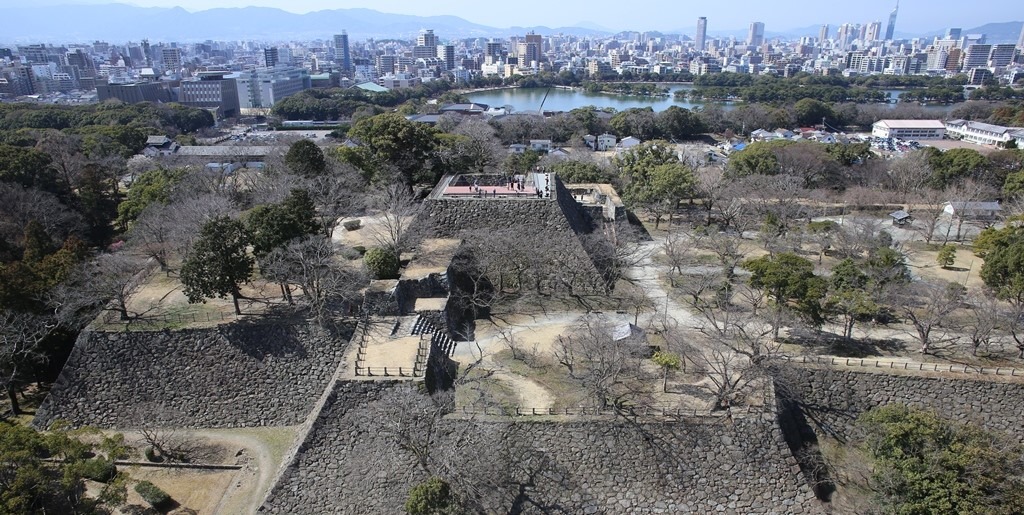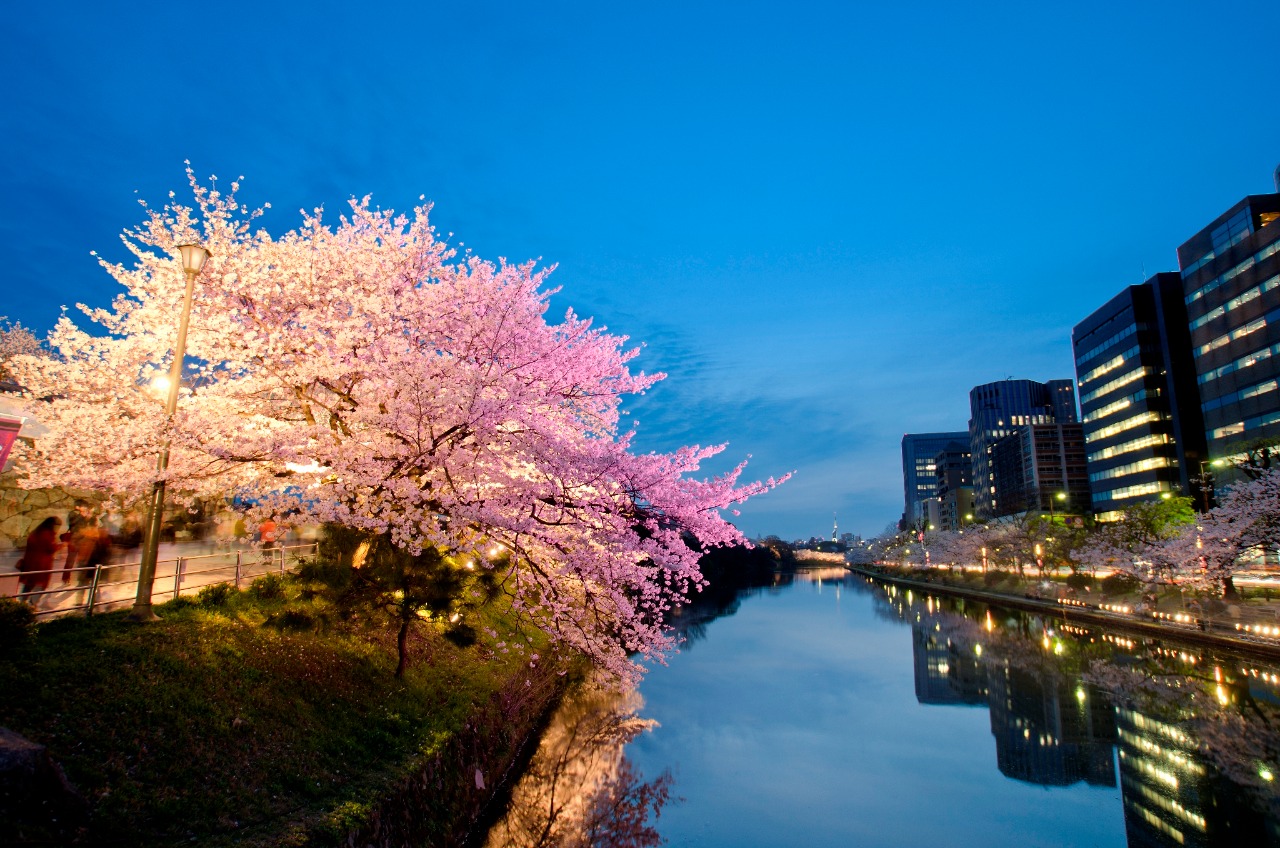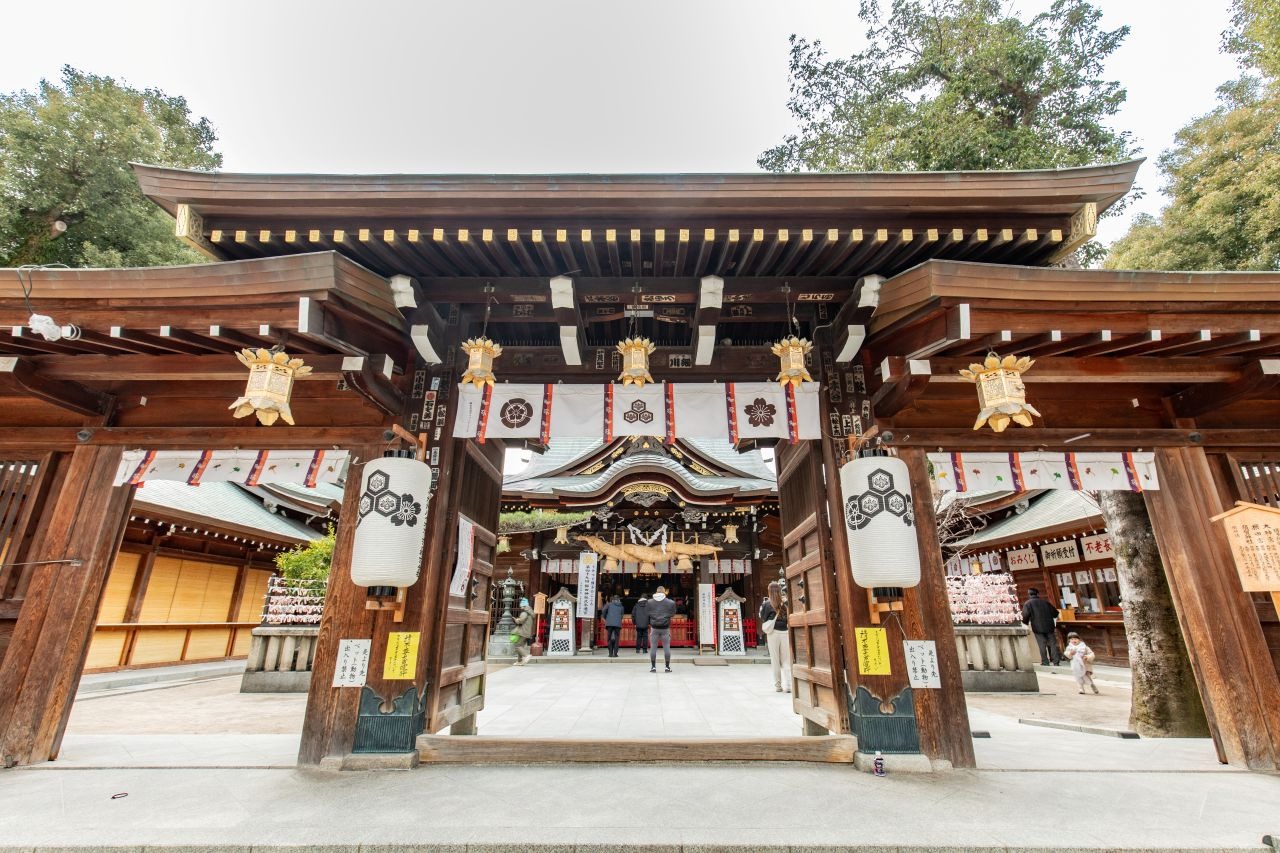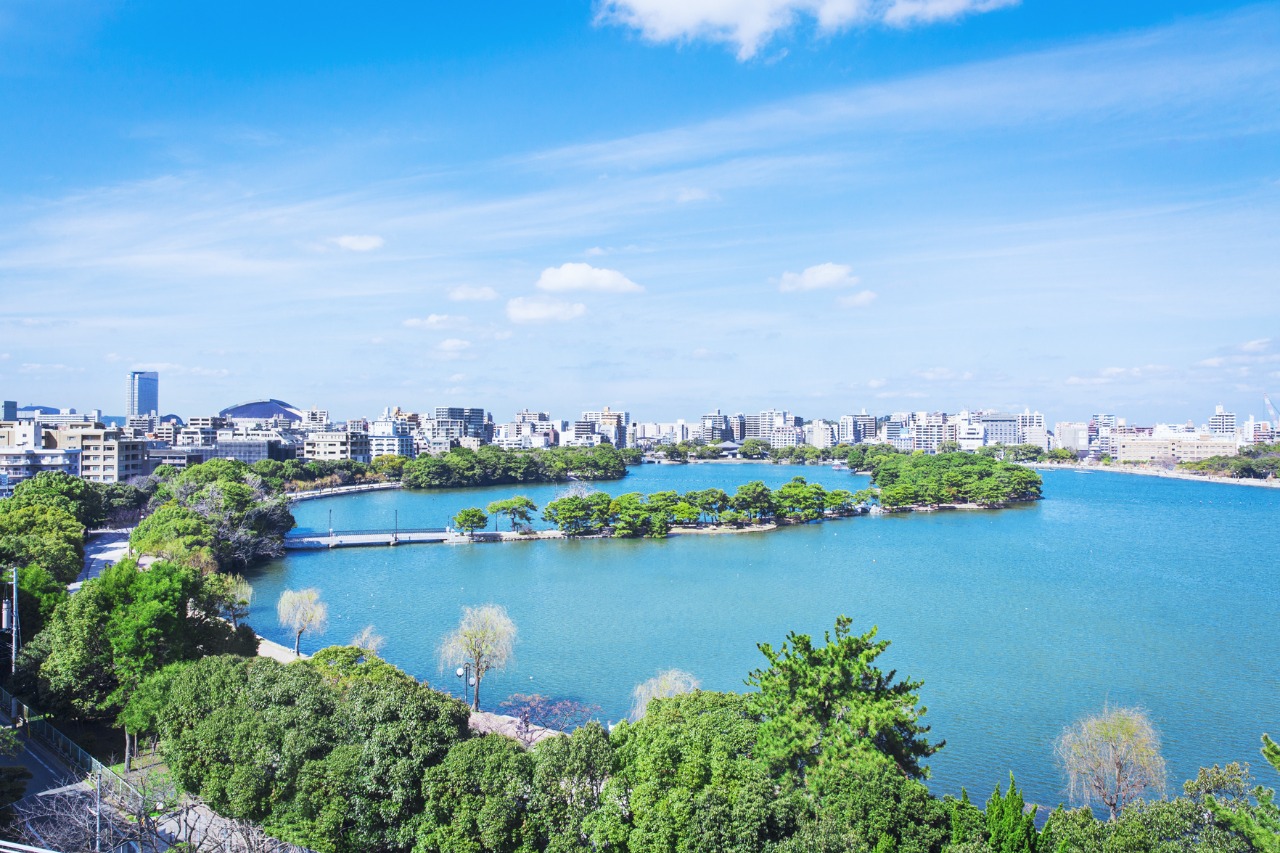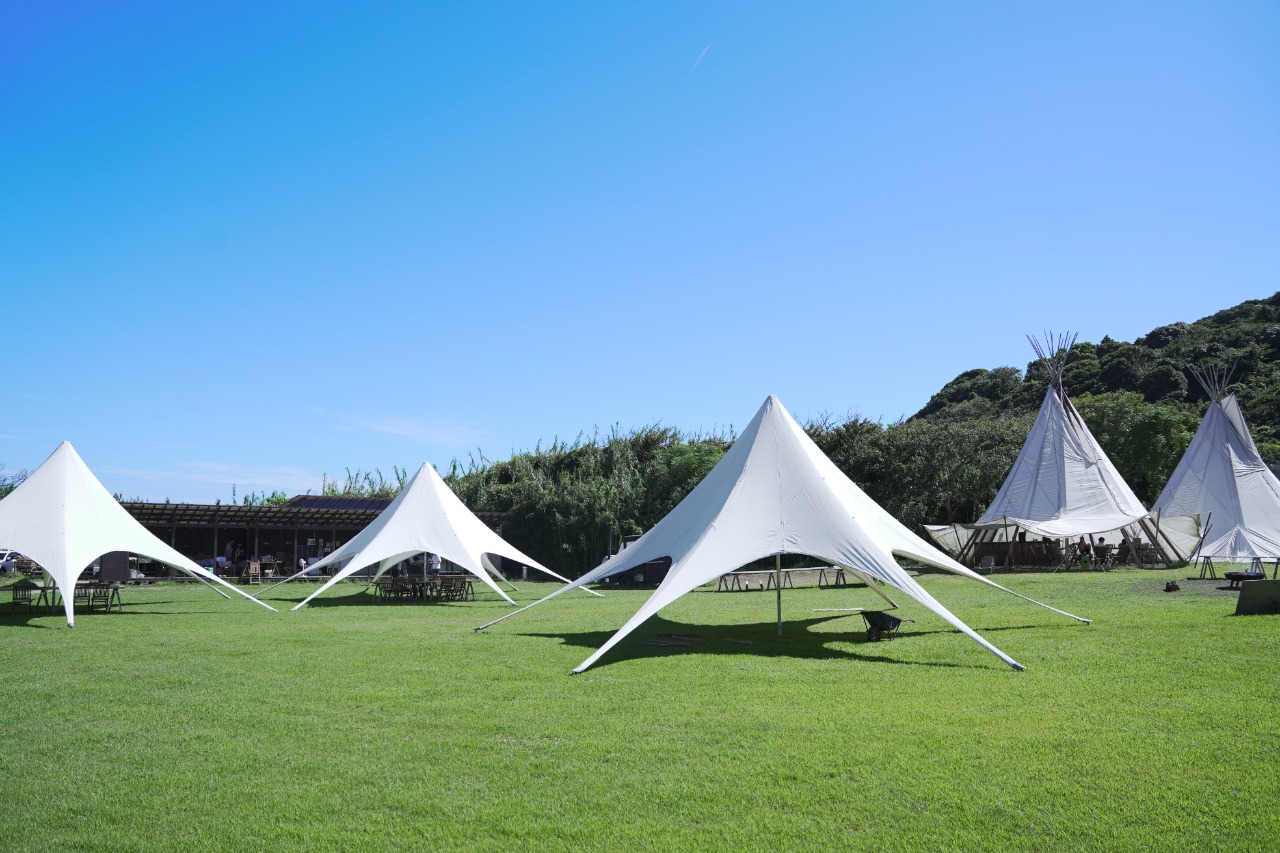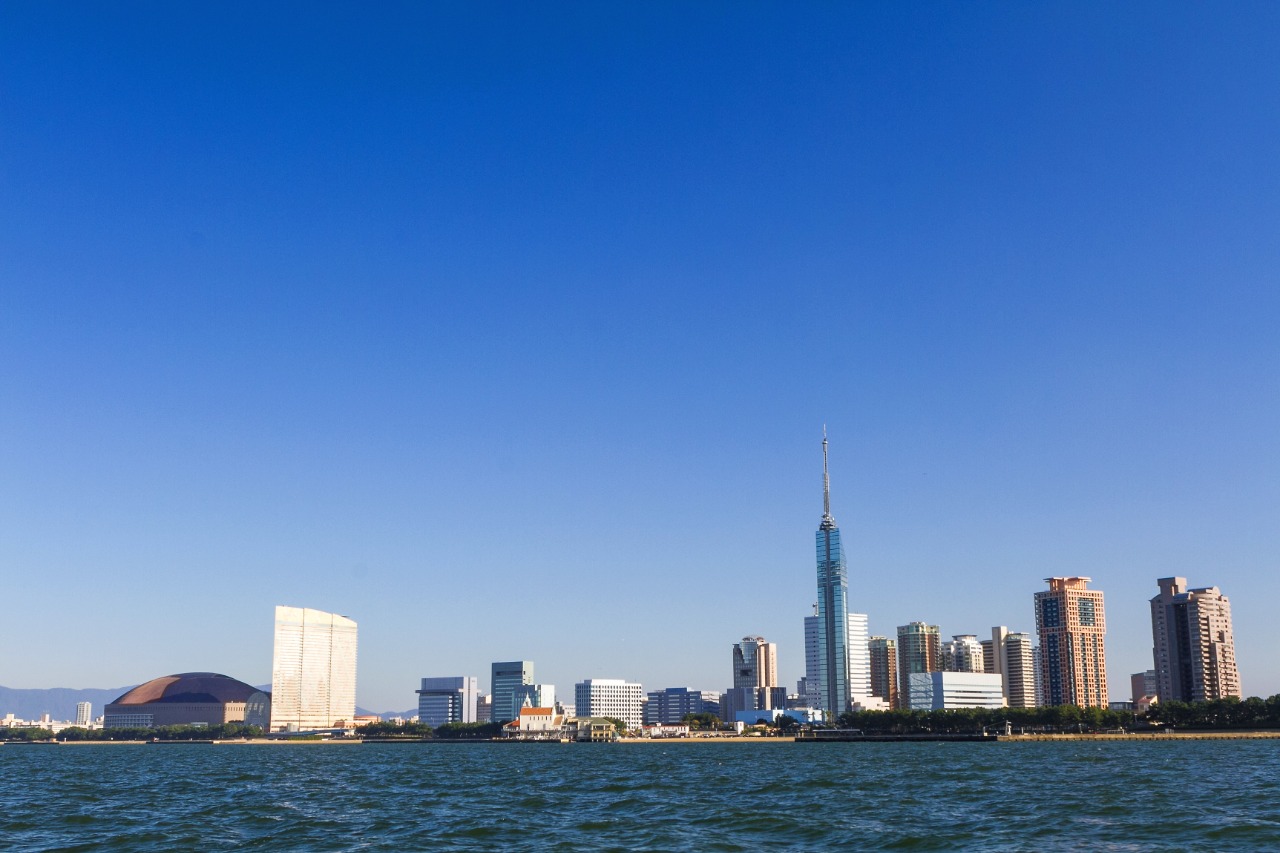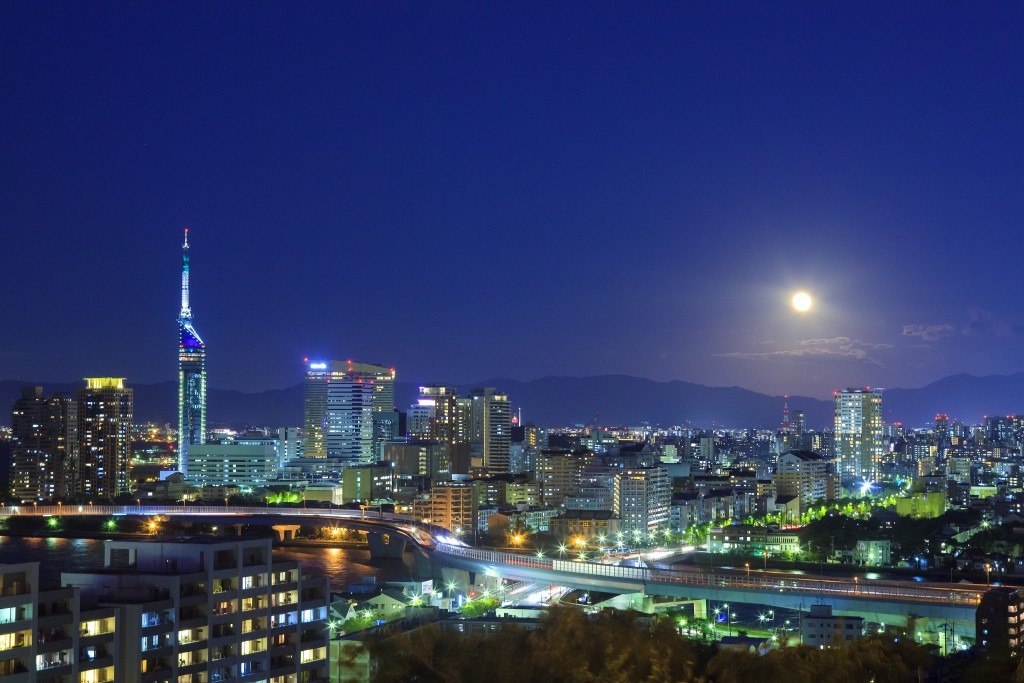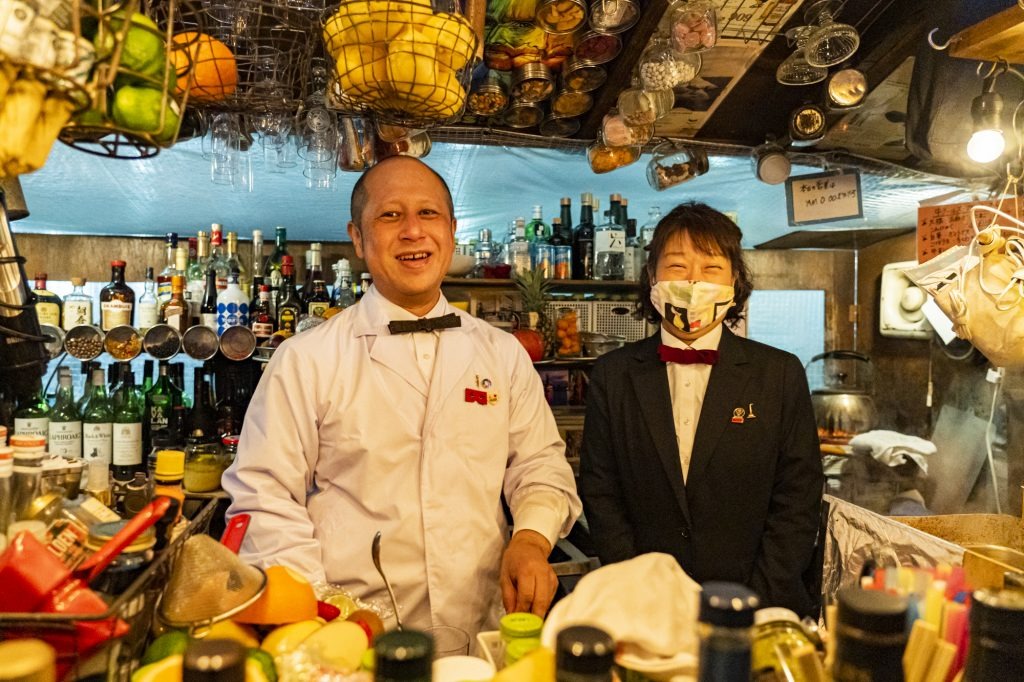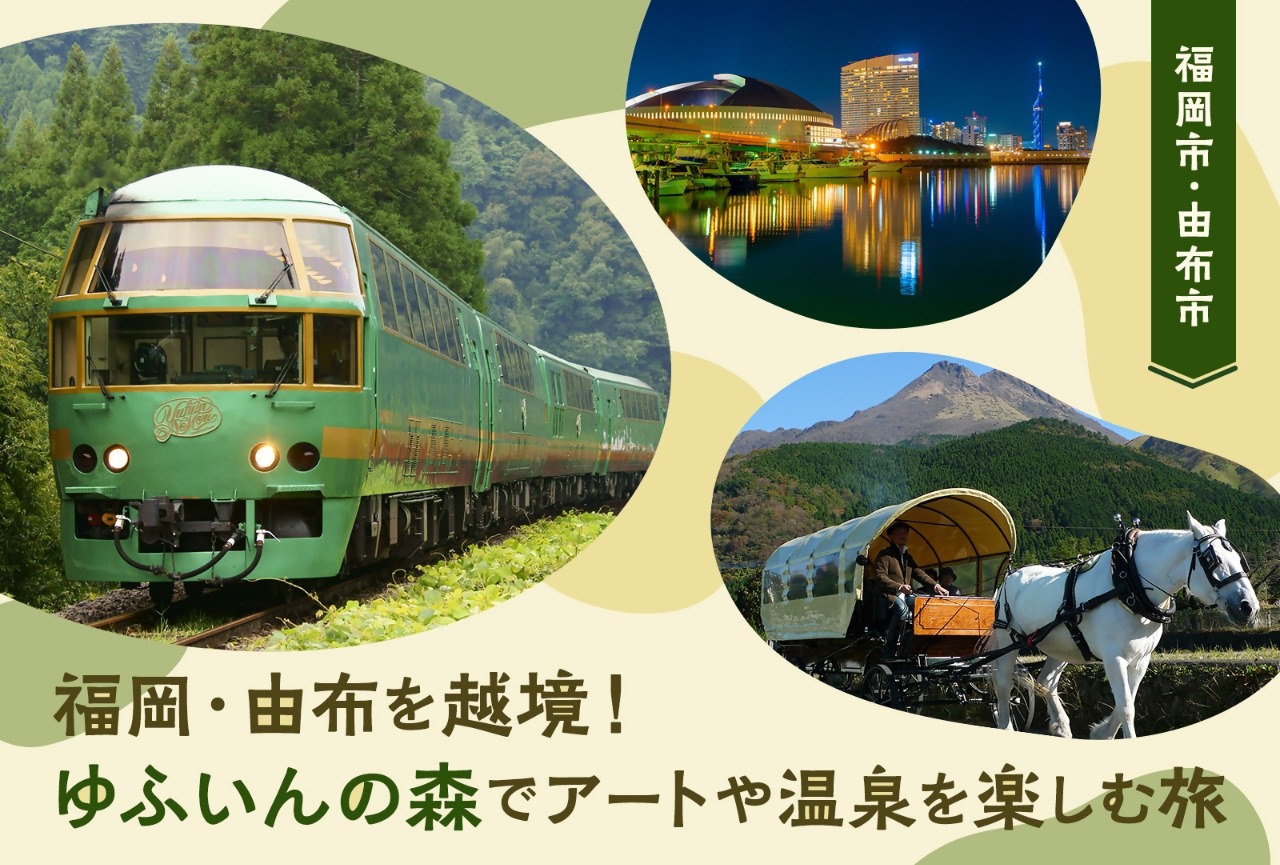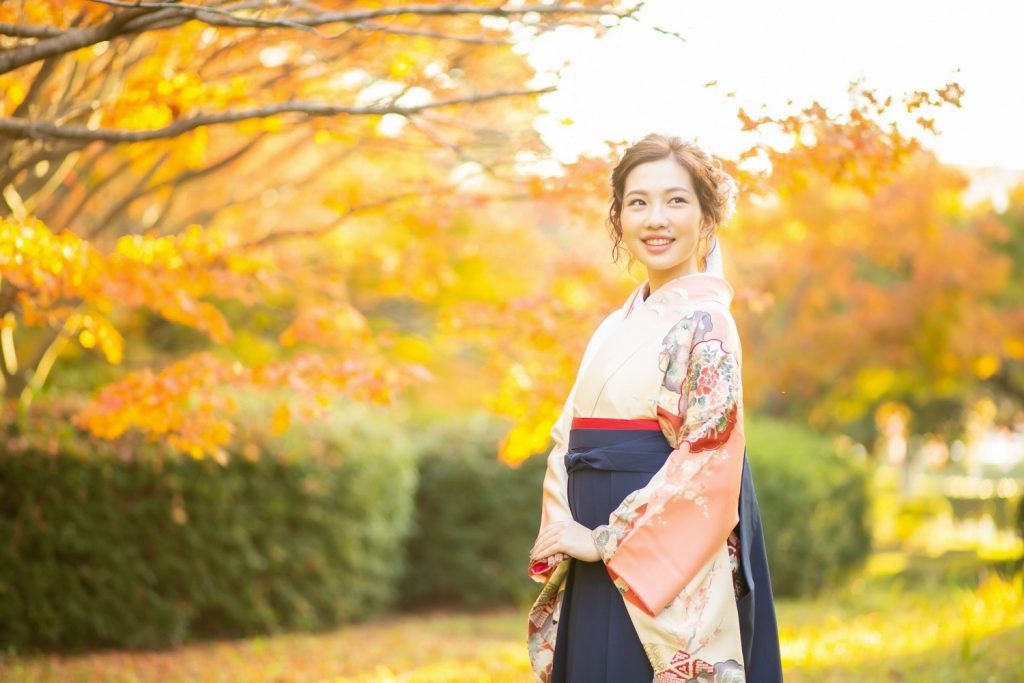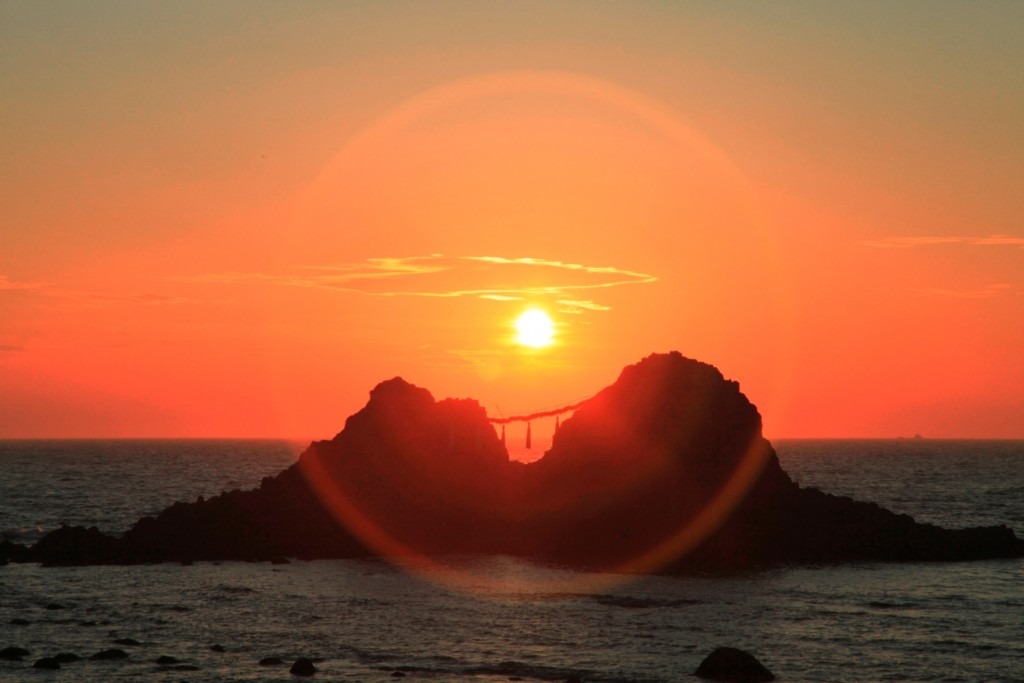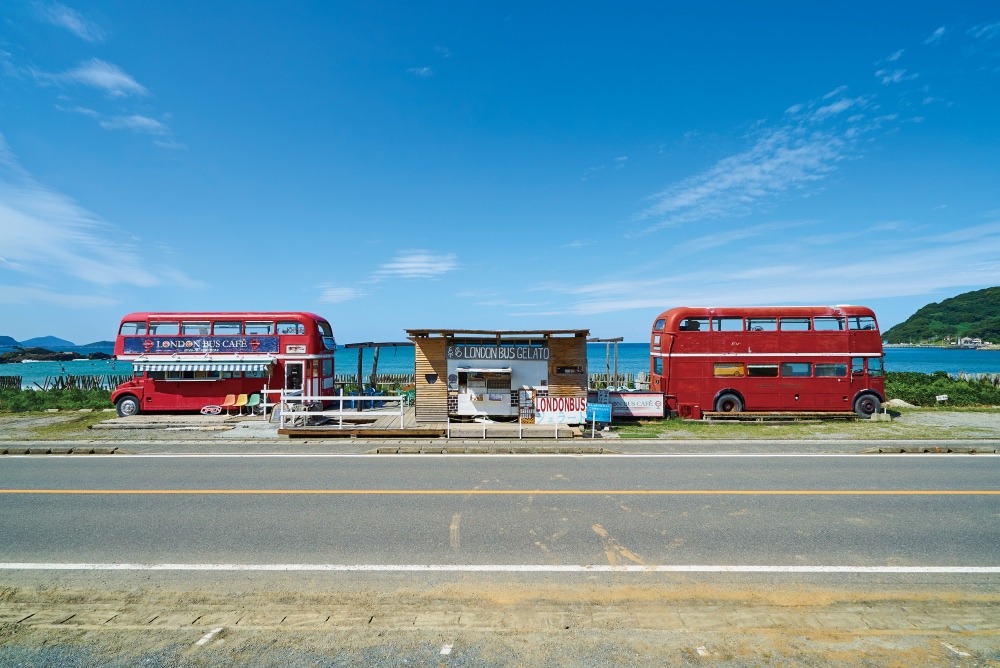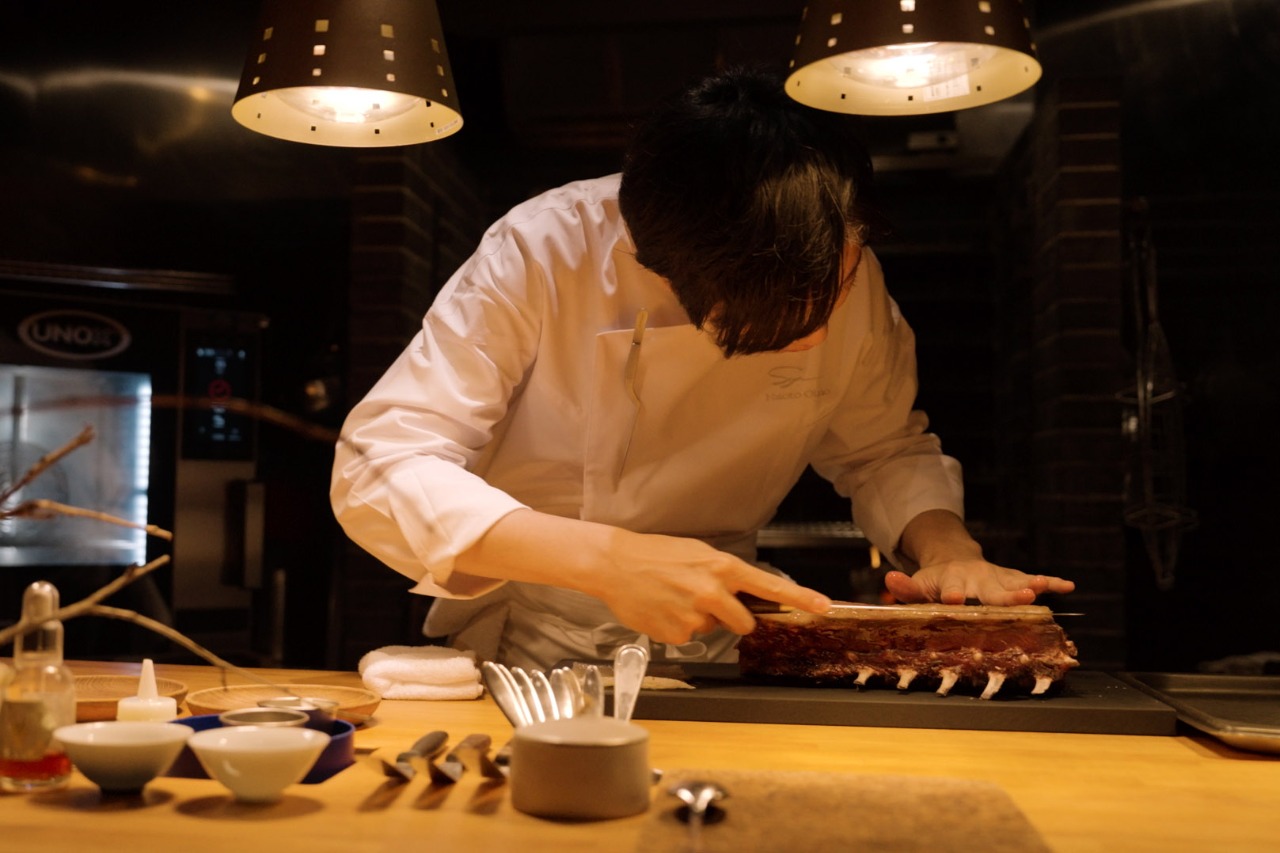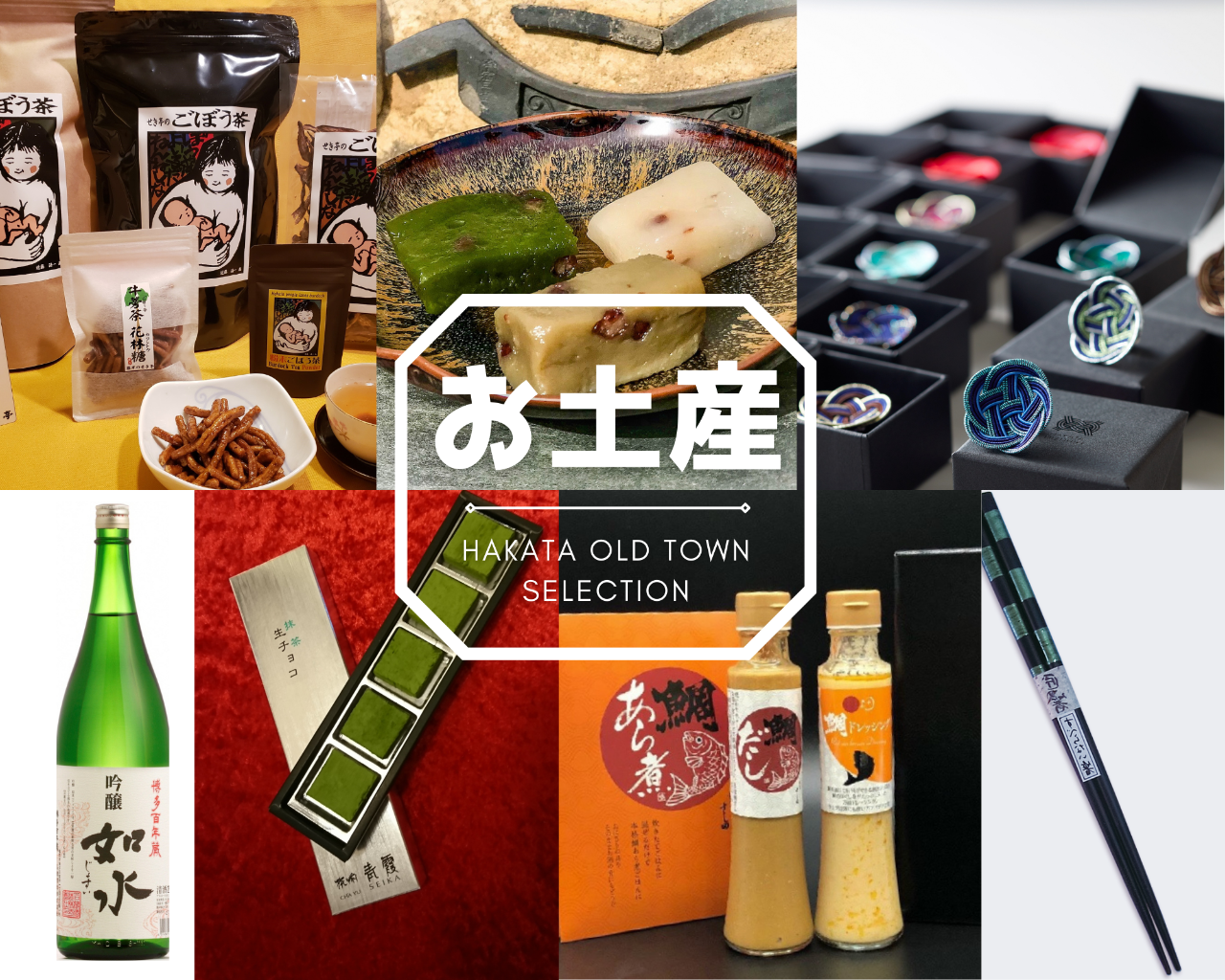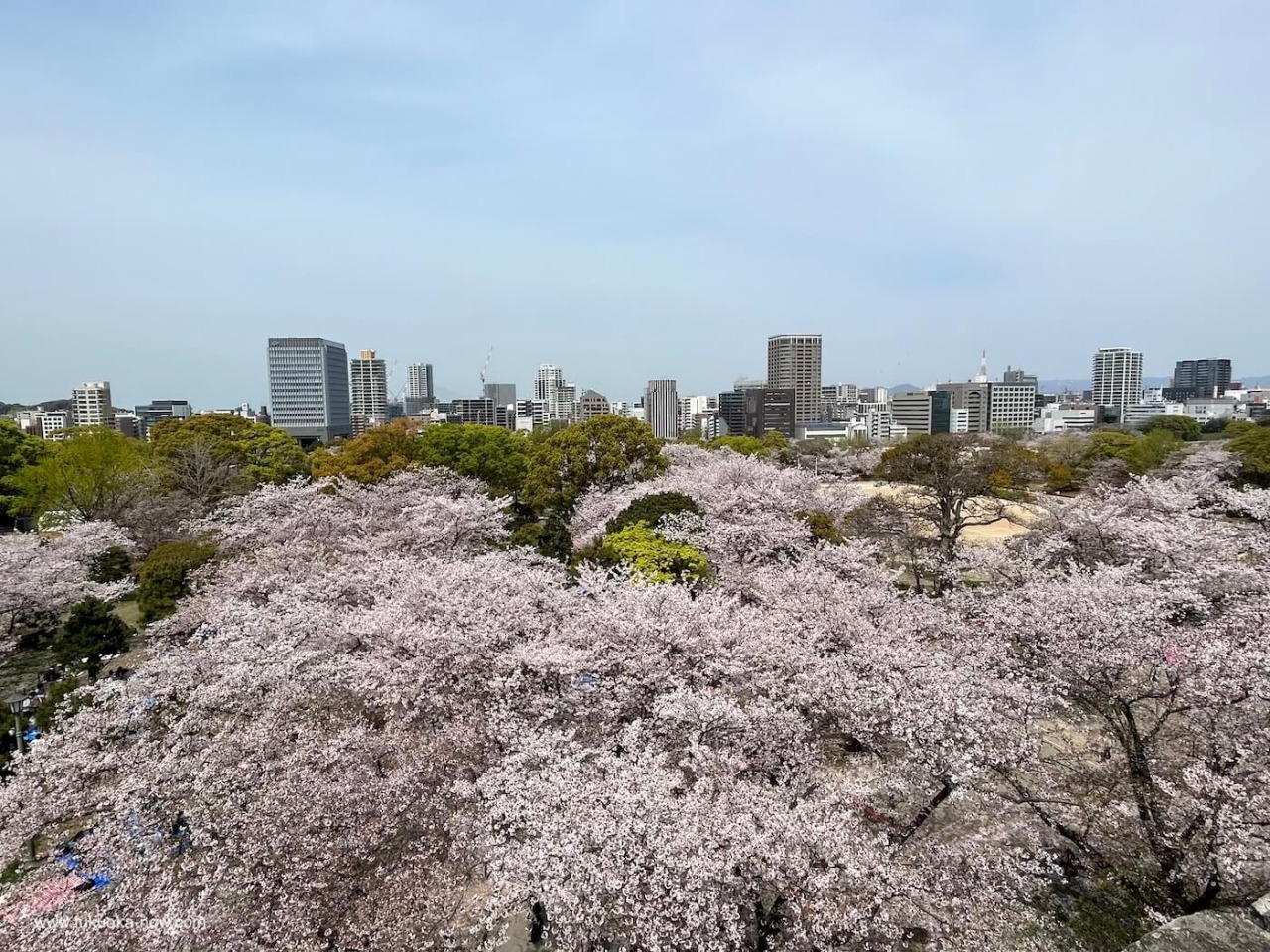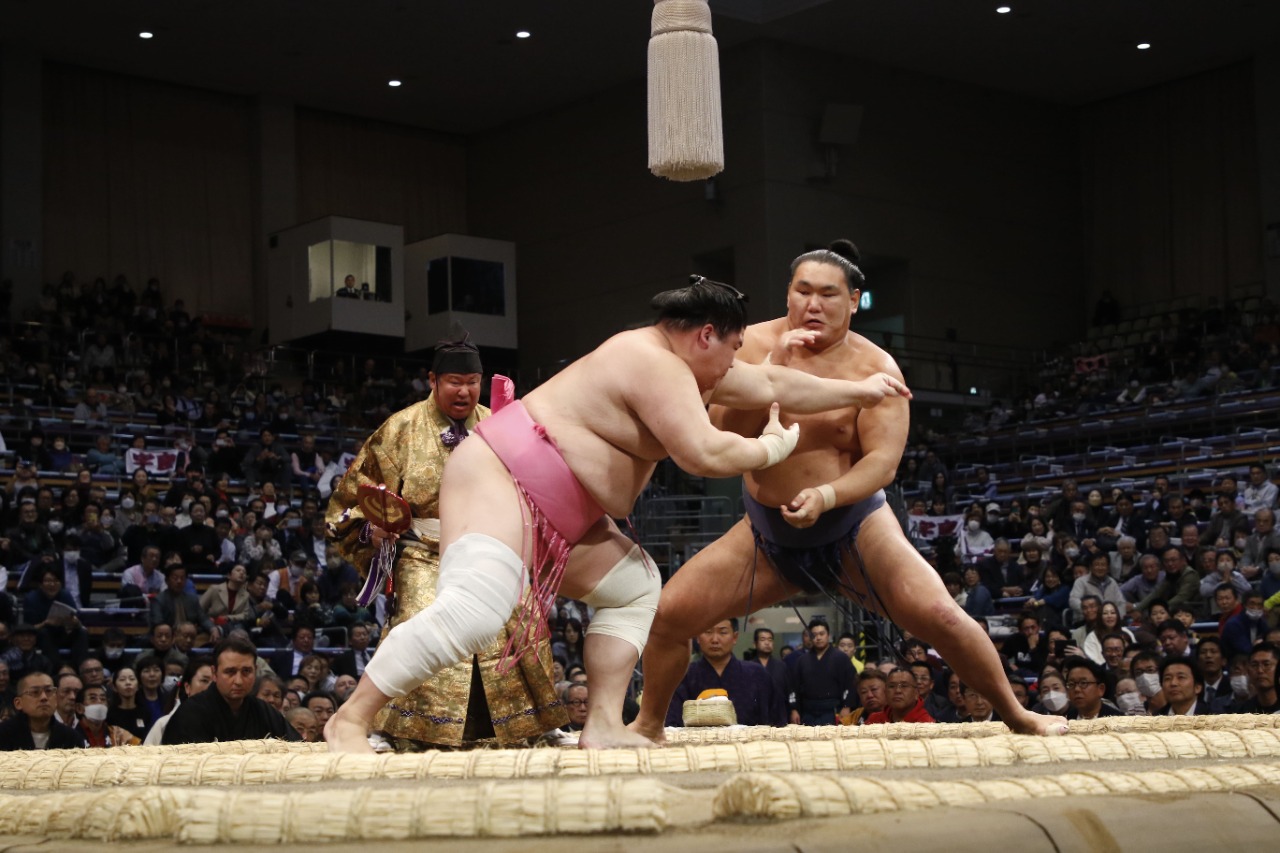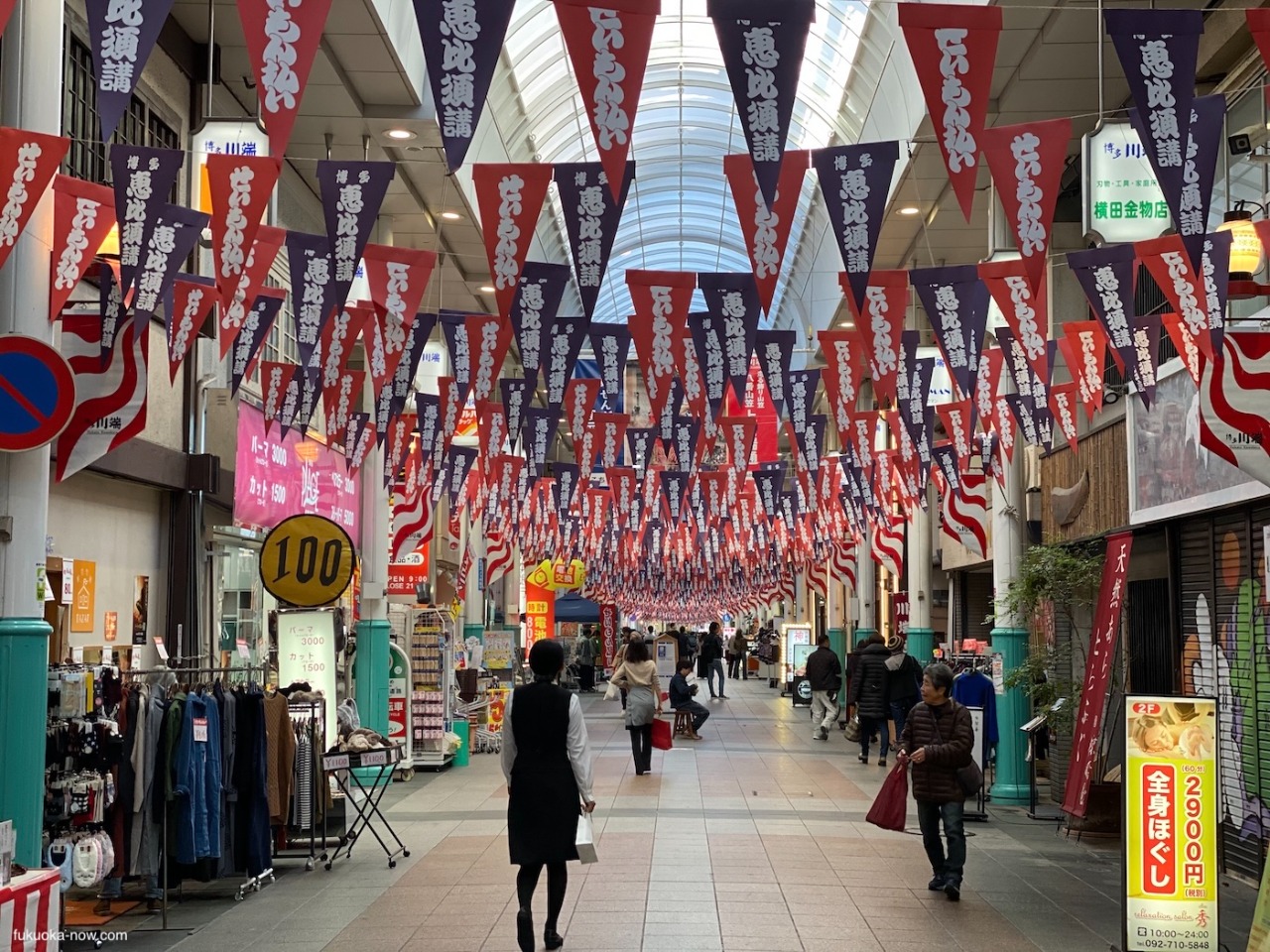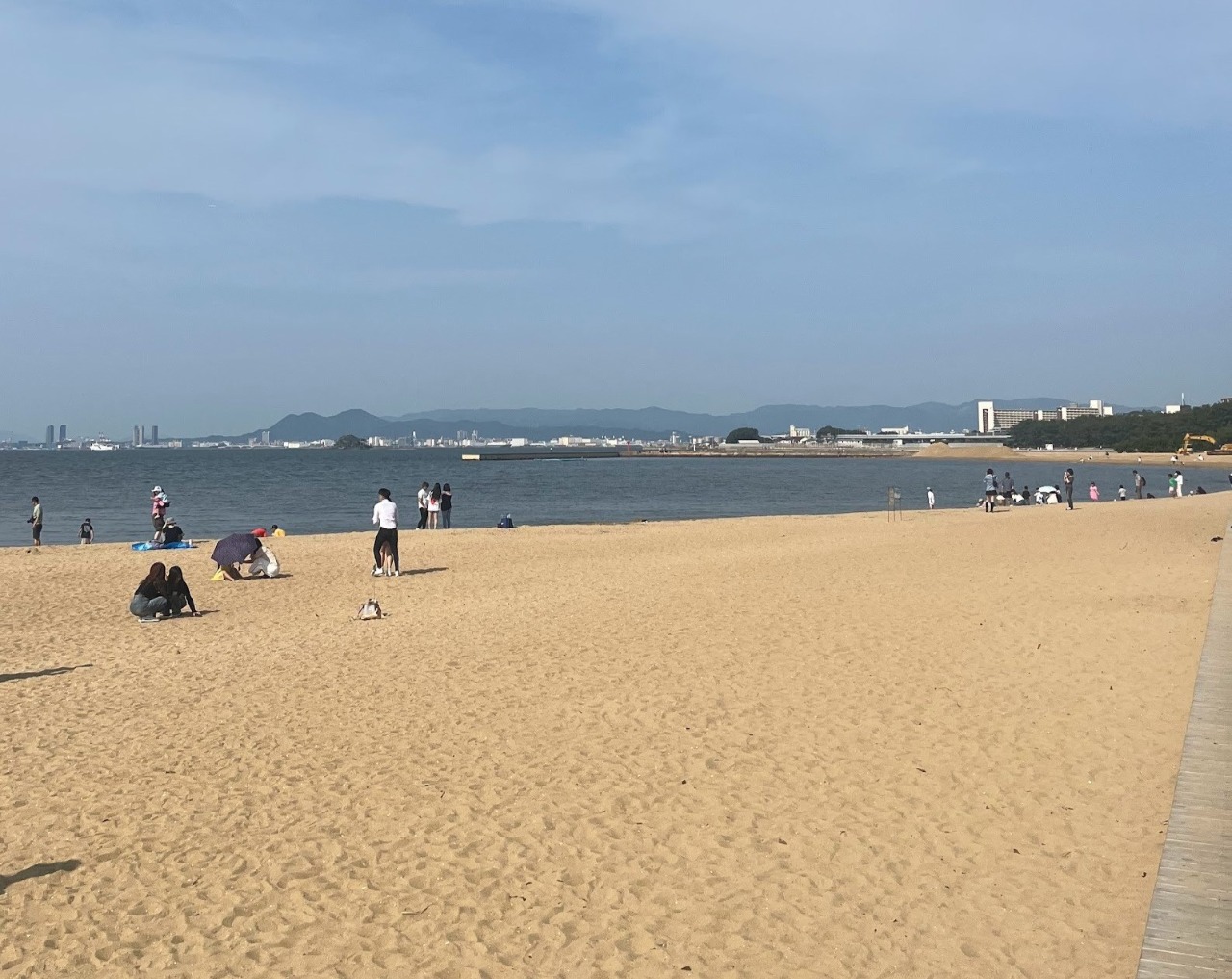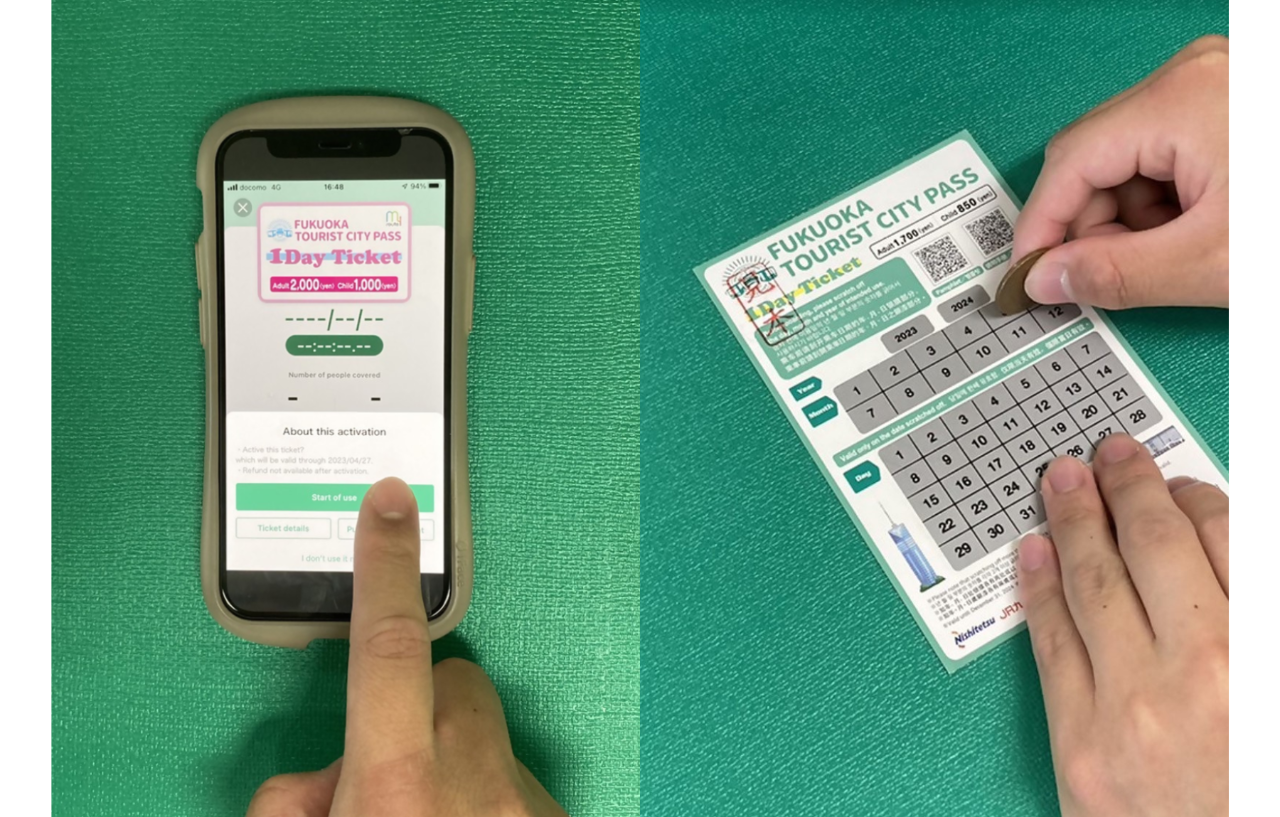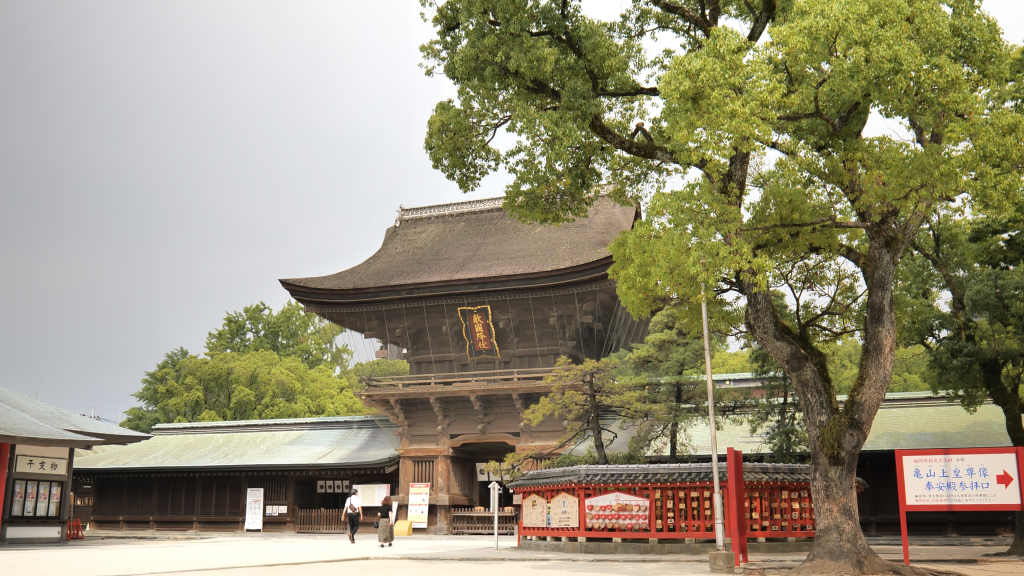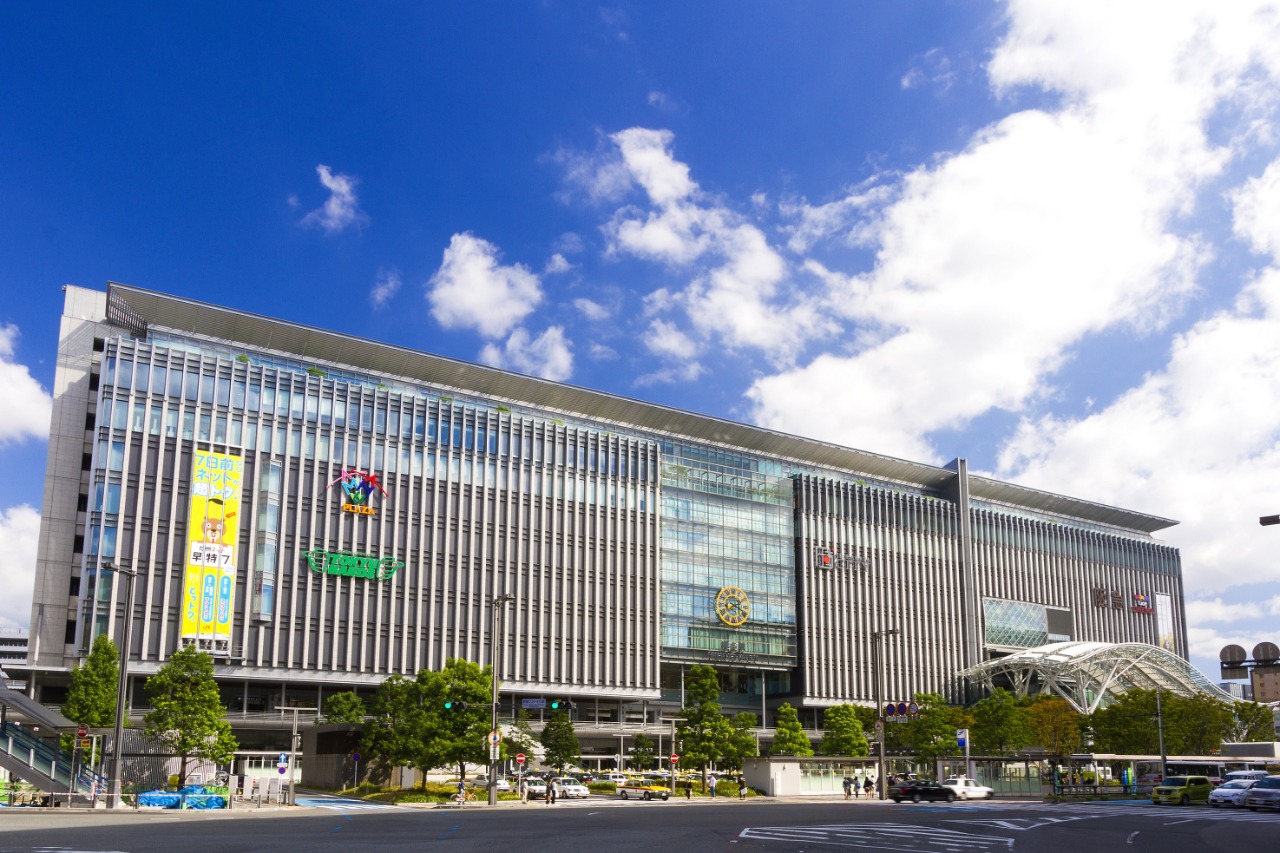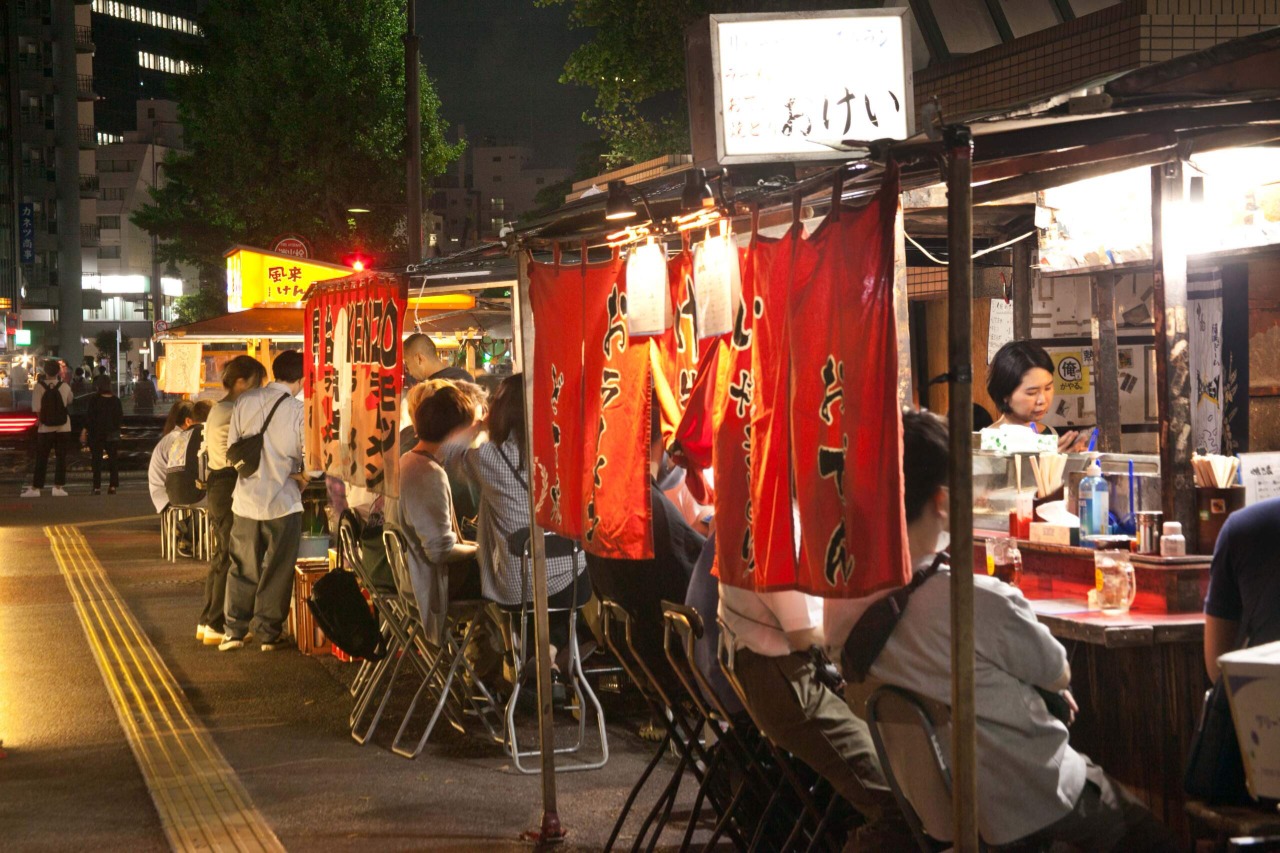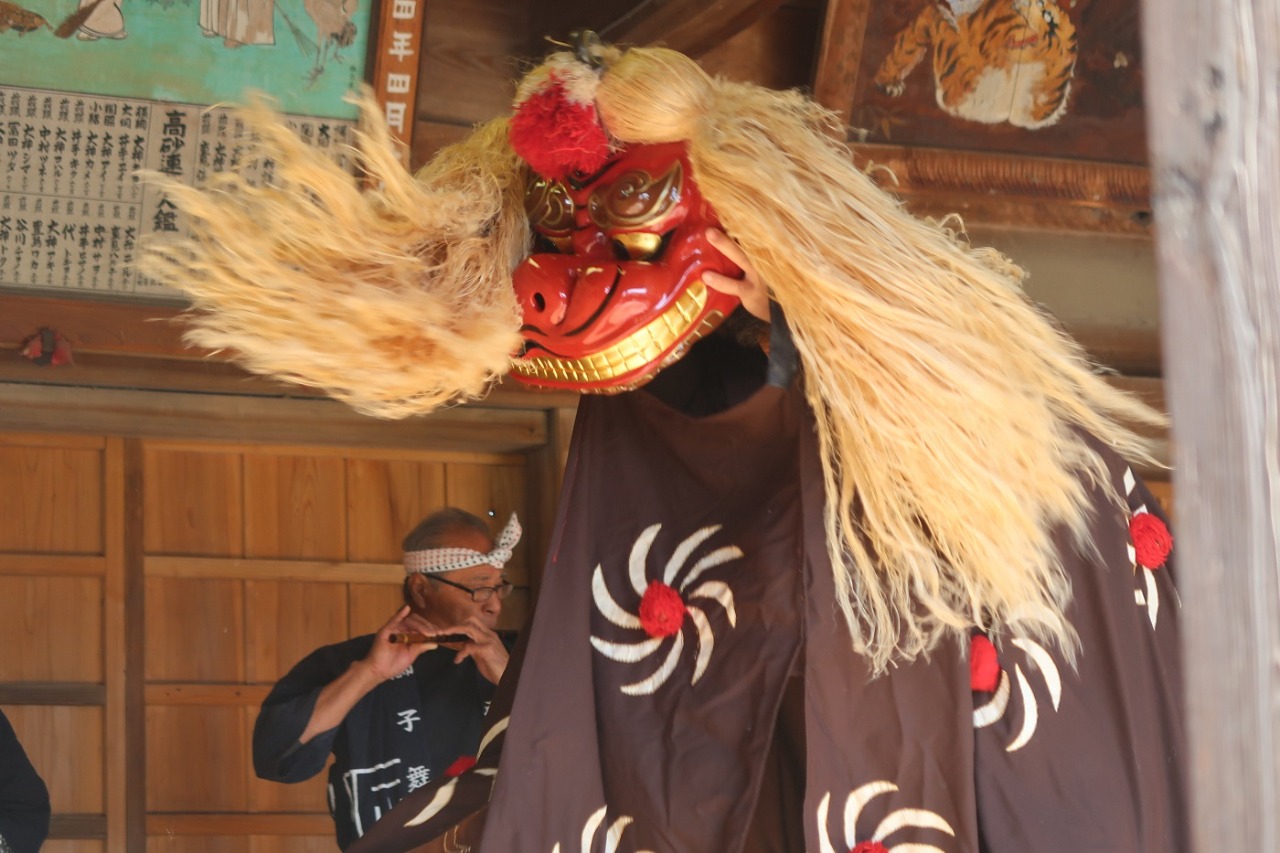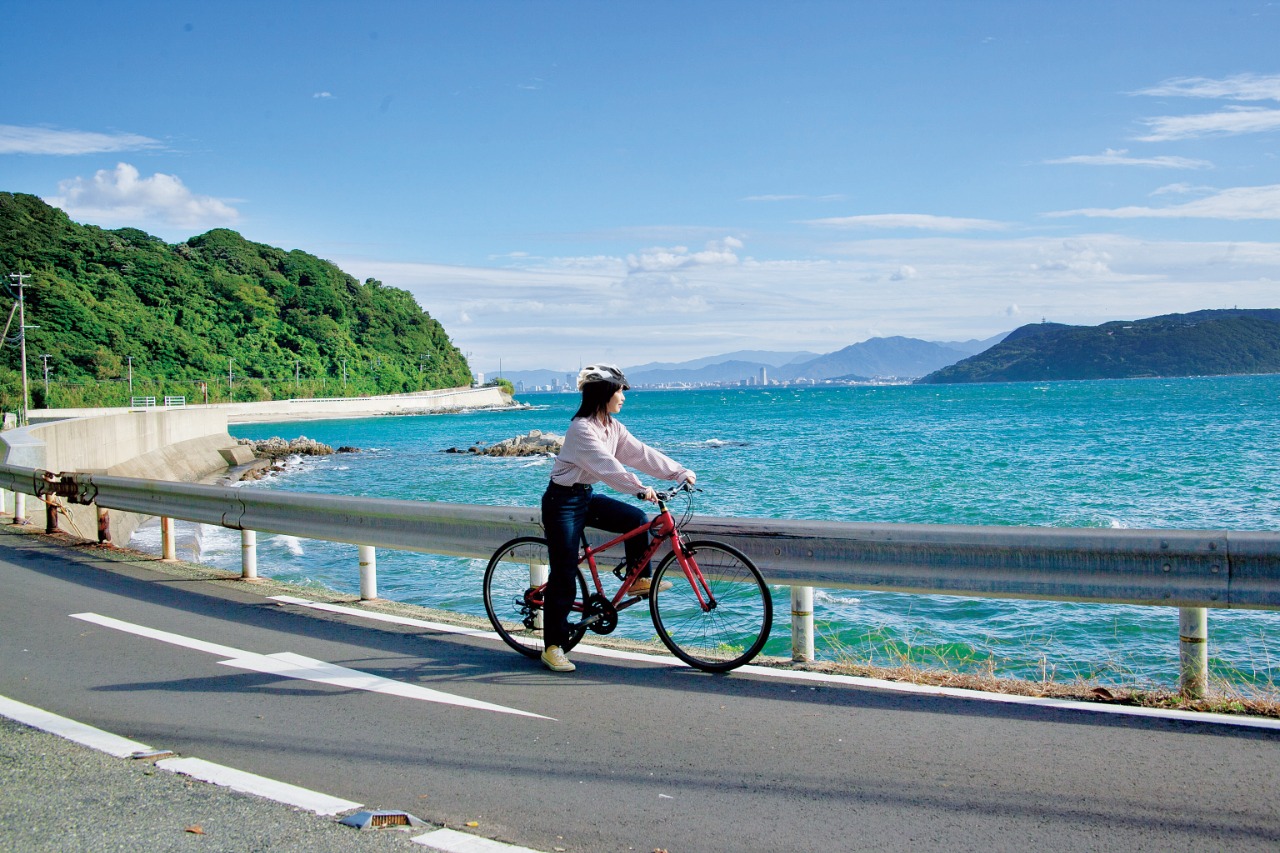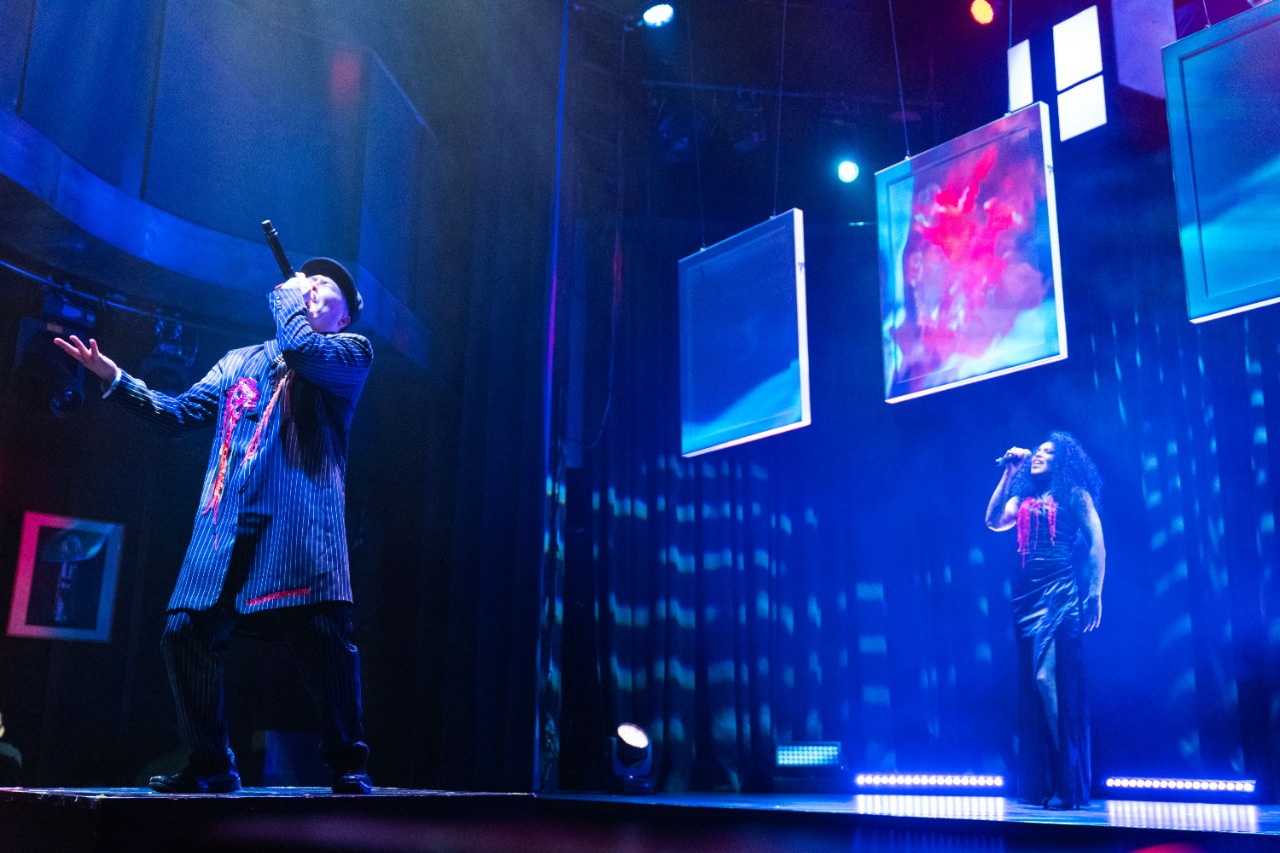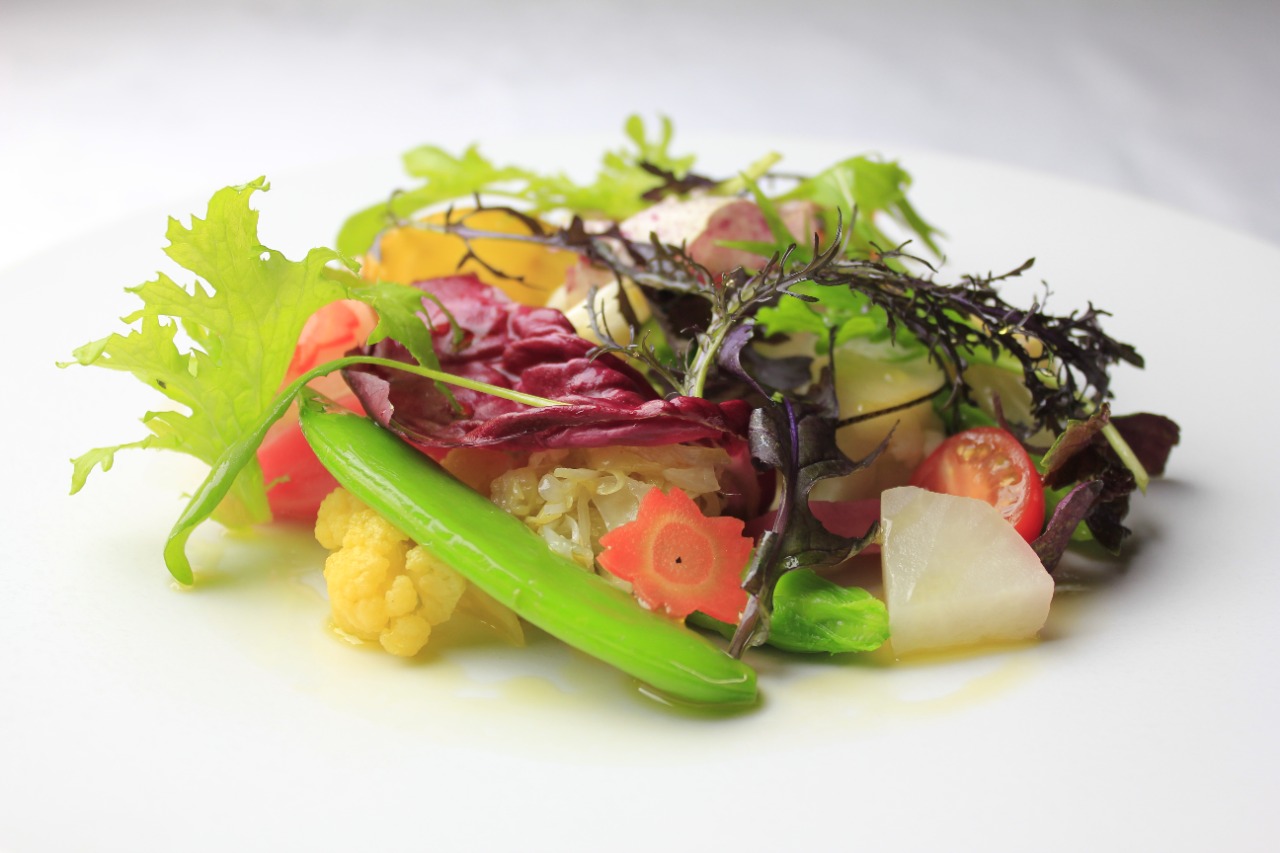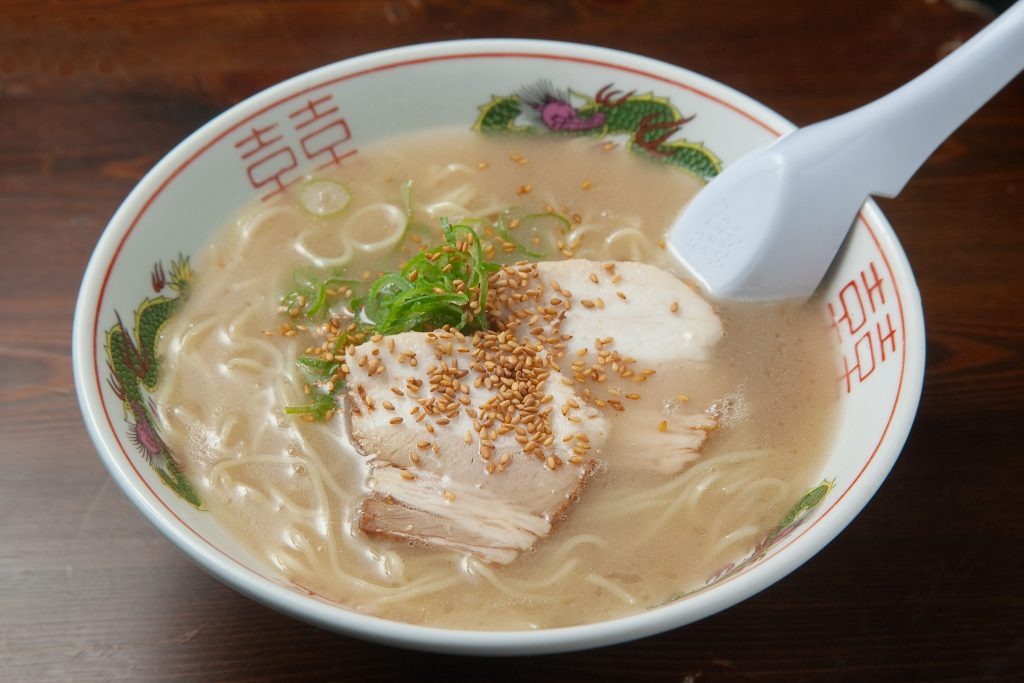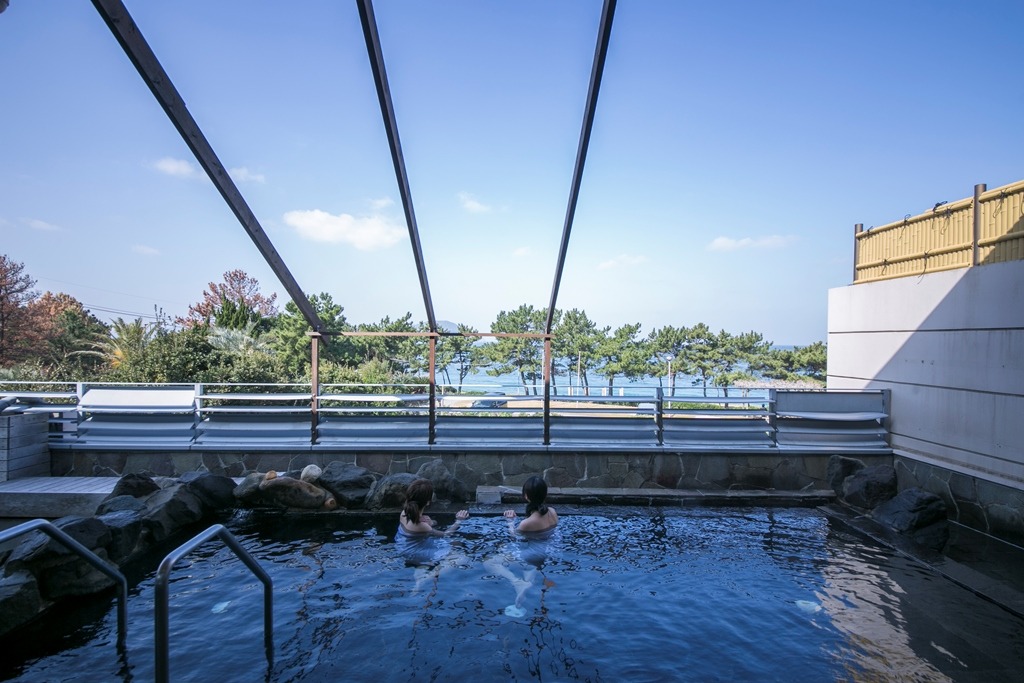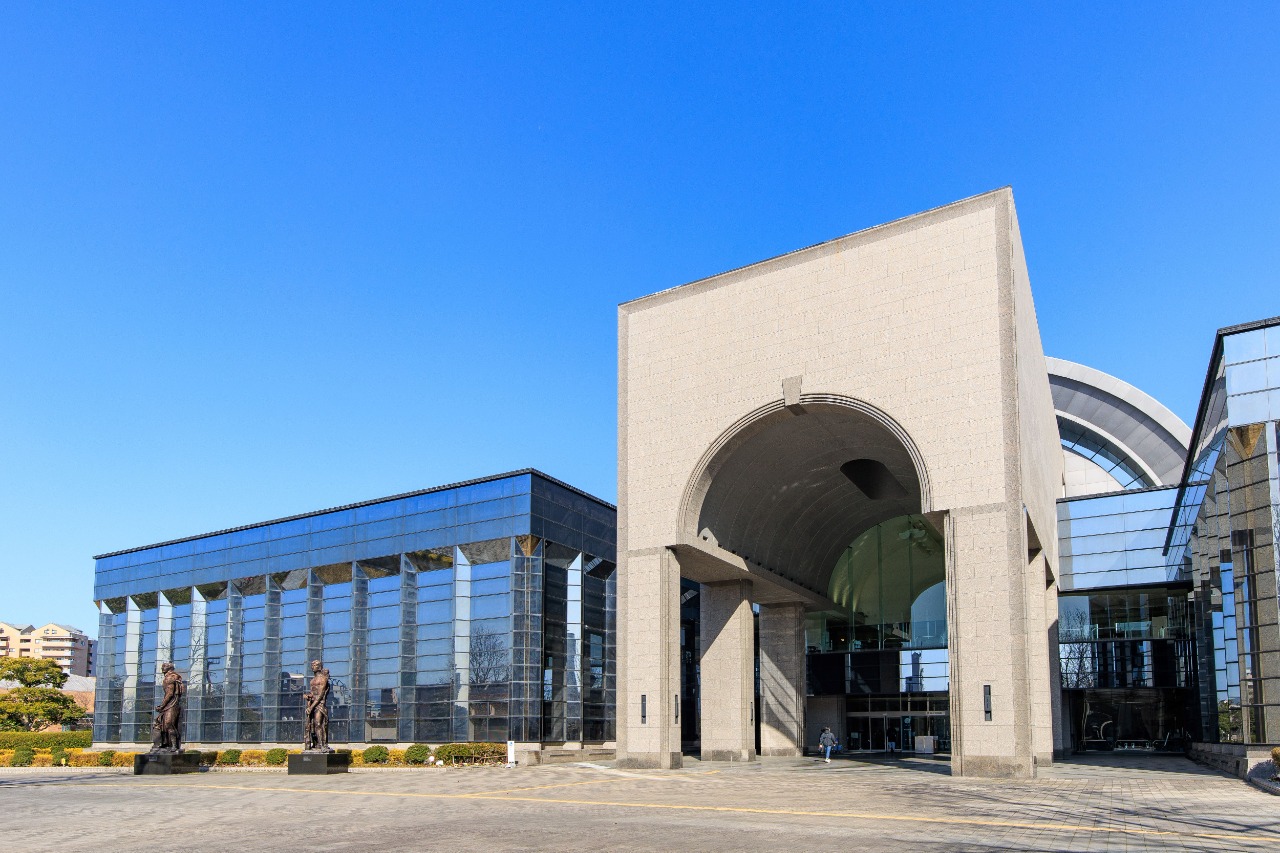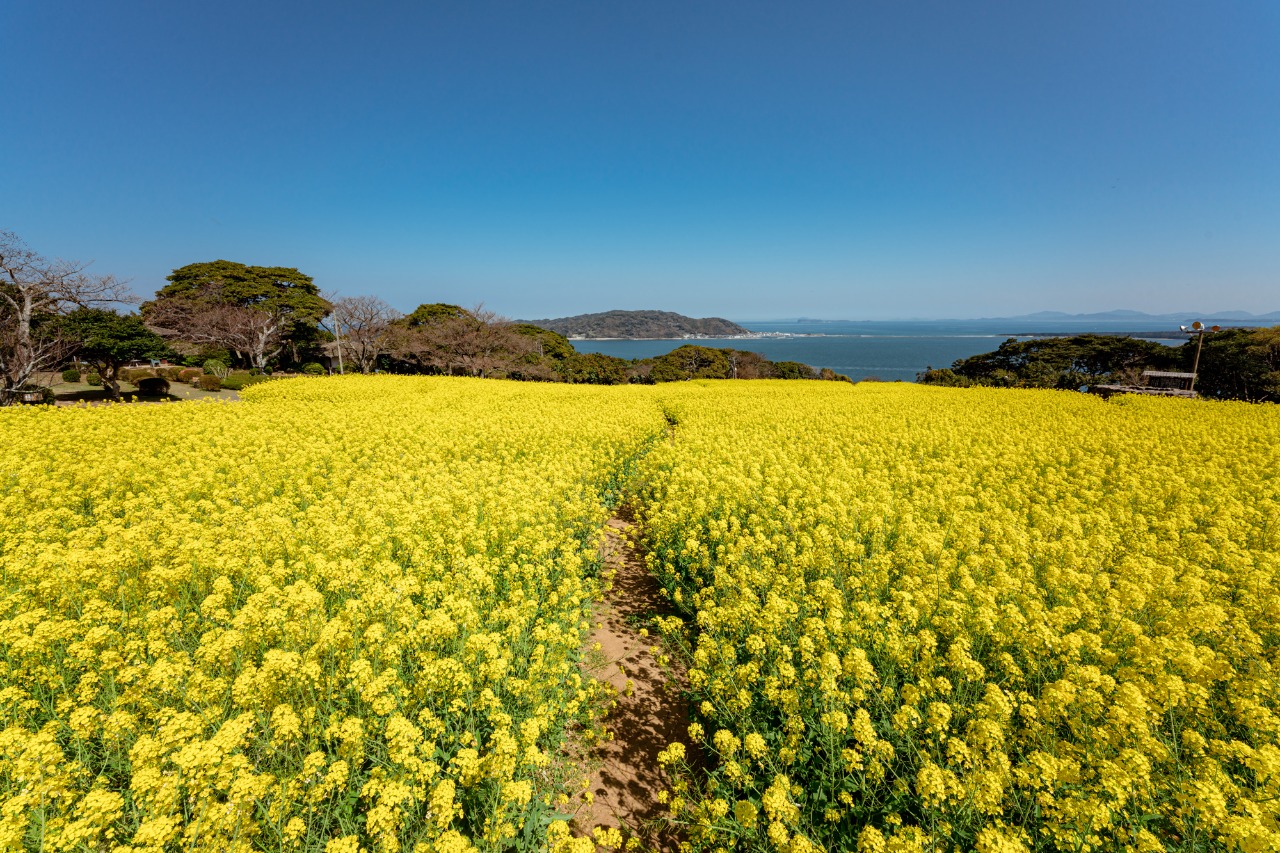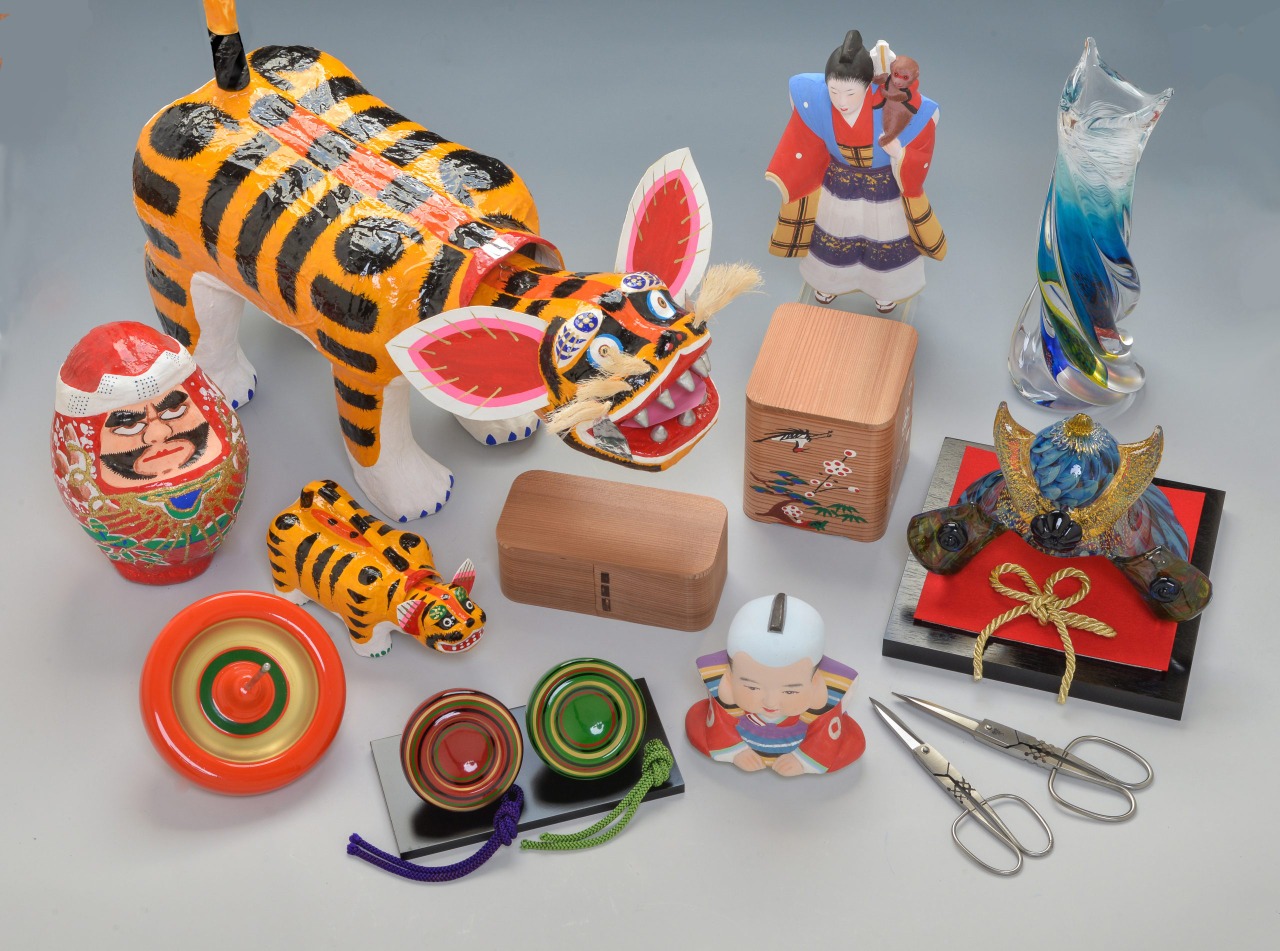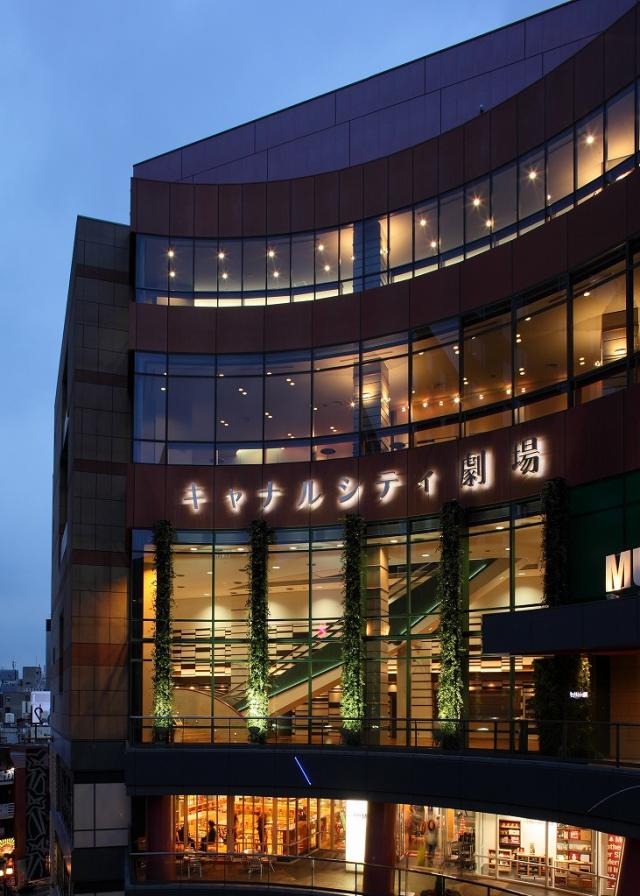City of the Arts
Discover Fukuoka’s culture of creativity through public installations, eclectic museums, and exciting art fairs

Long a regional hub of culture and commerce, Fukuoka today preserves its cosmopolitan heritage through a plethora of public art, varied museum collections, and vibrant art events. There are plenty of attractions to fill a full day’s itinerary or more for art enthusiasts and casual sightseers. Whether you want to enhance your knowledge of local culture and history or snap some memorable photos, the following sites can guide you through this vibrant city.
Time Traveling by Museum
Situated between Ohori and Maizuru Parks, the Fukuoka Art Museum hosts a robust collection spanning regions and eras, from Buddhist art to modern masterworks by Salvador Dali, Yayoi Kusama, and Andy Warhol. The museum features elegant details designed by Maekawa Kunio, an influential modernist architect, and also includes a cafe, shop, and children’s play space called “Seeds of Life.”
Outreach and education programs provide stimulating activities for patrons of all ages and allow local communities to engage with art in different ways. In front of the museum is British-Nigerian artist Yinka Shonibare CBE’s striking “Wind Sculpture (SG) II,” a work that celebrates multicultural exchange and encapsulates the city’s outward-facing disposition.
For a deep dive into regional history, the Fukuoka City Museum offers a view into the customs and lifestyles of this port city and its role as a site of interchange with foreign cultures. The route through the Permanent Exhibition Room begins with the Gold Seal, a stunning artifact dating back to 57 CE that was a token of political backing given by the Han dynasty’s Emperor Guangwu to an emissary from the kingdom of Na, the earliest known kingdom of the Japanese archipelago. The space constructs a narrative that covers the Fukuoka region’s prehistoric origins in the last ice age; the flourishing trade that allowed Hakata, a present-day city district, to prosper as a commercial hub between the late eleventh, and late sixteenth centuries; and urban development in the modern era, including the the Asian-Pacific Exposition: Fukuoka’89 that spurred the development of the Seaside Momochi district where the museum is located.
In fact, the museum building served as an Expo pavilion ahead of its official opening in 1990. At the entrance are four bronze statues by French artist Emile-Antoine Bourdelle that were purchased by the city of Fukuoka to commemorate the centennial of its modern establishment. Special exhibitions at Fukuoka City Museum highlight other aspects of Japanese culture, such as a previous showcase of art from the enormously popular anime series “Demon Slayer: Kimetsu no Yaiba.”
To gain perspective on the present and future of the city, look no further than the Hakata Riverain commercial center’s Fukuoka Asian Art Museum (FAAM), a leading venue for modern and contemporary Asian art with a global reach. The museum houses a collection that represents the diverse nations and cultures of the Asian continent, from China to Sri Lanka, Mongolia to Vietnam.
In addition to evocative exhibitions and events, FAAM operates a residence program that brings together artists, researchers, and curators from Japan and around the world to create a dialogue on Asian art today. Beijing-based artist Bu Hua conceived the mural on the ground floor of Hakata Riverain, in front of the elevators to the museum. Entitled “The Best Has Already Come,” the work was collaboratively created by 24 artists and students from Fukuoka over the course of a month.
Art isn’t just confined within museum walls in Fukuoka; it’s proudly on display in public spaces around the city. More than 20 works have been installed across various districts since the Sculpture Town Development Project was initiated in 1983. You might chance upon an expressive figure in bold red by Keith Haring while strolling through Chuo Ward, or a gigantic cat named Nyapy outside of WeBase Hakata Hostel, a three-meter effigy designed by Yanobe Kenji in homage to the felines that once journeyed alongside humans on seafaring expeditions as protective totems.
Dog lovers can wander over to the massive pink poodle installed in Aero Gallery Dune’s outdoor space. The installation is South Korean artist Shin Myeong-eun’s contribution to the Seaside Momochi district. Located in the same waterfront area are Kiyomizu Kyubei’s expressionist sculpture “Kobayo” and Niki de Saint Phalle’s playful “Grand Oiseau Amoureux.” Kiyomizu was a renowned sculptor who also served as the head of a Kyoto-based family of ceramicists before handing the reins over to his son in 2000. Saint Phalle was a Parisian-born artist whose unorthodox style divided critics; her colorful bird statue mixes mythologies and moods, adding a touch of whimsy to the urban landscape. These public installations embody the ideals of the Sculpture Town project, which aims to create an urban environment where everyone can “feel the beauty of the city and share a sense of spaciousness and comfort.”
Festivities of the Fall
Finally, if you are in town between mid-September and late October, make sure to check out Fukuoka Art Next (FaN) and Art Fair Asia Fukuoka, festivals that further showcase the city’s vibrant identity and commitment to the arts. FaN Week invites visitors to explore a route that begins at the Fukuoka Art Museum and progresses through different neighborhoods, with special museum exhibits and installations to inspire the mind and stir the soul. Art Fair Asia Fukuoka, meanwhile, is the only event of its kind in Kyushu and shines a spotlight on dozens of galleries from Japan and abroad. Numerous workshops, lectures, and subsidiary events on food, technology, cinema, and other topics also take place during the art fair.
These activities merely scratch the surface of what Fukuoka has to offer through its art scene. Whether you’re in the mood for a quiet afternoon of contemplation at a museum or a lively, interactive event with artists and experts, Fukuoka is sure to have something to quench your creative thirst.
Fukuoka Art Museum
1-6 Ohori Park
Chuo-ku 810-0051
Fukuoka City Museum
3-1-1 Momochihama
Sawara-ku 814-0001
Fukuoka Asian Art Museum
Riverain Center Building, 8th Floor
3-17 Shimokawabatamachi
Hakata-ku 812-0027
“Untitled” by Keith Haring
AIREF (Fukuoka Health Promotion Support Center)
2-5-1 Maizuru
Chuo-ku 810-0073
“SHIP’S CAT” by Yanobe Kenji
WeBase Hakata
5-9 Tenyamachi
Hakata-ku 812-0025
“Poodle” by Shin Myeong-eun
Aero Gallery DUNE open space
1-7 Momochihama
Sawara-ku 814-0001
“Kobayo” by Kiyomizu Kyubei
RKB Broadcasting Building
2-3-8 Momochihama
Sawara-ku 814-0001
“Grand Oiseau Amoureux” by Niki de Saint Phalle
Jigyo Chuo Park
1-1-9 Jigyohama
Sawara-ku 810-0065







